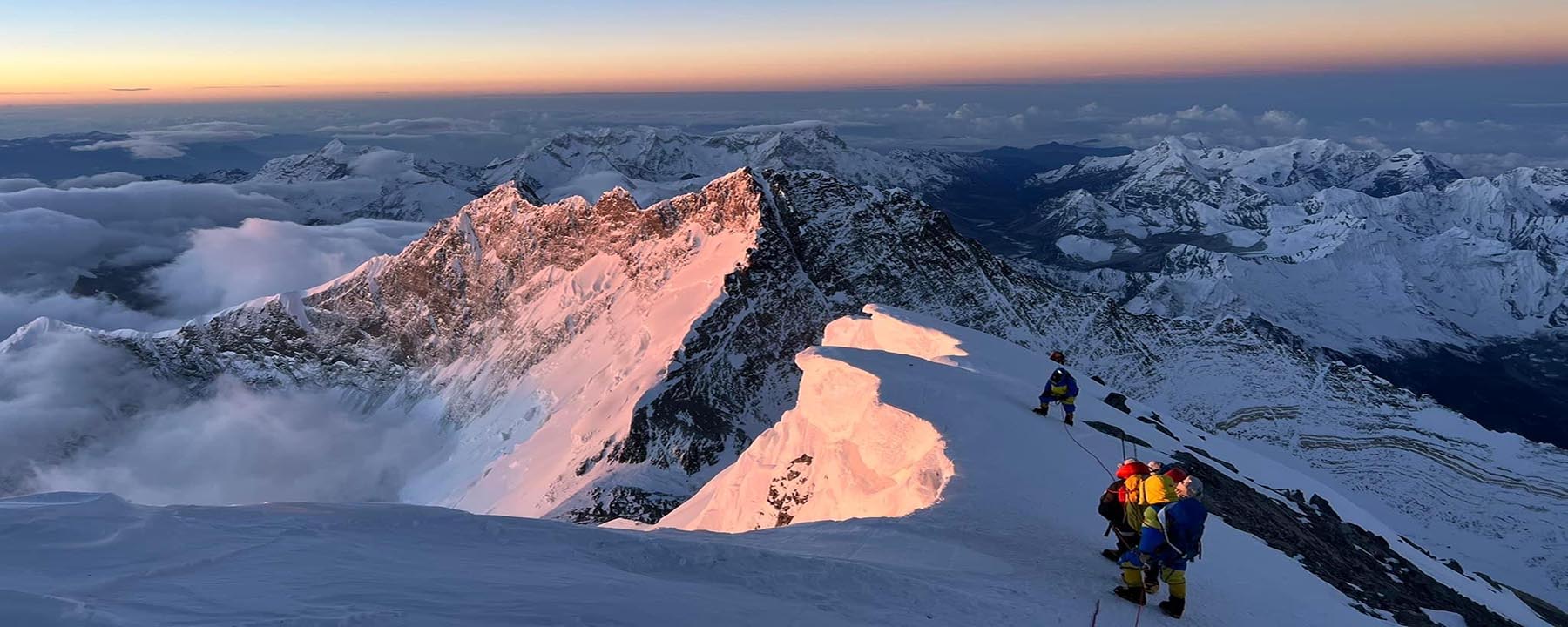

Everest Expedition 2024
Fully guided expedition to the world’s highest mountain
- Group Size: Min 2 Max 8
- Duration: 55 Days
- Max Altitude: 8,848m/29,029ft
- Accommodation: Climbing
- Activity: High Altitude Expeditions
- Meal: Meals included
- Trip Grade: Strenuous +
- Start Point: Kathmandu
- End Point: Kathmandu

Trip Itinerary
Dates & price, media gallery.
Welcome to Highland Everest Expedition 2024. Over 30 years of experience in high-altitude expeditions
Trip Overview
- Climb the highest mountain in the world
- Fully guided expedition with Sherpa support and max O2
- 1:1 Sherpa guide to client ratio and UIAGM/IFMGA expedition leader
- Climb Lobuche East for acclimatization
Everest Expedition 2024 Overview
Mount Everest [8,848m/29,029ft] being the highest mountain in the world is the ultimate dream of every climber. Climbing to Everest is undoubtedly the ultimate mountaineering adventure and every adventure seeker wants to be a part of the rich history of Everest Climbing but the journey to the summit of Everest is not without challenges. With decades of experience in guiding groups to the summit of Mt. Everest, we have successfully made many people’s dreams come true.
Why Join us on our Everest Expedition 2024?
- Guided by some of the best guides and experienced Sherpa team.
- 1:1 Sherpa guide to client ratio
- Expedition Manager/Sirdar
- Nepalese UIAGM/IFMGA Expedition Leader for a group of 4 climbers and above
- Ascent of Lobuche Peak for acclimatization
- Maximum oxygen flow 11 bottles (8 for you and 3 for your Sherpa)
- Premier climbing experience on Mount Everest
- A cohesive team of climbers (Maximum 8 climbers in one group)
- A long history of high altitude expeditions
Climb Overview
Our Everest expedition itinerary is designed with experience, planned and careful attention allowing maximum days for the approach, the highest level of service and a strong team of guides. We offer expeditions with safety priority and service paramount. We offer more oxygen support and provide comfortable logistics at base camp and Camp 2.
We follow the standard trekking route to Everest base camp following Namche Bazar, Tengboche, Dingboche, Lobuche, Gorekshep and finally Everest base camp. Upon arrival at Base Camp, settle and get organized as we prepare for the actual climb.
A pre-training session /climbing course will be held at the base camp, ice seracs of the lower Khumbu Glacier to check climbers’ equipment and review climbing and rescue techniques. You will also climb Lobuche East as part of your acclimatization climbs instead of frequent rotations in the Khumbu icefall.
Lobuche East is one of the most exciting 6000m trekking peaks in the Everest Region. Lobuche east climb serves as a perfect training base for Everest Expeditions and this is what we would be doing at Highland Expeditions too. You will climb Lobuche East wearing your high-altitude boots and equipment to make you feel comfortable. This peak provides not only an attractive diversion but an excellent part of the acclimatization process while allowing members to refresh and update mountain skills before moving up to Everest.
Climbing Lobuche East Peak prior to the actual Everest climb has not only helped in acclimatization but the climbers will not have to pass through the Khumbu Icefall multiple times for rotation of higher camps. After the climb, we head to base camp and in between looking at an auspicious date as per the Tibetan calendar we will organize a Puja ceremony in a traditional Sherpa manner asking for blessings for a successful Everest Climb.
Our second acclimatization phase begins with the rotation of higher camps passing by the notorious Khumbu icefall. Four camps will be set up above the base camp. We will prepare Camp1 (5,900m/19,500ft) at the pinnacle of the icefall, Camp2 (6,400m/21,000ft) in Western Cwm, which will be our Advanced Base Camp. We will set up Camp 3 (7,300m/23,700ft) at the top of the cirque on Lhotse Face. Camp 4 (7,900m/25,912ft) will be the final camp before climbing the summit. Camp 4 will be placed in the South Col.
Your expedition leader will suggest you the best as per your conditions. In general, our acclimatization program includes overnight at Camp 2 and tagging the Lhotse Face/Camp 3. When this is done, we rest and recover at the base camp while waiting for the weather window for the summit attempt. Oxygen cylinders will be used after Camp 3 for an easy ascent. We provide 8 bottles of oxygen to each climber for maximum flow. From Camp 4, following the southeast ridge, we will make it to the South summit from where we will advance towards Hillary step before climbing to the summit.
Tentative Acclimatization Schedule
First Rotation/Acclimatization (April 21-23): – Climb Lobuche East Peak (6,119m/20,075ft)
Second Rotation/Acclimatization (April 27- May 03): – Climb to Camp 1 (5,900m/19,500ft) – Climb to Camp 2 (6,400m/21,000ft) – Rest at Camp 2 (6,400m/21,000ft) – Touch Camp 3 (7,300m/23,700ft) and sleep at Camp 2 (6,400m/21,000ft) – Descent to base camp (5,364m/17,559ft)
Please note that these acclimatization programs may differ during the expedition period as each climber adapts differently to an altitude.
Summit Push (Weather permitting, most likely May 08-20): – Climb to Camp 2 (6,400m/21,000ft) – Climb to Camp 3 with the use of oxygen (7,300m/23,700ft) – Climb to Camp 4 South Col with the use of oxygen (7,900m/25,912ft) – Summit push (8,848.86m/29,029ft) and descent to Camp 4 with the use of oxygen – Descent to Camp 2 (6,400m/21,000ft) – Descent to Base Camp (5,364m/17,559ft)
Why climb Everest with us?
Over the last 30yrs, the people who helm this venture have been successfully organizing high-altitude Expeditions ensuring safety first and service paramount. The success of any expedition depends largely on a carefully planned itinerary and the best logistics and, these are what we offer. We are committed to maintaining the expedition safe and successful with the quality of service.
Our emphasis is always on maintaining the small group so that it will be easy to coordinate and cooperate with each other. You will be guided by highly professional mountain guides who are one of the best in this field and has experience successfully climbing Everest multiple times. Our guides, Sherpas, and support staff bring decades of successful summits to the table, and our climbing strategy reflects this.
Each year, we provide fully guided expeditions with the support of the legendary Sherpas. Our 1 to 1 Sherpa to client ratio with an expedition leader to lead the team on summit days show our commitment to providing safe climbing strategies.
Compared to the facilities we provide; you will find our Everest Expedition cost to be very reasonable. We have no hidden fee. What you pay in the beginning is the final payment. We are dedicated to providing the highest professionalism throughout the expedition by taking utmost care of all the logistics needed for our Everest Expedition.

Expedition Manager/Guide
Our Everest Expedition 2024 will be managed by Kunga Sherpa, an Everest summiteer and avid climber himself. With over 35 years of experience in the climbing industry, he has managed over forty above 8000m expeditions to date with a 90% success ratio.
For 2024, our Everest Expedition leader will be a Nepalese UIAGM/IFMGA Guide.
1:1 Sherpa to client ratio on summit day
Most of our Sherpa guides come from Rolwaling and Thame. All our Sherpa guides are previous Everest summiteers with detailed experience on high-altitude expeditions. We provide a 1:1 sherpa guide-to-client ratio on the summit day. Each of our Sherpa guides has tons of experience in climbing high-altitude peaks.
Our Sherpa crews are critical to the success of the climbs that you do with us. We, us professionally trained Sherpa guides & sirdars are just not hikers & climbers on the mountains but have been trained to perform this task with a lot of common sense & guile. Kunga Sherpa, Everest summiteer and founder of Highland Expeditions has successfully guided and organized over 40 expeditions to 8000m as an expedition sirdar oversees our experienced Sherpa crew that will be with you on the climb.
We ensure that they are confident & experienced. Most of our guides were born in these parts & have relatives living in other parts of the regions where they were born in. We know that locally born staffs are a vital cog in that wheel of sometimes dangerous adventure where anything can happen. At Highland Expeditions, we always make sure that our mountain crews are highly motivated & never compromise.
Local company with decades of high altitude experience
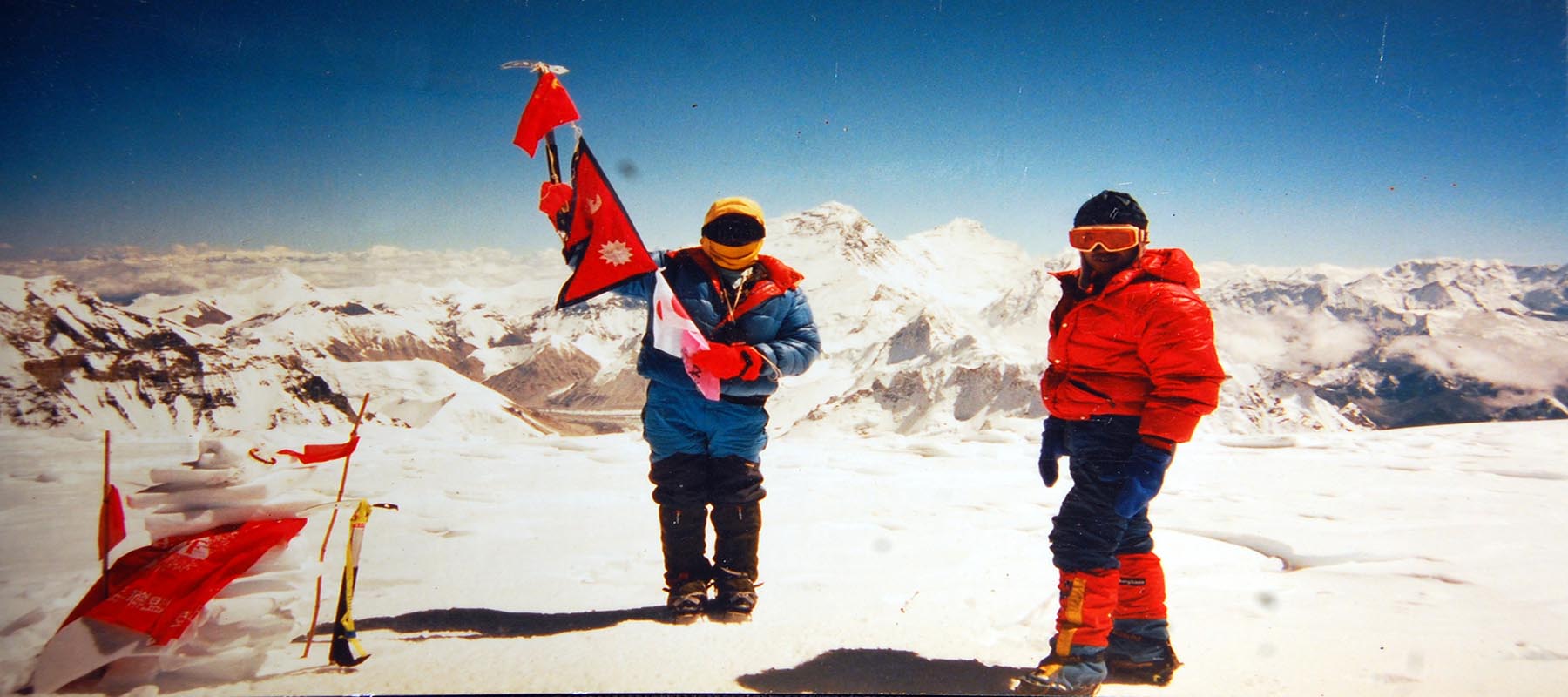
Highland Expeditions is a fully licensed and registered company operating high-altitude trips in the Himalayas. The people who helm this venture have been guiding high-altitude expeditions since 1992 and we take great pride in being able to offer personalized expeditions to Mt. Everest with safety priority and service paramount.
We operate a small team of cohesive climbers with the support of our experienced sherpa guides who have all summited Everest previously. We only take 8 climbers in a team and provide the Nepali UIAGM/IFMGA Expedition leader with a 1:1 sherpa guide-to-client ratio with maximum oxygen support and comfortable logistics arrangements.
Join us and be a part of the ‘Highland Expeditions family. It’s a never-ending feeling that will live with the generations to come.
Important Note: Your safety is of imperative concern while travelling with Highland Expeditions . Please take care to note that your leader/guide has the authority to amend or cancel any part of the itinerary if it is deemed necessary due to your safety concerns. Every effort will be made to keep to the above itinerary; however, since this adventure entails travelling in remote mountainous regions, we cannot guarantee that we will not deviate from it. Weather or health condition of a group member, unexpected natural disasters, etc., can all contribute to changes in the itinerary. The Trek & Climb leader/guide will try to ensure that the trip runs according to plan, but please be prepared to be flexible if required.
Arrival at Tribhuvan International Airport, Nepal. Upon completing the visa formalities and collecting your luggages in the airport, kindly proceed to the exit of the arrival hall. Your trip leader will await you just outside the arrival hall and will escort you to your hotel in Kathmandu. Please look out for a placard of Highland Expeditions at the exit of arrival hall. Welcome drinks will be served and after you’ve refreshed, your leader will brief you about your trip in the lobby of your hotel in the evening. Get familiar with your surroundings by taking a walk down the street
- Accommodation: Hotel
- Trekking Hours: 0
These two days have been kept in Kathmandu for final preparation of Climb. Meet other team members, complete official and government formalities, final gear check and load. Upon your interest, an optional Kathmandu sightseeing can be arranged on these days. We will have a trip orientation and your trip leader will give you a brief about your climb before we head to our journey.
After an early morning b/fast, we take the mountain flight from Kathmandu to Lukla on STOL aircraft. Flight time is about 30 minutes to the airstrip built by Sir Edmund Hillary and the Sherpas in the mid-1960s. We begin the trek by descending towards the Dudh Kosi River, where we join the main trail to Namche Bazaar, just above Chaurikharka at 2713m. The walking is easy and after passing through the small village of Ghat at 2550m, it’s a short walk to Phakding where we’ll stay overnight.
- Meal: (B, L, D)
- Accommodation: Teahouse/Lodge
- Trekking Hours: 3-4 hrs
We will continue our journey along Dudhkoshi River which will take us through pine forest. After crossing suspension bridges at several points and passing through small settlements of Zapute, Toktok, Benkar and Chumoa, we will reach Monjo. This is known as the gateway to the Sagarmatha National Park. After completing all the necessary national park formalities, we will enter Sagarmatha National Park. Lowering down from the park, we will arrive at river. Crossing another suspension bridge, we will proceed towards high Hillary Bridge located at the foot of the hill. Crossing this bridge, we will climb uphill to the Namche Bazaar. We can get view of Thamserku Mountain. If weather is clear, we can also have first view of Mt. Everest, Lhotse, Nuptse and Kusum Khangru mountains.
- Trekking Hours: 6-7 hrs
Namche Bazaar is regarded as gateway to the high Himalayas. It is also the main trading center and a capital of Sherpa land. Rest is recommended in Namche for acclimatization purpose. Short hike will be arranged to the ancient Sherpa village of Thame to observe the rich Sherpa culture or we can also visit nearby Khumjung, Khunde or Khongde villages. Shopping in marketplace of Namche is another fine idea. National Park Head office, Museum and monasteries are other places of interest. The area is clustered with cafes, shops, bakeries and restaurants. The place supports facilities of post office, hospital, government health post. Internet access is also available at Namche so that you can contact your near ones.
We will walk along the glacial water of Dudh Koshi River. The route offers views of Mt. Everest, Nuptse, Lhotse and, Thamserku and Ama Dablam Mountains. Our journey continues through the colorful forest of blooming rhododendron to Sanasa. The region is rich in wildlife including musk deer and colorful pheasants. In Sanasa lies the junction point. One of the paths leads us to the Gokyo valley while the other branches off to Everest Base Camp. We will take sharp climb to Tengboche monastery which is the largest in the Khumbu region. The journey rewards us with close-up views of many surrounding mountains. We will visit the monastery and walk through forest of birch and rhododendron to Deboche where we will stay overnight.
- Trekking Hours: 5-6
We will descend to Imja River. The trail takes us uphill to Pangboche (3860m) through the lush forest. We will visit Pangboche Monastery. The village is also decorated with Chorten and Mani walls. The trail allows us an access to Imja Valley. We will take steep climb to Pheriche and continue further to Lobuche River. The final steepest climb of the day will take us to Dingboche. Agriculture is the chief occupation of locals in Dingboche. We can see fields enclosed by stonewall in Dingboche. Buckwheat, potatoes and barley are the major crops. We will stay overnight in Dingboche.
- Trekking Hours: 5-6 hrs
This is a day to haul up and rest without being idle. We can stroll around the village and get pally with the local folks with some interesting conversations. This will give us deep insights into the lifestyles and cultures of the local folks in this region. At the same time, we can also relish the landscapes that surround us and we can also catch up on some reading. Our acclimatizing gets a further boost with our hike to Nagartsang peak (5067m). As we top it with gasping breath we soon realize the gritty climb was worth the go; the rewards are as lovely as it comes with the natural beauty that greets us for our efforts.
We will begin a moderate walk to Dugla. Walking through the steep moraine of Khumbu glacier, we will head towards Chupki Lhara which is festooned with prayer flags. It is also known as the memorial site for the deceased Everest climbers. The trail stretches through the Khumbu glacier moraine to Lobuche. On the way, we can rejoice in the close-up views of Pumori, Khumbutse and other peaks and mountains. Stay overnight in Lobuche.
The day starts with a trek past a fine crevasse between the lateral moraine of a glacier and a mountain. Then a gradual climb will take to Changri Nup Glacier. The undulating terrain takes you on a whirlwind of a walk. Descending slightly in the final stretch, you land in a barren setting with a sandy moraine and a cluster of lodges amidst the jagged rocky terrain surrounded by mammoth mountains. This is Gorakshep where you’ll spend the night.
- Meal: (B,L,D)
Start on the climb along the Khumbu glacier to Everest Base Camp. Finally, arrive at the foot of the highest peak in the world. The views of numerous mountains, the Khumbu Icefall, and the Glacier make it even more glorious. Overnight with some of the highest peaks in the world at Everest Base Camp.
- Accommodation: Camp
Get organized and comfortable with your home for the next 4 weeks.
Looking at an auspicious date as per the Tibetan calendar, a puja ceremony will be held asking for safe passage.
We will also do training at the base camp, in ice seracs of the lower Khumbu Glacier to check climbers’ equipment and review climbing and rescue techniques.
- Accommodation: Fully Tented Camping
Our first phase of acclimatization begins with a climb to Lobuche East. Climbing Lobuche east provides better acclimatization and the perfect training base for Everest.
Lobuche East Climb Plan: Day 01: Trek to Lobuche Day 02: Move to Lobuche high camp Day 03: Summit Lobuche East and down to Lobuche or high camp
Couple of hours of walk through Gorak Shep and walking further through rocky dunes and moraine, will lead us to Everest Base Camp. We will meet rest of our team at Base Camp.
The next few days we stay at base camp for more training, rest, get organized and prepare for 2nd acclimatization rotation which will take us to 7000m.
After our first acclimatization rotation on Lobuche Peak completed, we will now leave base camp for higher camps on Everest for our second acclimatization rotation for about a week.
Tentative Schedule for second rotation: – Climb to Camp 1 (5,900m/19,500ft) – Climb to Camp 2 (6,400m/21,000ft) – Rest at Camp 2 (6,400m/21,000ft) – Touch Camp 3 (7,300m/23,700ft) and sleep at Camp 2 (6,400m/21,000ft) – Descent to base camp (5,364m/17,559ft)
For the acclimatization, please note that the acclimatization program may differ during the expedition period as each climber adapts differently with an altitude. Your expedition leader will suggest you the best as per your conditions.
In general, our acclimatization program includes overnight at Camp 2 and tag the Lhotse Face/Camp 3. When this is done, we rest and recover at the base camp while waiting for the weather window for the summit attempt.
After our second acclimatization rotation completed, we will descent to base camp and rest and prepare for the final summit push.
Depending on the weather window available for summit, the rest days could be few days or even a week too.
Optional: Trek/Fly down to lower villages such as Namche for better rest
Summit push begins!
Depending on the weather window available we will move up for our final summit push. Each client will be paired with one sherpa guide who will assist you on the summit push.
Tentative plan for summit push: – Climb to Camp 2 (6,400m/21,000ft) - Rest at Camp 2 (6,400m/21,000ft) – Climb to Camp 3 with the use of oxygen (7,300m/23,700ft) – Climb to Camp 4 South Col with the use of oxygen (7,900m/25,912ft) and at that same night we begin our summit push to summit. – Summit push with the use of oxygen (8,848.86m/29,029ft) from Camp 4 and descent to Camp 4 or Camp 2 – Descent to Camp 2 (6,400m/21,000ft) – Descent to Base Camp (5,364m/17,559ft)
Oxygen cylinders will be used from Camp 3 for an easy ascent. We provide 8 bottles of oxygen to each climber for a maximum flow. 8 bottles is the highest number of oxygen provided as most operators only provide 6 bottles.
From Camp 4, following the south-east ridge, we will make it to the South summit from where we will advance towards Hillary step before climbing to the summit.
Contingency days for any delays due to unforeseen circumstances
After our successful climb we retrace to Lukla for a flight back to Kathmandu via Pheriche, Namche and finally to Lukla. On our last night, we celebrate our successful completion of expedition with our Sherpa guides and porters who we’ve got to know so well & are now good friends
Take an early morning flight from Lukla to Kathmandu. We will be transferred to hotel in a private vehicle in Kathmandu. Take leisure and soothe your aching limbs from long and tiring climb.
Enjoy a leisure day. You are on your own. Participating in a day tour in Kathmandu is a pleasant plan. You can also go for shopping in Thamel, a tourist hub where you can buy souvenir items like handicrafts and arts to your family. At eventide on day, we will relish a farewell dinner to celebrate our successful climb. While enjoying our supper, we will also be entertained to a scintillating cultural dance performed by the local belles Please do not hesitate to let us know if you would like to extend your stay. Kindly email us for more details on extensions.
Finally, the undeniable day of departure arrives. Thank you for joining us on this climb and it has been a pleasure being a part of your expedition.
Our representative will take you to Tribhuvan International Airport three hours before your scheduled flight. Keep in touch and hope to hear from you soon. Bon voyage for a safe and pleasant trip home.
- Accommodation: None
- Trekking Hours: Warning : Undefined array key "_package_itinerary_trek_hours" in /home/expeditions/www/www/wp-content/themes/highland/single-package.php on line 310
Our trips are available on both fixed departure and private group basis .
If you are looking for a group to join this trip please click the Fixed Departures tab for more information on departure dates, availability and price. All our fixed departures are guaranteed to run. Or, if you would like to do this trip alone, or with your friends, families & colleagues in a private group style, please fill out the contact form in Private Group tab and send us your message. We will organize a private trip for you at your preferred dates catering any request you may have.
- Fixed Departures
- Private Group
- Full Name *
- Email Address *
- Phone Number
- Country * Country * Afghanistan Albania Algeria American Samoa Andorra Angola Antigua and Barbuda Argentina Armenia Australia Austria Azerbaijan Bahamas Bahrain Bangladesh Barbados Belarus Belgium Belize Benin Bermuda Bhutan Bolivia Bosnia and Herzegovina Botswana Brazil Brunei Bulgaria Burkina Faso Burundi Cambodia Cameroon Canada Cape Verde Cayman Islands Central African Republic Chad Chile China Colombia Comoros Congo, Democratic Republic of the Congo, Republic of the Costa Rica Côte d'Ivoire Croatia Cuba Curaçao Cyprus Czech Republic Denmark Djibouti Dominica Dominican Republic East Timor Ecuador Egypt El Salvador Equatorial Guinea Eritrea Estonia Ethiopia Faroe Islands Fiji Finland France French Polynesia Gabon Gambia Georgia Germany Ghana Greece Greenland Grenada Guam Guatemala Guinea Guinea-Bissau Guyana Haiti Honduras Hong Kong Hungary Iceland India Indonesia Iran Iraq Ireland Israel Italy Jamaica Japan Jordan Kazakhstan Kenya Kiribati North Korea South Korea Kosovo Kuwait Kyrgyzstan Laos Latvia Lebanon Lesotho Liberia Libya Liechtenstein Lithuania Luxembourg Macedonia Madagascar Malawi Malaysia Maldives Mali Malta Marshall Islands Mauritania Mauritius Mexico Micronesia Moldova Monaco Mongolia Montenegro Morocco Mozambique Myanmar Namibia Nauru Nepal Netherlands New Zealand Nicaragua Niger Nigeria Northern Mariana Islands Norway Oman Pakistan Palau Palestine, State of Panama Papua New Guinea Paraguay Peru Philippines Poland Portugal Puerto Rico Qatar Romania Russia Rwanda Saint Kitts and Nevis Saint Lucia Saint Vincent and the Grenadines Samoa San Marino Sao Tome and Principe Saudi Arabia Senegal Serbia Seychelles Sierra Leone Singapore Sint Maarten Slovakia Slovenia Solomon Islands Somalia South Africa Spain Sri Lanka Sudan Sudan, South Suriname Swaziland Sweden Switzerland Syria Taiwan Tajikistan Tanzania Thailand Togo Tonga Trinidad and Tobago Tunisia Turkey Turkmenistan Tuvalu Uganda Ukraine United Arab Emirates United Kingdom United States Uruguay Uzbekistan Vanuatu Vatican City Venezuela Vietnam Virgin Islands, British Virgin Islands, U.S. Yemen Zambia Zimbabwe
- Prove You're Human:
Cost Inclusion
- Everest expedition royalty fees (USD 11,000)
- Route fixing (SPCC and EOA) fees
- Garbage deposit and management fees
- Expedition Liaison Officer wages and fees
- Nepalese UIAGM/IFMGA Expedition leader for a group of 4 climbers and above
- 1:1 Sherpa guide (Everest Summiter) to climber ratio
- Service of the Expedition manager at Everest base camp
- 11 bottles of oxygen (8 for you and 3 for your sherpa) with the use of the latest mask and regulator.
- Skill training clinic at the Everest base camp
- The ascent of Lobuche Peak for acclimatization with a 1:3 guide to client ratio
- Freshly prepared meals (B,L,D) by our chef at the Everest base camp
- A wide variety of nutritious high-altitude mountain foods for higher camps
- Individual box tent, dining tent, kitchen tent, toilet tent and other logistics
- Heater, Generator, Shower and more for your comfort at the base camp
- High altitude tent (North Face VE25 or similar) for higher camps above base camp
- 4 nights accommodation at a 4-star hotel in Kathmandu.
- All Meals (B,L,D) and accommodation during the trekking period
- Satellite communication system at base camp but nominal charge for use
- Radio set for communication between camps
- Internal domestic airfare with 60kg baggage cargo
- Staffs wages, allowances with their helicopter and medical insurance
- Common climbing equipment (rope, Ice Screws, Snow bars etc)
- Weather report during the entire expedition period
- Emergency medical supplies with 24/7 on-call doctor during the entire expedition period.
- Porterage of 60kg baggage for each member (Lukla-Base camp-Lukla)
- 2 waterproof duffel bags
- Everest Summit certificate from the Department of Tourism, Nepal
Cost Exclusion
- International airfare
- Meals in Kathmandu
- Custom for bringing any expedition goods
- Nepal visa fees
- Personal clothing and climbing equipment
- Insurance (Mandatory)
- Summit bonus (USD 1500)
- Gratuities for base camp and trekking staff
- Personal expenses
- Extra oxygen aside from provided 11 bottles
Essential Information
High Altitude Expeditions like Everest require previous mountaineering experience and it is expected that the climber has previous experience of climbing at least 7000m peak or 8000m peak like Cho-Oyu or Manaslu before attempting bigger mountains.
Also, you will be spending 2 months on the mountain, a fierce determination, strong mental health and a burning desire to climb the mountain are the essential pre-requisites for joining this expedition. Prepare yourself to tackle high altitude sickness, tough weather conditions and exhaustion. One needs to be familiar with the use of climbing equipment, and walking in snow and ice and must have a good level of fitness. You should be familiar with Rope skills, ice axe arrest and crampon skills, the use of ascenders (Jumar) and descenders, and how to use your particular harness.
The use of oxygen equipment plays a huge role in climbing high mountains and can help to avoid many critical situations and save your life. On Everest, we provide each climber with 11 bottles of oxygen (8 for you and 3 for your sherpa) with the use of the latest mask & regulator (Top Out or Summit Oxygen Systems).
During the summit push, we run oxygen on a higher flow (2L/min) allowing you to climb more efficiently.
We consider delicious and nutritious food to be a key component to the overall success of our expeditions.
We charter the food in by flight most of the time and take the utmost care in quality and hygienic preparation. From typical Nepalese food to western food, our expedition chef will cater all meals at Base Camp and Camp 2. For higher camps, we provide wide variety of nutritious high foods.
During the trek, your meals will be served at the teahouse/lodge you will stay and in Kathmandu, only breakfast will be provided to give you the maximum flexibility in deciding where what and with whom to eat for lunch and dinner.
If you have any special dietary requirements please let us know in advance and we will be sure to cater to your needs. You could bring comfort foods from your home that you enjoy eating during the expedition - chocolates, energy gel, power bars, dry fruits, candies, other snacks etc.
We provide each climber with an individual box tent at the base camp during an entire expedition. Each box tent will have spacious space, comfortable mattresses, carpeted floor and more for your comfort. Higher above from base camp, a high-quality extreme weather tent will be provided for every 2 climbers. It’s also a lot warmer and safer when you can keep an eye on each other.
At base camp, there will also be a heated dining room, kitchen tent, toilet tent, shower tent etc and more for your comfort.

Our Everest Expedition follows the footsteps of legendary Sir Edmund Hillary and Tenzing Norgay Sherpa. Our route follows through the Khumbu icefall, up the Western Cwm, the Lhotse Face, the South Col, South Summit, the Hillary Step and on to the Summit.
An itinerary has been devised keeping every important aspect in mind to allow a well-paced acclimatization schedule during the entire expedition.
Our base camp is well-appointed, providing each climber with a comfortable environment. There will be a heated dining room, personal tent for each individual, kitchen tent, shower and etc. and more for your comfort.
We provide spacious expedition quality personal tents for all our clients both with full board or base-camp service only.
We subscribe to the weather forecasting services during the expedition summit period as to provide the best weather forecast for the summit push.
Our Everest expedition itinerary has been tailored carefully keeping every aspect in mind. We have included Lobuche east climb (6,119m) on our itinerary. With Lobuche climb included, it provides each climber with better acclimatization, the practice of climbing techniques and reduces the walk on icefall.
After the Lobuche climb, rotation of higher camps (Camp 1, 2 and 3) with overnight will be done for acclimatization.
Our Everest Expedition group will be equipped with a satellite phone for emergency purpose throughout the expedition duration. The cell phone network is available during the trekking section and at base camp but the service is not reliable and may fluctuate depending on weather conditions. Satellite internet is available at base camp at an extra cost. In case you need to make a personal call, you can use the sat phone at $3 per minute.
We also provide a radio communication system to communicate between the camps.
Our emphasis is always on maintaining a small group so that it will be easy to coordinate and cooperate with each other, especially on high altitude expeditions like Everest. Our expedition consists of Min 2 to Max 8 climbers in one group. You will get to know your Sherpa guide and team members personally on our expedition. Being a small group is always efficient on a bigger mountain.
We operate a small team of cohesive climbers with the support of our experienced sherpa guides who have all summited Everest previously. We only take 8 climbers in one group and provide Nepali UIAGM/IFMGA Expedition leader, Expedition Manager and 1:1 sherpa guide to client ratio.
It’s mandatory to get rescue insurance before embarking on any adventurous activities like high altitude expeditions. We advise all our clients to get an insurance that covers up emergency helicopter evacuation that may be needed in case of the occurrence of AMS (Acute Mountain Sickness) in high altitudes where there are no other means of transportation available. Medical expenses, Baggage lost, Delays and Cancellation, Death & Repatriation are also other important factors to include when purchasing your Insurance.
It is advisable to review carefully the insurance and its coverages before making the final decision.
To reserve your spot on the expedition, a nonrefundable deposit (20% of total cost) is due at the time of registration. Your booking will be confirmed by an email after we have received the booking form together with the initial deposits. For payment method, we accept wire transfer and card payment. Please note that an additional 3.5% charge will be levied (as imposed by the bank) on the total amount if you are paying via card.
Balance payment must be made 30 days prior to the expedition start date.
View our payment information page for more details on payment.
Refund policy:
The trip deposit is non-refundable and will be forfeited in the event of any cancellation, as such we strongly recommend you to include Trip cancellation coverage on your insurance policy. The reason for the non-refundable policy is due to the great expenses incurred in such an expedition. The expeditions are planned and prepared months before your arrival in Kathmandu.
Highland Expeditions is a fully licensed and registered company operating high altitude trips in the Himalayas. The people who helm this venture have been guiding high altitude expeditions since 1992 and we take great pride in being able to offer personalized expeditions to Mt. Everest with safety priority and service paramount.
The gear listed below is required for the expedition. We encourage you to get all equipment listed below and kindly ensure you check and try every equipment. You can also buy or hire the same in Kathmandu as they are available in the many trekking shops from branded to local manufacturers in Kathmandu.
Head: - Warm Hat and Bandana/Scarf - Baseball cap - Thermal Balaclava / Buff - Sunglasses with UV protection - Ski goggles (Anti-fog and good ventilation) - Headlight X 2 with spare batteries
Upper body: - Long-sleeved shirts - T-Shirts - Baselayers - Warm Jackets/Sweater/Pullover - Waterproof jackets - Down Jacket with hood (800m fill) - Primaloft or light down jacket - Down Suit (Lightweight, comfortable fit and 800m fill) (For Summit Climb Only)
Lower body: - Thermal - Inner wears / Baselayers - Undergarments - Waterproof trousers - Trekking trousers - Down or Primaloft pants
Feet: - Warm socks (4 pair thin socks and 4 pair thick socks) - Trekking shoes (Preferably full to protect/support your ankle) - 8000m Mountaineering boots (Lightweight and comfortable size) - Camp Shoes - Gaiters - Down shoe
Hands - Gloves - Primaloft Mitten - Down Mitten
Climbing equipment: - Climbing helmet - Backpack 30-35 litres (To carry your sunblock, water, camera, waterproof jackets and others that you may require while trekking) - Backpack 60-70 litres for climbing - A pair of trekking poles - Harness - Ascender/Jumar (Large handle) - Descender /Figure 8 - ATC Guide - Carabiners (4 screw gate and 4 snap gate) - Prussik cord X 2 - Slings X 2 - Ice Axe - 12-points steel crampons - Inflatable sleeping mattress - Sleeping bag X 2 (One for base camp and one for higher camps)
Others: - Trekking poles - Water bottle one (1) litre X 2 with an insulated cover - Thermos - Multi-tool knife - Pee bottle - Laundry bag to keep dirty clothes - Large plastic bags to keep the clothes dry - Padlock - Binoculars - Sewing kit - Duct tape - Reading materials, notebooks and pens - Extra clothes to wear in Kathmandu when you come back from the expedition. - Camera with charger or spare batteries
Toiletries and hygiene - Quick-drying towel - Small face towel - Toothbrush &Toothpaste - Deodorants, Soap and Shampoo (Smaller bottle) - Face and body moisturizer, Sunscreen and lip balm - Hand sanitiser/Antiseptic wipes - Hygiene products - Basic first aid kit
Documents - Passport with visa and validity of 6 months after your trip completion - 4 copies of passport size photos for permits and official formalities - Travel Insurance (Please refer to the general information page for more detail about it) - Flight tickets - Credit cards in case of emergencies - Driving ID or any other ID in case of loss of your passport.
(Please carry the photocopy of all the documents along with you and leave a copy to next of kin)
Other information such as (Insurance, Arrival Instructions, Visa and Passport etc) required for the trip will be provided after you have signed up for the expedition. Please feel free to get in touch with us if you require more information about the trip.

A great local company that looks after you, its guides and its staff. I have done Ama Dablam and Everest with them. Both were very well-run expeditions and led to successful summits. Thank Passang and the Highlands team for all your efforts for the airport pick-up to reaching my goal. Can’t recommend these guys enough.

Are You Interested?
If Interested please hit the button
TRIP DOSSIER FORM
- Consent I am happy to receive regular emails from Highland Expeditions
Related Packages
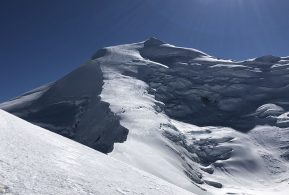
Himlung Expedition 2024

Ama Dablam Expedition 2024

Manaslu Expedition 2024
Why travel with highland expeditions, affiliated with, latest blog, layering for trekking and climbing in nepal.
Of the fundamental aspects to consider when planning a trek or expedition to Nepal, clothing and layering are major considerations. Landing in a warm, temperate climate at Kathmandu (1300 meters […]
REVIEWS Real People, Real Stories
Highland Team is who you want to pick! Outstanding trip to PoonHill – super well planned, organized and executed by Highland team from start of prompt emails with Passang to […]
JOIN THE NEWSLETTER
- Package Name * -- select a Package -- Ama Dablam Base Camp Trek Ama Dablam Expedition 2024 Annapurna Base Camp Trek Annapurna Circuit Trek Annapurna Dhaulagiri Trek Annapurna Inner Circuit Trek Annapurna Jomsom Trek Annapurna Poonhill trek Annapurna Sanctuary Trek Bardia Wildlife Safari Best of Nepal Tour Bhutan Highlight tour Chitwan Jungle Safari Cho Oyu Expedition 2023 Chulu Far East Peak Climb Dhaulagiri Circuit Trek Everest and Annapurna Trek Everest Base Camp and Gokyo Lakes Trek Everest Base Camp Gokyo Lakes Heli Trek Everest Base Camp Heli Trek Everest Base Camp Helicopter Tour Everest Base Camp Trek Everest Base Camp Trek 14 Days Everest Comfort Lodge Trek Everest Expedition 2024 Everest Three High Passes Trek Experience Nepal Tour Full day sightseeing of Kathmandu Gokyo Lakes Trek Half day sightseeing of Kathmandu Helambu Trek Highlights of Nepal Himlung Expedition 2024 Island Peak Climb Kanchenjunga Base Camp Trek Kathmandu Valley Trek Khumbu Three Peaks Kyajo Ri Peak Climbing Langtang Gosaikunda and Helambu Trek Langtang Valley Trek Lhotse Expedition 2024 Lobuche East and Island Peak Climb Lobuche Peak Climb Luxury Annapurna Trek Luxury Everest Base Camp Trek Makalu Base Camp Trek Manaslu Circuit Trek Manaslu Expedition 2024 Mardi Himal Trek Mera and Island Peak Climb Mera Peak Climb Mountaineering Course in Nepal Nar Phu Valley Trek Nepal and Bhutan Tour Nepal and India Tour Paro Tsechu Tour Pharchamo Peak Climbing Pisang Peak Climb Rolwaling Tashi Lapcha Pass Trek Rolwaling Valley Trek with Daldung La Sleep at Everest Base Camp Tengboche Monastery Trek Three Peaks Climbing Tibet Overland Tour to Kathmandu Tibet Tour with Everest Base Camp Tsum Valley Trek Upper Dolpo to Jomsom Trek Upper Mustang Trek Western Bhutan Tour Yala Peak Climb Yalung Ri Peak Climb
- Email Address* *
- Country Country Afghanistan Albania Algeria American Samoa Andorra Angola Antigua and Barbuda Argentina Armenia Australia Austria Azerbaijan Bahamas Bahrain Bangladesh Barbados Belarus Belgium Belize Benin Bermuda Bhutan Bolivia Bosnia and Herzegovina Botswana Brazil Brunei Bulgaria Burkina Faso Burundi Cambodia Cameroon Canada Cape Verde Cayman Islands Central African Republic Chad Chile China Colombia Comoros Congo, Democratic Republic of the Congo, Republic of the Costa Rica Côte d'Ivoire Croatia Cuba Cyprus Czech Republic Denmark Djibouti Dominica Dominican Republic East Timor Ecuador Egypt El Salvador Equatorial Guinea Eritrea Estonia Ethiopia Faroe Islands Fiji Finland France French Polynesia Gabon Gambia Georgia Germany Ghana Greece Greenland Grenada Guam Guatemala Guinea Guinea-Bissau Guyana Haiti Honduras Hong Kong Hungary Iceland India Indonesia Iran Iraq Ireland Israel Italy Jamaica Japan Jordan Kazakhstan Kenya Kiribati North Korea South Korea Kosovo Kuwait Kyrgyzstan Laos Latvia Lebanon Lesotho Liberia Libya Liechtenstein Lithuania Luxembourg Macedonia Madagascar Malawi Malaysia Maldives Mali Malta Marshall Islands Mauritania Mauritius Mexico Micronesia Moldova Monaco Mongolia Montenegro Morocco Mozambique Myanmar Namibia Nauru Nepal Netherlands New Zealand Nicaragua Niger Nigeria Northern Mariana Islands Norway Oman Pakistan Palau Palestine, State of Panama Papua New Guinea Paraguay Peru Philippines Poland Portugal Puerto Rico Qatar Romania Russia Rwanda Saint Kitts and Nevis Saint Lucia Saint Vincent and the Grenadines Samoa San Marino Sao Tome and Principe Saudi Arabia Senegal Serbia Seychelles Sierra Leone Singapore Sint Maarten Slovakia Slovenia Solomon Islands Somalia South Africa Spain Sri Lanka Sudan Sudan, South Suriname Swaziland Sweden Switzerland Syria Taiwan Tajikistan Tanzania Thailand Togo Tonga Trinidad and Tobago Tunisia Turkey Turkmenistan Tuvalu Uganda Ukraine United Arab Emirates United Kingdom United States Uruguay Uzbekistan Vanuatu Vatican City Venezuela Vietnam Virgin Islands, British Virgin Islands, U.S. Yemen Zambia Zimbabwe
- How to Tie a Tie
- Best Coffee Beans
- How to Shape a Beard
- Best Sweaters for Men
- Most Expensive Cognac
- Monos vs Away Luggage
- Best Luxury Hotel Chains
- Fastest Cars in the World
- Ernest Hemingway Books
- What Does CBD Feel Like?
- Canada Goose Alternatives
- Fastest Motorcycles in the World
This is how much it actually costs to climb Mount Everest
Towering approximately 29,032 feet over the Himalayas (and growing every year ), Mount Everest is the tallest mountain in the world. To date, over 6,000 climbers have reached its pinnacle. It takes years of physical conditioning and technical know-how to reach the top, even with the assistance of a team of sherpas to help you. And then there’s the financial outlay.
- What’s the total cost of climbing Mount Everest?
Cost of support
- Cost of food and transportation
Cost of permits
Cost of gear and equipment, cost of bottled oxygen, the cost of insurance, preparing for everest, frequently asked questions.
Permits, air transportation, gear, oxygen, ground transport, food, time off from work — it all racks up pretty quickly. Whether you’re thinking of heading there yourself or you’re just curious as to how much these daredevil athletes shell out for their trip, here’s our answer to the question, “How much does it cost to climb Mount Everest?”
What’s the total cost of climbing Mount Everest?
In 2019, The Manual interviewed mountaineer Alan Arnette and mountaineer/guide Garrett Madison of Madison Mountaineering to find out just how expensive it is to climb the world’s highest peak.
“The average price paid in 2017 [was] around $45,000,” Arnette said. “The price range for a standard supported climb ranges from $28,000 to $85,000. A fully custom climb will run over $115,000 and those extreme risk-takers can skimp by for well under $20,000.”
- This is the gross new thing anyone climbing Mount Everest will have to do
- There are actually 8 continents, and scientists have finally mapped the one that’s (mostly) hidden underwater
- How to tie the double fisherman’s knot (it’s not just for rock climbing)
Keep in mind the final cost varies widely because every climber’s needs are different. “Typically, this includes transportation from Kathmandu or Lhasa, food, base camp tents, Sherpa support, and supplemental oxygen. But with such a wide range, there are many caveats, such as a personal Sherpa, Western guides, tips, food, and tents on the upper mountain,” Arnette continued.
The cost to climb Mount Everest has continued to skyrocket since we last checked in with Madison 2017. Taking a trip up Everest in 2024 will cost you anywhere from $30,000 to $160,000, with the average falling somewhere around $50,000.
The cost of support (i.e., Sherpas) for climbing Everest depends on how comprehensive you want that support to be. If you are looking to go the “full service” route, you can expect to pay at least $45,000 and up to $160,000.
When it comes to climbing assistance, Sherpas are a key part of almost every Everest expedition. Sherpas are extremely hard-working Tibetan people who live on the slopes of the Himalayas and assist Everest climbers with various tasks, including cooking, carrying gear, and making crucial decisions. While hiring a Sherpa is not required for climbing Mount Everest, it can help increase the odds of reaching the summit — and it’s a service that many decide is well worth the investment.
A personal climbing Sherpa will cost anywhere upwards of $5,000, while a Sherpa for loading and unloading starts at $3,000, and a Sherpa that provides cooking starts at $2,000. Keep in mind climbers are expected to cover bonuses and tip Sherpas generously, too. Obviously, this is one area you don’t want to cheap out.
Cost of food and transportation
The cost of travel to Mount Everest can vary greatly, depending on the climber. The cost of your flight, which airline you choose—not to mention the week-long trek to base camp—will all contribute to total transportation cost of climbing Mount Everest. The trek alone costs about $4,000. When it comes to food on Mount Everest, you can expect to spend $20 to $30 per day.
Permits are one of the biggest expenses of climbing Mount Everest, and it’s a cost you simply can’t avoid. There are, however, two different ways to approach Everest, with two different prices: the Northside in Tibet and the Southside in Nepal. The permit in Nepal costs $11,000 (plus $2,500 to hire a local company to organize the permit), plus a $4,000 (refundable) trash permit, $2,500 for a local Nepalese team to organize your permit, and a final $3,000 per team for a Group Liason Officier. So just getting the proper paperwork in order costs close to $20,000, and that’s before all of your other costs.
From the Tibetan side, China recently eliminated the relatively more affordable solo climber option. Everest hopefuls must now travel in groups of four or more. Permitting costs now run between $15,800 and $18,000 per person in a group. That fee does include some things, however, like ground transport, yak support, trash fees, hotels, and liaison officer fees.
While the permit prices for Everest are not cheap and might make you think twice about a climb, they’re in place for good reason. Every year, the number of Everest hopefuls continues to rise, often at the expense of the experience, quality of life for locals, and the environment. Pricey permits help to mitigate these downfalls by putting much-needed monetary resources toward protecting the environment, cultural heritage, and livelihood of locals.
If you want to reach the summit of the world’s tallest mountain, you can expect to spend between $6,000 and $8,000 on gear.
You’ll need climbing gear, of course, like crampons, an ice ax, and a belay; technical clothing, including a down coat, a good mix of base layers, and hiking/trekking pants ; and camp equipment, including a sleeping bag, an extreme-weather tent , and a thermos.
While the gear list is both extensive and expensive, the good news is, that you can start with what you already have before investing in new items. If you’re already an amateur outdoorsman, chances are you already have the basics, like base layers, good hiking socks , moisture-wicking T-shirts, and a windbreaker. Starting with these items is a big help considering the entire list is pretty extensive. You can find a thorough Everest packing list here , provided by Madison Mountaineering.
The need for bottled oxygen is just another reminder that Everest is not your everyday hike . An essential item on any Mount Everest packing list, supplemental oxygen is also one of the most expensive. While summiting Everest without oxygen is possible, it includes severe risks like extreme hyperventilation and respiratory alkalosis. It’s not for the faint-hearted.
The average Everest climber will use five to six oxygen bottles, each costing nearly $600. Climbers also need an oxygen mask and regulator, which cost another $600. Keep in mind, climbers are also required to supply oxygen for their Sherpa, if they’re hiring one.
Since the climb to the summit of Mount Everest is so dangerous, it should really come as no surprise that you’re going to need insurance to cover you against any issues that may arise. Most climbing companies will require you to purchase special insurance before you set out. According to Climbing IQ , the basic insurance, known as evacuation insurance, will cover an emergency rescue and evacuation from the mountain if you get injured or ill during the climb. The cost for this insurance can be as low as $200 per climber, which is cheap, considering a helicopter evacuation from Everest can cost tens of thousands of dollars if you’re not insured.
There are also options to cover more than just evacuations, a full coverage package, which covers rescue, medical care, and trip cancellation. These packages can cost anywhere from $3,000 to $10,000.
The financial cost of climbing Mount Everest is just the tip of the iceberg. If you’re seriously considering checking out the view from 29,032 feet, you should also prepare for the immense physical and mental costs. Your regimen leading up to your Everest trek will include rigorous workouts, breathing exercises, visualization practices, and lessons on overcoming negative self-talk.
Sky-high costs aside, climbing Mount Everest will undoubtedly challenge you and leave you feeling on top of the world ( literally ). Many climbers who have achieved this incredible feat assert the feeling as indescribable, but one word seems to sum up the experience best: Priceless.
Why is it so expensive to climb Mount Everest?
The explanation for why it’s so expensive to climb Mount Everest—anywhere from $30,000 to $160,000—has to do with the sky high prices for transportation (flights and the trek to basecamp), support (Sherpas), climbing permits, gear and equipment, bottled oxygen, and insurance.
Permits tend to be among the biggest expenses associated with climbing Everest: A permit in Nepal costs $11,000, plus $2,500 to hire a local company to organize the permit; a $4,000 (refundable) trash permit; and a final $3,000 per team for a Group Liason Officer. These costs alone can total close to $20,000.
How much do Sherpas get paid on Everest?
A personal climbing Sherpa for Everest will cost upwards of $5,000, while a Sherpa that handles loading and unloading starts at $3,000. A Sherpa for cooking costs about $2,000. That’s just the baseline cost for their services, however; climbers are expected to pay out bonuses and tips to Sherpas as well.
Is it free to climb Mount Everest?
Climbing Mount Everest itself is far from free. Apart from the high transportation costs (flights, trek to base camp), gear, support in the way of Sherpas, bottled oxygen, and food, there’s also pricy permit cost from the Nepalese government, which as of 2024 costs $11,000. What’s more, these permits are set to increase $15,000 in 2025, a 36% increase.
Editors' Recommendations
- Delta is the latest airline to increase baggage fees — here’s how much every major airline charges now
- How being stinky when hiking in the deep woods might actually save your life
- Cost to climb Mount Everest is skyrocketing because people keep dying
- How well does your home state rank for adventure? Study reveals the best and worst states
- Why you should visit the Everglades (and our top tips for a memorable adventure)
- Destinations

When wildlife photographer Aaron Teasdale set up his camera to capture the release of a grizzly bear back into the wild, he wasn't counting on the bear having other ideas. It's not every day that we witness a grizzly bear attack firsthand. We understandably try to avoid an encounter becoming an attack, and people encountering a grizzly in the wild are too preoccupied to think about their Instagram followers. While we might have seen these majestic creatures moving across the plains and even chasing down prey, this new video shows what it would be like to experience a grizzly bear attack. I'll give you a hint: it would be pretty darn terrifying.
The prospect of standing on top of the world has lured thousands of mountain climbers to Mount Everest since the first successful attempt by Edmund Hillary and Tenzing Norgay 70 years ago. Commercial expeditions began in the 1990s, and since then — not counting the 2015 season disrupted by the catastrophic earthquake or the recent Covid-affected seasons — the number of climbers has increased dramatically.
Climbing Mount Everest may be popular, but the difficulty of reaching the highest point on earth should not be underplayed. Ignoring the hefty price tag associated with an Everest expedition, there's the sheer physical exertion of climbing to that altitude. Unless you plan to recreate Killian Jornet's feat of summitting twice in one week without supplementary oxygen — don't try this — then you'll need to set aside serious time for your ascent to the top of the world. So exactly how long does it take to climb Mount Everest?
Ski resorts: They're a winter thing, right? I thought so too. It's a ski resort — the clue is in the name. But a few years back, my partner and I loaded our summer travel gear into an RV and hit the road to see what ski resorts were all about year-round.
What did we find? Other than some residual snow, we found that ski resorts thrive year-round worldwide, and not just because of this year's west coast summer skiing phenomenon. Increasing numbers of ski resorts are focusing on summer — especially as climate change affects winter seasons — and you should too. Here's why. Get up high Melting snow doesn't mean that the lifts have to stop turning. Many ski resorts across the US keep their gondolas and some lifts spinning into the summer to give you quick access to the mountaintops and resorts. Hiking trails, mountaintop bars, that high-altitude yoga retreat you've signed up for, and endless mountain views are all accessible with these summer uplifts. Trail running, mountain biking, and hiking Hiking trails and mountain biking routes litter most US ski resorts. In many cases, these trails are made accessible by gondola access, but others start from the resort basin and wind their way up into the mountains. Be prepared for long days out hiking, but in return, you'll get the most breathtaking routes you've ever experienced, with plenty of wildlife on the way.
High Adventure Expeditions
- Mount Everest Expedition 2022
- Mount Everest Base Camp Trek 2022
- Everest Gear List – 2021
- Island Peak
- Destinations
- Testimonials
- Mount Everest 2016
- Himalayan Expedition 2013
- Mount Everest 2012
- Mount Everest
- Meet Your Team!
- In The Media
How Much Does It Cost To Climb Mount Everest?
- Why Does It Cost So Much To Climb Everest?
- Can Anyone Do The Everest Base Camp Trek?
- What’s It Like To Climb Everest?
- How Many People Have Climbed Mount Everest?
- What Is The Weather Like On Everest?
- The Sherpa People
- Trip Resources
- Mount Everest Statistics
- Full List of Mount Everest Climbers
- List Of Women Who Have Climbed Mount Everest
- List Of Indian Mountaineers Who Climbed Mount Everest
- Winter Ascents of Mount Everest
- Mount Everest Expedition Application
- Join Us On A Climb Or Trek!

As of 2021, the average cost for a place on a commercial Everest team, from either Tibet or Nepal, is US$44,500. A minimalist attempt to climb Everest could be organised for about US$20,000. At the very upper level, the private climb option on Futenbach’s “signature expedition” comes with the hefty price tag of US$200,000.
The minimalist option would suit high-altitude mountaineers who possess extensive experience above 8,000m, and are used to solo-climbing, expedition planning, and operating in the area known as the death-zone.
At the more expensive price point, the Furtenbach team which climbs from Tibet charges US$60,900. A place on the US Alpenglow team costs US$85,000. IMG’s “private climb option,” which includes a personal western guide for each climber, has an all-in-cost of US$118,000. The private climb option with the RMI team tops out at US$135,000. Furtenbach’s “signature expedition” with private guide, extremely experienced Sherpas, pre-acclimatisation, unlimited oxygen tanks, nutrition and training plans, and other services takes the most expensive slot at $200,000.
As a general rule, the higher the cost the more services that are provided; however, such a fact should not be relied upon blindly. These additional services would include such items as:
- higher ratio of experienced, western guides
- additional Sherpa support
- extra oxygen bottles which can be used at a greater flow rate
- specific dietary requests
- larger Base Camp tents
- more communication equipment
- provision of pre-acclimatisation tents to be used in the 6 weeks before travel.
So that you can better understand where the headline dollar figure comes from, the table below gives a breakdown of typical costs for an Everest expedition.
Cost to Climb Mount Everest in 2021 – Full Breakdown:
You can check out the latest details for our Mount Everest Expedition here .
You’ll find the application form for our Everest Expedition here .
In this section
© 2024 High Adventure Expeditions. All rights reserved.
Delicately crafted using Franz Josef theme and WordPress.

- Best Hikes In The World
- Appalachian Trail
- European Hikes
- Nepal Hikes
- Patagonia Hikes
- See All Hikes
- Mount Kenya
- Mount Kilimanjaro
- Mount Toubkal
- See All Mountains
- South Africa
- New Zealand
- Switzerland
- United Kingdom
- Packing Lists
How Much Does It Cost To Climb Mount Everest? The Price To Summit
In the 21st century, reaching the highest peak in the world is no-longer reserved for hardcore climbers. In the last few decades, modern equipment and a booming mountaineering industry has opened up the Himalayan peaks for mountaineers from around the globe. Before you start packing, you might be wondering how much does It cost to climb Mount Everest ?
Although popular, climbing Everest is no easy feat and this is reflected in the price. Depending on which guide company you use, a Mount Everest expedition will cost you anywhere from $30,000 to $100,000. In the sections below, I’ll break down the cost to climb Mount Everest by component. This will give you a rough idea of the cost to plan your own expedition and also help you understand why guide companies hit you with such a hefty price tag.
Average Cost To Climb Everest
When planning your Mt Everest Climb, there are a few options for expedition style. Most people use a mountaineering agency (either Nepali or International) to arrange all the logistics. You could also take the 'purist' approach and organize your own expedition.
Below I outline the different climbing options and approximate prices.
Sherpa Supported Tours With Local Operators
This type of expedition option does not include a guide. It does however include logistics, group gear, transport, food, and (usually) permits. On a Sherpa-supported climb, the lead Sherpa will go with you to the summit but you will be ultimately responsible for decisions and safety along the way.
This option is only suitable for experienced mountaineers or groups who are bringing their own experienced guide. There is also no guarantee that the Sherpas speak good English. Sherpa Supported climbs cost from $30,000 per person .
Full Board Everest Climbs (with local operators)
These types of expeditions are usually with a registered guide or lead Sherpa. Sherpas from Nepali companies often have equal, if not more experience than Western guides. Guided expedition prices usually cover all logistics including food, sherpas, oxygen, group gear, admin fees and permits.
You will be led by an experienced Sherpa/guide who speaks good English. The guide will take responsibility for the climb and act as a leader to the group. They will handle summit decisions and safety aspects.
Expect to pay between $45,000- $50,000 per person Note: Cheaper tours take bigger groups and split them into smaller parties for summiting. This may mean you have less chance of a successful summit as you will need to rely on good weather on your group’s allocated day.
Guided Everest Expeditions With International Agencies
International companies used to dominate the market of Nepal summit treks. Today, international companies have stiff competition from Nepali agencies. There are still some very well-established agencies operating from New Zealand, Germany, America, Argentina and the UK (amongst other countries).
The International agencies generally set themselves apart by limiting expeditions to smaller groups of around 10 people (sometimes a little bigger). Keeping the numbers low means the entire group can summit at the same time. This gives a few opportunities for summit days and optimal weather.
Some perks of higher-end companies include more comfortable accommodation and better meals. Some agencies provide WIFI in camps and an assigned medical doctor. Expect to pay at least $50,000 pp for international outfitters that employ the services of local guides. If you are wanting to go with a western/non-Nepali mountaineering guide, you will need to shell out about $20,000 extra in guide fees.
Can You Climb Everest Without A Trekking Company?
Technically, you can climb Everest without joining a commercial expedition but it’s not recommended unless you are a professional mountaineer with significant 8000er experience. For the average Everest client, climbing without the support of a reputable company is extremely risky. Moreover, sorting out your own logistics can be a nightmare. You will have to consider things like hiring Sherpas, buying supplies, oxygen, gear etc. More on this below.
Cost To Climb Mt Everest?
Here's a breakdown of the main expenses.
Everest Climb Permit Cost + Overheads
A Nepal permit to climb Mount Everest currently costs around $11,000 pp . Permits are issued at a price of $70,000 for groups of 7-10 people. If you did for some reason want to purchase an individual permit, this will cost you $25,000.
A permit grants climbers legal permission to be on the mountain and provides assurance for rescue in emergency situations. Also, should you reach the summit, you will receive an official certificate from the Government of Nepal.
But hold on, there are some other admin fees to consider…
Nepal government requires that a local operator organize your permit. This comes with a $2,500 fee plus a $4000 waste fee (which is refundable). You will also be paying a Liaison officer around $3000 per team. These officers are there to assist with climber communication, provide weather info and to enforce the strict rules about climbing Everest.
The above fees are usually included in the price when you book through a Nepali company. If not, you will need to have around $20,000 available before you even look at hiring a team and buying supplies.
Note: From the Tibet/Chinese side, Mt Everest permits are slightly more expensive between $15,000-$18,000 per person. This includes transport to base camp, yaks in and out, and all the associated admin fees.
Sherpas, Cooks And Supplies
Good climbing agencies keep the Sherpa-to-client ratio 1:1. Often extra Sherpas are needed as a backup at the high camps or to carry extra equipment.
Sherpa wages are in the realm of $5000 per Sherpa, per trip . If you want to privately hire a certified lead Sherpa, you will need to budget about $10,000. Cooks and helpers will cost an additional $5000 (a shared cost for the group). If you are budgeting for your own food and fuel supplies, it will cost around $700-$1000 per person for a 6-week expedition.
Gear Costs For Climbing Everest
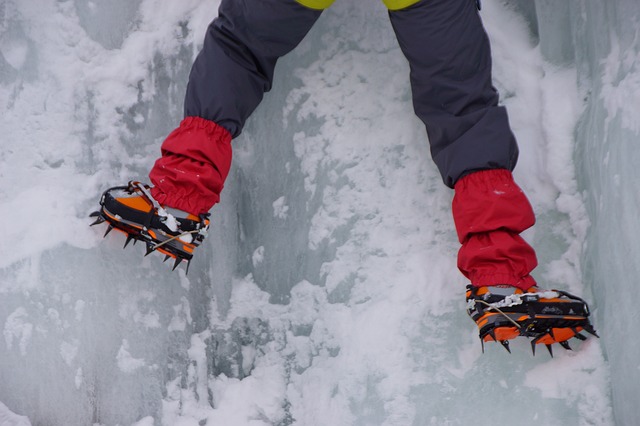
Even if you are climbing with a company, you will need your own alpine gear. This needs to be quality stuff especially designed for climbing in high-altitude environments. Some essential pieces include;
- Alpine climbing boots
- Thermal layers
- Sleeping bag suitable for temperatures below -20℃
- Full down suit
- Climbing gear (harness etc.)
Buying this gear new will cost upwards of $5000 . You can bring down the cost slightly by buying or borrowing secondhand equipment. Outdoor gear shops in Kathmandu sell used but good-quality Everest gear. You should however bring the basics, particularly your own boots.
Oxygen bottles cost around $300 and climbers are required to carry 4-6 bottles per person, that's another $1800 . On top of this, you will need an oxygen mask and regulator ( about $800 )
Climbing outfitter will generally provide tents, oxygen, masks, and regulators as well as all the staff’s equipment.
Insurance Costs For Climbing Everest
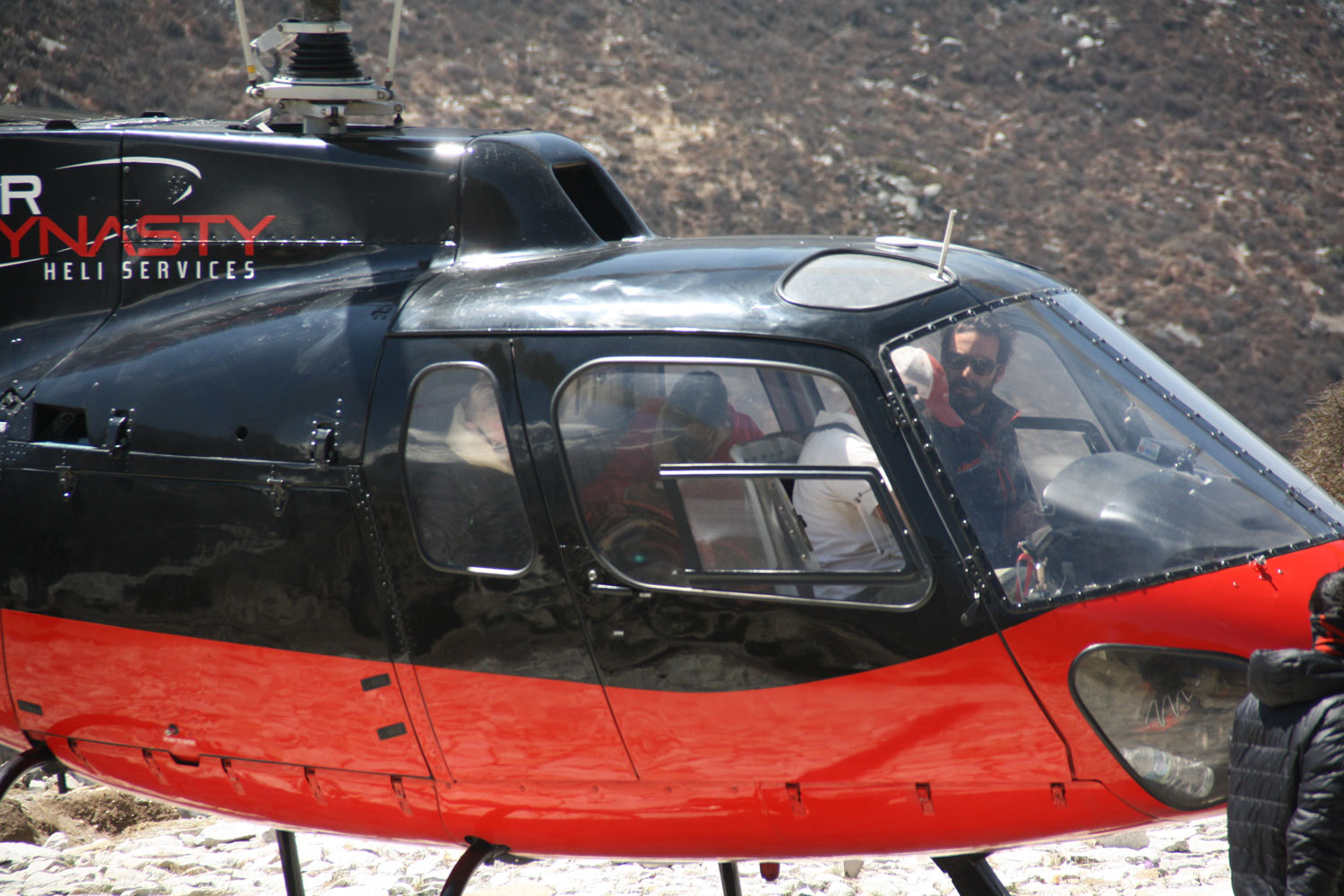
There are three important aspects of cover for climbing Everest; rescue evacuation, medical costs, and repatriation. At a minimum, companies will require that you have evacuation insurance. This can cost as little as $200pp - but will come with limitations. Adding medical cover will be a few more hundred dollars. Be sure you read the fine print and stick very strictly to the T&Cs or the cover will not pay out.
It’s pricey but, if you can afford it, it’s well worth adding trip cancellation cover. Full cover for all the aforementioned (rescue, medical, repatriation, and cancellation) will cost in the region of $3,000 - $10,000.
Other Considerations
Travel costs.
Flights into Nepal vary depending on where you are flying from. From Kathmandu, you will need to take an internal flight to Lukla, (approximately $200 with Tara Air ) From here you can make your way to base camp. You could save money by taking a bus to Jiri and hiking to Lukla.
Trek To Base Camp (Food And Accommodation)
From Lukla, It’s an 11-12 days trek from Lukla to Everest base camp . You must factor in accommodation at Nepal tea houses and meals along the way. Rooms cost between $5-$15 dollars depending on whether or not meals are included. If you are not paying full-board, tea house meals cost about $5 -$10. This means it actually works out cheaper to include meals.
You can save some money by camping and cooking your own meals. If you want to camp and still buy meals from tea houses, you will be charged more than double the rate of staying guests.
As you will be carrying equipment for a summit attempt, you will likely need to employ the services of yaks ($40 per day) and Porters ($20 per day) for your journey to and from base camp. Plus, you will pay a park fee of $100 per group.
Generally, it will cost you between $600- $1000 (excluding flights) to get to EBC independently. Read more about the costs of trekking to Everest Base camp
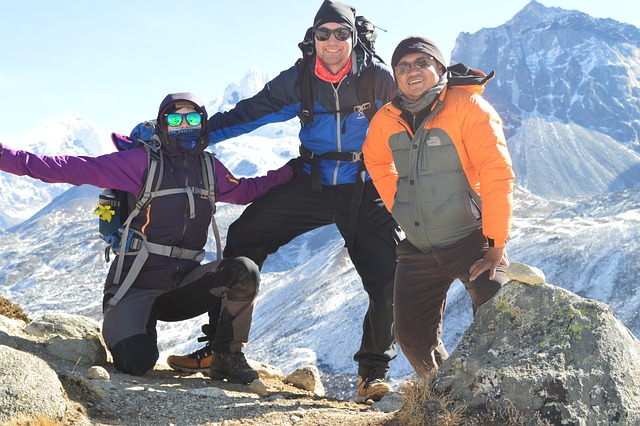
As a rule of thumb, tips should be anything from 5%- 20% on top of wages. You should budget between $400-$3000 + per individual . Guides usually receive the lion’s share but don’t neglect the hard-working Sherpas, cooks, and assistants.
Of course, tipping is optional but it’s very much a part of Nepali tourism culture. Remember, your team is going to play a big role in keeping you safe and making your Everest summit dream a reality. They deserve some recognition above and beyond what’s basically a minimal wage.
Climb Mount Everest In Luxury
On the higher end of things, it’s possible to give your Everest climbing expedition a serious upgrade. Some companies offer add-ons including luxury hotel stays, private bathroom and dining quarters, helicopter flights to and from Everest base camp, personal doctor and extra oxygen. Oh yes, and a personal photographer for some above-average summit shots!
If this sounds like your style, prepare to pay upwards of $130,000.
Why Does It Cost So Much To Climb Mount Everest?
As you can see from above, there are ton of overheads that you need to factor into the price of climbing Mount Everest. If you made the summit years ago and are wondering how it’s possible that prices skyrocketed, there is a pretty reasonable explanation; it boils down to supply and demand.
Better Pay For Sherpas
Sherpas are getting paid better than in the old days. Recent years have seen a huge rise in the demand for Everest summit climbs. This has created jobs for hundreds of more sherpas. To combat the mistreatment of these Sherpas, there was a big push for a standardized and fair wage structure.
Nepal companies are offering packages that are competitive with international agencies. Today, an experienced lead Sherpa can earn just as much as a foreign guide (and usually have more summit experience). Of course, some cheap outfitters are still guilty of underpaying their staff.
Increasing Everest Permit Fees
As for the permit fees, these have continued to rise with the number of climbers on the mountain. The money from permit sales is supposed to be used by the Nepali and Tibetan governments to keep the mountain in pristine condition.
By all accounts, this has not gone very well and Everest is famous for its high level of pollution. Even so, there have been a few expeditions in previous years where groups of Sherpas were sent up to the ‘death zone’ with the goal of clearing trash. With so much public scrutiny on the issue, we can only hope the Nepali government will enforce stricter waste policies.
The Cheapest Way To Climb Everest
Honestly, there is no cheap way to climb Mount Everest and prices are only escalating by the year. If summiting the world’s highest mountain is your dream, best get going as soon as feasibly possible.
You can save a little money through careful planning. For instance, as you near base camp, things like batteries and toiletries get a whole lot more expensive. Make sure you stock up with essentials at home or in Kathmandu.
Finally, it’s worth noting that Nepali companies are always willing to wheel and deal. You can usually negotiate their prices down a bit. Just be wary, if you are paying less, chances are they are cutting costs somewhere.
You may also like our article on Mount Everest facts .
About the author
Alison Macallister
With a degree in Nature Conservation and experience working with wildlife including the Big 5, Alison used to work as a guide for a 5-star safari reserve in South Africa. Today she is a full time traveller and editor for Mountain IQ. She has travelled and hiked extensively in South America, including many solo hikes in Patagonia, the Cusco region of Peru, Ecuador and Chile.
Leave a Reply
Your email address will not be published. Required fields are marked
Are the other 8,000ers similarly expensive? If not, which is the cheapest to ascent?
Hi Joseph, climbing any of the 8000ers requires a serious expedition and comes with a steep cost. Everest is the most famous which means there are more options between trekking agencies. Even the ‘easier’ mountains like Cho Oyu cost upwards of $30,000.
Hope that’s helpful!
We work with local guides to offer great value adventures at unbeatable prices.
- / Expeditions
- / Seven Summits
THE ULTIMATE ADVENTURE
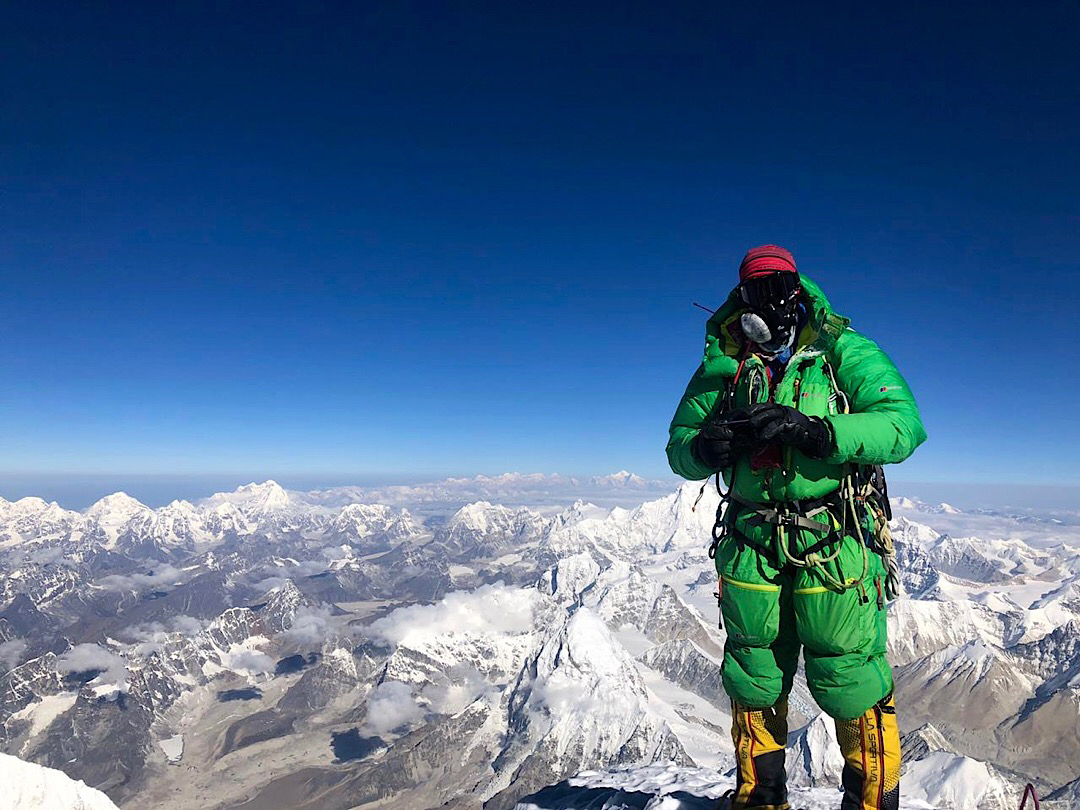
Mount Everest is still the ultimate mountaineering adventure. To stand at the pinnacle of the Earth is one of life's most rewarding experiences. As pioneers of guided ascents on Everest, Adventure Consultants is recognised as the premier guiding service with a superb reputation for enabling members of our expeditions to achieve summit aspirations.
An attempt on Everest is a committing undertaking which requires a huge amount of dedication and determination. If you are serious about achieving the top and feel you have the right ingredients and experience, we invite you to apply for a position on our team in 2025, on what will be our twenty-ninth Everest expedition.
The Adventure Consultants methodology and tactical approach to climbing Mount Everest has seen us achieve the highest success rates and our extensive experience gives us the edge when it comes to the big decisions. We provide a consistently higher Sherpa and guide ratio than any other operator, resulting in more support and backup for your summit attempt and therefore a greater safety margin and chance of success.
We are constantly developing and evolving our operational systems to ensure you participate in the best expedition available. We figure our expedition members do not deserve anything less! In the interests of giving you the most optimal chance to summit, we limit our team size to ensure the group summits on the best weather day; sometimes there is only one summit day! Large teams offering cheap climbs often miss out as they split their groups over several potential summit days.
Our guides are seasoned professionals who are trained and assessed through the International Federation of Mountain Guides Associations (IFMGA) resulting in a greater repertoire of skills that enables them to provide a dedicated level of security to you during the expedition. The guide's contribution is predominantly around making decisions to keep you safe and healthy and to avoid mishap. This is based on years of first-hand experience on the mountain and is in contrast to startup operators looking to learn the ropes at your expense or locally-led groups which are wanting of preventative strategies and back-up contingency in case of mishap.
For two decades we have been at the forefront of providing the most current communications systems for our expeditions. These deliver comprehensive weather forecasts which enable us to plan our ascent around favourable weather. Additional meteorological interpretation provided by veteran Everest guides through our head office in New Zealand helps manage the decision-making process.
Our Wi-Fi data connection allows you to keep in touch with sponsors, business, friends and family via email, social media accounts or blog throughout the expedition from the comfort of your tent or our Base Camp lounge. The comfortable Base Camp environment and the quality of food provided by AC is legendary. Our cooks are regarded as the best in the business, providing wholesome and appetising meals with an agreeable array of menus to suit all your food requirements. The meals you are served on the mountain are also of the highest standard and designed to sustain you for the rigours of the ascent. For those with specific needs - we can cater to special dietary requirements.
In line with our objective to ensure you receive the best possible level of care while you are on the expedition, we provide a dedicated Base Camp doctor who is there specifically to ensure the wellbeing of the team members. We have had it confirmed time and again that this consistently makes a crucial contribution to the success rate and well-being of our team members.
You can customize your expedition by adding further service options to complement your ascent, such as private expeditions, additional Sherpa support, Everest Traverse from south to north, training schedules and much more. There is no doubt that an attempt of Mount Everest is a committing and serious undertaking. It takes a huge amount of dedication and determination to be successful. We work with you to help develop a suitable training program and a schedule of preparatory ascents to give you the best chance of achieving that lofty goal.
If you are serious about being successful on an ascent of the world’s highest mountain—and you want an environment that gives you the best chance of attaining that goal in a relaxed team atmosphere or private expedition—then Adventure Consultants is the perfect choice.
- Climb with the pioneers of Everest expedition guiding
- 1:1 Sherpa to climber ratio on summit day and 1:4 ratio of Western Guides
- No other operator offers so much in the way of resources and personnel to help you achieve success!
- High flow oxygen package for all team members
Expedition Level
8,850m/29,035ft
Arrive in Kathmandu
Kathmandu Preparations
Trek to Base Camp 5,300m/17,400ft
Establish camps and acclimatise
Clean up and depart Base Camp
Trek to Lukla
Fly from Lukla back to Kathmandu
Depart Kathmandu
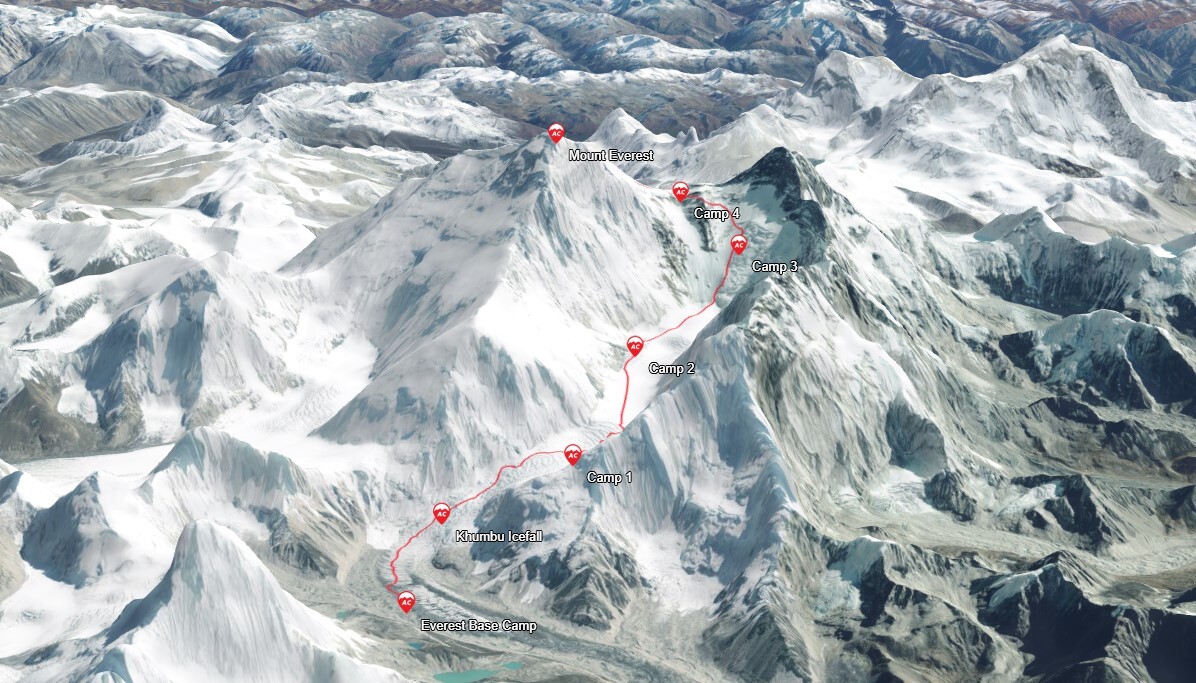
Departures and Pricing
Looking for a specific date? Book a private expedition
The need for exceptional physical fitness cannot be over-emphasised. A regular, strenuous programme must be followed for many months to achieve the level of fitness required. We recommend a training programme tailored to mountaineering such as those from Uphill Athlete .
You must be able to efficiently climb ice, snow and rock terrain, multiple days in a row. Climbers will ideally have a broad set of climbing skills from basic rock climbing to advanced cramponing on snow and ice and strong rope skills such as rappelling and rope ascending. You should be comfortable with camp craft and self-care at high altitude.
Prior ascents of multiple 6000-7000m peaks are required (such as Denali, Aconcagua , Peak Lenin , 6000m peaks in Nepal , or the Ecuador Volcanoes ) and a prior ascent of an 8000m peak, such as Cho Oyu , is strongly recommended. This will allow you to fine-tune your skills and equipment and discover how you personally cope with extreme altitude.
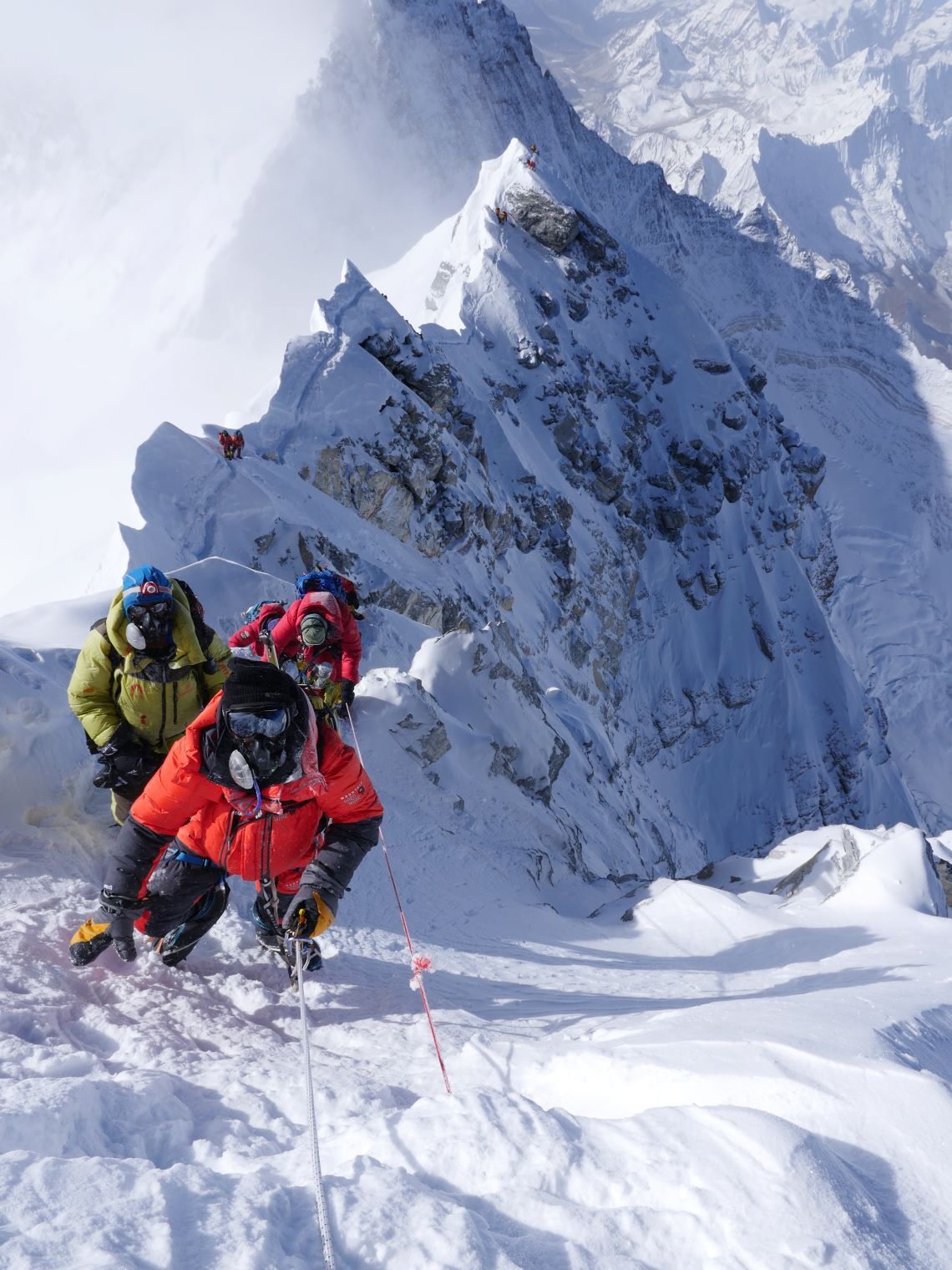
When you climb Everest with Adventure Consultants you'll join a small team of companionable people who are focused on reaching the summit in good style with the highest level of support and safety standards possible. You'll enjoy the best standards of food and equipment that are attainable - not just at Base Camp, but where it counts the most; on the mountain.
Our methodology and tactical approach to climbing Mount Everest has seen us achieve the highest success rates and our extensive experience gives us the edge when it comes to the big decisions. We provide a consistently higher Sherpa and Guide ratio than any other operator , resulting in more support and backup for your summit attempt and therefore a greater safety margin and chance of success.
In the interests of giving you the most optimal chance to summit, we limit our team size to ensure the team summits on the best weather day ; sometimes there is only one summit day! Large teams offering cheap climbs often miss out as they split their groups over several potential summit days.
Our g uides are seasoned professionals certified by the International Federation of Mountain Guides Associations ( IFMGA ) to ensure your safety throughout the expedition. Our experienced Sherpa team is enthusiastic, motivated, and regarded as the strongest and most cohesive group of Sherpas on Mount Everest. They have dozens of Everest summits between them.
You'll benefit from a higher flow of oxygen than other expeditions (sleeping on 1l/min and climbing on 4l/min), maximizing safety and success. Your overnight gear will be carried between camps , meaning you only carry what you need for the day.
We provide a dedicated Base Camp doctor - proven to make a crucial contribution to our success rate and the well-being of the team members. Our Base Camp Manager ensures the smooth running of the expedition. Our Expedition Chef and cooks are regarded as the best in the business, providing wholesome and appetising meals with a range of menus to suit all your food requirements. Meals on the mountain are also of the highest standard and designed to sustain you for the rigours of the ascent. For those with specific needs, we can cater to special dietary requirements.
For three decades we have been at the forefront of providing the most current communications systems for our expeditions. These deliver comprehensive weather forecasts from our Swiss meteorologists which enable us to plan our ascent around favourable weather. Additional meteorological interpretation provided by veteran Everest guides through our head office in New Zealand helps manage the decision-making process. Our Wi-Fi data connection allows you to keep in touch throughout the expedition from the comfort of your tent or our Base Camp lounge.
The comfortable Base Camp environment and the quality of food is legendary . On the mountain, our camps are comfortable but not excessive - eliminating unnecessary additional loads to be carried through the icefall.
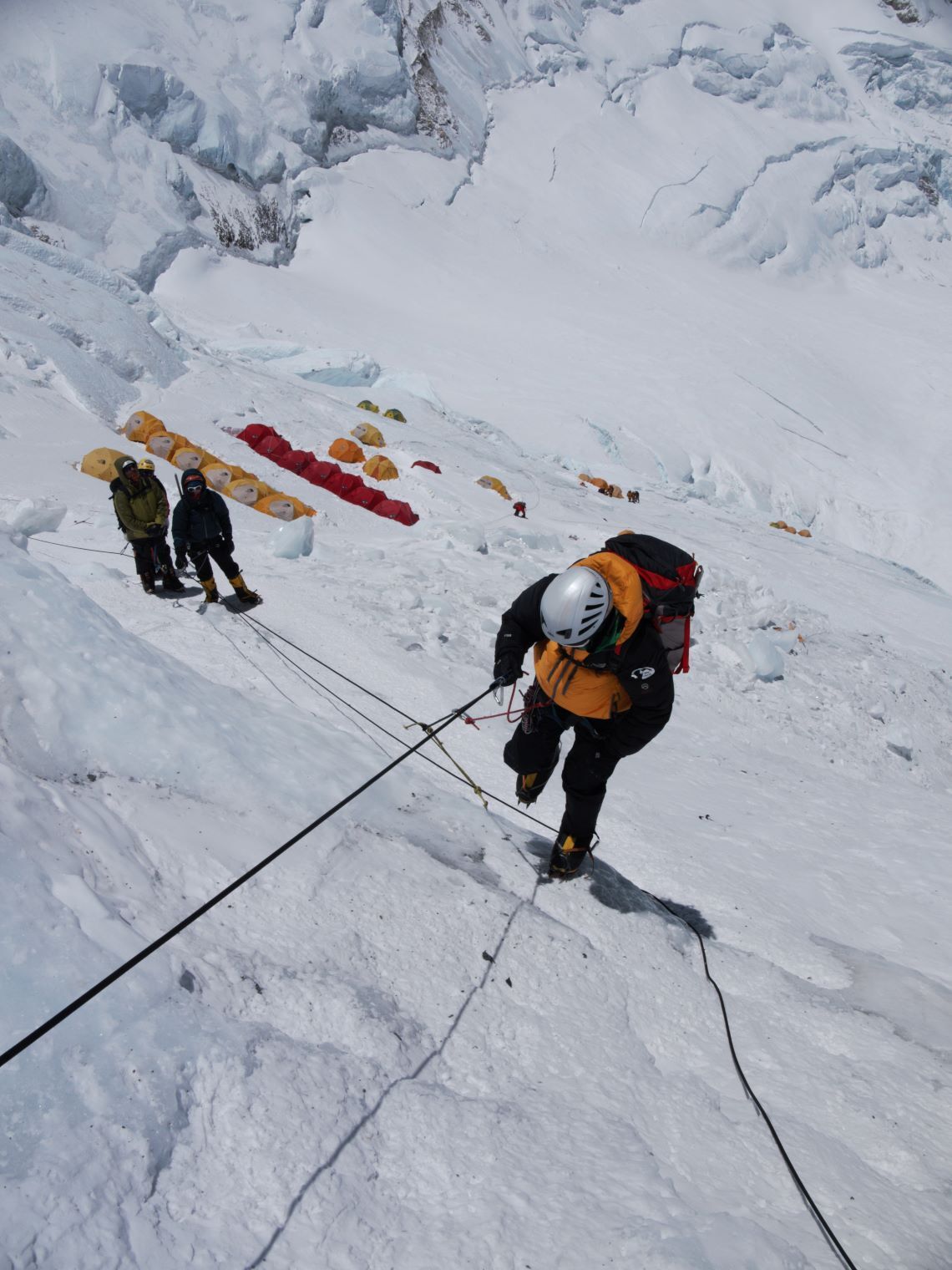
The price of your trip includes the following:
- 1:4 Western guide ratio
- 1:1 Sherpa to climber ratio on summit day
- High Flow Bottled oxygen
- Personal equipment carried on the mountain
- Helicopter flights Kathmandu-Lukla and return
- Expedition Base Camp Doctor
- High-end Base Camp and mountain camps
- Excellent food and catering
- Wi-Fi at Base Camp
- Regular dispatches for families and friends to follow your expedition updated daily by guides and Base Camp staff, and semi-hourly on summit day
- Comprehensive support from our New Zealand office team.
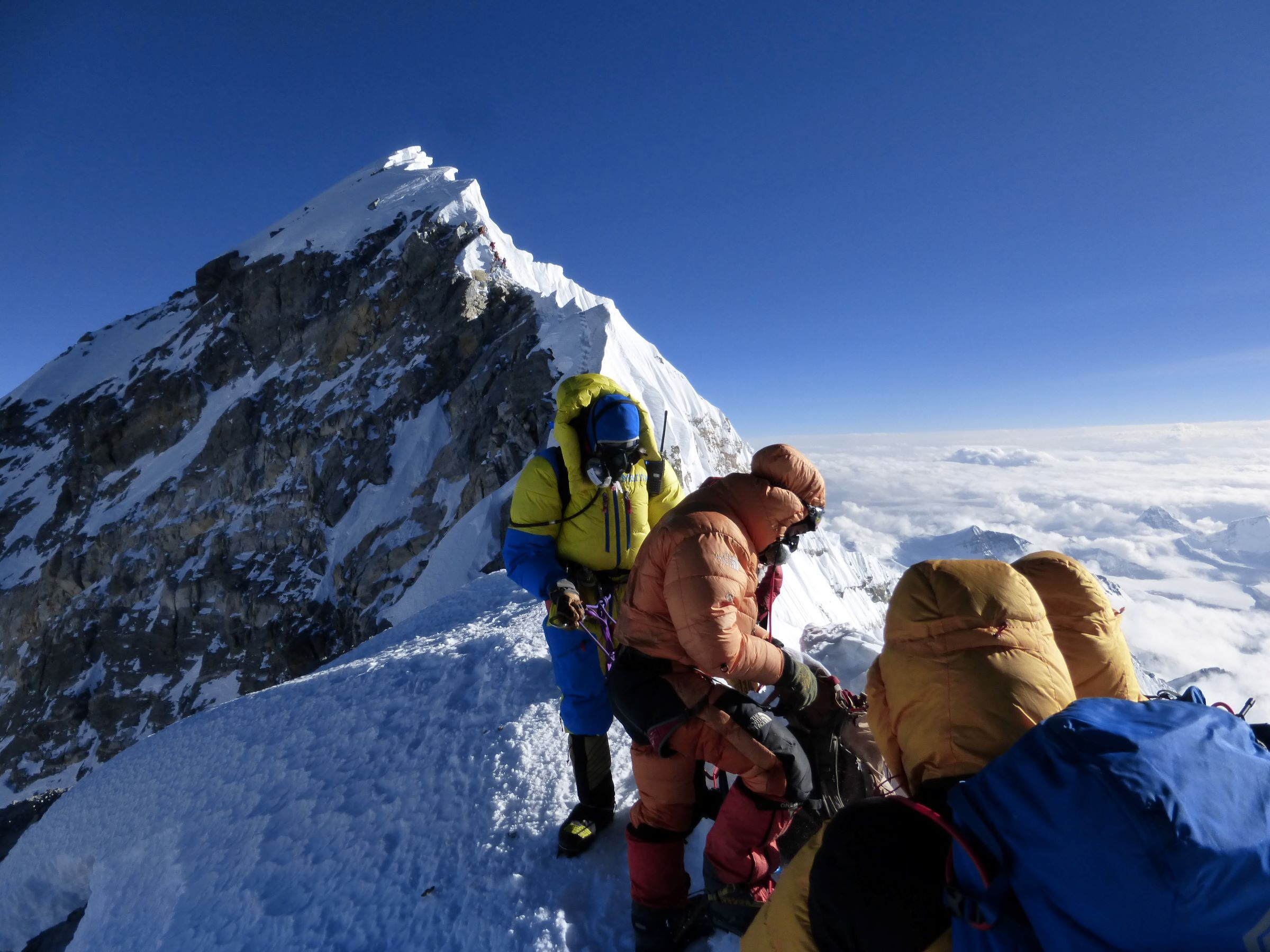
The ridge between the South Summit and the true summit of Mt Everest, is actually the best climbing on the mountain. Views aren't bad either.
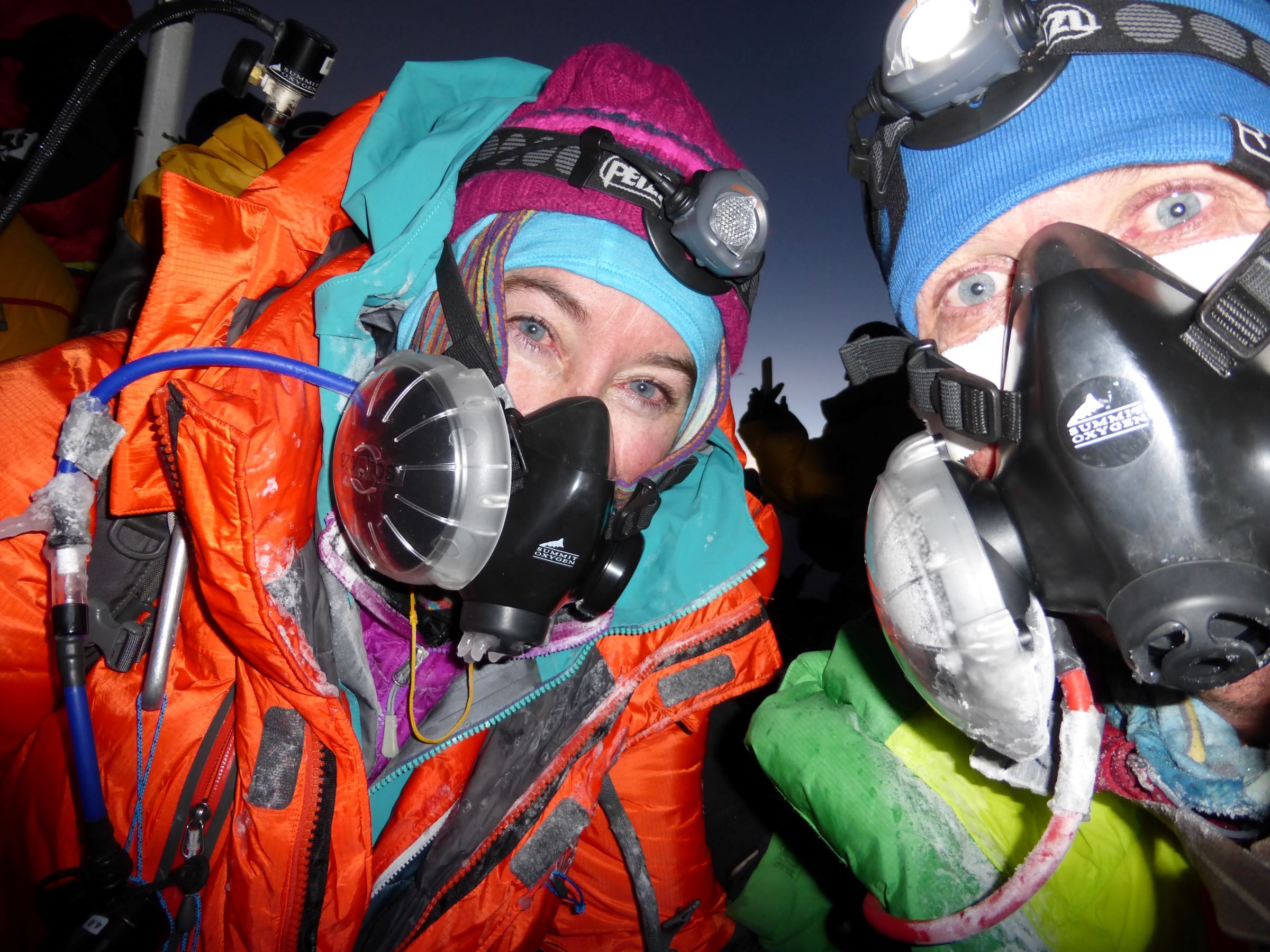
There is nothing like being on the highest summit in the world to bring a smile to your face!
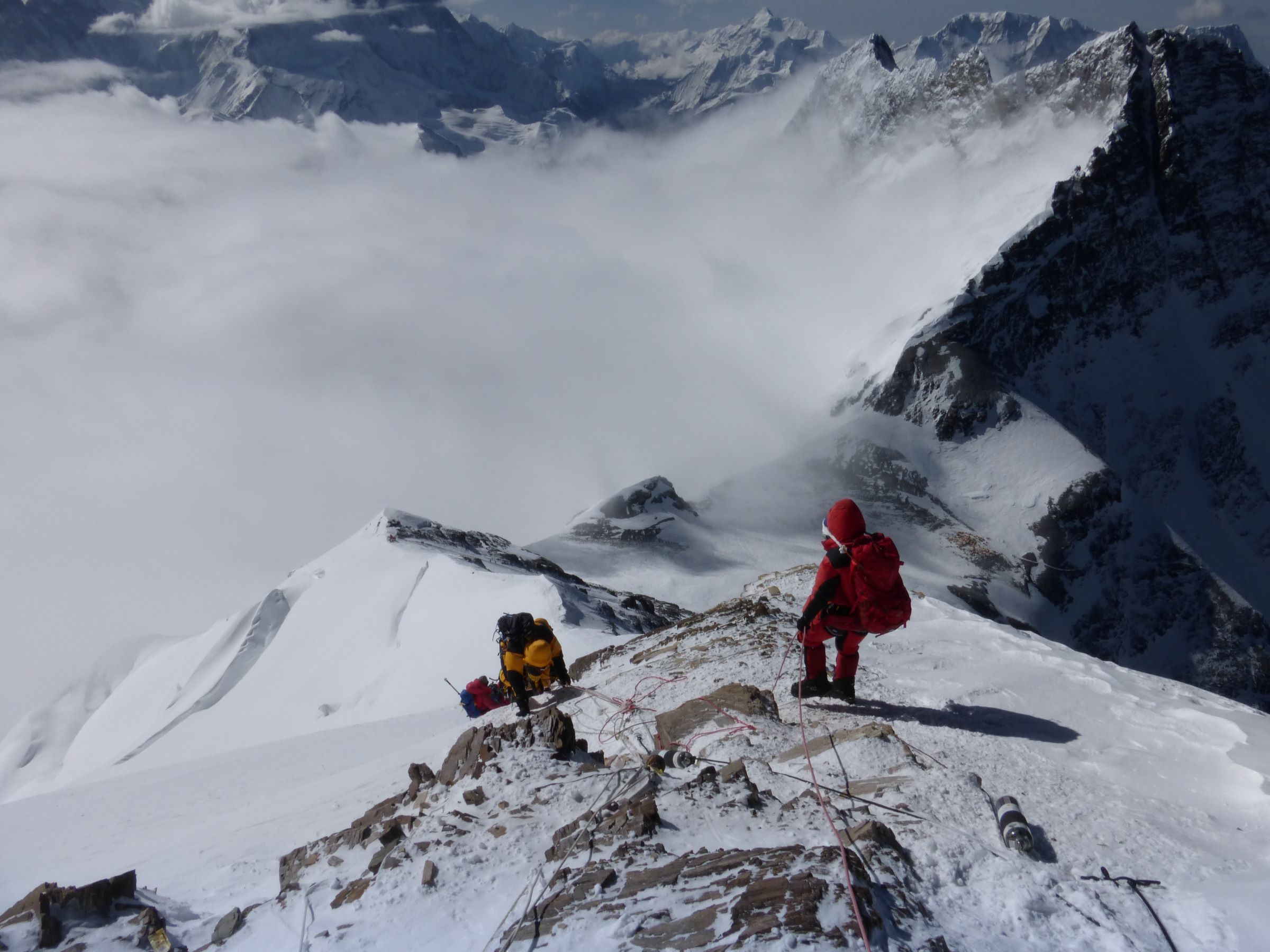
Adventure Consultants guides are focused on your safety and success.
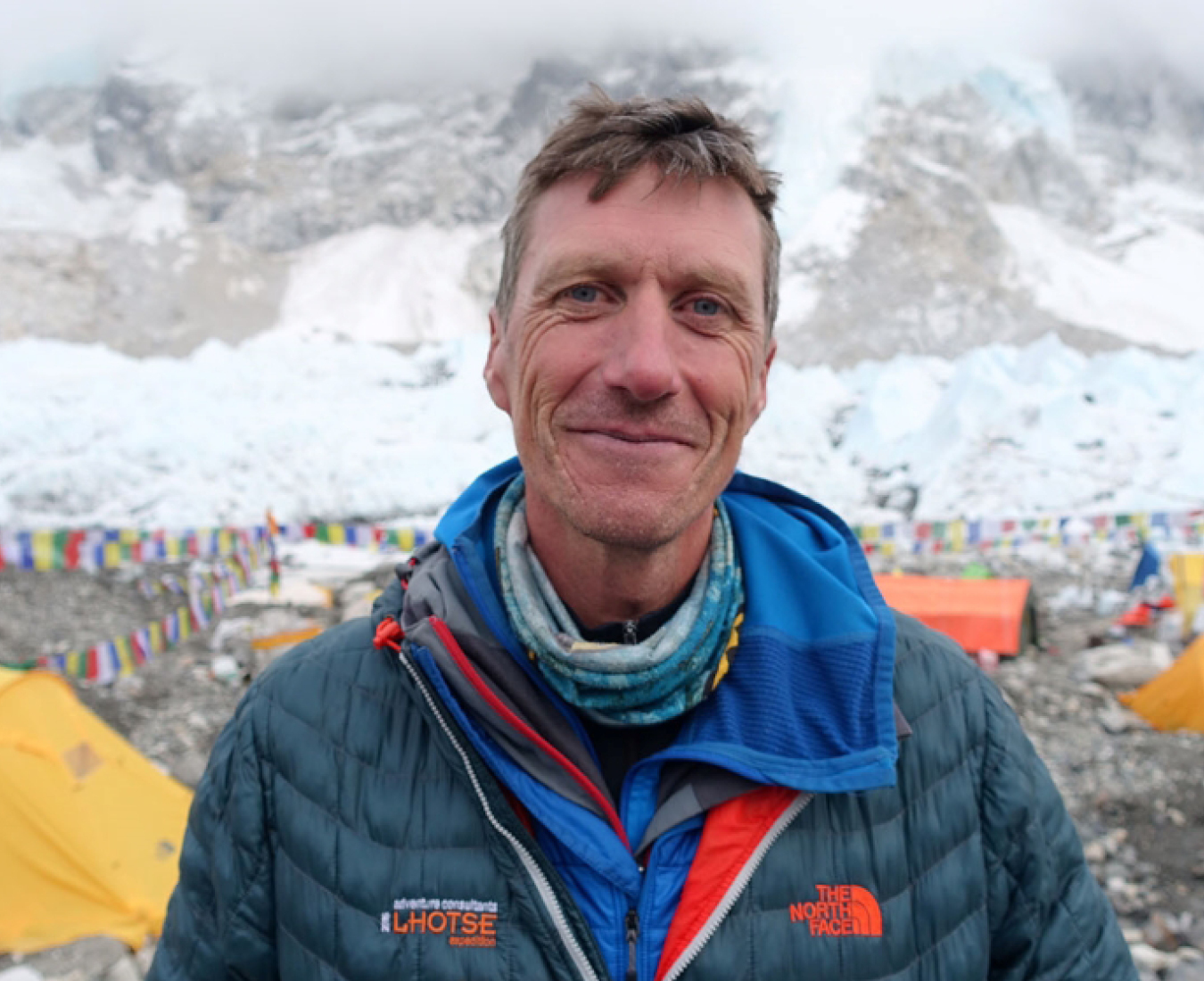
Numerous climbers have achieved the remarkable feat of summiting Mount Everest with Adventure Consultants. Guided by the expertise of the company's seasoned guides, these individuals showcase a diverse array of stories marked by determination and triumph. United by the shared goal of conquering the world's highest peak, they exemplify the spirit of adventure and the resilience inherent in human pursuit of extraordinary achievements. The success of these climbers with Adventure Consultants underscores the company's legacy in facilitating remarkable ascents.
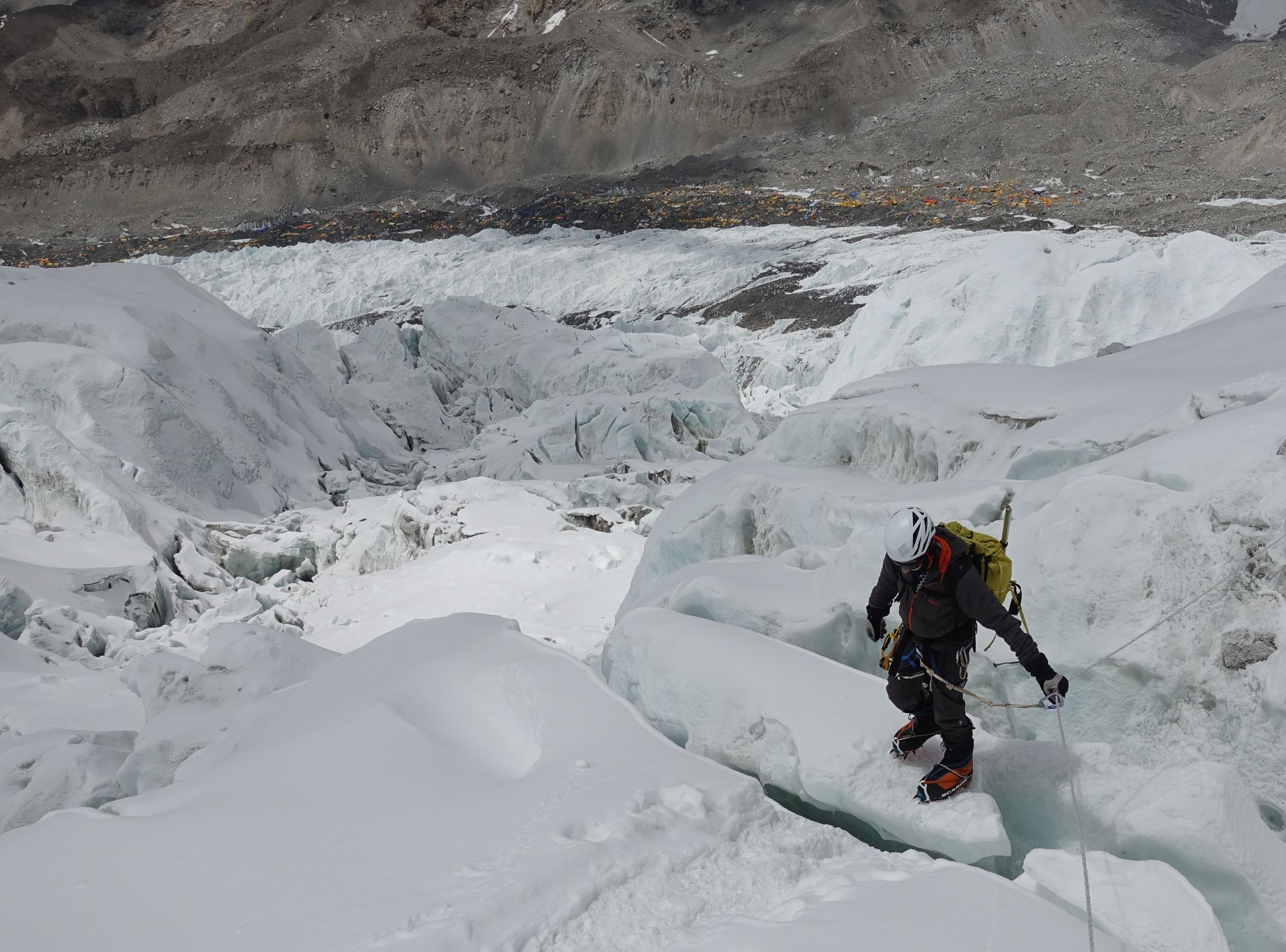
"Would simply say to other climbers if they want the best possible experience go with Adventure Consultants. I can honestly say I think about the whole Everest experience every day of my life and reminisce what an incredible trip it was and how lucky I was to share it with such wonderful people. As Guy says, keep doing it AC style."
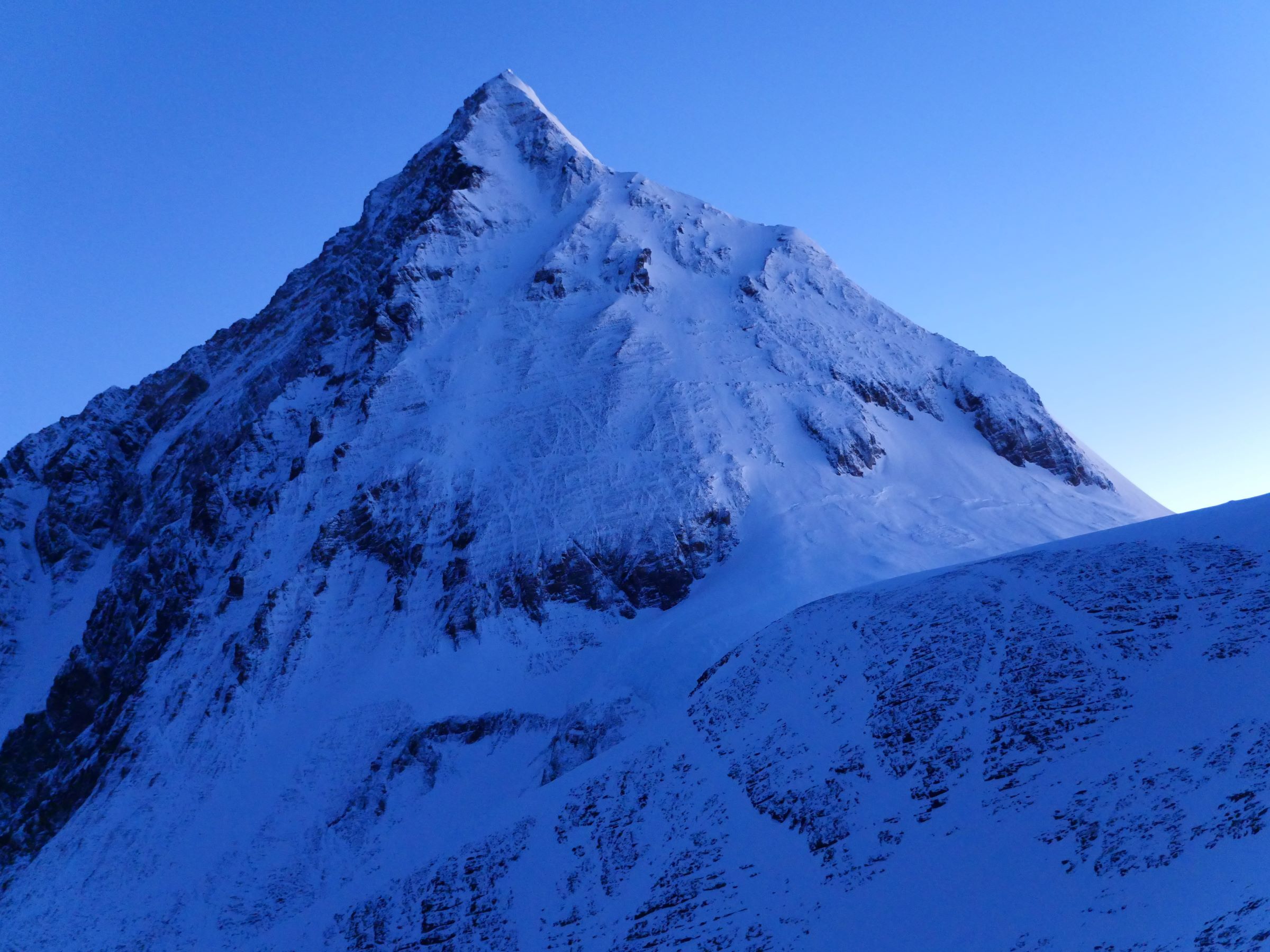
"Maximisation of chance to get to the top would be the main reason I would recommend Adventure Consultants . Small group numbers and flexibility. Detailed dispatches were greatly appreciated. I thoroughly enjoyed my trip and never once felt fear or apprehension. Looking forward to climbing with AC again."
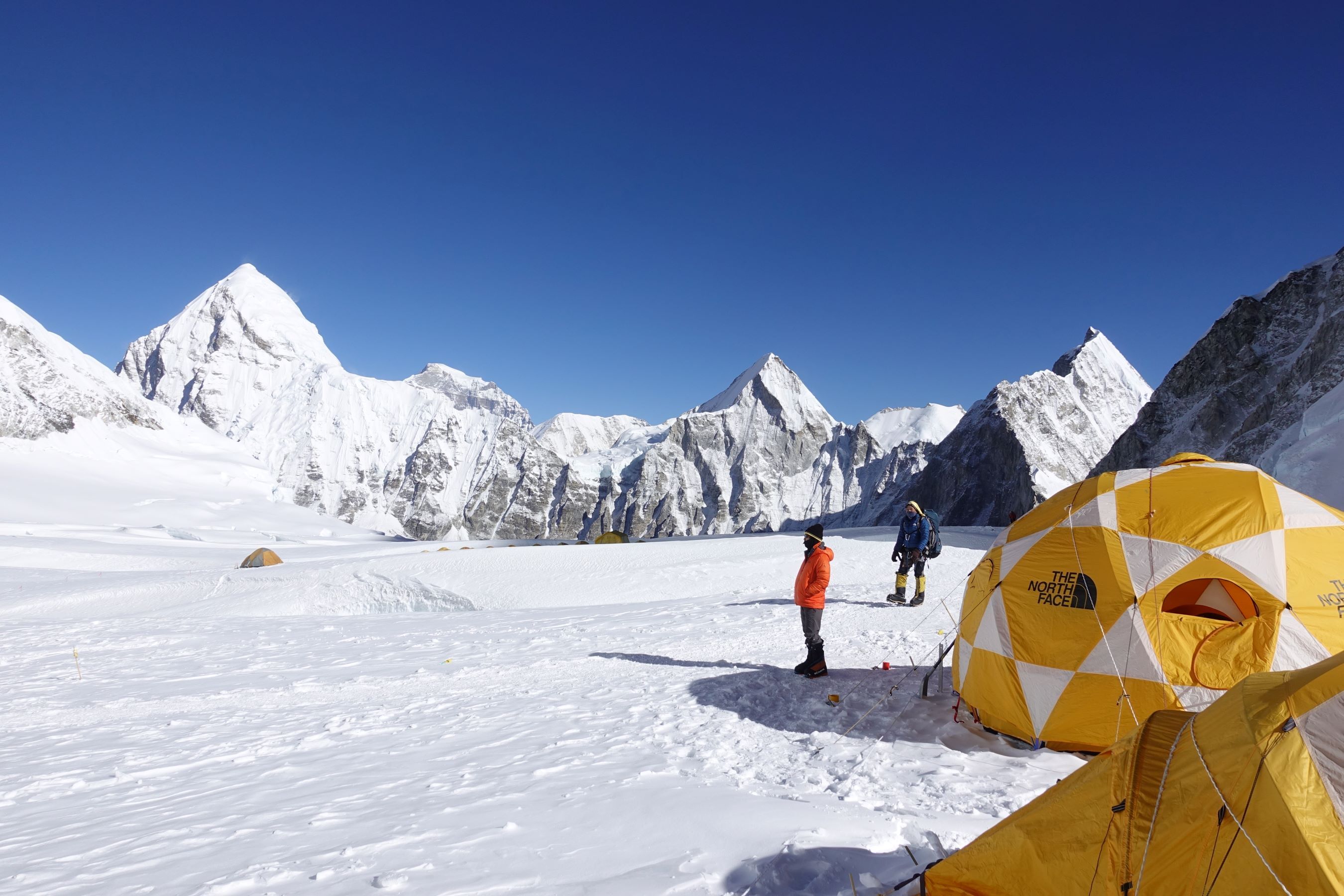
"The guides were exceptional in selecting the best strategic plan that put us all in the best position we could have been in to reach the summit. While others moved into weather unnecessarily, Mike was amazing at patiently placing us on the best days to advance and climb."
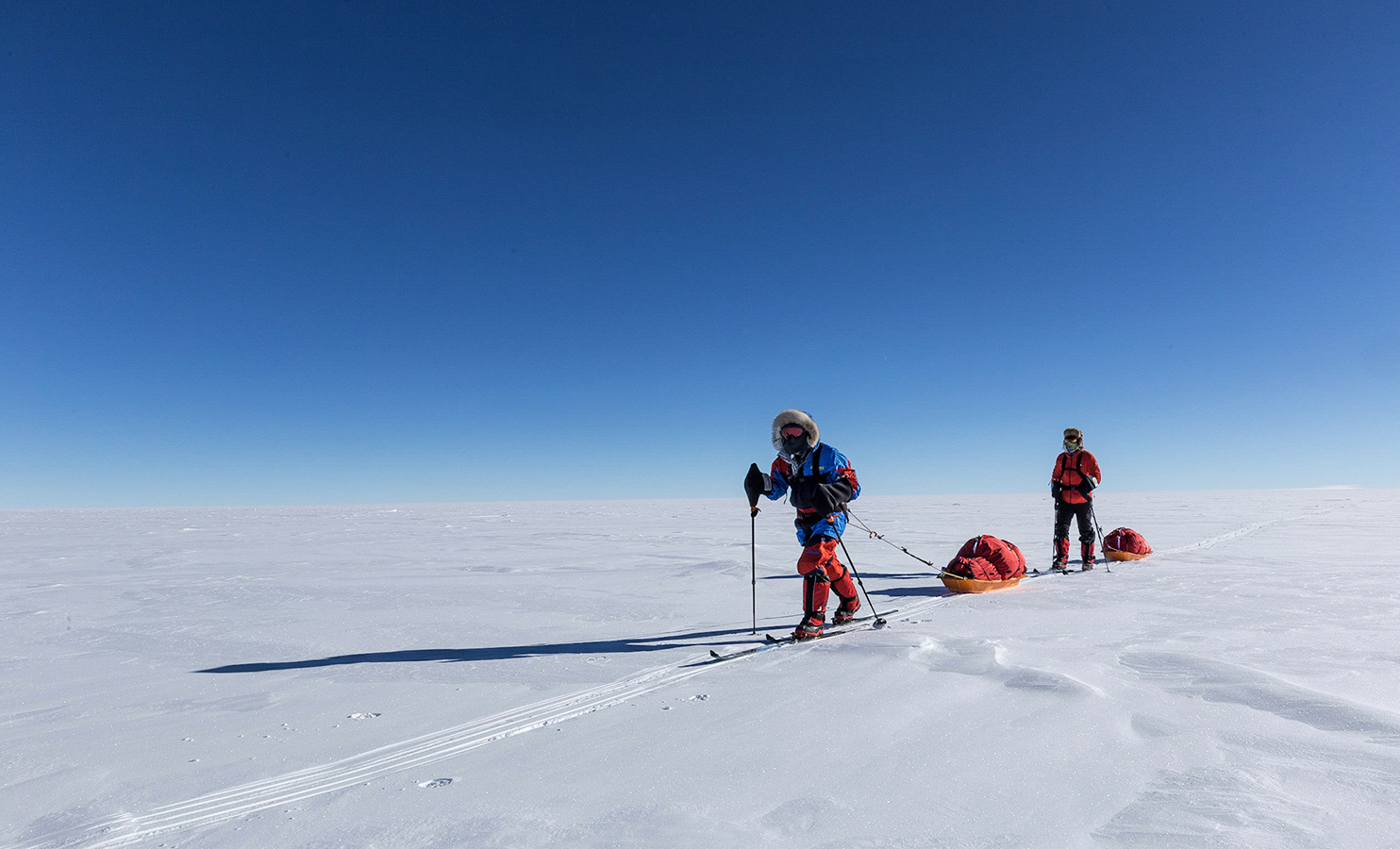
The Explorer's Grand Slam awaits! Join the exclusive club of explorer's that have climbed the Seven Summits and skied to both the North and South Poles!
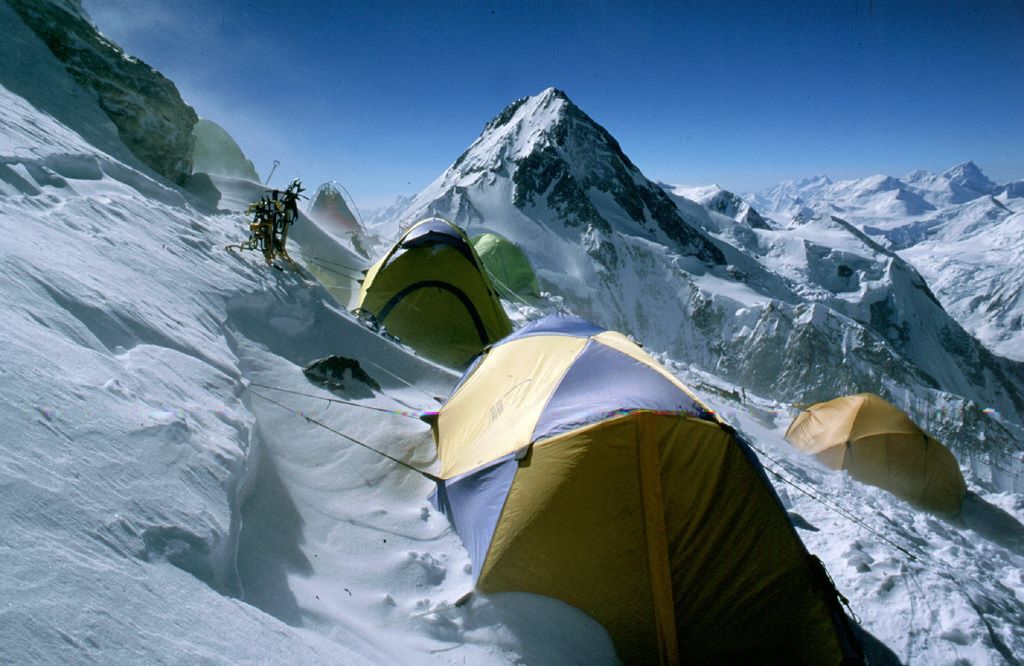
Tick off another 8,000er! Join one of our scheduled Gasherbrum 1 and 2 , Dhaulagiri, Cho Oyu or Manalsu expeditions or plan a custom expedition .
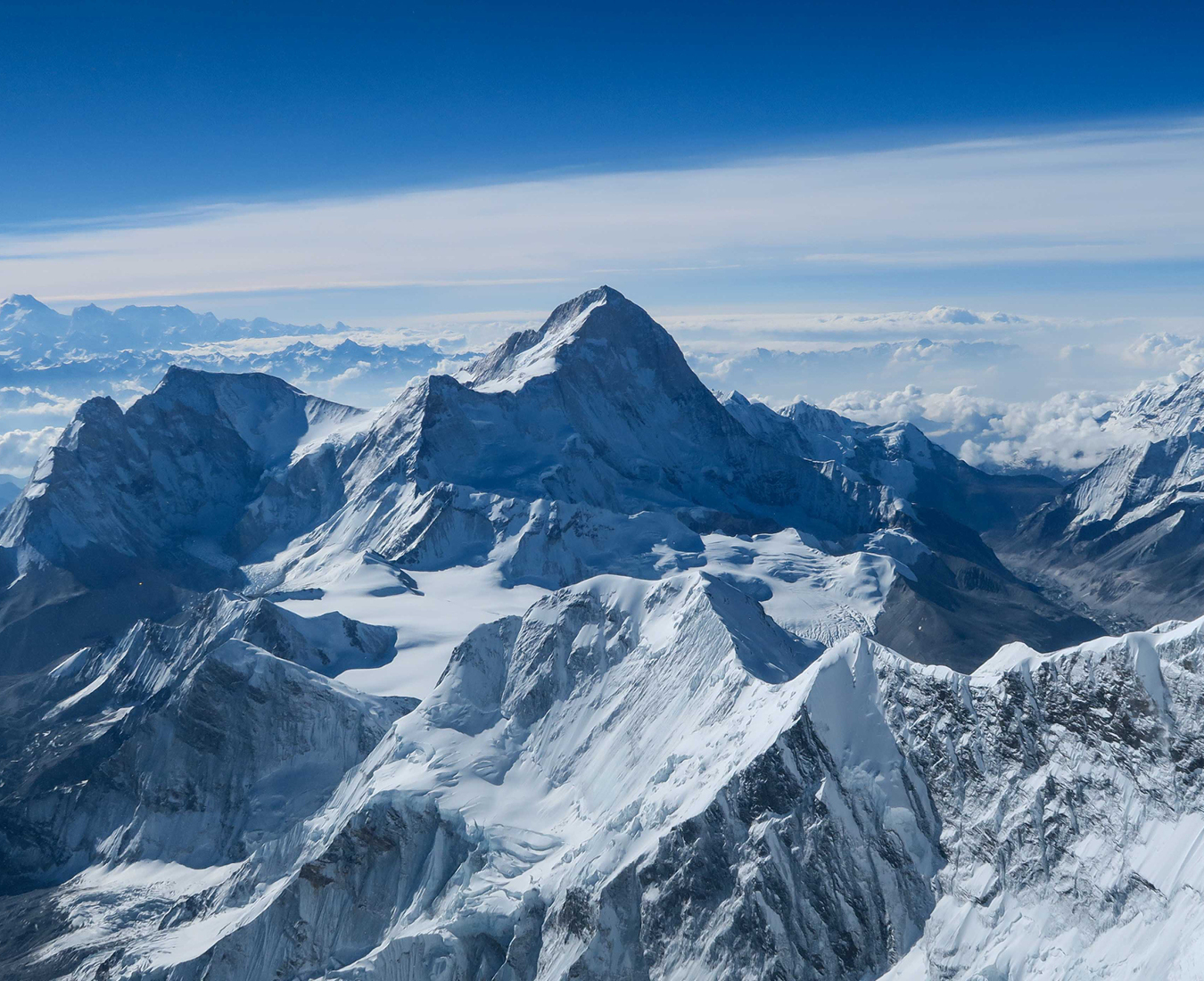
2-FOR-1 GA TICKETS WITH OUTSIDE+
Don’t miss Thundercat, Fleet Foxes, and more at the Outside Festival.
GET TICKETS
BEST WEEK EVER
Try out unlimited access with 7 days of Outside+ for free.
Start Your Free Trial
Powered by Outside
How Much Does It Cost to Climb Everest? 2021 Edition
Longtime everest chronicler alan arnette looks at how much it actually costs to climb mount everest, whether you do it on a "shoestring" budget or book the swankiest expedition out there. from the costs of travel to food to supplies to guides, it's all broken down here.
This will be my 19th season of all-things Everest: 12 times providing coverage, another four seasons of actually climbing on Everest and two years attempting Lhotse. I did similar coverage for the 2004 , 2005 , 2006 , 2007 , 2009 , 2010 , 2012 , 2013 , 2014 , 2015 , 2016 , 2017 , 2018 and 2019 seasons. In 2020, I did a fictitious Virtual Everest series that’s available as an e-Book . I summited Everest on May 21, 2011, and have attempted Everest three other times— 2002 , 2003 , 2008 , and Lhotse in 2015 and 2016 .
2021 is my ninth year writing, “How much does it cost to climb Mount Everest?” With the Covid-19 pandemic devastating tourism across the globe, I expect this year to be somewhat quiet. In fact China has closed Tibet to all foreigners. There may be some Chinese nationals climbing on Everest, but I don’t expect a lot.
So, how much does it cost to climb Mount Everest? As I’ve said for years, the short answer is a car or at least $30,000, but most people pay about $45,000, and some will pay as much as $160,000! But the prices are going up, and I don’t know where it will stop. So if you are on a tight climbing budget, go as soon as your skills, experience, and checkbook can support a safe attempt.
Big Picture — Higher Prices from Everyone!
The headline for 2021 is a significant price increase from the traditional operators and for the first time from the Nepali companies. The reason behind these increases is murky at best. In 2019, China enacted many new rules and raised the permit price—operators just passed this price hike along to their clients. But the Nepal side is a bit of a mystery, especially with the price increase by local operators. My best guess is that they realized they could charge more and not hurt business. However, Nepali operators have always been willing to deal and haggle, so take their list prices as an opening bid.
This is the breakdown of current median prices by style and route. I’ll go into more detail later in this article, however you can easily see how much the prices have increased on both sides, for all styles:
As for safety, people die on both sides of the mountain. Most of the deaths these days are due to inexperience and not who you selected as your guide. However, choosing a competent guide could save your life. The 11 deaths in 2019 tragically demonstrated what happens when inexperienced people go with unqualified guides.
Bottom line for 2021: Look for a mixed bag on Everest, with a quiet Tibet side and uncertainty on the Nepal side. Kathmandu will be confusing, potentially deadly, as will Everest Base Camp with the pandemic still ongoing.
Everest 2020 Review
The Covid-19 pandemic shut down mountaineering worldwide. Almost all of the Seven Summits saw zero visitors with the exception of Kilimanjaro and the Chinese side of Everest. There may have been a few other climbs here and there, but nothing like in 2019.
Nepal and China “cooperated” to remeasure Everest and reported a revised height of 8,848.86 meters/29,031.69291 feet, or a 0.86-meter/33.85827-inch increase! China sent a survey team to their side of the mountain in 2020 along with a small national team. There were 28 summits.
Everest 2021 Outlook
I’m not 100% sure what to expect for Everest 2021. Several major guide companies have cancelled their entire season due to Covid. They include: Adventure Consultants, Adventures Global, Alpenglow, and Mountain Madness. But I’m not aware of any Nepali companies refusing business, and many of the longtime guiding outfits like International Mountain Guides, Alpine Ascents, and Austria’s Furtenbach Adventures are still going. However, China has said that Tibet is still closed to foreigners, thus all Everest climbing this spring will be on the Nepal side—and that could create crowds.
A disturbing pattern we have seen over the past several years are inexperienced clients with unqualified guides. This combination was one of the primary reasons for the nightmare line of people between the South Summit and the Summit in 2019. A client had no idea how to handle the altitude and went too slow, and that climber’s guide had no idea how to manage the client; the result was the whole system came to a standstill. Absolutely nothing has changed since then and it won’t surprise me if we see something similar this year.
As always with mountaineering, weather is the biggest wildcard. In 2018 there were 11 straight days of winds under 30 miles-per-hour, which allowed the crowds to spread out. There were no major issues high on the mountain that year. However, the next year, 2019, there were only three suitable summit days and that forced over 600 people to try for the top in just 72 hours.
In keeping with the trends from the past few years, look for more climbers than ever hailing from China and India . As I’ve detailed in the past, China requires all Chinese Nationals to have a summit of an 8,000-meter peak before climbing Everest from the Chinese side, so many simply go to Nepal where there are no such requirements. As for the Indian climbers, it has become folklore that if you summit Everest you can leverage that into fame and fortune—a huge miscalculation by so many—but many Nepal- and India-based guide companies have emerged to meet this market demand. These companies have also created profitable businesses running training programs for the under-20 crowd, and then taking them to Everest—a deadly gamble that may backfire one day.
In terms of danger and risks , 2019 was a deadly year on the 8,000-meter peaks. There were 11 deaths just on Everest plus, another 10 on other 8000-meter peaks. Sixteen of the 21 deaths were climbers on trips run by the low-price budget operators. We can expect similar results in 2021 as these low prices are attracting a new demographic of climbers who simply don’t know what they don’t know. The operators are glad to take their money.
Between the pandemic and turmoil in the Nepal Government, no new rules were announced for climbing Everest in 2021—a pleasant change from their recent history of ginning up the climbing community with promises of a cleaner, safer environment with rules that are never implemented. Bottom line for climbers this year: Triple-check with your evacuation company that you are covered for Covid-19 with the guide service you use. Also, be prepared for some type of quarantine upon arrival in Kathmandu. But don’t expect it to be serious: As usual, Nepal likes to talk big but not enforce their own rules.
Everest 2019 Review — The Year Everest Broke
In 2019, the last full year for summits, there were approximately 871 summits on Everest in the spring plus 11 deaths. The all-time number of people who have ever summitted Everest is now 10,155 (this includes multiple summits in one season by one person). The death total stands at 306. Still, Everest is one of the safest 8000ers.
2019 was all about the weather. The notorious jet stream was “wobbly” in the words of Chris Tomer of Tomer Weather Solutions . It colluded with Cyclone Fani to delay the ropes reaching the summit, complicated by some bureaucratic delays on using a helicopter to transport gear to Camp 2 on the Nepal side. Everyone hoped it would be like in 2018 with 11 straight days of low winds that allowed for a record number of summits.
On the Nepal side, the ropes finally made the top due to some incredible efforts by a team of Sherpas. One-hundred-fifty clients with their Sherpas quickly followed over the next few days before the jet stream returned. When the next window appeared, close to 800 people made their summit bids, but still the weather forecast felt like a dice throw praying for cat’s eyes. Beginning on May 22, hundreds summited early each morning for several days—and once again death was in the air. On May 23, Nirmal “Nims” Purja secured his place in history (he has since done so numerous times over) with a shocking photo of a line of climbers on the Hillary Step. The root cause of the lines were slow climbers with guides who failed to properly manage their clients.
How 2019 unfolded was predictable. In 2018, Everest hosted a record 802 people on her summit from both sides. The death toll was five, about the same as it had each year for the prior 10 or so. They died from what people usually die from on 8000-meter mountains: altitude sickness, exhaustion, health issues, and the occasional fall. All tragic, but all not unexpected. But in 2019 with 11 deaths, over half were what I term “avoidable.”
I’ve been writing about two major trends that have been rising and reached a crescendo in 2019: inexperienced climbers and unqualified guides. These two factors along with a “wobbly” jet stream and record 381 foreigner permits issued by Nepal conspired to create a deadly combination of independent factors during the peak of a truncated weather window in late May.
Six months after the spring season, the biggest question is: What, if anything, will Nepal do about the crowds, the experience of the climbers and the qualifications of the guides? While there are solutions, I’m not optimistic anything will change in the near term. For more details, please see my complete 2019 Spring Wrap-Up .
Everest 2019 Results
These data are from the Himalayan Database.
Where Does My Money Go?
There are four major components to any Everest climb regardless of whether you’re climbing from Nepal or Tibet: travel, permits/insurance, supplies/gear, and guides. For 2021, there are no major changes. Even though the Tibet side is closed, I’ll still cover it here.
The following discussion breaks down the expenses as if an individual wanted to climb without joining a team but almost no one does this as the numbers will show—it is just too expensive or risky. While I know there are individuals who have climbed on the cheap in years past, few if any have in the last five years.
1. Travel: $500 – $10,125
The travel costs are entirely dependent on where you live and how you like to travel. It can range from a few hundred dollars to over $7,000 to fly to Nepal. Most people use Thai, Turkish, Qatar, Air India, or China Eastern to reach Nepal.
Once in Kathmandu, you need to fly to Lukla, Namche or Lhasa to start the journey to base camp, so add in a few hundred dollars for this internal flight. Of course, you can take a bus to Jiri and trek 5 days to Luka and then on to Everest Base Camp (EBC) to save a little money.
From Lukla, it takes a little over a week to trek to base camp. Add in food and lodging along the way for you and your support team. This can be between $400 to $1,000 per person in total, again depending on your style and how many beers you have. Teahouses have dramatically increased their prices in the Khumbu. You can still find the $5 per night teahouse but expect to pay $15 for each meal. To save money, climbers can always camp in their tents and cook their own food. Many operators are planning to camp in 2021—avoiding the teahouses altogether—due to Covid.
Not only do you have to get yourself to base camp but also all of your gear: tents, food, oxygen, etc. Most people use porters and yaks costing at least $20 per day per load, so this usually totals over a $1,000. Large operators will hire helicopters and the expense is bundled into the overall price.
On the Tibet side, all transportation is included in your climbing permit and monitored by the government. The China Mountaineering Association (CMA) will meet you where you arrive in China and never leave you unchaperoned throughout the entire expedition.
Travel: $2,450 – $8,350
- Airfare: $1500 to $7000 depending on class and routing and excess baggage
- Transportation Kathmandu to Lukla :$350 round trip per person
- Hotel and food in Kathmandu: $300 to $700 depending on delays
- Nepal Visa: $100
- Immunizations: $200
Getting to EBC: $1,240 – $1,800
- Yaks to and from Base Camp: $40 per yak per day carrying 120 lbs (4 yaks for 4 days, minimum or $640)
- Extra Yak in China: $300/Yak
- Porters to and from Base Camp: $20 per porter per day carrying 60 lbs (3 porters for 6 days, minimum of $360)
- Tea Houses and food on trek to EBC: $20 – $100 per person per day (7 days, $140 – $700)
- Park Fee: $100 per team
2. Permits and Insurance: $9,950 – $29,500
The permit cost is fixed at $11,000 per climber from Nepal and simply gives permission to climb, whereas in Argentina for Aconcagua, or in Alaska for Denali, the $800 or $365 permit fee, respectively, contributes to the costs of maintaining high-altitude ranger camps, hiring seasonal staff, providing mountaineering information, and keeping the mountain environment clean. On Denali, the permit includes helicopter evacuation.
Nepal requires you to use a local company to organize your permit at a cost of $2,500 for the team, plus get a refundable trash deposit of $4,000 per permit, plus a Liaison Officer costing $3,000 per team. These fees total $9,500 BEFORE the $11,000 per person climbing permit. So before you hire guides, yaks, food or gear you must come up with almost $20,000 in Nepal.
Nepal implemented in 2013 a new rule that requires every foreign climber in Nepal to hire a local Sherpa guide. It is still there for the 2021 season. I saw climbers in October 2018 climbing peaks with zero porters or Sherpa support so this policy is enforced unevenly if at all. While very unclear how or if this rule is enforced for every operator, it would add a minimum of $4,000 to the absolute lowest cost. In 2017, one person who climbed without a permit was caught, deported and banned from climbing in Nepal for five years by the Nepal authorities. Both sides are cracking down on unauthorized climbing, so beware.
Most guide companies on the Nepal side will require at least evacuation insurance and most require medical coverage. One of the best investments you can make is to add trip cancellation to the policy. In both 2014 and 2015 when the Everest season ended early, those with trip cancellation/interruption coverage had 100% of their trip expenses reimbursed.
Travelex is a popular choice but expensive. To save money, joining the American Alpine Club will provide $7,500 evacuation coverage through Global Rescue, but only back to the trailhead where you must organize your own way to a hospital or home. Most people upgrade that basic coverage for a few hundred dollars. RipCord is another popular evacuation company.
With all these policies you must follow their rules exactly or you will not be covere—and I mean exactly , one misstep and you are not covered. Also, most do not cover search and rescue operations, and those that do have low limits. Finally, Nepal was requiring Covid-19 insurance but may drop that requirement before the season starts. However, many of the traditional evacuation companies will not cover you for anything involving or related to Covid-19, so once again, double check the policy and get everything in writing.
The Chinese have recently increased climbing permits for Everest which effectively eliminates the possibility of a low-cost single-person climb from Tibet for under $20,000 forcing climbers to team up with at least three other members. This is not a big deal for independent climbers since many guides are glad to have you on their permit for a small fee and not provide any support.
As I previously reported on, an Everest climbing permit from the Chinese (North) side is now between $15,800 to $18,000 per person for a team permit of four people or more. This price includes transportation from the entry point in China (usually Lhasa or Zhangmu–Kodari) to base camp, hotels, liaison officer, trash fee, and five yaks in and four yaks out per member. There is an extra charge of $200 per day per person for time spent in Lhasa.
If you want to bring a Nepali Sherpa to climb with you in Tibet, budget an additional $4,500 for each Sherpa’s “work permit” as required by the CTMA, plus their salary of $5,000.
The Tibet side is more complicated for evacuation insurance since a centralized team does the rescues. A person being rescued is on the hook for an unspecified and unlimited amount of money. Helicopters are not allowed but are rumored to be offered in the next few years, maybe by 2022. It would be wise to double check everything with your provider to understand the details when climbing in China.
Climbing Fees: $20,600 – $25,650 (Nepal)
- Nepal Agency fee: $2,500 per team (usually included in the total price from a guide)
- Nepalese Liaison Officer: $3,000 per team (usually included in the total price from a guide)
- South Base Camp Medical support from EverestER :$100 per person
- Nepal permit: $11,000 for each climber regardless of team size
- Chinese permit: Between $15,800 to 18,000 per person for teams of 4 or more. $4,500 for each Nepali Sherpa
- Nepal garbage and human waste deposit: $4,000 per team permit (refundable but not always)
- Tibet garbage and human waste deposit: $4,000 per team permit (refundable but not always)
- Icefall Doctors to fix route: $2,500 per team or $600 per climber
- Contribution to fixed ropes above Icefall: $200 per climber, higher on Tibet side
- Weather forecast: $0 to $1,000
Insurance: $70 – $3,000
- Evacuation Insurance: $70 (American Alpine Club); ~$500 (Global Rescue/TravelEx)
- Medical only: $500
- Rescue Insurance for any reason with medical insurance and trip cancellation coverage: $3,000 – $5,000 (TravelEx)
- Private pay helicopter evacuation from Everest South: $5,000 – $20,000 depending on start and end locations (not available on north, but planned)
- All insurance figures are representative and will vary widely with age, length of trip and total cost.
3. Supplies/Gear: $800 – $29,450
You will need to eat, stay warm and breath on your trip (97% of all Everest summiteers used supplemental oxygen).
You can cook your own food but most people use a Nepali cook and helpers at $5,000 for base camp and budget about $800 per person for food and fuel while climbing Everest over a six-week period.
Supplemental oxygen runs about $550 per bottle with a minimum of 5 bottles totaling $2,750. But you will also need a mask at $450 and a regulator at $450. You can carry your own extra oxygen to the high camps, but most people use the Sherpas to cache them at the high camps. When hiring a personal Sherpa, the standard is for him to climb on oxygen, albeit at a lower flow rate, so this will run an additional $2,000.
Finally, you will need climbing gear including boots, down suit, clothing layers, gloves, sleeping bags, packs and more. This will cost at least $7,000 if you buy everything new. High-altitude boots from La Sportiva or Millet run $1,000, a full down suit from Feathered Friends or Mountain Hardwear is over $1,000, and a sleeping bag rated to -20 degrees Fahrenheit is at least $600. You can often find lightly used climbing gear on eBay.
Miscellaneous: $7,750 – $17,000
- Full Medical kit: $500 to $1,000 (add $2,000 for Gamow Bag_
- Sherpas, cooks tips and bonus: $250 to $2,000++ per individual depending on performance and summit
- Personal Gear (down suit, high altitude boots, sleeping bags, etc): $7,000
- Satellite phone (own): $1,000 to $3,000 depending on usage
- Gear allowance for Sherpas: $2,000
EBC and High Camps: $3,800 – $8,800
- Tents: $3,000 new (sleeping, cooking, toilet, storage at 4 camps for 3 people)
- Cooks: $5,000 per cook and assistant for 6 weeks
- Food and fuel: $800 per person for 6 weeks
Climbing Support: $3,650 – $8,650
- Oxygen: $550 per bottle (5 bottles), $2,750 (doesn’t include costs to take to high camps)
- Oxygen Mask (Summit Oxygen): $450
- Oxygen Regulator: $450
- Climbing Sherpa: $5,000 per Personal Sherpa (with oxygen at $2,000)
See my current gear list.
4. Logistics (Guide Services): $30,000 – $85,000
With all the previous costs broken out, it can be overwhelming. Don’t despair: you can join a fully-supported or guided team that takes care of everything.
For decades, Western operators like Adventure Consultants, Alpine Ascents (AAI), Jagged Globe, Himalayan Experience (Himex), International Mountain Guides (IMG) and others have guided hundreds to the top of Everest for prices ranging from $40,000 to $65,000, all-inclusive.
But that is changing. In the last few years, there has been intense competition from Nepali-owned and operated companies. With many Sherpas having 10 or more summits of Everest, they are advertising themselves as Everest Guides and eliminating the traditional Western Guide who would be paid between $10,000 and $25,000. These cost savings are passed on to the expedition members. However, in 2021, we are seeing Sherpas receiving pay similar to Westerners so the price gap is much narrower today.
Still, some Nepali operators are well-known for underpaying their staff, thereby enabling them to offer climbs that are half to a third of the price of traditional Western operators. In 2019, Seven Summits Treks reportedly offered their Everest expedition for as low as $28,000 per climber. One common trend is that almost all the Nepali guides will privately negotiate and discount their trip prices, while most foreign operators will not.
Many of the lead Sherpas now have a subset of the UIAGM mountain certification (no ski qualification for example) and most have more summits than the Western guides. This certification is allowing the Sherpas to earn up to $10,000 for the Everest season compared to $4,000 to $5,000 previously. This trend will drive the cost of the Nepali companies up over time as more and more Sherpas become certified.
With all this as background, I used public websites and my own research to compile the 2021 Everest fees from the major Everest guide companies. I looked back at their 2019 summit rates and historical numbers where available using my own research, their websites and the Himalayan Database. Remember, there were virtually no climbers on Everest in 2020.
This is not a complete list of all guides and I did not look at small one-person operations or those that do not run climbs each year for more than one or two members. No commentary is implied by exclusion or inclusion on this list and is to be used for reference only. Check with the operator for details and questions.
Almost all guides increased their prices, but those operating on the Tibet side increased their fee an average of 18%, primarily driven by cost increases from the Chinese and new rules. The Nepal side operators increased by around 4%. A few operators had a massive increase of 25%! Without a doubt, climbing with a Nepali-owned company is half the price of a foreign operator with multiple western guides. Some foreign companies do offer Sherpa-led trips.
Prices usually include full logistics support, gear, food, Personal Sherpa guide, oxygen, oxygen-mask, and regulator. You can see my thoughts on Everest guides on my main site at Selecting a Guide .
2021 Expedition Price Chart
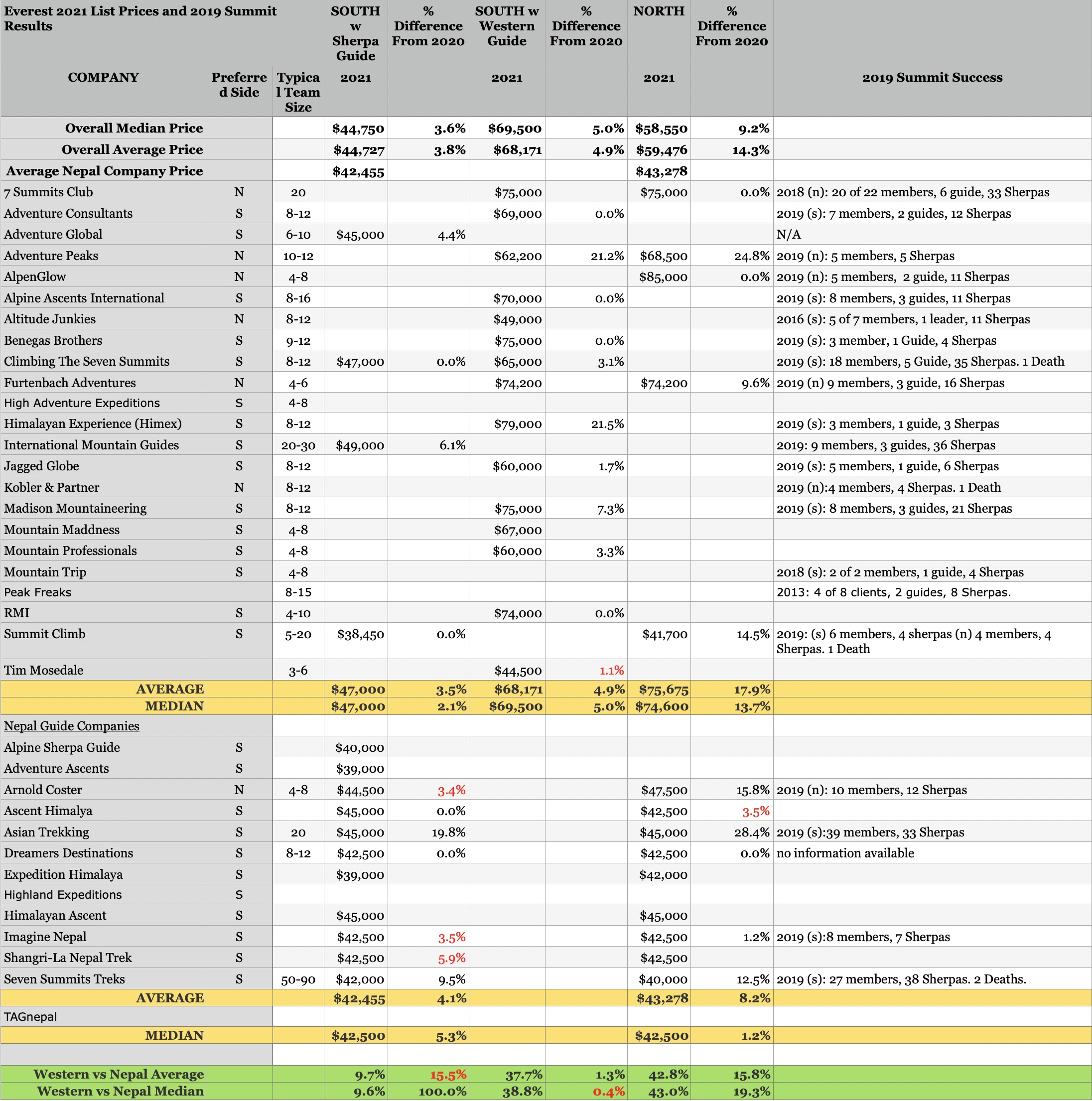
Who Guides on Everest?
Anyone can call themselves a guide in Nepal, however there are three options for supported climbs: Sherpa-supported, Sherpa-guided and a Western (foreign) guided commercial expedition. All leverage group costs such as deposits, cooks, and tents across multiple climbers. Let’s look at them in detail:
Sherpa-Supported Expedition
Please note this is Sherpa-supported— not guided—and what most Nepali-owned companies offer.
For about $42,000, you can climb on a Sherpa-supported expedition. This is about 4% higher than last year. The company organizes all the logistics—food, group gear, transportation—plus Sherpa support, but does not provide Western guides or, in some cases, even a lead Sherpa guide. The Sherpas may or may not speak English very well and will most likely follow your lead as to pushing forward or turning back once you’re on Everest.
You must be extremely careful when selecting among these options as some are excellent and others are lacking. A Sherpa will climb with you on summit night but you might be on your own with random teammates throughout the rest of the acclimatization climbing process, including preparing meals at the high camps. It is quite common to find yourself climbing only with a Sherpa or even by yourself. The Sherpas may have attended a climbing school, but will usually lack basic medical training and may not be of significant help in a health crisis other than getting you lower, which is substantial and often life-saving.
Asian Trekking specializes in this style of climb and is outstanding. Seven Summits Treks is another option at a lower cost and many small one-man Nepali companies offer even lower prices. Look to pay between $35,000 and $45,000 for this option. This is a good option for the climber with significant high-altitude experience, including previous Everest experience. It is not for the novice or first-timer on an 8,000-meter peak.
Sherpa-Guided Expedition
Please note this is Sherpa-guided , not supported.
International Mountain Guides’s (IMG) Classic Everest climb is a Sherpa-guided expedition that has an experienced Sherpa lead climber throughout the route. IMG ask $49,000 for this model. Climbing The Seven Summits offers a similar program for $47,000. Both companies have increased their prices $2,000 from their 2019 rates. Usually, they depend on a Sirdar (a highly experienced senior Sherpa) to make big decisions such as when to go for the summit or when to turn-around. Also, there is usually a Westerner overseeing the expedition in Base Camp, but not climbing.
A variation on this approach is to hire a Personal Sherpa for an additional $5,000 or even $10,000 (plus another 5% to 20% in tips and bonuses). These Sherpas have gained significant experience and training in dealing in one-to-one ratios with Western clients. Their English skills are usually very good., but—similar to a Sherpa-supported climb—they may lack medical training. Still, you will never climb alone.
While they will not carry all your gear, they may offload some items from time to time. They will be with you exclusively on your summit night even if you turn around before the summit. This style is appropriate for climbers with previous 8,000-meter experience and those who are unusually strong, but again not for the novice.
What do I get when I hire a Western Guide?
The Western-guided expeditions are “full service” trips and are most appropriate for first time Everest climbers or anyone looking for a bit more support. The cost varies widely ranging from $65,000 to $160,000. This includes all the services of a Sherpa-guided climb, plus sharing one or more western guides with other teammates. If you want your own personal Western guide, expect to pay $120,000 or more, plus tips and bonuses, which can bring the total up close to $175,000.
The major draw of this approach is you are climbing in close proximity to a Western guide who most likely has summited Everest several times. There is no language barrier and the guide will make all the decisions as to turn-around times, weather and emergency management.
On these higher-end expeditions, you will likely have a high quality of food ranging from better prepared to exotic. One service likes to promote their sushi, another their five-star chef. Then there are espresso machines, open bars—in other words, the sky’s the limit, all at a cost.
The most expensive guide companies (Adventure Consultants, AAI, Alpenglow, Furtenbach, CTSS etc) almost always come with several Western guides and you never climb alone.
Silly and Over the Top
Seven Summits Treks, which caters to the China market, has once again raised the luxury (and absurdity) level with their new “Platinum Everest Expedition 2021” for the sky-high price of $160,000. It includes:
- Private Camp facilitating: luxurious dining, communication and medical dome tent, work space, sleeping tent with king size bed, kitchen, hot shower and toilet at basecamp. Also, private camp at each high camp.
- AS350B3E airbus helicopter (Heli Everest ) will be on standby for supporting our team with supplying fresh – fruits, vegetables, meats , Mineral water for drinking and other food items all most every day, and it’s also always ready for your safety at your needs (medical evacuation ).
- One UIAGM certified Guide.
- 2-hour Helicopter Mountain view flight around the Mount Everest for filming and panoramic views of himalayan range
- Everest Summiteer Sherpa with at least 3 Everest summits (or equivalent).
- Unlimited supplementary Oxygen cylinders.
- 24-hour Personal mountain medical doctor for any injuries during the expedition.
- 24-hour satellite phone and internet facilities.
- Additional Lobuche Peak Climbing Package inclusive.
- A documentary movie of the entire trip with additional photographer from airport to the summit of Everest.
Let’s look deeper at a few questions.
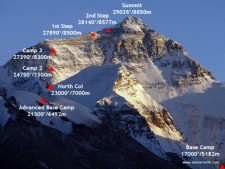
No. You can get a permit to climb any of the 30 named routes on Everest or make up your own. If you want to traverse from Nepal to Tibet or the other way, you will need to get permits from both countries however China has refused to issue permission from their side for many years now. In 2017 a climber illegally made the traverse and was deported and banned for 5 years. He claimed it was a medical emergency.
Can I climb Everest alone?
Officially, No. The Nepal Ministry of Tourism requires every climber to hire a Sherpa guide. The CMA has a similar requirement. But like everything around Everest, there are exceptions and most rules are never enforced.
What is the minimum I can spend to climb Everest?
As previously addressed, it is almost impossible to climb Everest completely alone on the standard route. However, you can climb independently with no oxygen, Sherpa or cook support but using ladders and ropes on the south side. For one person this would cost at least $25,000 from Nepal or China. Even splitting group expenses, the base costs add up to $26,000 each for a seven-person team. When you add in oxygen and base-camp support, a one-person climb with Sherpa support approaches $45,000 but a seven-person team leveraging the group costs comes in at $37,000.
Old-timers will brag about climbing Everest in the early 2000s or before for $5,000. Even then this price assumed no support, no oxygen, not contributing to the cost of the fixed ropes or ladders, no weather forecasting, etc. This post assumes most people want to climb in a relatively comfortable style and not eat rice every meal for six weeks.
What is the difference between a $30K and $65K Everest climb?
There is a real difference in offerings by some companies and very little with others, so it’s up to the climber to shop wisely.
The general rule is that the lower the price, the larger the team. At the high end, it is often profit, overhead, and the number of western guides. Also how many services are bundled into one single price versus offered as options. The lowest price outfits promote a low price and then offer “options” such as oxygen, Sherpa support or even food above base camp. One UK based outfitter offers a low price for the north side but does not include oxygen, summit bonuses or other options that almost every one includes in their base price.
Another common practice to keep expedition costs low is to pay support staff the absolute minimum whereas the guide companies pay a livable wage for their entire team. But often it is the availability of resources: extra Sherpas, back up supplies (ropes, tents, oxygen bottles, etc), medical facilities, communications and profit and overhead for the operator. One well known low-cost operator had their tents destroyed one year, had no backup and had to beg other operators for spares … they also ran out of food.
An example of price confusion is Sherpa’s bonuses. A low price service may not include a bonus whereas another may. For example, one Nepali company asks the climber to pay $1,500 to their Sherpa if they reach the South Col and another $500 if they leave for the summit. This is not shown as part of the base price. But a different company includes these bonuses in their overall package. In both cases, it is customary to tip your Sherpa, and western guide, an additional amount.
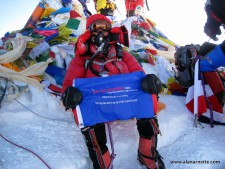
The Himalayan Database reports that through August 2020 there have been 10,271 summits (5,164 members and 5,107 hired workers) on Everest by all routes, by 5,790 different people. 1,352 people, including 941 Sherpa, have summited multiple times. There have been 772 summits by women members.
The Nepal side is more popular with 6,554 summits compared to 3631 summits from the Tibet side. 216 climbers summited without supplemental oxygen, about 2.1%. 35 climbers have traversed from one side to the other. About 62% of all expeditions put at least one member on the summit. 621 climbers have summited from both Nepal and Tibet. 119 climbers have summited more than once in a single season.
304 people (185 westerners and 119 Sherpas) have died on Everest from 1924 to August 2020, about 3.5%. 109 died on the descending from summit bid or 35% of the total deaths. 13 women have died. The Nepal side has 194 deaths or 2.9%, a rate of 1.23. The Tibet side has 109 deaths or 3%, a rate of 1.08. Most bodies are still on the mountain but China has removed many bodies from sight on their side. The top causes of death are from avalanche (77), fall (71), altitude sickness (36) and exposure (26).
In 2019 there were 878 summits, 216 from Tibet and 662 from Nepal and 3 didn’t use supplemental oxygen. There were 11 deaths.
How safe is Everest?
Everest is actually getting safer even though more people are now climbing. From 1923 to 1999: 170 people died on Everest with 1,169 summits or 14.5%. But the deaths drastically declined from 2000 to 2019 with 8,988 summits and 134 deaths or 1.5%. However, three years skewed the deaths rates with 17 in 2014, 14 in 2015 and 11 in 2019. The reduction in deaths is primarily due to better gear, weather forecasting and more people climbing with commercial operations.
Of the 8000 meter peaks, Everest has the highest absolute number of deaths at 304 but ranks near the bottom with a death rate of 1.17. Annapurna is the most deadly 8000er with one death for about every four summits (72:298) or a 3.84 death rate. Cho Oyu is the safest with 3,845 summits and 52 deaths or a death rate of 0.55.
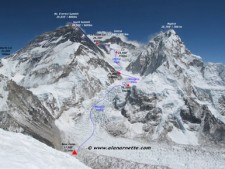
Both sides have a lot to offer: Tibet with the mystery of Mallory and Irvine in 1924 and Nepal with the first summit by Hillary and Norgay in 1953.
The comparison between sides is pretty simple. The north is colder, windier and some feel technically harder since you climb on exposed rock. The south has the Khumbu Icefall which some now fear. The Nepal side is more popular with 6,554 summits compared to 3,631 summits from the Tibet side
When choosing sides, keep in mind that as of 2021, China does not allow helicopter rescues on their side. That might change by 2022 as they are building a massive Mountaineering Center at base camp to cater to tourists and have said they will start helicopter rescues as part of the center.
One can cherry-pick the numbers to prove almost any point on which side is safe, but the bottom line is death happens on both sides of Everest and it often comes down to being in the wrong place at the wrong time.
Should I use supplemental oxygen?
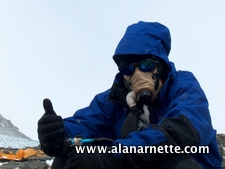
Supplemental oxygen gives the body a 3,000 foot advantage. In other words, when the climber is at 28,000 feet, the body feels like it is at 25,000 feet. The main benefit of supplemental oxygen is that you feel warmer thus allowing the heart to pump blood, and oxygen to fingers and toes thus reducing the risk of frostbite.
While climbing without Os is a serious accomplishment, it is not for everyone. Many try and few succeed.
How do I pay for an Everest climb?
Getting the money is almost always harder than climbing Everest. Climbers become very creative when finding the money. Some take out loans, refinance their home mortgage, others have the infamous “rich uncle”. Then there are those who set up a website to sell t-shirts or ask for “donations” from strangers. Believe it or not, this actually works to raise some money but rarely enough to cover all the expenses.
But the most common way to fund an Everest climb is to make it a priority in your budget by setting money aside each month for as long as it takes. This is how I funded 26 of my big climbs since starting at age 38.
The question of obtaining a sponsor often comes up. It is extremely difficult to get on a sponsored team for example by one of the large outdoor gear companies. There are ways to obtain a sponsor but it takes years of work, a solid plan, proven experience and often comes down to who you know and a lot of luck.
Climbing for a charity or a cause is popular but be careful not to use your cause as a way to fund a climb. This is a poor practice to ask for donations to pay for a climb in my opinion.
You can read more about my own experiences with The 7 Summits Climb for Alzheimer’s: Memories are Everything and thoughts for sponsorship at this link .
What are my chances?
Historically about 68% of all expeditions have put at least one member on the summit. The Himalayan Database shows that 45% of members who go higher than base camp go on to summit.
In recent years, long-time western operators like Jagged Globe, Adventure Consultants, Furtenbach, Madison Mountaineering, and others regularly put almost every member on the summit.
Today operators use the standard routes so there are fewer unknowns. That along with improved weather forecasting, and extra supplemental oxygen and generous Sherpa support have made Everest one of the safest 8000 meter mountains and the most summited 8000er by a huge margin.
Why Everest?
Let’s wrap up with why even climb Everest at all? It is very popular to criticize anyone who has or is planning a climb. Jon Krakauer’s book Into Thin Air set a negative tone and profiled climbers as rich, inexperienced and selfish after his one climb in 1996. In my experience with six climbs on Everest or Lhotse, the opposite is today’s reality.
To be fair, in recent years, the marketing of low-cost expeditions is attracting inexperienced climbers. This is all about supply and demand. All the puffery from the Nepal government about making Everest safer will have zero impact on this because of all involved benefit from the profit.
If you want to attempt the world’s highest peak, do the work: get the proper experience , train your body to be in “ Everest Shape ” and prepare your mind to push yourself harder than you ever thought possible. Select a team that matches your experience, be smart, be humble and savor every moment.
- Our directors
- Safety & Security
- Environmental Policy
- Nimsdai Purja MBE
- Mingma David Sherpa
- Mingma Tenzi Sherpa

- Combo Packages
- 8000m peaks
- Seven Summits
- 6000m peaks
- Everest Fast-Track
Everest / Lhotse
- Everest Three Pass Trek
- Everest Base Camp
- K2 / Broad Peak
- Kanchenjunga
- Nanga Parbat
- Shishapangma
- Mount Elbrus
- Kilimanjaro
- Carstensz Pyramid
- Vinson Massiff
- Island Peak
- Lobuche East Peak
- Ama Dablam Peak
- Bespoke Training Program
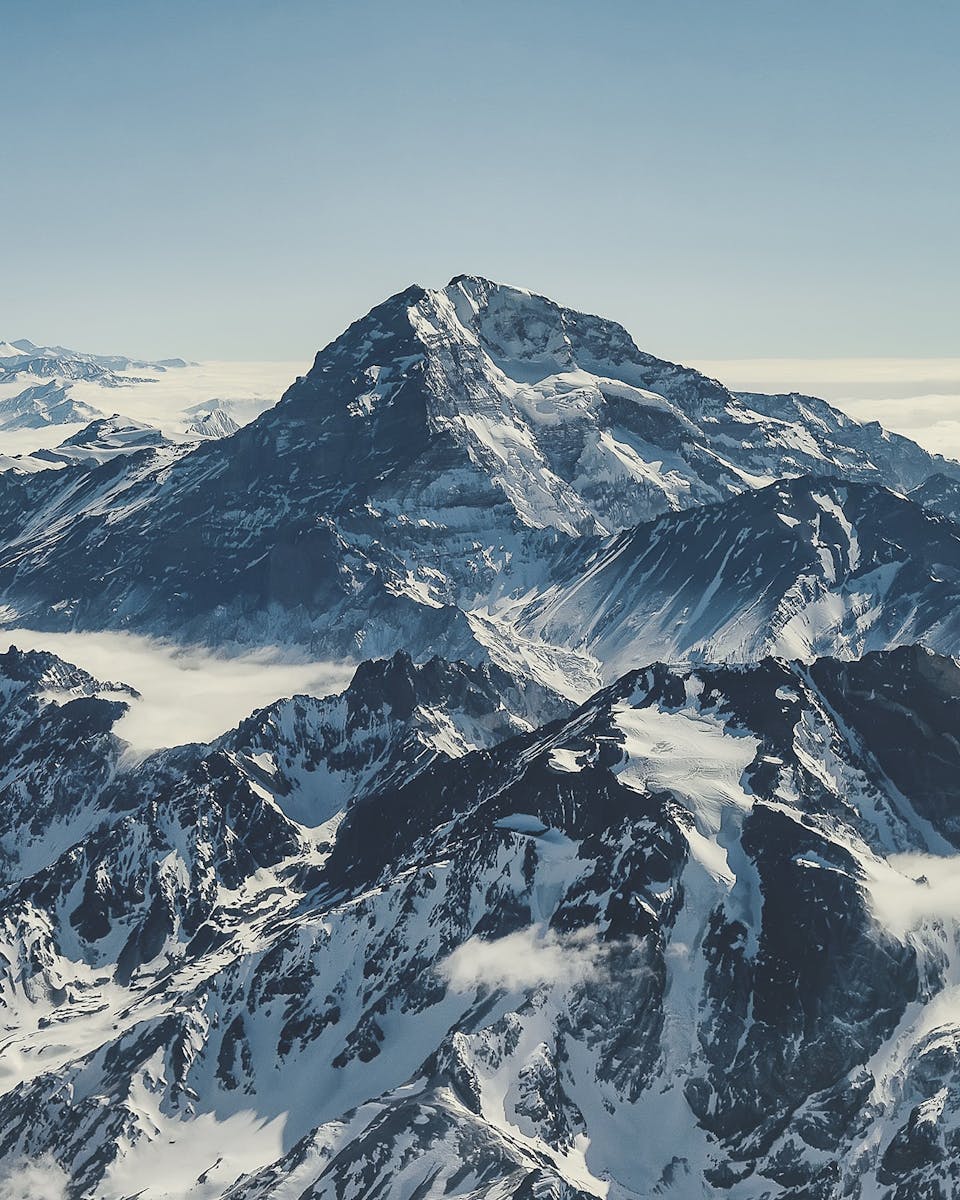
- Annapurna Base Camp
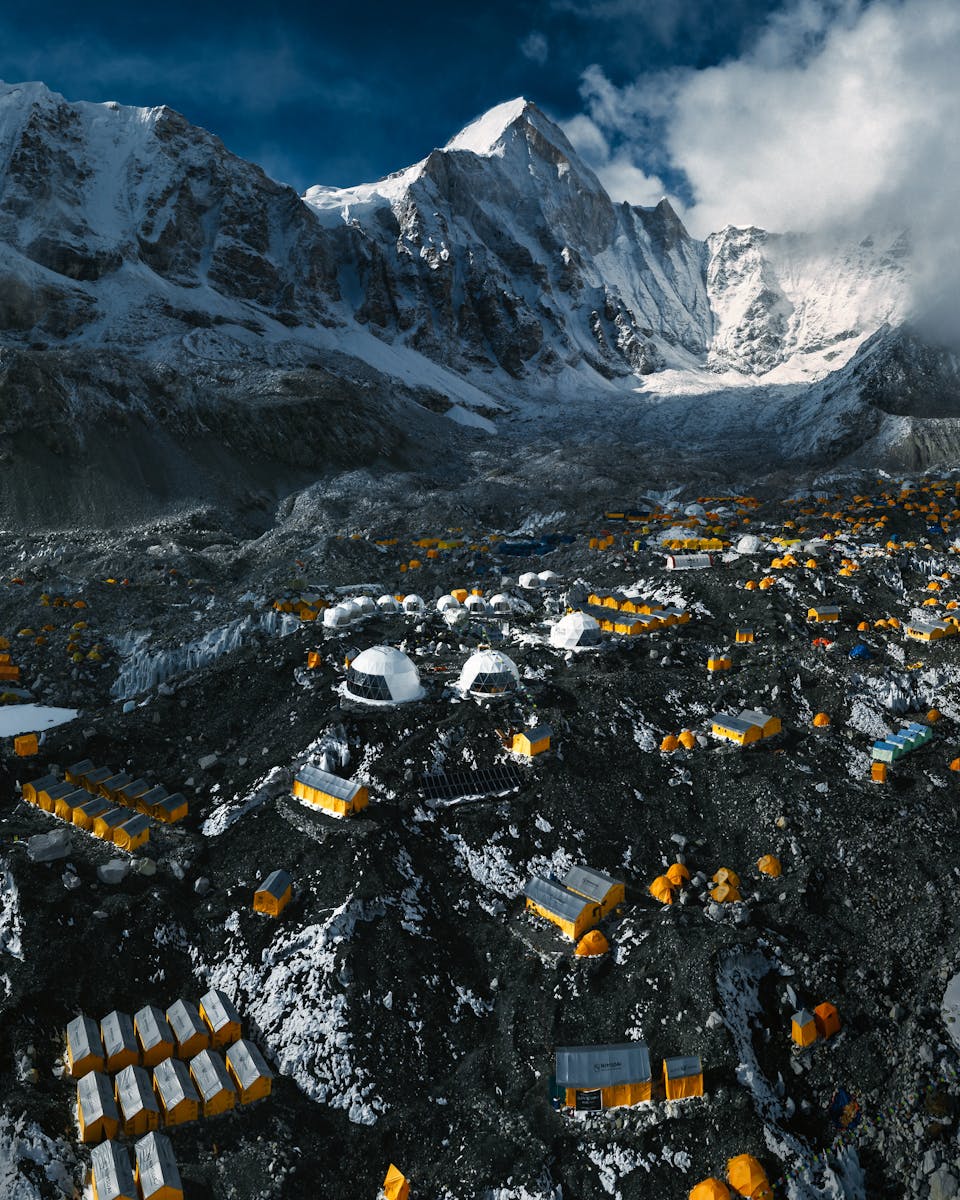
- Mountaineering Training
- The Altitude Centre
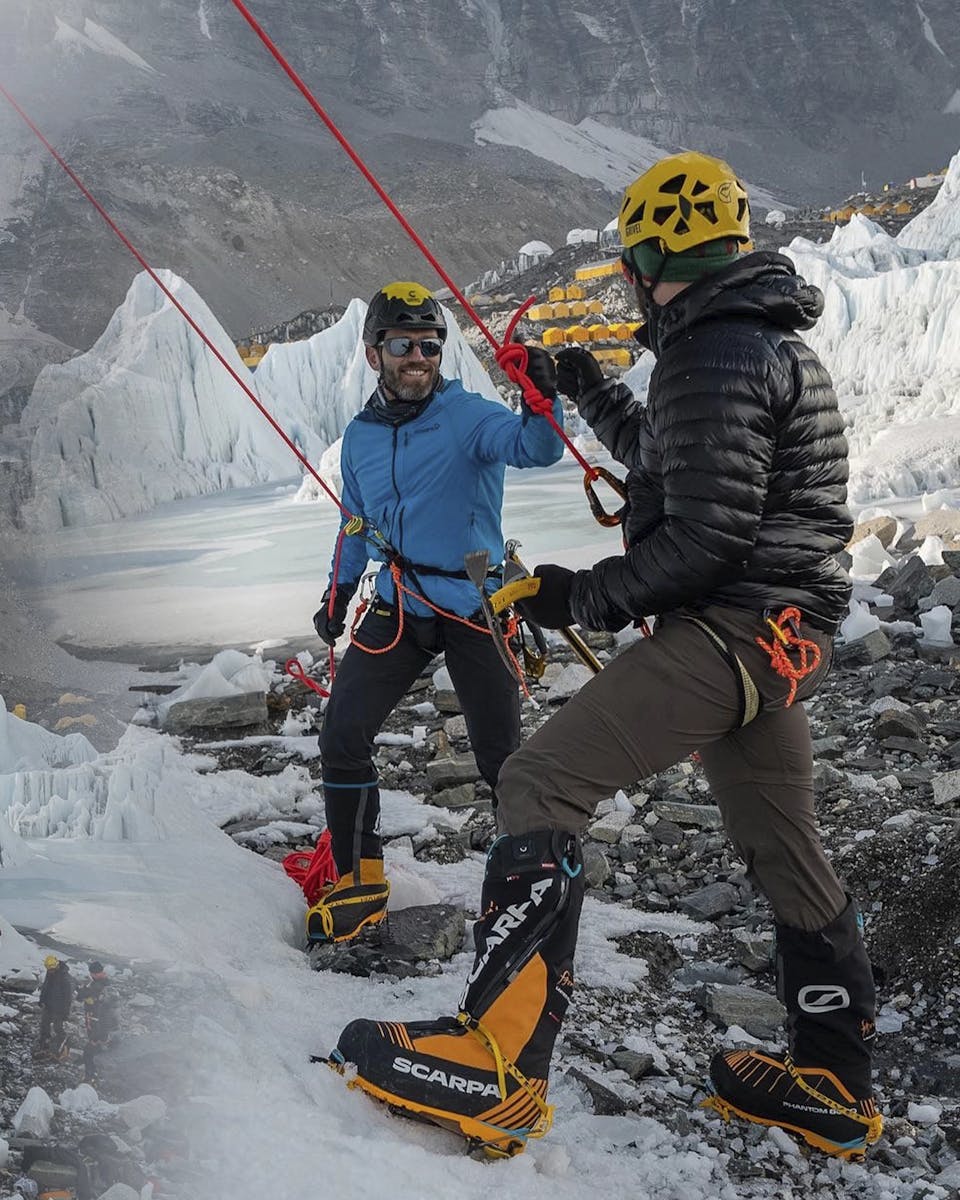
- General Enquiry
- Exped Enquiry
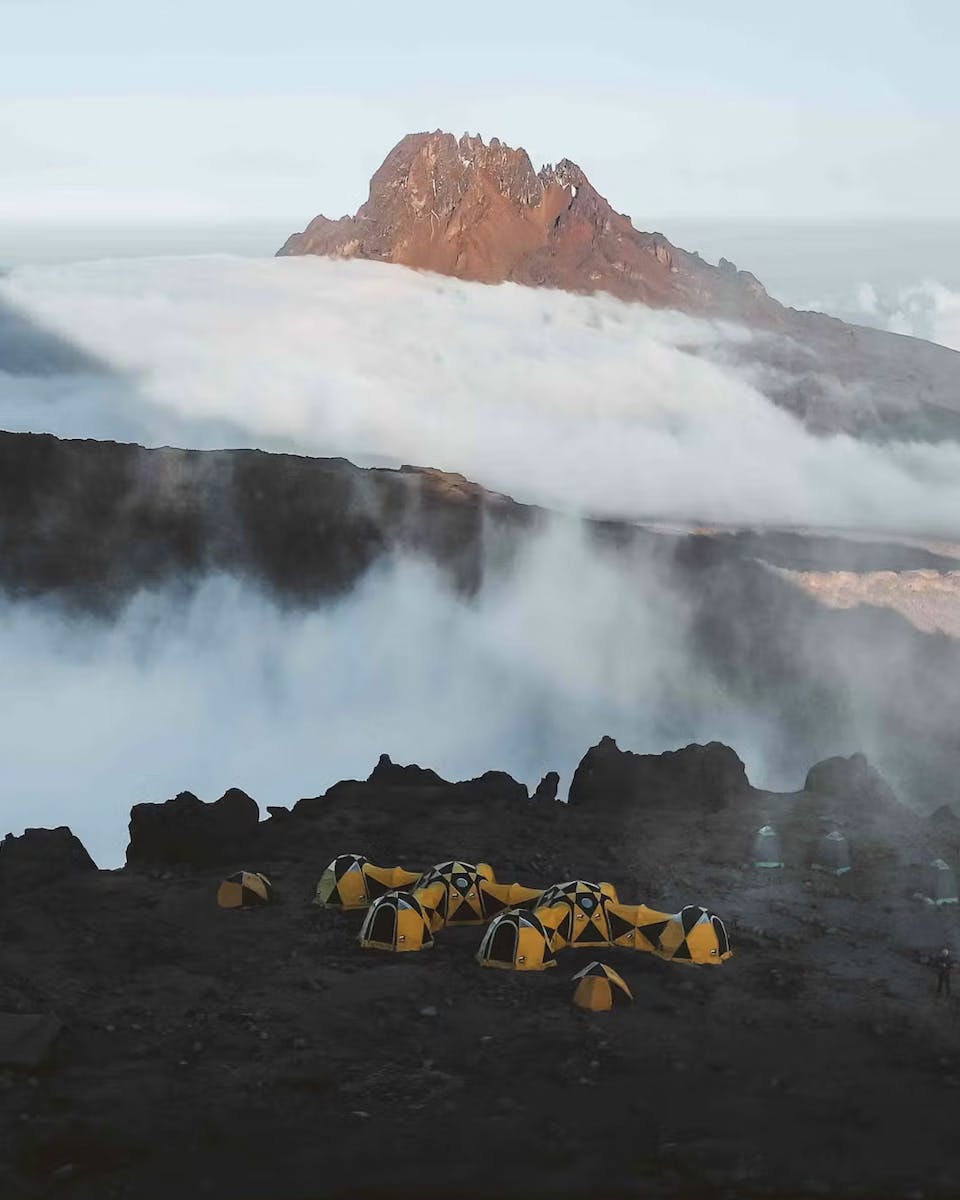
Prepare to stand on top of the world.
Everest Expedition
Mount Everest, known to locals as Sagarmatha, is undoubtedly on the bucket list of every climber. Who wouldn't want to conquer the highest mountain on the planet? Reaching the top of the world, exactly 8,848.86m above sea-level, is no easy task, but Elite Exped’s expert team will be with you every step of the way - guiding you from the moment you sign up, all the way to the summit and back.
- Practical Info
Strenuous 4E
Max Altitude
8848.86 m 290032 ft
Daily activity
Approx 4-7 hours
Spring & Summer
Dates Available
04 Apr - 31 May
Starting from
USD $45,000
Aimed at climbers who’ve made multiple ascents of 6,000m and 7,000m peaks, as well as one 8,000er, and are already proficient in mountaineering skills - including moving safely in moderate rock, glacier, and snowy terrain.
Download Exped Details
The ultimate mountaineering adventure
Elite Exped’s experience on the world’s highest mountain is unparalleled. Our leaders Nimsdai and Mingma David have set multiple world records on its slopes, including breaking a speed record for climbing Everest and Lhotse back to back in 2017. Our industry leading expertise isn’t just based on climbing fast however - it’s been accumulated over long years of guiding on Everest in all conditions. Our handpicked team of guides have chalked up dozens of successful summits between them.
They also have years of experience fixing ropes on the route, as well as working as Icefall Doctors - arguably the most difficult job of all, establishing and maintaining routes through the ever-changing Khumbu Icefal.
Elite Exped offers a tailored Everest expedition based on Mingma David and Nims’ own, hyper-efficient expedition plans - the ones that enabled them to break those speed records. We tackle Everest from the south - the safer side of the mountain, with higher success rates. The 55-day package is designed with plenty of rest days and time for acclimatization built-in, as well as a lengthy, 42-day period for climbing the mountain itself.
We oversee every step of our own logistical operations. Rather than relying on others, we control everything that can be controlled to ensure that we meet the very highest safety standards. Our founders’ Nepalese heritage and ability to bridge the gap between Western and Himalayan climbing cultures allows us to run every aspect of our operation smoothly, without fear of misunderstandings. The success of our approach is evident in our founder Nimsdai’s own achievements, including his 100 percent success rate on 8,000m climbs.
As well as being highly-skilled mountaineers, our guides have extensive experience of conducting high-altitude rescue operations. We have evacuation plans and accessible helicopter rescue in place for emergencies. No-one can cater for every eventuality in the world’s most extreme environments, but we can guarantee that you will be in the safest possible hands should something unexpected happen.
We don’t see our clients as clients - we see them as friends and fellow high-achievers. People who, like us, have made chasing their dreams a priority. We know why you climb, because we feel the same way. That means we’ll make sure no stone is left unturned in our quest to help you achieve those dreams. We know how it feels to stand on top of the world. It’s our dream to be able to share that with you.
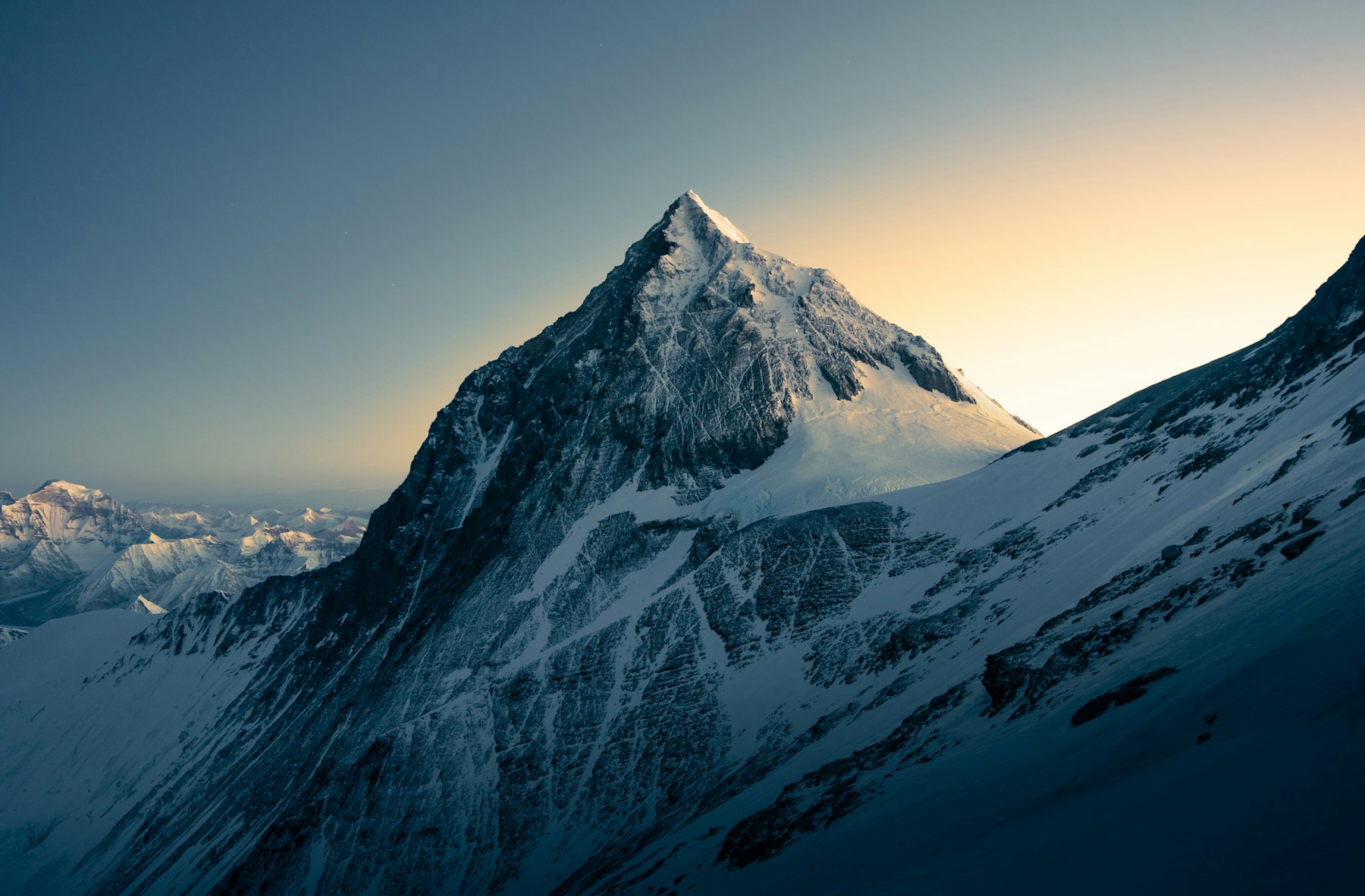
Everest, in the background towering above the infamous Khumbu Icefall and Glacier
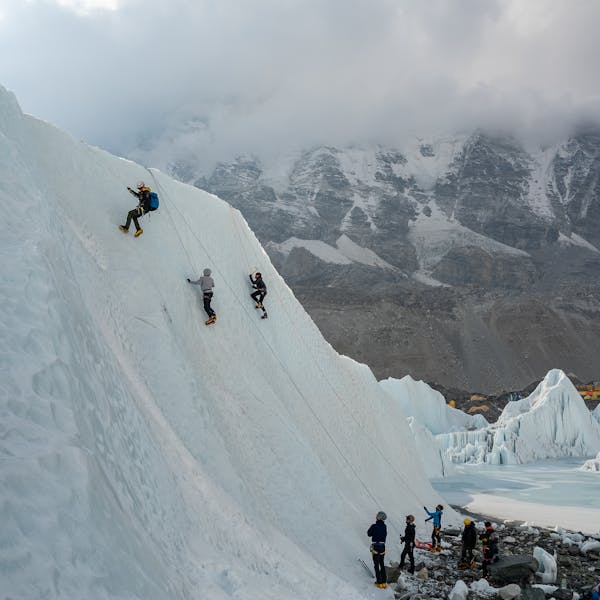
Climbers ascending Everest’s South Summit Ridge
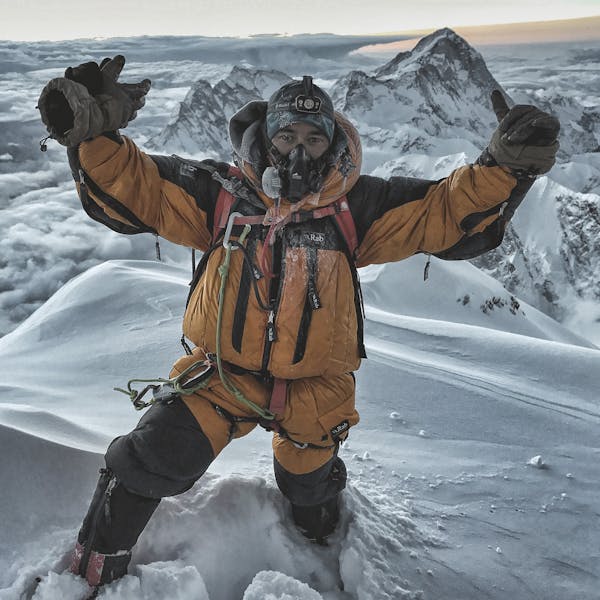
2017 when leading the fixing team on Everest. Pictured at the balcony with the view of Makalu
Failure is NOT an option with Nims and the team. He taught me that giving up is NOT an option. All his team were going to the summit. 100% success. This is the Elite way.
From start to finish I have felt like part of a family, Elite takes care of their clients and provides the highest quality mountaineering experience you can get.
I can’t wait to be back climbing with Elite Exped and visiting my new family again!!
We could not have been in safer hands. Everything was conducted to the highest standard. I had complete confidence in the safety system on the mountain at all times.
This is such a huge thing to commend Elite on - and also a key reason we all reached the summit and returned safely.
- Exped Itinerary
- What's Included
This tried and tested itinerary is informed by decades of mountaineering experience. As with all adventurous activities of this type however, circumstances may arise where Elite Exped is forced to make alterations, possibly at short notice. While making every effort to adhere to this published schedule, we kindly ask for your patience if the weather, or other naturally occurring circumstances, intervene.
Your daily schedule
Arrival in Kathmandu & transfer to the hotel
Welcome brief, Gear check and Official formalities in Kathmandu
Fly to Lukla & trek to Phakding (Overnight stay at Phakding)
Trek to Namche Bazaar and spent the night there.
Rest in Namche Bazaar. We may go for hike to Everest point of view/ Acclimatization.
Trek to Debuche via Tengboche Monastery
Trek to Dingboche
Acclimatize day in Dingbouche, Short hike to Nagarjun Hill
Trek to Lobuche
Trek to Everest base camp
Everest climbing Period
Clearing up base camp
Trek back to Pheriche
Trek back to Namche
Trek back to Lukla
Back to Kathmandu & transfer to the hotel/dinner
Free day in Kathmandu
Depart to the home country
At Elite Exped, we extensively vet our hotel, travel and accommodation partners, and operate using the very best mountaineering equipment available, to ensure the highest standards of safety possible. The following is included in your booking. For full details on services please see exped details overview.
- Arrival & Departure: Pick and drop facility-Airport/Hotel/Airport
- Accommodation: 4 nights stay at a deluxe hotel in Kathmandu on Bed & Breakfast Basis-Double Room
- Welcome dinner: One Welcome Dinner in tourist standard restaurant in Kathmandu with Office’s Staffs
- Domestic Transportation: Kathmandu-Lukla-Kathmandu by flight inclusive of domestic Airport Tax
- Transportation: Required Transportation from Kathmandu/Base Camp/Kathmandu for all Staffs and Members
- Permits & Fees: Everest Expedition Permit +Summit Route Permit Ice Fall Route, National park & TIMS permit fees
- Food & Lodging: 3 meals a day in Trekking & at Basecamp for Members & Staffs
- Porters: Porters up to & back from BC
- Staff Remunerations and allowances: All Nepalese staffs' & porters' daily wages/equipment/food/clothing with personal insurances
- Insurance: All Staff's Medical & Emergency rescue Insurance
- Warm Farewell Dinner at a standard restaurant in Kathmandu with Nepalese Staff
- Oxygen for Everest: O2 cylinder: 5 oxygen (O2) cylinders for each Member and 3 oxygen bottles for each High- altitude Sherpa. Extra oxygen will be stored at Basecamp for emergencies
- Mask & Regulator: 1 Set of top Out mask for each member and high-altitude Sherpa
- High Altitude Climbing Sherpa: 1 Climbing Sherpa per member
- International airfare to and from Kathmandu.
- Nepalese Visa charges
- Extra night in Kathmandu: Extra night accommodation in Kathmandu. In case of early arrival or late departure, early return from the expedition (due to any reason) than the scheduled itinerary.
- Insurance: Travel and High Altitude Insurance / Accident / Medical / emergency evacuation
- Sherpa summit Bonus: Mandatory – Minimum USD 1,500
- Tips: Please calculate some tips for Basecamp staffs and porters
- The full set of Member's personal climbing equipment & clothing
- Rescue Evacuation: Emergency rescue evacuation cost, if needed and all other expenses of personal nature
- Any other item not listed in the "Price Includes" section
Build your skills
Our tailored approach to training will help you improve as a climber, developing the mental and physical skills you need to achieve your dreams. Learn more
Get the full Nimsdai Experience.
Nimsdai oversees all our expeditions and operations. But you can also guarantee that he’ll be your personal, 1:1 guide on the mountain. Visit Nimsdai.com for more information and achieve your new possible.
Practical info
- Requirements
- Cancellation
Frequently asked questions
The following frequently asked questions may help answer any queries you have about Elite Exped, what this expedition involves, and what is required. If your question isn’t answered here please check our dedicated FAQ support page , otherwise don’t hesitate to get in touch .
All Elite Exped expeditions are within extreme high altitude environments, with differing requirements for ability. Due to the nature of these operational landscapes, it is essential you provide concise, honest descriptions of relevant experience and current fitness levels. Upon receipt, we will review your experience and respond accordingly. At this point, if we consider there to be any shortfalls, we can collectively discuss the opportunities and/or provide a training support plan to achieve your goals.
All communal equipment is included ie. high quality ropes, stoves, tents etc. You are responsible for personal gear and clothing, eg. harness, crampons, helmet, ice axes etc. A full essentials list and advice (if required) will be provided at time of booking.
Nimsdai and Mingma David will overall lead many of our expeditions, but to have them as your personal guide you will need to enquire with our team and their availability.
We will cover all transport costs detailed within an expedition program as forementioned on our provided itinerary. This will exclude international flights to and from the destination countries. It is your responsibility to ensure these align with the start and finish of the expedition.
Our team has three different packages for this Expedition: Nimsdai Group, Director Group and Elite standard package. Please contact out team to understand more about these pacakges.
There’s no doubt that an attempt of Mount Everest is a significant endeavor for anyone, but with our expert guidance, achieving this goal may be closer than you think. We would expect anyone joining our Everest expedition to have summitted multiple 6,000m and 7,000m peaks, as well as one other 8,000m peak.
We’ll look at your previous experience, and analyze key performance data, that we’ll ask you to share when you sign up. We can then recommend preliminary climbs in the years and months leading up to this expedition, to give you the best possible chance of reaching your goal, if required.
The adventurous activities undertaken by Elite Exped will require the purchase of specialist equipment. We will provide a full kit list for this expedition during booking, or you can access it now by downloading the exped details overview
You may pay your deposit and balance using any lawful means. If sending money by electronic bank transfer then you will be responsible for covering the cost of the fees associated with the transfer, so that the company receives the full amount shown on your invoice, in the denomination shown on your invoice.
There are no refunds for the deposit or balance payments for this expedition. This includes but is not limited to, expeditions that conclude without reaching or making progress towards expedition objective(s) (for example, the summit) due to route conditions, weather, insufficient manpower, or any other factor outside the control of Elite Exped.
The expedition leader has the final say on the expedition conclusion and will make all best efforts towards reaching expedition objective(s) within our margin of safety.
Participants that choose to leave an active expedition for any reason are not entitled to any refunds. Elite Exped highly recommends trip cancellation insurance for all expeditions. Due to the nature and heavy costs of government and operator permits, Elite Exped must adhere to a stringent refund policy deposit due with registration materials: All balances are due 120 days prior to departure date unless otherwise specified. Participants whose balances are not received by the 120-day deadline as stated above, risk forfeiture of their funds and their place on the expedition
All Elite Exped clients require appropriate insurance for their chosen expedition. Please ensure your policy covers helicopter and medical rescue and repatriation costs.
Elite Exped’s has a long-standing operational partnership with Global Rescue , the world’s leading membership organisation providing medical security, travel risk and crisis response services to travellers worldwide. Because of our history of operating side-by-side with Global Rescue, we recommend our clients register with them by preference.
Our close working relationship helps smooth the process of any potential rescue, saving valuable time that can affect the outcome. Memberships start at US$119, and without a Global Rescue membership, an emergency evacuation could cost you more than US$100,000.
Why choose Elite Exped?
Unparalleled leadership.
Nimsdai Purja and Mingma David Sherpa’s mountaineering world records speak for themselves, but our founders are more than just supremely-talented climbers. While some choose to direct operations from a back office, Nimsdai and Mingma David lead from the front. Their experience of every aspect of guiding and climbing - from fixing ropes, to organising logistics - is unparalleled. It’s no surprise that when they’ve worked together they have a perfect, 100 percent success rate when it comes to summiting 8,000m peaks.
Safety through self-sufficiency
If it’s controllable we control it, this is key to attain and maintain our industry leading strategy for success and safety. We maximise our options, agility and responsiveness by running totally self-sufficient expeditions, not relying on any other teams on the mountain to achieve our objectives. We are capable of setting up our own fixed lines (with a proven track record on all 8,000m peaks) and have backups to cover all scenarios, from secondary oxygen supplies through to the ability and experience to operate our own rescue missions if the situation arises.
A unique perspective
With his Nepalese roots, and UK residency, our co-founder Nimsdai Purja brings a unique perspective of the world of mountaineering, and an unparalleled ability to bridge the gap between Western and Himalayan climbing cultures. We can assemble trusted teams and networks anywhere in the world, but our founders’ roots are a particular advantage when it comes to summiting the world’s very highest peaks. An intimate knowledge of how things work on the ground ensures that everything runs smoothly when you’re 8,000m above sea-level.
Related expeditions
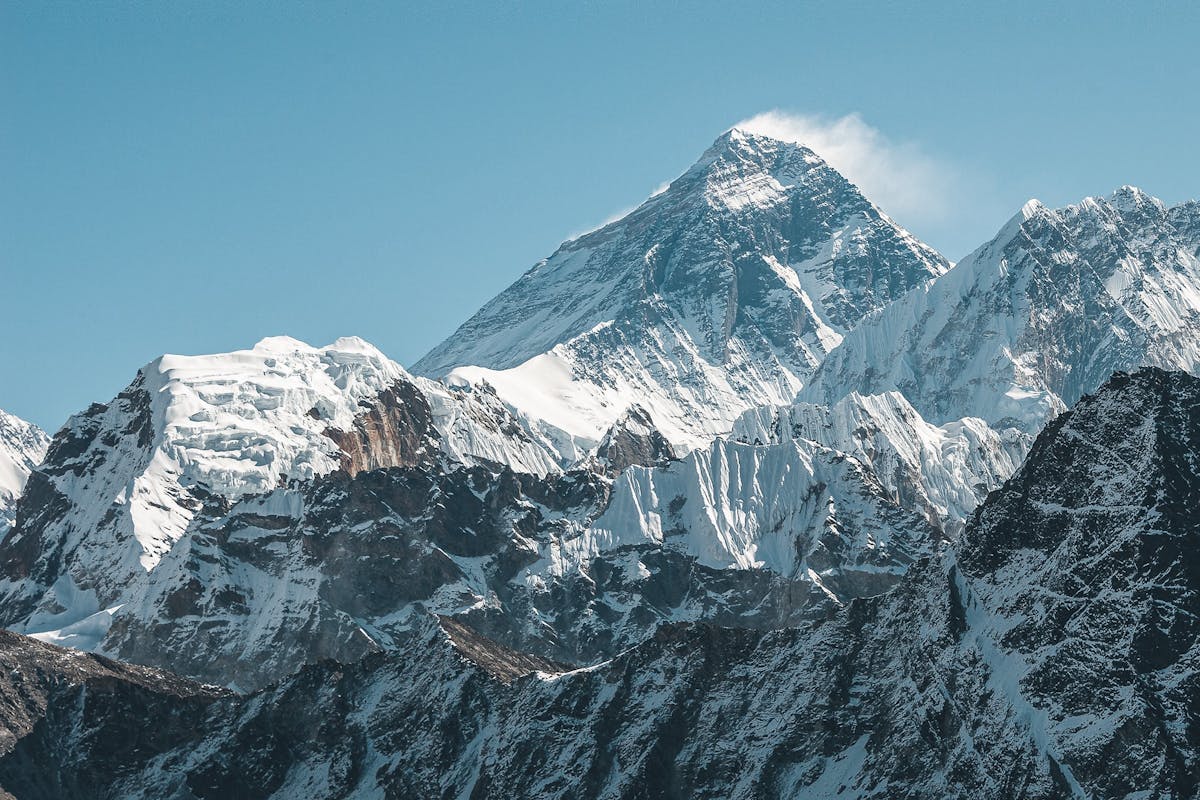
Mount Everest is undoubtedly on the bucket list of every climber. Who wouldn't want to conquer the highest mountain on the planet? But the most dedicated and skilled mountaineers won’t want to stop there, of course, which is where Elite Exped’s combo packages come in. This expedition offers you the chance to bag two 8,000m summits - the first and fourth-highest mountains in the world - in a single climbing season. For high achievers, goals don’t come much greater than this.
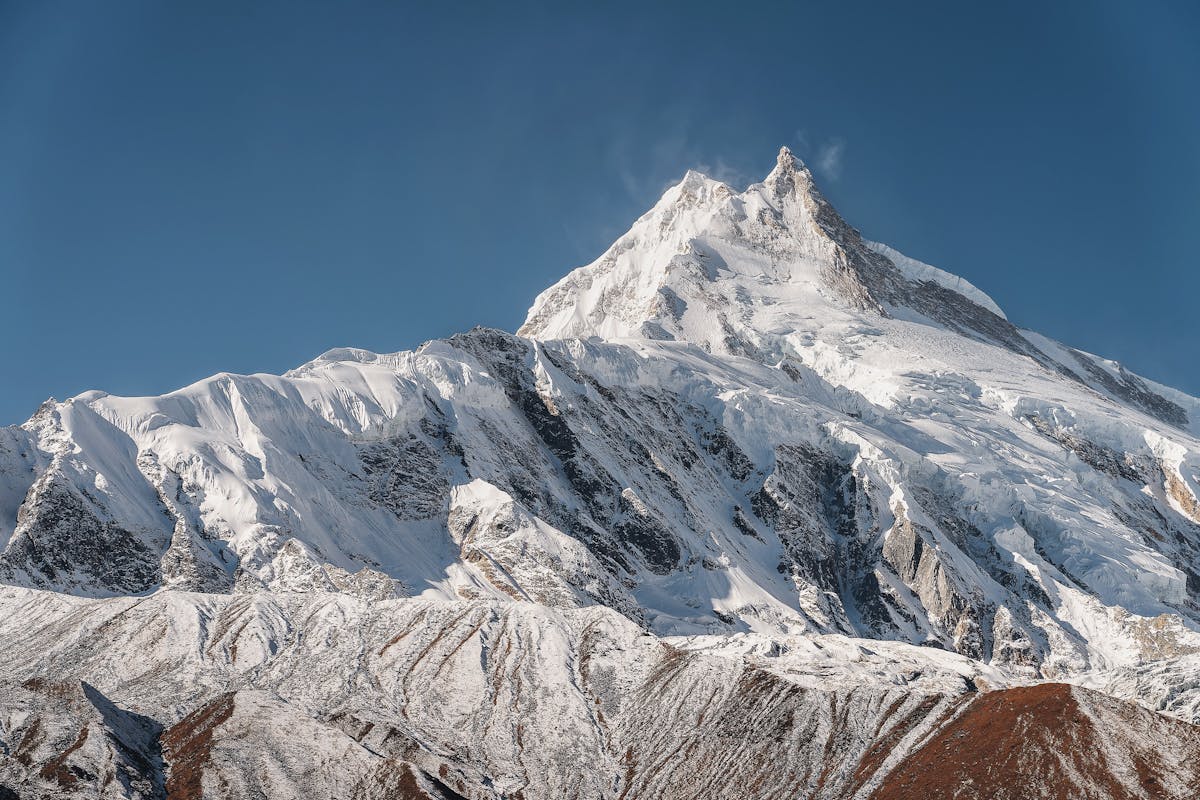
Characterized by its sharp, picturesque peak, Manaslu dominates the Mansiri-Himal subrange of the Himalayas. First summited by a Japanese team in 1956, the world’s eighth-highest mountain has a long association with Japanese climbers, but among Europeans remains one of the less well-known peaks. Reaching the summit at 8,163m is a serious undertaking, but one that Elite Exped is ideally equipped to help you achieve.
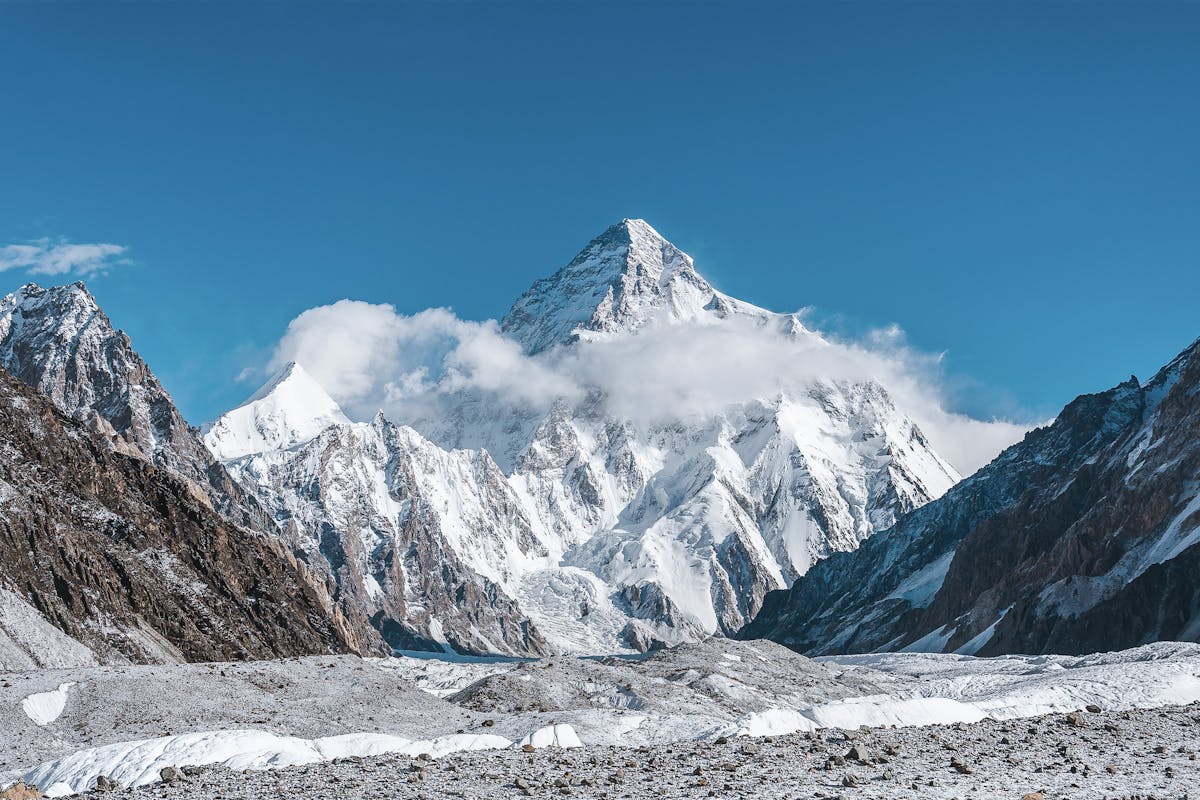
K2 isn’t nicknamed “the savage mountain” for nothing. The world’s second-highest peak is arguably the toughest challenge in mountaineering, with one of the worst fatality rates of all the 8,000ers. For a long time, it was considered unconquerable, because of its great height, almost unbroken slopes of rock and ice, and precipitous overhangs. Despite multiple attempts, no-one had climbed it in winter until January 2021, when our Founder Nimsdai & Directors Mingma David and Mingma Tenzi stood on its majestic, 8,611m-high peak.
Elite Exped will be with you every step of the way, from the moment you land in Kathmandu, to the moment you stand on top of the world.
Mount Everest Ascent
The roof of the world
Join our guides as we climb to the summit of Mount Everest and gain the mountaineer’s ultimate expedition prize — an ascent to the top of the world. The expedition to Everest is an unparalleled journey of both legendary and epic proportion. With our full service approach to climbing Mount Everest you experience the highest chance for success — you need only gain the experience required and bring your determination.
The preparation itself for the climb of Mount Everest may include expeditions to Aconcagua , Nun , Vinson and other adventures that are worthy on their own. The commitment, training, focus and preparation climbs make this one of the world’s most incredible and rewarding lifetime journeys.
Isn’t it obvious? But, ok; Mountain Madness climber Julio B. summed it up nicely, “ Watching the sunrise from the Balcony was the realization of a dream. The Tibetan highlands yawned to my left, Nepal on my right, and the Earth’s curvature visible on the horizon.” After climbing Mount Everest, once you’re standing on top of the world, the hard work, pain and suffering, and the nagging question of why am I doing this? , all seem to dissolve into the ether.
Description
Since the late 19 th century, adventurous spirits have been fascinated with the ascent of the highest mountain in the world. Mt. Everest rises to an imposing 29,029 feet / 8848 meters, and after 29 years of numerous attempts, Sir Edmund Hillary and Sherpa Tenzing Norgay became the first people to stand on the elusive summit on May 29, 1953. These courageous climbers ascended through to the South Col from the Khumbu Glacier, and continued their ascent to the summit via the Southeast Ridge. Their route is now referred to as the Normal Route and is the route ascended by Mountain Madness.
Our team will use classic expedition methods to gain the summit. We will start the acclimatization process with the trek to base camp. We will provide each member their own private tent at base camp. After a short rest, we will make the brief trek over to the base of Lobuche Peak for an acclimatization summit climb to 20,075 feet/6,119 meters. Once on Everest three-person, four season tents will be used. Two to three people will sleep in each tent at higher camps. A pyramid of camps will be established by the guides and Sherpas who will fix ropes, stock camps and provide leadership and support for the climb. This will enable you to carry lighter loads, thus saving your strength for the summit bid. Oxygen will be provided for all team members and is traditionally used above Camp III. With tremendous leadership, our strong team of high altitude Sherpas, and the finest equipment and services, you will have an outstanding shot at reaching the summit of the highest mountain on the planet.
Want to climb Mt. Everest without going to the summit? Check out our Khumbu Icefall Climb to 21,000 feet or our Everest Base Camp Trek to experience what all the buzz is about.
Mountain madness strategy.
Mountain Madness has been running successful expeditions to Everest since 1994 with more than 40 team members making it to the top of the highest point on earth. Our focus is on individual attention to our team members and this is accomplished by keeping our groups small, with average group size about 3 – 6 members. We are committed to providing you with the best quality service and experience to help you reach your goal.
Current Mount Everest Expeditions
Mountain Madness tends to run expeditions every other year or based on demand. For some team members the planning starts years before the climb and this allows us to organize according to individual’s schedule and what additional training they may need before embarking on this expedition.
The Climbing Strategy for Everest
Because it’s critical to acclimatize properly to maintain health and fitness and avoid altitude problems , Mountain Madness begins the slow acclimatization process with a leisurely 9‑day trek to base camp. Once at base camp a pyramid of camps is established. Our experienced guides and Sherpas will fix ropes, stock camps and provide leadership and support for the climb. This enables you to carry lighter loads and save your strength for the summit bid. Oxygen will be used for all team members above Camp 3.
The highest camp in the acclimatization process is Camp 4 at nearly 8000 meters, and from there we will begin our summit attempt. Team members leave for the summit late evening to allow adequate time to reach the summit by mid-morning. Mountain Madness equipment, service, and support are of the highest quality, providing you with an outstanding chance of reaching the top of the highest mountain on the planet.
All Mountain Madness lead guides on Mount Everest have made successful ascents on the mountain. In addition to having summited Everest, our lead guides have extensive past high-altitude guiding experience that will contribute to your chances of success. Our client to guide ratio is 4:1 for the lead Western guide, with a 1:1 client to Sherpa guide ratio. Our Sherpa Team is one of the best teams of high altitude climbing support on the mountain. Our Nepal staff has worked with us for many years to ensure quality and dependable performance. Many of our Sherpa staff also have multiple ascents of Mt. Everest.
Qualifications
Climbing to the roof of the world is a serious undertaking for any mountaineer. We require that you have proven high altitude experience, technical proficiency, and the physical fitness to handle the rigors of the ascent. You should be familiar with extreme cold, extended hypoxic conditions, tent living, exposure to steep terrain, and more.
Climbing Mount Everest: Do You Need Training?
Yes, all climbers are required to have past high-altitude mountaineering experience . In addition, members should be able to ascend and descend fixed lines independently and be proficient with cramponing on steep ice/snow slopes.
An example of sufficient training & experience would include a combination of the following in a logical progression:
- Technical training in the Washington Cascades or international course. Examples: Alpine Ice Course , Ouray Ice Courses , Ecuador Mountaineering Course , or Bolivia Mountaineering Course
- Ascents of 6,000 meter peaks in South America or Asia. Examples: Ecuador Volcanoes , Aconcagua , Chopikalki , Bolivia’s Cordillera Real , Island Peak , or Ama Dablam
- Denali or Vinson and/or a 7000 – 8000 meter peak such as Pik Lenin , Nun Peak , or Cho Oyu .
Mount Everest
Mental Fitness: On Everest, your attitude and mental toughness will dictate whether your reach the summit as much as your physical fitness. Mountain Madness will do its part to prepare the way, but when the time comes to push for the summit, your mental strength will decide whether or not you make it. Arriving on the mountain as mentally and physically prepared as possible will certainly increase your chances of summiting.
Exercise: Proper conditioning is critical to your success on Everest. Obviously, good physical conditioning is essential to be successful at high altitude. Your training regimen should include intense cardiovascular workouts as well as overall strength building. Your aim should be to gain muscle mass and endurance. Long distance running, mountain biking, and cross country skiing are several sports which will help you get in shape. Get your heart rate up and keep it there for long stretches. Your workout schedule should include four to five days of cardiovascular training 1 to 2 hours minimum per workout. Being able to hike or climb stairs with a 50 lb/23 kg pack with 3,000 feet/909 meters elevation gain at least two days a week is imperative. Heading into the climb as prepared as possible will help give you the edge to go for the top. Hit the weights for upper body conditioning. Imagine the strain of jugging (ascending) fixed lines at 25,000 feet/8,250 meters on the Lhotse Face, or climbing the Hillary Step at 28,000 feet/8,485 meters, then head for the gym! Our climb is pre-monsoon, and the Lhotse Face will be icy, so get those calves in shape for front pointing!
Reading list
EVEREST/CLIMBING
Everest: The West Ridge Hornbein, Tom 1989. 181 pp, color photos. The first American ascent of Everest, and traverse of the summit via the West Ridge.
High Adventure Hillary, Edmund 1955, 1 st UK or American edition. 224 pp, 22 ill. Hillary’s principal book on his Everest climb. Includes the 1951 Reconnaissance Expedition, the Cho Oyu attempt, and his Everest success.
Kathmandu to Mount Everest Uchida, Ryohei 1991. 128 pp, 180 color photos. A complete description of the entire Khumbu region of Nepal, with lavish photographic coverage. Practical information on travel and trekking.
Seven Summits Bass, Dick; Wells, Frank and Ridgeway, Rick 1986. 336 pp, color photos. Bass was the first person to climb the seven continental summits. This book started the modern quest to climb continental, national and state high points.
The Crystal Horizon Messner, Reinhold 1998. 322 pp, color photos. Messner’s remarkable solo ascent of Everest without oxygen has captured the imagination of the climbing world like no other single event since the first ascent in 1953. This is his record of the mental, emotional and physical efforts to succeed beyond the limits of human endurance.
Climbing Mt. Everest: A Bibliography Salkeld and J. Boyle 1993. A bibliography of every book or magazine article ever written on Mt. Everest. Includes a chronology of climbs.
Trekking in Nepal: A Traveler’s Guide Bezruchka, Steven Mountaineers, Seattle, Washington; sixth edition, 1991.
Insight Guide to Nepal Hoefer, H.J. et al A.P.A. Productions, 1983 (Highly Recommended). 30
Insight Guide to Nepal Raj, Prakash
Lonely Planet, South Yarra, Vic. Australia.
Many People Come, Looking, Looking Rowell, Galen The Mountaineers, 1980.
HISTORICAL
An Account of the Kingdom of Nepal, and of the Territories Annexed to This Dominion by House of Gurkha Hamilton, Francis Archibold Constable and Co. Edinburgh, 1819.
History of Nepal Wright, Daniel, editor; Vamsavali With an Introductory Sketch of the Country and People of Nepal. Translated from the Parbatiya. University Press 1877, Cambridge. Second Edition, Susil Gupta, Calcutta 1958.
PEOPLES, ART AND CULTURE
Hindu-Buddhist Festivals of Nepal Hemanta K. Jha South Asia Books, 1996.
Festivals of Nepal Anderson, Mary M George Allen and Unwin, London, 1971.
The Art of Nepal Aran, Lydia Ratna Pustak Bhandar, Kathmandu, 1974.
People of Nepal Bista, Dor Bahadur
Rhythms of a Himalayan Village Downs, Hugh R. Harper & Rowe, New York, 1980.
The Sherpas of Nepal & Buddhist Highlanders Furer-Haimendorf, Christoph von University of California Press, Berkeley and Los Angeles, 1964.
Schoolhouse in the Clouds Hillary, Edmund Doubleday, Garden City New York, 1964.
Moral Knowing in a Hindu Sacred City: An Exploration of Mind, Emotion, and Self Parish, Steven M. 31 Columbia University Press, New York, 1994.
The Splendour of Himalayan Art and Culture Jeratha, Asoka Indus, 1998.
The Way to Shambhala Bernbaum, Edwin Anchor Press, New York, 1980.
The Gods and Goddesses of Nepal Detmold, Geogrey Rubel, Mary Ratna Pustak Bhandar, Kathmandu, 1979.
Mani-Rimdu, Sherpa Dance Drama Jerstad, L.G. University of Washington Press, Seattle, 1969.
An Introduction to Hinduism Flood, Gavin D. Cambridge University Press, Cambridge, 1996
Hinduism Sen, K.M. Penguin Books, Harmondsworth, 1961.
High Altitude Medicine and Physiology West, John B. Schoene, Robert B. Milledge, James S. Chapman and Hall, Great Britain, 1989.
Have a Question? Contact Us!
- (800) 328-5925
- [email protected]
$67,000 – 69 Days / Includes travel time
Price Includes
4:1 client to lead guide ratio, plus 1:1 client to Sherpa guide ratio
- Climbing permit and park fees
- All oxygen equipment — bottles, mask and regulator
- Domestic airfare to/from Kathmandu to Lukla
- Four scheduled hotel nights in Kathmandu at the Yak-n-Yeti (double occupancy)
- Scheduled restaurant meals in Kathmandu
- All food and lodging during the trek and climb
- All team climbing gear, tents and cooking gear
- All expedition staff including Sherpa support, base camp personnel, porters and pack animals
- Airport transfers
- Phone and wireless internet available in base camp for additional fee
Price Does Not Include
- International airfare
- Nepal entry visa and airport fees
- Personal climbing gear and clothing
- Personal expenses (phone calls, laundry, room service, extra hotel nights, extra meals, tea house showers, etc.)
- Travel insurance with trip cancellation, medical and evacuation policy
- All expenses associated with non-scheduled departure
- Lunch on Days 3, 67 & 68
- Alcoholic and bottled beverages
- Guide/Sherpa/Staff gratuities
Payment Schedule
- $10,000 non-refundable deposit upon confirmation of your eligibility to join the expedition
- $57,000 non-refundable balance due 120 days prior to departure
- Payments can be made by check, wire transfer, ACH or credit card with a 3% convenience fee
Mount Everest - custom climbs only- call for details
- Mar 29, 2024 — Jun 2, 2024
- Mar 29, 2025 — Jun 2, 2025
Cancellation / Refund Policy
- MMI strongly recommends trip cancellation/interruption and evacuation insurance for Mount Everest Expedition. Our insurance partner, Ripcord , offers comprehensive travel insurance including trip cancellation, as well as rescue/evacuation policies and can assist in answering any questions. In addition, Participant is expected to have sufficient medical insurance as prescribed by their country of origin. Participant understands that MMI does not include any type of insurance with the cost of the trip.
- If you decide to cancel your trip or change your itinerary, MMI must be notified in writing. Your trip will be cancelled from the date written notice is received and all amounts paid will be forfeited.
- Circumstances outside the control of MMI and its partners, may require amended cancellation/refund policies. Such circumstances may include, but are not limited to COVID-19, natural disasters, terrorism and so forth.
- No refunds on the deposit, nor balance payment will be provided for Mount Everest Expedition due to the great expense incurred planning/facilitating such an expedition.
Trip Insurance
We strongly recommend the purchase of travel cancellation insurance to protect you from the unexpected. You aren’t likely to think of it now, but people do get ill, break a bone, have a family emergency or get assigned to a last-minute business trip. If you are in remote areas, please note that emergency rescue & evacuation can be very expensive.
We also strongly urge you to consider rescue and evacuation insurance if your own policy does not provide the coverage needed. Services available may include, but are not limited to, helicopter evacuation, medical care, etc.
If you choose not to purchase insurance, you assume full responsibility for any expenses incurred in the event of a medical emergency and/or evacuation, as well as for trip cancellation, interruption, lost luggage, etc. We are not the experts and therefore ask that you please consult our travel insurance partner directly with any specific questions.
To protect against losses due to illness, accident, or other unforeseen circumstances, Mountain Madness strongly recommends the purchase of travel insurance as soon as possible after making a deposit. Mountain Madness has partnered with Redpoint Resolutions as our preferred travel insurance provider. Redpoint’s Ripcord Rescue Travel Insurance™ is designed for adventurers.
For a quote, or to purchase travel insurance, please click this link Ripcord Rescue Travel Insurance™ or call +1 – 415-481‑0600. Pricing varies based on age, trip cost, trip length, and level of coverage.
Critical benefits of Ripcord Rescue Travel Insurance include:
- A completely integrated program with a single point of contact for emergency services, travel assistance, and insurance claims
- Evacuation and rescue services from your point of injury or illness to your hospital of choice
- Comprehensive travel insurance for trip cancellation/interruption, primary medical expense coverage, baggage loss or delay, emergency accident and emergency sickness medical expense, emergency dental, accidental death and dismemberment, and more
- Optional security evacuation coverage in case of an unplanned natural disaster or other security events
- Waiver for pre-existing conditions (must be purchased within 14 days of tour deposit)
- Optional “ Cancel for Any Reason” coverage (must be purchased within 14 days of tour deposit)
Flight Information
The total number of days for your trip includes all travel to and from your destination, with some exceptions. Dates listed on the website start with your departure date from the US and include the day you arrive home.
For this trip you will need to arrive in Kathmandu, Nepal on Day 3 of the itinerary. You will cross the date line in mid-flight to Asia, thus losing a day. If you are traveling from outside the US. your itinerary may require less time to reach Kathmandu, so all that is required is that you arrive on Day 3 of the itinerary, where Mountain Madness services begin. If you arrive early, we can assist with extra hotel arrangements and activities. Otherwise, you can arrive at any time on Day 3. You will be met at the airport by a Mountain Madness representative and transferred to your hotel.
Please contact our office for any help needed with flight schedule.
Day by Day
Please contact our office for a complete Everest itinerary.
Equipment for Mount Everest Ascent
Carrying gear, small pack (40l).
Lightweight as possible with a volume approximately 2,500 cubic inches (40 liters)
Osprey Mutant 38, Black Diamond Speed 40
Large capacity climbing pack (65+L)
Lightweight as possible with a volume of 4,000+ cubic inches (65+ liters)
Osprey Aether 70, Black Diamond Mission
2 Large duffel bags
Two at least 7,000 cubic inch capacity (150 liters). Must be durable and waterproof
Patagonia Black Hole
Small duffel bag
Large enough to hold everything you’re not taking on the mountain. Will be stored at hotel, to be used after trip
Small padlock for duffel bags
Extra security
Baggage tags
Makes identifying your bags easy at airports or hotels
Sleeping Gear
Expedition quality sleeping bag (-20f down).
One down bag rated from -20°F / -30°C
Feathered Friends Ptarmigan, Marmot Col
Expedition quality sleeping bag (-40F Down or Synthetic)
One down or synthetic bag rated from -40°F / -40°C
Feathered Friends Snow Goose EX, Marmot Cwm
Sleeping Pad (insulated inflatable X 2)
Two full length inflatable
Therm-a-Rest NeoAir XTherm
Sleeping pad (foam)
A foam pad will be provided but a supplemental sleeping pad is advised for warmth and comfort. Closed cell foam 3/4 or full length. This pad is used in conjunction with the first pad
Therm-a-rest Ridgerest
Climbing Gear
Alpine climbing harness.
Must have adjustable leg loops and fit over all clothing
Black Diamond Couloir, Petzl Altitude, Petzl Hirundos
Mountaineering ice axe
under 5’7” use 60cm, 5’7”-6’2” use 60 or 65cm, over 6’2” use 70cm
Black Diamond Raven, Petzl Glacier
Crampons w/ anti-balling plate
Steel 12-pont. Must be fit to climbing boots prior to trip, new-matic/hybrid type
Black Diamond Sabretooth, Petzl Vasak
Locking carabiners (3)
Three large, pear-shaped carabiners are best
Black Diamond Rock Lock, Petzl William, Petzl Attache
Non-locking carabiners (8)
8 non-locking carabiners. wired straight-gates are recommended
Black Diamond HotWire
Belay device (plaquette)
Black Diamond ATC Guide, Petzl Reverso
Ascenders (Pair)
One full set of ascenders with handles for fixed lines
Petzl Ascension
Climbing helmet
Lightweight
Black Diamond Half Dome, Petzl Elios
50’ of perlon accessory cord
Accessory cord, made of nylon, is useful for many purposes on an expedition. You should bring 50 feet of 6mm cord
Adjustable trekking poles
Three piece poles recommended
Black Diamond Trail Back Pole
Head and Face
Fleece or wool hat.
It must cover the ears
Shade hat or baseball cap
A visor hat with a good brim is essential for protection from the sun
Mountain Madness trucker hat
Bandanas or neck gaiter
Various uses, i.e. cleaning glasses, sun protection when tied around the neck, etc. We have our own Mountain Madness neck gaiter available for purchase!
Mountain Madness neck gaiter
Balaclava or Buff
A thin balaclava will add significant warmth on that cold summit day
Outdoor Research, Marmot
Neoprene or microfleece ski type
To protect you from the wind and sun
Glacier glasses
100% UV protection with side shields and a hard-sided storage case
Ski goggles
To fit over glacier glasses in high wind. Rose or amber lenses
Smith, Oakley
Leather work gloves
One pair lightweight to spare your climbing while doing camp chores
Liner gloves
Two pairs thin fleece or synthetic
Softshell gloves
One pair medium-weight for daily wear when it’s not too cold
Black Diamond Arc, Arcteryx Zenta LT Glove
Expedition gloves
Insulated, water resistant shell with leather palms
Black Diamond Guide
Expedition mitts
One pair Gore-Tex or equivalent, with textured palms and taped seams. Synthetic or down filled. Warm, heavy duty for cold temperatures
Outdoor Research Altimitt
Thin socks (6 pair)
Six pairs of synthetic or wool socks to wear under heavy wool socks to help prevent blisters and keep feet dry
Smartwool or Cool Max
Thick socks (6 pair)
Six pairs of synthetic or wool socks, medium to heavyweight. Check boot fit with thin and thick socks on
Smartwool or Thorlo
Synthetic or down to keep feet warm while in tent
For warmth and comfort at base camp
Sorrel Caribou, Uggs
High-altitude double mountaineering boots (8000m)
Insulated boots rated for 8,000-meter peak climbs with a warm removable liner and built in, insulated overboot
La Sportiva Olympus Mons, Scarpa Phantom 8000
Light hiking boots or trail shoes
For acclimatization hikes
Salomon X-Ultra 3 Mid, Merrell Moab, La Sportiva Boulder Ex
Synthetic t-shirts
Two synthetic or merino wool t-shirts. No cotton!
Long-sleeved Base Layer
Two lightweight to mediumweight, pull-over is best
Patagonia Capilene
Sports bras
Two, synthetic, no cotton!
Light fleece hoodie
Light or medium-weight fleece (or wool) top with a hood. You will wear this over your light weight base layer
Mountain Equipment Eclipse Half-Zip Hoodie
Down or synthetic jacket w/hood
This is your most important piece of warm gear and will mean the difference between an enjoyable climb or a miserable one. A warm, full zip jacket with hood is ideal.
Helly Hansen Vanir, Feathered Friends Volant, Marmot Guide’s Down Hoody, Outdoor Research Virtuoso Hoody
Softshell Jacket w/ hood
This is what you will be wearing while hiking at higher altitudes or while kicking around camps at lower altitude. This jacket should be full-zip
Outdoor Research Ferrosi
Hardshell jacket w/ hood
A good jacket made of Gore-Tex (recommended) or waterproof nylon, roomy enough to fit over multiple layers
Outdoor Research Foray, Patagonia Triolet
Expedition down parka w/ hood (Feathered Friends Rock and Ice Parka, Marmot 8000 Meter Parka)
This is your most important piece of warm gear and will mean the difference between an enjoyable climb or a miserable one. A warm, full zip jacket with hood is mandatory. It’s important that you jacket is 700+ fill down, baffle construction (not sewn through seams) and as a thick, insulated hood
Feathered Friends Rock and Ice Parka, Marmot 8000 Meter Parka
Expedition down suit
You will be living in this above 7,500 meters!
Feathered Friends Expedition Suit, Marmot 8000 Meter Suit
This piece with a high SPF rating and lightweight fabric offers protection from high altitude sun
Outdoor Research
Undergarments
Adequate supply for the entire trip
Long base layer
Two pairs light or mediumweight
Softshell pants
Softshell pants are water resistant, yet highly breathable and durable. Great for colder conditions over a pair of long underwear or tights higher on the mountain or summit day
Outdoor Research Voodoo, Mountain Hardwear Touren, Patagonia Guide
Hardshell pants
waterproof and breathable with side zips (minimum of ¾ zips recommended) Gore-Tex or equivalent
Outdoor Research Furio, Arcteryx Beta AR
Insulated pants
Synthetic or down with full side zip. Warm insulation for upper mountain
Mountain Hardwear Compressor
Miscellaneous
Stuff sacks/ditty bags/plastic bags.
To organize gear in your duffle and pack. All clothing should be kept dry using waterproof stuff sacks or large heavyweight plastic bags (trash compactor bags work great)
Toothbrush and paste, comb, tampons, biodegradable soap (small amount), etc. Bring enough for the entire trip
Toilet paper
1 – 2 rolls stored in a plastic bag
Bring plenty of sun block with SPF of 40 or more. It's easy to underestimate the amount necessary for your trip!
Must have SPF rating of 20 or more. Bring two just in case!
To block out snoring and other noise to ensure a good night's sleep
Water bottles with insulators
Two one-liter wide-mouthed plastic bottles
Small stainless-steel thermos (optional)
For hot beverages on summit day
Water purification
Steri Pen, Potable Aqua, Polar Pure crystal iodine. Purifies drinking water while on the trip.
Water flavoring
Powdered additives like Gatorade or NUUN are a nice change of pace to water and help replenish much needed electrolytes.
Large plastic bowl
Bring a 2-4 cup camping bowl or a plastic "Rubbermaid" style container for your mountain dining
Insulated cup (12-16oz)
A 12-16 oz (350-500 ml) mug with an attached lid will help keep you hydrated
Lexan spoon or spork
Lightweight and strong
Bring extra batteries!
Pocket knife or multitool
Simple Swiss Army type with scissors. Make sure you transport in checked bag, not carry-on!
Personal first aid and drug kit
small personal first aid kit with ample bandaids and moleskin
Nausea medications
Pepto Bismol tablets; Maalox, Gelusil M or Mylanta antacid tablets. Donnatal for stomach cramps. Probiotic capsules taken daily may help keep your gastro-intestinal system working smoothly
For wash up in camp
Handi-Wipes
A small pack or two anti-bacterial are great for general hygiene
Spare contacts and glasses
Contacts can be a problem in dusty conditions, so make sure you have your back-up glasses with you. Glasses wearers should have a spare set
Snacks (general)
Bring your favorite snacks and power/energy bars or if there is something else you particularly like to eat while hiking and climbing
Spare bottle for a pee bottle, and a pee funnel (Lady J or Freshette) for women
It can be a cold walk to the toilet at night
Insect repellent
Personal electronics.
Phone with camera, and/or separate camera. Bring extra batteries and memory!
Electronics charging
If you want to charge your electronics along the way, a small, lightweight solar panel to charge batteries or portable charging device may be a good addition
Travel power adapter
Most come in kits with all the plugs you need. Double-check to make sure you’re taking the correct adapter/plugs
Travel clothing
Comfortable clothing for travel before and after the expedition
69 Days / Includes travel time
29,029 ft / 8848 m
Guide Ratios
Climbers should be comfortable on 45 to 60 degree snow/ice slopes, waterfall ice climbing up to WI2-WI3, and/or moderate rock from 5.6-5.8+. Participants will have a well-rounded history of climbing experience.
View Gallery
Sample Prerequisite Climbs
Asia Tibet Nepal
Difficulty Advanced Intermediate
Climbing the Seven Summits Antarctica
Mount Vinson Massif
Difficulty Intermediate
Need an RMI account? Create an account

Register With Us
Already have an account? Sign in
- First Name *
- Last Name *
- Confirm Password *
The password must meet the following criteria:
- At least 8 characters
- At least 1 lowercase letter
- At least 1 uppercase letter
- At least 1 number
- At least 1 symbol (allowed symbols: !?@#$%^&/*()[]{}><,.+-=;)
Keep up to date with information about our latest climbs by joining our mailing list. Sign up and we'll keep you informed about new adventures, special offers, competitions, and news. Privacy Policy
Mt. Everest South Side
Type in the number of people in your climbing party and the list of available trips will update.
Show Trip Info
Check availability.
- Number of Climbers

- International
- Mount Rainier
- North Cascades
- Skills Clinic
- Ice Climbing
- Ski Programs
- Women's Expeditions

- Seven Summits
- Kilimanjaro
- Climb & Safari
Vinson Massif
- Latin / South America
- Chile Ski Mountaineering
- Torres del Paine Trek
- Volcanoes - Winter
- Volcanoes - Summer
- Ecuador Seminar
- Cotopaxi Express
- Illimani and Huayna Potosi
- Orizaba & Ixtaccihuatl
- Machu Picchu
- Peru Seminar
- Everest Base Camp Trek
- Everest Base Camp & Lobuche
- Everest Custom
- Summit Climb Programs
- Four Day Climb
- Five Day Climb
- Mount Rainier Weather Information
- Mountaineering Seminars
- Emmons Seminar
- Kautz Seminar
- Muir Seminar
- Paradise Seminar
- Mountaineering Skills
- Crevasse Rescue Skills
- Denali Expeditions
- West Buttress
- Custom Expedition with Dave Hahn
- Alpine Climbing
- Little Switzerland
- Alaska Seminars
- Kahiltna Glacier Seminar
- Ruth Glacier Seminar
- Mount Baker
- North Ridge
- Easton Glacier
- Summit & Ski Descent
- Easton Seminar
- Coleman-Deming Seminar
- Backcountry Ski & Ride
- Leave No Trace Instructor Course
- LNT Level 2 Instructor Course
- Mount Shuksan
- Sulphide Glacier
- Fisher Chimneys
- Shuksan Seminar
- Glacier Peak
- Glacier Peak Climb
- Forbidden Peak
- Private & Custom Climbs
- Custom Climbs
- INTERNATIONAL
- MOUNT RAINIER
- NORTH CASCADES
- Baker Seminar
- LNT Level 2 Instructor & Baker Climb
- LNT Level 2 Course & Baker Climb
- Hyalite Intro to Ice
- Hyalite Intermediate Ice
- Ski Mountaineering
- Mount Baker Summit & Ski Descent
- Kilimanjaro Climb & Safari
- Machu Picchu Trek
- Explore something new with our Adventure Finder
- Mt Rainier Weather Information
- Mt Rainier Cultural Landscape
- Denali Cultural Landscape
- Summit Registry
- Find Your Adventure
- Fitness & Training
- Technical Skills
- Leave No Trace Videos
Sign Up for Our Newsletter
- Why Climb with RMI?
- Responsible Climbing
- Employment Opportunities
- Diversity Equity Inclusion

Price / Deposit
$74,000 / $ 15,000
Mountaineering
Led by Everest's most experienced guides and supported by some of the best Sherpa staff on the mountain, our Everest Expedition is the ideal approach to climbing the world's tallest mountain.
Qualifications
Mt. Everest. The tallest mountain in the world soars almost five and a half miles into the sky and pierces the jet stream with its iconic summit. Embarking on an expedition to Mt. Everest can be the pinnacle of a climbing career and deserves all of the personal support and guidance that RMI offers.

EXPEDITION HIGHLIGHTS
- Join a small and personal climbing team with a 3:1 climber to guide ratio and a 1:1 climber to Sherpa ratio.
- Enjoy the best Base Camp facilities available.
- Take comfort in the comprehensive medical support available through our unlimited access to Everest's Base Camp clinic and highly trained guides.
- Navigate the Khumbu Icefall, cross the Yellow Band, and ascend the Hillary Step with the guidance and partnership of RMI's experienced Everest guides .
- Take part in an RMI Everest Expedition and see why we continue to set the standard in guiding excellence.

RMI's small, exclusive team is led by tenured RMI Guide and Everest veterans. RMI's guiding approach on Everest differs notably from many other guide services as we intentionally keep our team small. Instead of running a large expedition with many climbers, we focus our attention on leading a more personal climbing team, concentrating our resources on each individual to ensure the safest, most enjoyable, and most successful experience possible for each one of our climbers. RMI's Everest Expedition has one of the best climber-to-guide ratios on the mountain. This lower ratio provides our climbers with many benefits including:
- Providing the flexibility to tailor climbing agendas and acclimatization schedules to individual needs.
- Giving climbers consistent guidance from our experienced western guides throughout the climb.
- Allowing our climbers to build solid rapports with their guides and fellow team members; we share our meals around one table, discuss route and weather conditions together, and plan and approach the climb as a close-knit team.
- Superior Sherpa support.
Having a smaller team facilitates stronger team dynamics, better communication, individualized attention, helps avoid the fragmentation inherent to larger expeditions, and we believe creates the strongest and most enjoyable climbing team possible.
With over four decades of mountain guiding experience RMI has rightfully earned our standing as one of the most distinguished guide services in the world: we maintain strict standards of safety, climb with small ratios, offer an unparalleled level of service, provide you with the best, most experienced Mt. Everest guides, and have an infrastructure that is entirely geared toward your individual safety and success on Mt. Everest .

THE RMI DIFFERENCE
Rainier Mountaineering, Inc. was established in 1969 and is one of America's oldest and most-trusted guide services. We are the largest guide service on Mt. Rainier and Denali and a leader in guiding climbs and treks around the globe. Our experienced guides are some of the best in the world, more than 40 of whom have reached the summit of Mt. Everest, some multiple times. Our years of leading mountain adventures give us the experience and knowledge necessary to create the best possible trips. We work hard to live up to our reputation as an industry leader.
Our guides on Everest are some of the best on the mountain and bring years of Himalayan experience to the expedition. Working closely with the team is Mark Tucker , our Base Camp Manager. Mark's incredible depth of experience, patience, wit, and humor make him one of the most respected leaders in Base Camp. In addition, we are fortunate to have very experienced Sherpa teams on the mountain as our partners in Nepal. Our relationships there are the key to our trip's success. Experience and local knowledge are invaluable in the mountains and RMI's Nepali Staff is some of the best around. The unparalleled support our team has throughout the climb is one of the major factors behind our success.
During our trek into Base Camp we stay exclusively in teahouses that have been hand picked by our guides for their quality, cleanliness, and service. At Base Camp we enjoy comfortable accommodations with personal sleeping tents, storage areas, shower facilities, private toilets, and excellent heated dining facilities. Solar power at Base Camp keeps us connected to home via high speed internet, charges personal computers and other electronic devices, and allows us to maintain excellent emergency contact with the outside world. We receive up to the minute information from a weather forecasting service for safer, more successful decision-making.
RMI provides excellent food at Base Camp and on the mountain, keeping our spirits elevated and health in order. Consequently our groups don't suffer the physical deterioration seen in many Everest teams. Our professional, experienced cooks maintain the highest standards of hygiene and our diverse menu is complemented by a constant supply of fresh vegetables as well as luxuries and "comfort foods" brought specially from the United States. Our exceptional focus on detail, our unparalleled level of climber attention, and our genuine passion of these adventures are what make our programs truly memorable.

Safety has always been RMI's top priority and we strive to create the safest mountain experience possible. Our experienced team of guides and Sherpa focus on leading a fun and successful climb without compromising safety.
Our climber-to-guide ratio is 3:1, and our Sherpa-to-climber ratio is 1:1. This low ratio increases our margin of safety on the mountain and improves your chances of success.
Our camps are stocked with comprehensive medical kits and we have two Gamow bags on the mountain throughout the expedition. Our guides and staff are highly trained in emergency mountain medicine and work to maintain our strict standards of safety. When problems arise on the mountain, away from medical facilities, the level of training and experience RMI's guides have makes them some of the most sought after guides in the profession. As partners with the Himalayan Rescue Associate (HRA) we have unlimited access to their doctors and clinic at Base Camp ensuring that we have the best medical professionals at our side.
Careful planning and vigilant care are taken as we venture into high altitudes. Our well-planned use of climbing oxygen dramatically improves a climber's chance of success on Mt. Everest. Our supply of oxygen is well stocked and designed to meet any climber's anticipated, and unanticipated, needs.
REQUIRED EXPERIENCE
Participants on our Mt. Everest Guided Expedition must have a solid understanding of mountaineering skills. We require that each team member have previous high altitude experience, such as Denali , Aconcagua , Cho Oyu or other 7,000 - 8,000 meter peaks. Screening and final selection will be done on an individual basis after we have reviewed your climbing resume and our veteran Everest Guides have spoken with you directly.
As you prepare for your upcoming adventure please feel free to contact our office and speak directly to one of our experienced guides regarding equipment, conditioning, the route, or any other questions you may have about our programs. We are available Monday thru Friday 8:30 a.m. to 4:00 p.m. PT at (888) 89-CLIMB or [email protected] .
Why Climb Everest With RMI?
Rainier Mountaineering, Inc. is one of America's most reputable and long-standing guide services with over five decades of mountain guiding experience. Simply stated, we excel at bringing climbers to the highest mountains of the world. Our commitment to leading extraordinary mountain adventures, our unparalleled logistical support, and our world-class leadership make our Mt. Everest Expedition unmatched.
RMI's Approach
- Safety is RMI's number one priority and nothing trumps its importance.
- The most experienced and renowned guides in the profession.
- Our guides are well regarded climbers and mountaineering instructors. They are highly trained in technical rescue and in wilderness and mountain medicine.
Climbing Ratios
- Small team ratios of 3:1 climber-to-guide and 1:1 climber-to-Sherpa.
- Small team ratios facilitate stronger team dynamics, excellent communication, and individualized attention.
- RMI is involved in every step of the planning, preparation, and packing of our expedition.
- Our behind-the-scenes logistics are not left to others, ensuring that each and every detail of expedition planning is addressed and met.
Expedition Execution
- Small ratios and extensive logistical support give us a high level of flexibility and the individual focus needed on the mountain, from acclimatization scheduling to individual food preferences.
- We intentionally avoid locking our expedition into predetermined itineraries and plans, choosing instead to tailor our climb to the needs of our climbers and the realities of the mountain conditions.
- With years of experience, our phenomenal Sherpa staff are among the most experienced and well regarded in the Himalaya. They each have dozens of Himalayan summits and offer superior attentive support for our expedition.
- Our Sherpa pursue ongoing technical training between expeditions under internationally accredited guide training programs.
- All of our Sherpas receive equipment stipends as well as First Ascent down suits for each expedition and have complete access to medical consultation and care on Everest.
- We outfit a comprehensive and comfortable Base Camp on the mountain, including heated dining tents, hot showers, communications tent with re-charging equipment, private toilets, individual sleeping tents, full-time cooks and great food, as well as a selection of entertainment and games.
- We address all of the necessities, as well as luxuries, to keep our climbers comfortable and happy - and ultimately strong and healthy - throughout the climb.
- Dedicated professional cooks at Base Camp and Camp 2 (ABC) who prepare excellent, healthy meals.
- We have well-stocked inventories that include hundreds of pounds of specialty food brought from the U.S., offering excellent variety and selection.
- A flexible and diverse menu accommodates our differing tastes and changing appetites.
Base Camp Manager
- A full time, dedicated, experienced Base Camp Manager supports our team throughout the entire climb.
On-Mountain Camps
- Our mountain camps are well stocked with emergency supplies, and medical and rescue equipment.
- A full-time cook staffs Camp 2.
- Our guides are highly trained in medical and technical rescue and carry medical and rescue equipment with them at all times.
- As partners with the Himalayan Rescue Association's (HRA) Everest Base Camp Clinic, our entire team of climbers, guides and Sherpa has unlimited access to the Clinic and consultation with their full-time doctors.
Weather Forecasts
- We use a private weather forecasting service with Himalayan experience to keep us current with the latest trends and developments in weather patterns throughout the expedition.
Communications
- All of our climbers, guides, and Sherpa are outfitted with personal radios.
- We provide access to phone, email, and satellite communications at Base Camp.
- We can help arrange personal cell phone, email, and satellite communications equipment as needed.
Expedition Dispatches
- RMI posts daily expedition updates to our blog, including photos and audio dispatches, to help keep friends, family, and general followers up-to-date with the latest progress of the climb.
Environmental Impact
- RMI has pioneered and championed Leave No Trace ethics on mountains all around the world and we hold ourselves to the same high standards on Mt. Everest.
- We remove excess packaging before the trip to minimize waste and carry all of our trash and unused supplies off of the mountain.
- We use biodegradable bags to ensure proper human waste disposal.
- Our custom-built solar photovoltaic power system supplies 100% of our electric needs. We have not used the standard noisy generator on Everest in over two years!
- Our efforts keep camps clean and quiet, preserve the Khumbu's water supplies, reduce our use of fossil fuels, and minimize our overall environmental impact.
Depart the US for Kathmandu, Nepal. During your flight you will cross the International Date Line and travel time is approximately two - three days.
*If your connections/routing take less than three days, adjust your departure from the US to Day 2.
KATHMANDU • 4,383' | 1,336M
Arrive in Kathmandu. We are transferred to our hotel for some rest and recovery before our evening reception and welcome dinner. Overnight in Kathmandu.
KATHMANDU • 4,383' | 1,336M
Situated in a bowl shaped valley in central Nepal, Kathmandu is the largest city in Nepal and the cosmopolitan heart of the Himalayan Region. Today the itinerary focuses on a thorough team meeting / orientation and equipment check, fitting for oxygen masks, and any other last minute preparations.The rest of the day is spent enjoying the city and local cuisine. Overnight in Kathmandu. (B)
PHAKDING • 8,700' | 2,652M
Lukla (9,350') to Phakding (8,700'). Trekking time is approximately 2 1/2 to 3 hours.
Today we fly to Lukla, the village where our trek to Everest Base Camp begins. The airport in Lukla is the Tenzing Norgay Airport, and landing on the STOL (Short Takeoff and Landing) runway is an experience in itself. It is usually very busy in Lukla as different expeditions are getting everything organized for the trek. From here on out, there are no more vehicles or roads, just a network of villages connected by footpaths. After we meet our Sherpa team we start trekking along the Dudh Kosi River as we travel to Phakding. We spend the night at a small teahouse on the bank of the milky-blue Dudh Kosi. Overnight in lodge. (B, L, D)
NAMCHE BAZAAR • 11,300' | 3,444M
Phakding (8,700') to Namche Bazaar (11,300'). Trekking time is 4 1/2 to 5 hours.
Hike to historic Namche Bazaar, the gateway to the high Himalayas and the Sherpa community's central meeting place. Namche is where lowland porters bearing supplies meet the highland Sherpa and Tibetan people who have journeyed over high passes from many miles away to trade food and supplies for their home or village. Namche's busy shops, delicious bakeries, and jovial feel are a welcome sight after making the long climb up from the valley floor below. Overnight in lodge. (B, L, D)

Today is an acclimatization day in Namche. We wander the narrow, stone-lined streets of Namche, visiting the village's small museums, monastery, stupas, and stop in for a treat at one of the cafes (known locally as bakeries). There are also well-stocked shops to meet any last minute needs. Overnight in lodge. (B, L, D)
We build upon our acclimatization by going for a short hike to the surrounding villages of Khunde and Khumjung to visit the historic Hillary School and Hillary Hospital. Our hike takes us along the more remote paths between the villages, offering glimpses of the peaks higher up the valley, before returning us to Namche for the evening. Overnight in lodge. (B, L, D)
DEBOCHE • 12,325' | 3,757M
Namche Bazaar (11,300') to Deboche (12,325'). Trekking time is approximately 4 to 5 hours.
We leave Namche and climb up the valley to Tengboche, the largest Sherpa monastery in the Khumbu area. From the monastery's front steps we have excellent views of Everest, Lhotse, Nuptse, and Ama Dablam. We descend from the ridge where the monastery is located into the quiet forest of fir and rhododendron forests below that surround our teahouse at Deboche. Overnight in lodge. (B, L, D)
DEBOCHE • 12,325' | 3,757M
This is an acclimatization day and an opportunity to explore the Deboche area. We make the short walk back to the Tengboche Monastery to wander its grounds and sit in on the monks' daily prayers. There are many cozy spots amongst the trees to relax in the sun and read, making Deboche a favorite resting place for climbers preparing for their summit bids later in the spring. Overnight in lodge. (B, L, D)
PHERICHE • 13,950' | 4,252M
We hike to Pheriche via the small village of Pangboche. We follow the Imja River which flows directly east of the village to Pangboche, a large Sherpa village at the foot of Ama Dablam. We continue to follow the river to Pheriche. Overnight in lodge. (B, L, D)
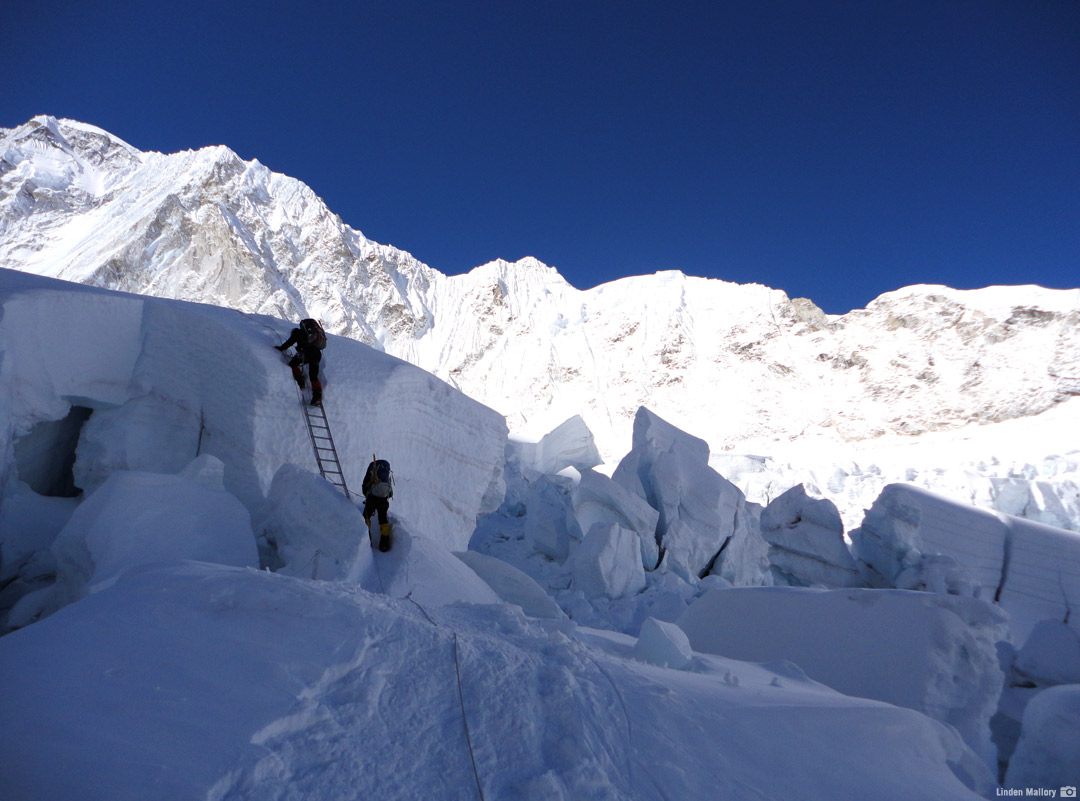
PHERICHE • 13,950' | 4,252M
We stay another night in Pheriche to continue our acclimatization. We will visit the clinic of the Himalayan Rescue Association and take a day hike up the Imja Khola valley toward Chukkung, offering spectacular views of Ama Dablam's seldom seen north side. Overnight in lodge. (B, L, D)
LOBUCHE • 16,175' | 4,930M
Pheriche (13,950') to Lobuche (16,175'). Trekking time is approximately 4 to 5 hours.
We ascend to the village of Lobuche, tucked below Lobuche Peak. Our trail takes us past the memorials for climbers made up of dozens of large rock stupas and strings of prayer flags at the top of Thokla Pass. Along the way we leave the last of the large vegetation and enter into the alpine zone and our trail may have a covering of snow from here. Overnight in lodge. (B, L, D)
During our acclimatization day we take a short walk to visit the Italian Research Pyramid that conducts altitude research and helps track the current weather conditions on Mt. Everest. There is ample time to play cards, read, and take it easy - a little rest and relaxation before moving up to 17,000'. Overnight in lodge. (B, L, D)
EVEREST BASE CAMP • 17,575' | 5,357M
Lobuche (16,175') to Everest BC (17,575'). Trekking time is approximately 5 to 6 hours.
We complete the last stretch of our trek, leaving the dirt and grasses of the mountainous valley and setting out across the ice and rock of the Khumbu Glacier into Everest Base Camp. We move into our tents and home fore the upcoming weeks at the RMI Everest Expedition's Camp, admiring the stunning panorama of peaks surrounding us. Overnight in tents. (B, L, D)
Once at Everest Base Camp the itinerary can vary greatly, this is only an outline of the expedition's movements. If weather and conditions allow for all team members to summit earlier, then the program schedule will be moved accordingly. Similarly, if the summit attempt is delayed we will arrange for extra days.

Day 16 to Completion
Upon arriving at Base Camp several days will be spent resting and acclimatizing with short day hikes to several spectacular viewpoints around the area such as Kala Patar and Pumori Camp 1. We will use the giant pressure ridges of ice around Base Camp to practice our climbing techniques - becoming comfortable on fixed lines, steep, icy slopes, and ladder crossings. Within a few days of our arrival at Base Camp we will also have our Puja Ceremony, a deeply meaningful and very exciting Buddhist ceremony led by a local lama before the start of any climbing expedition.
With our bodies acclimating to Base Camp, our Puja ceremony completed, and our training accomplished, we begin our acclimatization rounds on the mountain. Over the next weeks we will slowly work our way up the mountain, acclimatizing to higher and higher elevations and becoming familiar and comfortable with the terrain. Our first efforts will be short trips into the Khumbu Icefall, reaching Camp 1 at almost 20,000' where we will spend a few nights. We will then push up to Camp 2, at the head of the Western Cwm at over 21,000' where additional nights make our bodies stronger in the thin air. On our next round our goal is Camp 3, perched at 23,750' on the Lhotse Face. There, we will perfect our climbing with fixed lines and familiarize ourselves with our oxygen systems. Finally, after resting back in Base Camp we will embark on our summit push, climbing to Camp 4 at 26,000' on the South Col. From the South Col we will climb up the Triangular Face to the Balcony, over the South Summit, up the Hillary Step, and to the top of the world!
The number of days this will take our team will vary due to weather, acclimatization, team strength, the number of acclimatization rounds we make, and other circumstances that will affect our progress. Our guides will use their vast mountain experience, knowledge, and decision-making abilities to maximize each climber's chance of reaching the summit of Mt. Everest.
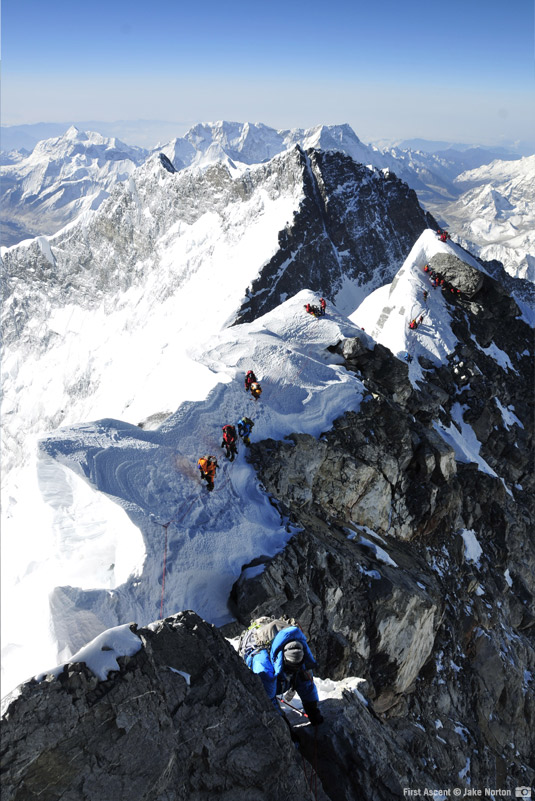
Everest Base Camp (17,775') to Pheriche (13,950'). Trekking time is approximately 5 to 6 hours.
We leave Base Camp and trek back along the Khumbu Glacier down to our lodge in Pheriche for some "thick" air and a good night's sleep. Overnight in lodge. (B, L, D)

Pheriche (13,950') to Namche Bazaar (11,300'). Trekking time is approximately 6 to 8 hours.
The downhill trek along the river allows for breathtaking photos of Ama Dablam as it towers ominously above us. As we descend the smells of the pine forests and blooming rhododendrons overwhelm the senses after so many days up high. In Namche we treat ourselves to much deserved yak steaks, beer, and pastries. After Everest Base Camp, the narrow streets of Namche feel like a big city! Overnight in lodge. (B, L, D)
LUKLA • 9,350' | 2,850M
Namche Bazaar (11,300') to Lukla (9,350'). Trekking time is approximately 5 - 7 hours.
Our last day on the trail. We hike down from Namche to Lukla, crossing the eleven swaying suspension bridges over the Dudh Kosi and re-entering the fertile valleys of the lower Khumbu. Overnight in lodge. (B, L, D)
KATHMANDU • 4,383' | 1,336M
The scenic morning flight back to Kathmandu gives us one last chance to say farewell to the mountains. The afternoon in Kathmandu is open for exploring or just relaxing. (B)
CONTINGENCY DAY
This day is available in case of delayed flights in or out of Lukla or if weather postpones our trip at any point.
Depart Kathmandu.
Arrive home.
Travel Consultant
CTT Destinations Travel Coordinator Pirjo DeHart has served climbers and adventurers for over 25 years. Specializing in small corporate and adventure travel, she works to assure your trip is stress free by taking care of the practical travel details. Each trip is handled with the utmost attention to detail so that you may focus on your adventure. You can contact Pirjo by phone at (425) 831-0367 or email: [email protected] .
Travel Insurance
Travel insurance is required for this trip with a medical evacuation policy with minimum coverage of $500,000. Your travel insurance policy should include trip cancellation, trip interruption, trip delay, baggage loss or delay, medical expenses, and evacuation.
Navigating through the different options for travel insurance can be challenging. When purchasing Travel Insurance, here are a few items to consider:
- Read the fine print. Travel Insurance will reimburse you when canceling for a covered reason for prepaid, non-refundable trip costs that you insure. However, there are exclusions, so make sure you understand the "covered reasons."
- Confirm that your activity is a covered “activity.” Not all travel insurance policies will offer coverage for activities such as mountaineering, climbing, skiing, or trekking adventures. Policies can also exclude coverage for activities due to the gear used (crampons, ice axe), activities that go above specific elevations or activities in a particular region of the world. If there are exclusions, you may need to add an "Adventure" or "Sports" package to cover your activity.
- Verify that your state of residence is allowed with the policy that you are purchasing. Not all insurance companies offer policies in all 50 states.
- Contact your travel protection company directly for any questions you have regarding benefits or coverage.
We have partnered with Travelex Insurance because they offer certain policies specifically designed for adventure travel with coverages for remote areas and activities like mountaineering, climbing, skiing, and trekking, without any altitude restrictions.

For your convenience, we offer Travelex Insurance Services, Inc.(CA Agency License #0D10209) travel protection plans to help protect you and your travel investment against the unexpected.
For more information on the available plans visit Travelex Insurance Services or contact Travelex Insurance (800) 228-9792 and reference location number 47-0370.
The product descriptions provided here are only brief summaries. The full coverage terms and details, including limitations and exclusions, are contained in the insurance policy. Travel Insurance is underwritten by Berkshire Hathaway Specialty Insurance Company; NAIC #22276.
Security & Medical Evacuation
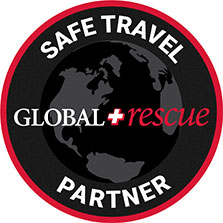
Travel Advisories / Warnings
Please confirm any current travel advisories/warnings as well as entry requirements with the U.S. Department of State.
Getting There
During your flight to Kathmandu (KTM) you will cross the International Date Line. Travel time is approximately three days. If you want to see the mountains as you fly into Kathmandu, make sure you sit on the right-hand side of the plane.
Entry Requirements
A valid passport is required for entering Nepal. Your passport must be valid for 6 months beyond the expected date of return. U.S. passport holders can stay up to 90 days without special visas.
We suggest making a copy of the first two pages of your passport and keeping them in a separate bag as a backup. A copy should also be left with your emergency contact.
Nepal: All foreigners (except Indian Nationals) require visas, which can be obtained in advance or upon arrival with one passport photo and payment in cash (U.S. Dollars).
Airport Arrival
Upon arrival at the Kathmandu Tribhuvan Airport (KTM), follow signs to the Arrivals Building. Proceed to the visa counter for Visitors without a Visa . The debarkation and visa application forms you need are available both on your incoming flight as well as in the arrivals building. You will need one passport photo for your visa application.
Once you receive your bags from Baggage Claim, you will proceed to Customs. Be sure to keep all your bags together.
Outside the arrivals hall there will be a large group of taxi drivers and agents from many hotels and travel companies. Look for a sign with the name Rainier Mountaineering, Inc. A private vehicle will take us to our hotel.
In-Country Transportation
The provided transportation in Nepal as stated in the itinerary is via authorized taxi or private vehicle.
Immunizations & Travel Medicine
For the most current information on inoculation requirements and recommendations, please refer to the Centers for Diseases Control and Prevention .
Traveler's Health
Travelers may suffer from upset stomachs when in foreign countries. There are some basic rules, however, that can help keep you healthy.
Hygiene - It is important that you wash your hands thoroughly before meals and after using the restroom. If water is not available for washing, we recommend using a hand sanitizer.
Water - The number one rule is: don't drink the water, and that includes shower water and ice! Brush your teeth with purified water rather than tap water. You should check bottled water for a good seal and use a napkin to wipe excess moisture from drinking glasses. Take care with fruit juice, particularly if it has been diluted with water. Carefully clean the tops of bottled beverages before opening.
Food - If it is cooked, boiled or can be peeled, you can usually eat it. Salads and fruits should be washed with purified water or peeled where possible. Be wary of ice cream and shellfish. Always avoid any undercooked meat.
Medical Emergencies
Excellent care for minor illnesses and injuries is readily available. In the event of more serious illnesses or injuries, we recommend transport to any of the Level 1 care centers in Kathmandu.
Nepal Country Facts
Nepal is one of the world's richest countries in terms of bio-diversity due to its unique geographical position and altitudinal variation. The country is roughly 497 miles long and 124 miles wide, with an area of 56,827 square miles. The collision between the Indian subcontinent and the Eurasian continent produced the Himalaya and the Tibetan Plateau. Nepal lies completely within this collision zone, occupying the central sector of the Himalayan arc, nearly one third of the 1,500 mile-long Himalayan Mountains.
The first civilizations in Nepal, which flourished around the 6th century B.C., were confined to the fertile Kathmandu Valley where the present-day capital is located. It was in this region that Prince Siddhartha Gautama, the founder of Buddhism, was born c. 563 B.C.
Nepali rulers' early patronage of Buddhism largely gave way to Hinduism, reflecting the increased influence of India, around the 12th century. Nepal is now primarily a Hindu country, with more than 80% of the population adhering to that faith.
Until the Kingdom of Nepal became the Federal Democratic Republic of Nepal in May 2008, it had been ruled in relative isolation by monarchs or a ruling family for most of its modern history. Nepal is home to nearly 29,000,000 people. The population is primarily rural. Kathmandu, the largest city, has less than 1 million inhabitants.
Nepal's lowlands have two seasons: the dry season and the monsoon. The higher mountains have a cold winter as well. The dry season runs from October to May and the wet (monsoon) season from June to September. Spring (March to May) and fall (September to November) ring nearly perfect weather and are definitely the best times for trekking and climbing.
Cultural Etiquette
Although it is not expected that we dress formally, we should dress modestly. Casual and comfortable clothing is suggested along with comfortable shoes. Except at swimming areas, it is generally considered offensive for a man to take off his shirt in public and, equally, women should be conservatively covered.
"Namaste" is perhaps the most important phrase you should learn when visiting Nepal. It is a greeting that means "salutations to you" or "I bless the divine in you." It is said while at the same time pressing your two hands together in front of you as if in Christian prayer.
When eating, you should only use your right hand. This practice extends to passing food containers and plates with your right hand only.
Nepal has a huge population of beggars. Some are professionals. Others are genuine. The number of street children in Kathmandu can be heartbreaking. Giving money or sealed food to them, however, is also not recommended. To keep from being hassled, a polite but firm "No" is generally sufficient.
A person's head is considered the most revered/spiritual part of the body and therefore it is important that you do not make any kind of physical contact with it. This means that it is unacceptable for you to pat a child on the head.
Nepal is very photogenic and the photos you take will be priceless. Ask for permission before photographing individuals, particularly indigenous people. Many of the locals are used to posing for photographs. If in doubt, either ask or refrain. Don't photograph any government or military property or persons; this includes the airport.
Electricity
Electricity in Kathmandu normally comes as 220 Volts/50 cycles. It is advisable to carry voltage converters and plug adaptors with you while traveling. Voltage converters and plug adaptors are easily accessible at shopping malls in the cities of Nepal and the U.S. Most teahouses and lodges will charge your electronics for a small fee.
The official currency of Nepal is the Nepalese Rupee (NPR). In Nepal you are almost always required to pay for goods or services with the Nepalese Rupee. It is recommended that you change only as much money as you think you may spend as local currencies cannot be removed from the country or reconverted easily. Check a financial newspaper or www.xe.com for the current exchange rate prior to departure.
We suggest bringing $1,400 - $1,600 total for personal spending money including restaurant meals, drinks, pocket money, and the Support Staff Tip Pool.
American Express, MasterCard and Visa are accepted in tourist shops, hotels, restaurants and agencies in Kathmandu. You will find a large number of ATMs in Kathmandu and using ATMs is the common method of obtaining cash. Plan on bringing cash for any purchases you will make while on the trek. While a few teahouses and bakeries in the Khumbu do accept credit cards, they charge a very high commission.
Everyone has a preferred way to carry money. Some use money belts, others have hidden pockets. Whatever you do, be aware of pickpockets and thieves in any area which caters to tourists.
Everyone approaches tipping a little differently. Whether or not a person tips, and how much, is completely dependent upon the individual; here are some suggested tipping guidelines for your trip.
Local waiters, drivers, and other service personnel expect to be tipped. Ten to fifteen percent is standard. Some restaurants and hotels add a 10% service fee to bills in which case, no further tip is required.
Support Staff Tip Pool: We recommend that each climber contribute $900 to the Tip Pool. This is collected at the beginning of the trip and will cover group tips for all our support and mountain staff throughout the program.
Our guides work hard to ensure your well-being and success on the mountain. If you have a positive experience, gratuities are an excellent way to show your appreciation. Amounts are at your discretion and should be based on your level of enjoyment. Tips for excellent service normally average 10 – 15% of the cost of the program. If you would rather not bring the guide gratuity with you on the trip, you can send a check or call the RMI office to pay with a credit card upon your return.
This trip is open to all individuals in excellent physical condition with previous climbing experience. Successful completion of an RMI Expedition Skills Seminar on Mt. Rainier, in Alaska, Peru, Ecuador, North Cascades, or an equivalent multi-day mountaineering seminar is required.
Your climbing resume should include:
- Previous glacier travel experience
- Experience at altitudes above 6,000 meters ( Aconcagua )
- Familiarity with the skills needed for a cold, remote and heavily glaciated peak
- Participation in Colorado Ice - Introduction and Colorado Ice - Intermediate or equivalent
- Crampon skills on 30 - 50 degree slopes
- Team rope travel skills
- Knots & slings - Prusik , butterfly, Münter, etc.
- Snow and ice anchors (construction & equalization)
- Belaying and running belay experience
- Crevasse rescue (from both the victim and rescuer perspectives, and considering heavy packs)
- Fixed line travel with mechanical ascenders
- Ice axe self and team arrest, with and without a backpack
Screening and final selection will be done on an individual basis after we have reviewed your climbing experience and our veteran Himalayan Guides have spoken with you directly.
Qualifying Programs
Recommended climbing experiences prior to the Mt. Everest South Side Expedition include:
Mt. Rainier Expedition Skills Seminar - Emmons
Mt. Rainier Expedition Skills Seminar - Paradise
Denali - West Buttress Expedition
Expedition Skills Seminar - Kahiltna Glacier
Expedition Skills Seminar - Shuksan
Expedition Skills Seminar - Peru

Get In The Best Shape Of Your Life And Then Go Climb A Mountain
Create a fitness and training program, physical fitness training.
Mountaineering requires a high degree of physical stamina and mental toughness. Even for the healthiest and fittest individuals, climbing mountains qualifies as an extremely challenging endeavor.
- Start immediately. Start a rigorous fitness and training program now with the goal of arriving in top physical condition and confident in your skills.
- Be intentional. Focus on gaining the necessary strength, stamina and skills to meet the physical and technical demands of the climb.
- Be sport-specific. The best fitness and training program mimics the physical and technical demands of your climbing objective. The closer you get to your program date, the more your training should resemble the climbing.
For the Mt. Everest South Side Expedition, you are preparing for:
- Steep climbing with a 40-50 lb load
- A 10-12+ hour summit day
- Mountaineering techniques requiring core strength and flexibility
Nothing ensures a personally successful adventure like your level of fitness and training. Bottom line: Plan on being in the best shape of your life and ready for a very challenging adventure!
Please refer to our Resources for Mountaineering Fitness and Training for detailed fitness and training information.
Acclimatization
The key to climbing high is proper acclimatization. Our program follows a calculated ascent profile which allows time for your body to adjust to the altitude.
Excellent physical conditioning significantly increases your ability to acclimatize as you ascend. Climbers in excellent physical condition simply have more energy to commit to the acclimatization process throughout the days and nights of the ascent, allowing their bodies to adjust to the altitude more easily.
Finally, physical performance and acclimatization are also related to how well you have taken care of yourself throughout the hours, days and weeks prior to summit day. Arriving healthy and well-rested, maintaining proper hydration and caloric intake, and protecting against unnecessary heat loss (staying warm) are all key factors in an individual's success on an expedition such as this.
What You’ll Need
A list of required personal equipment accompanies every RMI program, and the thought process behind each item is much greater than simply “preparing for the worst and hoping for the best.” The list for your program takes into account factors such as: seasonality, route conditions, weather, elevation and more. As such, this list is framed within the broadest of contexts and is dynamic by its very nature. Therefore, certain variables (additions and/or subtractions) are inherent within such an all-encompassing list. We make every effort to recommend only top of the line clothing and technical gear and it is never our intention for you to buy or rent unnecessary gear.
The Guide Pick is an example of the listed item, giving you an idea of the material and specifications of the item. This exact item does not need to be purchased or used; however, any item you choose must have similar characteristics and performance abilities to the Guide Pick.
RMI Guides concur on the potential necessity of every item, thus every item on the list is required at gear check. However, guides may also have suggestions derived from their experience, some of which will vary from a given list. The guides’ recommendation whether to bring along or leave behind certain item(s) comes during the gear check, when the team first meets. Occasionally this recommendation comes at the expense of having previously purchased an item. If a guide presents the option of leaving behind certain item(s) on the list of required equipment, it is for a reason. Their recommendation may be related to the weather, route conditions, freezing level, perceived strength of the party, or desired pack weight.
Ultimately, there will never be a consensus for a “perfect” equipment list for an ascent. It does not exist because of the multitude of variables faced by climbers throughout the climb. Please follow this equipment list closely so that you will arrive for the gear check with all the required items. Keep in mind the list is not black and white, fine tuning will occur once you meet with your guide. Have a great climb!

Shop Your Equipment List // Rent new equipment for your climb
Equipment list, pack & travel.

120+ liter bag(s) made of tough material with rugged zippers.

Bring as needed. Make sure these are TSA-compliant.

You will not need a separate summit pack.

Protects your pack from rain while on the trail.

A 25+ liter day pack to use as carry-on or while sightseeing.
Sleeping Bag & Pad

We recommend a bag rated between 0° and -20° F. If you would prefer NOT to share group bags at the higher camps, you should bring a second bag rated -20° F or lower.

A full-length inflatable pad.

A full-length closed cell foam pad, used in combination with the inflatable sleeping pad.
Technical Gear

The length of your axe depends on your height. Use the following general mountaineering formula: up to 5'8", use a 65 cm axe; 5'8" to 6'2", use a 70 cm axe; and taller, use a 75 cm axe. If you hold the axe so that it hangs comfortably at your side, the spike of the axe should still be a few inches above the ground.

We recommend a comfortable, adjustable alpine climbing harness. Removable, drop seat, or adjustable leg loops are convenient for managing your clothing layers over the course of the climb and facilitate going to the bathroom.

Used for clipping into the climbing rope.

Used for clipping into anchors, etc.

Used for pack ditch loop, etc.

12-point adjustable steel crampons with anti-balling plates designed for general mountaineering use.

Bring extra batteries appropriate to the duration of the climb.

We recommend lightweight and collapsible poles with snow baskets.

A tube-style belay/rappel device that can accept a variety of rope diameters.

For traveling on fixed lines. Most people prefer an ascender designed for their weak hand, leaving their strong hand free to hold their ice axe. For example, a right-handed person would use a left-handed ascender.

60 cm sewn sling ("single-length runner").

6 mm cordelette in one continuous length OR precut into two 4' sections OR two 13.5" Sterling Hollow Block sewn loops.

A UIAA (Union Internationale des Associations d’Alpinisme) or CE (European Committee for Standardization) certified climbing helmet.

Wool or synthetic hats; one light and one heavy.

A Buff provides versitile head and neck protection. A neck gaiter is also acceptable.
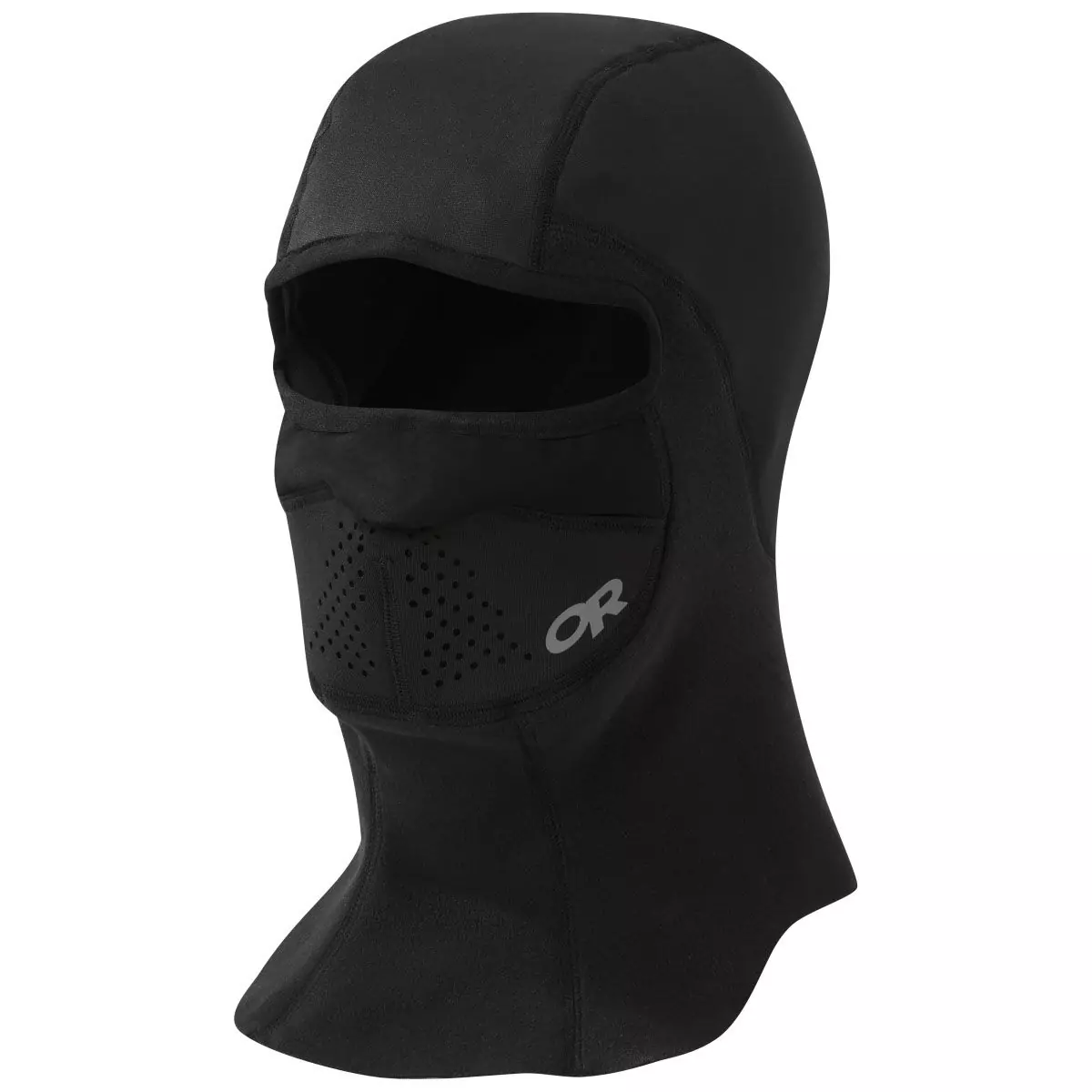
An expedition-weight balaclava to be used in conjunction with your Buff. Your headwear system should leave no exposed skin.

Bring two headlamps for the expedition. The second is for use around camp and to serve as a backup. Be sure to begin the program with fresh batteries and bring extra sets appropriate to the duration of the program.

Glacier glasses are protective sunglasses that provide close to 100% frame coverage (wrap-around frames and side shields ensure no light can enter from the top, bottom, and sides of the glasses) and transmit less than 10% of visual light.

Amber or rose-tinted goggles for adverse weather. On windy days, climbers, especially contact lens wearers, may find photochromatic lenses the most versatile in a variety of light conditions.
Each glove layer is worn separately as conditions change during the climb.

Light weight liner or softshell gloves. Lighter colors absorb less sunlight while still offering UV protection.

Medium weight, wind- and water-resistant insulated gloves for climbing and working around camp. These should be both durable and dexterous enough to allow you to perform activities like setting up or taking down tents while wearing them.

Wind- and water-resistant, insulated gloves.

For summit day and other very cold days. Gloves provide greater dexterity. Mitts provide greater warmth.
We recommend six upper body layers, all of which can be used in conjunction with each other. Three of these should be insulating layers, one light, one medium and one heavy that fit well together. Today there are many different layering systems to choose from, including fleece, soft-shell, down and synthetic options.

Long-sleeve wool or synthetic top. Light weight, light-colored, hooded baselayers (sun hoodys) are highly recommended for sun protection.

One step up in warmth and bulk from a baselayer. A technical fleece makes an ideal light weight insulating layer.

A down, synthetic, or softshell hoody makes a great midlayer.

An uninsulated, waterproof shell jacket with hood.

Your expedition-style heavy parka should extend below the waist and must have an insulated hood and be able to fit over the rest of your upper body layers. The parka is worn primarily in camp, at rest breaks, and on summit day when it is of crucial importance. We recommend down rather than synthetic fill.

An 8,000 meter down suit.

We recommend a moisture-wicking, active-wear bra.
We recommend a system of four layers, all of which can be used in conjunction with each other. Products which combine several layers into one garment, such as traditional ski pants, don’t work well as they don’t offer the versatility of a layering system.

Non-cotton briefs or boxers.

Synthetic or wool.

Softshell climbing pants can be worn in combination with a base layer on colder days, or alone on warmer days.

Non-insulated, waterproof shell pants must be able to fit comfortable over your baselayer bottoms and softshell climbing pants. Full side zippers or 7/8 side zippers are required so that shell pants can be put on while wearing boots and crampons.

A pair of lightweight, insulated pants are ideal for extra warmth and comfort at camps, both on the glacier and on the trail.

A light weight, synthetic pair of pants is a good option for the approach trek when hiking at lower altitudes and in warm conditions. These pants have no insulation, are typically made of thin nylon, and commonly feature zippers to convert between pants and shorts.

A pair of jeans or cotton pants. Great for wearing around camp or teahouses.

A modern, all-in-one 8,000m boot is required. The boot needs to be roomy enough to allow for good circulation. Anticipate a sock combination when sizing them (single sock, liner and sock, or two heavy socks on each foot). Wear the boots as often as possible before the climb, to determine proper fit, comfort and performance.

Goose down or synthetic fill. Nice for evenings at camp.

A pair of lightweight boots for approaches and hiking on rugged terrain. We recommend a waterproof, mid-top boot for better stability and ankle support.

Great for traveling and wearing around town or camp. A pair of tennis shoes or light hikers works well.

Either wool or synthetic. Whatever sock combination you are accustomed to wearing during your training or previous adventures (whether single medium weight socks, a medium weight with a liner sock, two medium weight socks together, etc.), should work just fine for this climb.
First Aid & Medications
We recommend you speak with your physician about which medications you should have for high-altitude climbing. These medications are only used in emergency situations, and if someone is showing symptoms of HAPE or HACE, our standard protocol is for immediate descent. We do not take any of these medications prophylactically, and please talk with your guide before taking medications.
We require each climber to have the following medications:
Broad spectrum antibiotics for respiratory and gastrointestinal problems like Azithromycin (250mg tablets).
125mg tablets for the prevention or treatment of Acute Mountain Sickness. A normal prescription is 125mg tablets, twice a day. Recommend 15 - 20 tablets.
4mg tablets for the treatment of altitude illness. Recommend 12 tablets.
30mg slow-release tablets for the prevention or treatment of high-altitude pulmonary edema (HAPE). Recommend 8 - 10 tablets.

Our guides carry comprehensive medical kits, so keep yours small and light. We recommend a selection of adhesive bandages, antibiotic ointment, Moleskin and blister care, medical tape and/or duct tape, cough drops, basic painkillers, an antacid, an anti-diarrheal, and personal medications.
Personal Items
-450x0.jpg)
See the Food tab for suggestions and quantities.

Packable plastic bowl. Collapsable models can work but must be handled carefully to avoid unintended collapsing. A lid is a great feature.

Insulated outdoor-style mug. We recommed a model with a removable lid, which helps retain heat and prevent spills. You may also choose to use 0.5L insulated bottle or a 0.5L nalgene.

A spoon or spork made of durable plastic or anodized metal. A long-handled spoon can be nice, especially if eating from a freeze-dried meal pouch.

One-liter water bottles with wide mouths made of co-polyester (BPA-free plastic).

High quality, durable vacuum bottle with a volume of 1/2 liter or 1 liter.

These help prevent freezing. It should completely cover the bottle.

Chlorine Dioxide water purification drops. Make sure to select the 30-minute version.

Bring as needed.

Heavy-duty trash compacter bags for use as waterproof pack/stuff sack liners. You can also use a a waterproof pack liner.

Include toilet paper, hand sanitizer, toothbrush and toothpaste, and wet wipes. Bring a quantity appropriate to the duration of your trip.

We recommend small tubes of SPF 30 or higher, which can be carried in pockets for easy access and to prevent freezing.

We recommend SPF 15 or higher.

Spare prescription glasses if you wear contact lenses/eyeglasses.

Practice using this before coming on the climb!
One clearly-marked wide-mouth or collapsible bottle for overnight use.

Many smartphones have excellent cameras. Action cameras, small point-and-shoots, and compact dSLRs are lightweight and work well at altitude.

A small power bank, enough to charge a phone or e-reader several times.

A small solar panel to charge personal electronics.

Watch with an altimeter, barometer, and compass. Many smart watches will also have this functionalty.

Communicate with family and friends back home, track your progress, and much more. Generally requires a subscription plan. Make sure this is a modern model that makes it difficult to inititate an accidental SOS call.
For charging personal electronics while traveling internationally.
Travel Clothes

We recommend bringing a selection of clothing to wear while traveling, site seeing and dining.
Travel Documents
Valid for six months beyond your return date.
The first two pages of your passport.
Pre-Trip Checklist
Purchase travel insurance.
Purchase airplane tickets.
Reserve rental equipment.
Be in the best shape of your life!
Provided Equipment
RMI provides the following equipment for your program: group and personal tents, stoves, group cooking equipment, fuel, upper mountain community sleeping bags and pads, climbing ropes, climbing anchors, fixed ropes, shovels, route wands, radios for on-mountain communication, and comprehensive first aid and repair kits.
Four bottles of climbing oxygen will be provided. Additional bottles are available upon request.
On Mt. Everest Southside we recommend you bring 10 - 15 lb of your favorite snacks to supplement the provided meals.
All meals on the mountain are included as indicated in our Trip Itinerary . The value of expert cooks and careful planning cannot be overstated for a multi-month, high altitude expedition and we work diligently to keep our climbers fit and content. With the exception of hotel breakfasts, most meals in Kathmandu are on your own. You are responsible for your own bottled water and drinks.
MOUNTAIN SNACKS
You will want to have a few snack items with you every day to fuel you up the trail. We continually snack to keep our energy levels up while we climb - lunch begins just after breakfast and ends just before dinner!
The importance of having foods that are genuinely enjoyed cannot be overstated. Eating properly is the key to maintaining strength while in the mountains. In order to combat the loss of appetite at altitude we aim to have a variety of foods that stimulate the whole palate, from sweet to sour to salty.
Recommended snack items: dry salami, smoked salmon, jerky (turkey, beef, fish), small cans of tuna fish, individually wrapped cheeses such as Laughing Cow or Baby Bell, crackers, bagels, candy bars, hard candies (Jolly Ranchers, toffees, Life Savers), gummy bears, sour candies (Sweet Tarts), cookies, dried fruit, nuts, energy bars, GORP mixes, and drink mixes (Gatorade/Kool-Aid).
TREKKING MEALS
We realize that many Westerners are apprehensive about the quality of food when traveling in the Himalaya. Rest assured that all of our teahouses have been handpicked by our guides for their quality and cleanliness, and we work very closely with the teahouse owners and our Nepali mountain staff to keep our teams healthy and strong. As a result of our careful planning and excellent cooks, our teams rarely see the physical deterioration common to other teams.
During the trek, breakfasts consist of mostly typical choices. Eggs, toast, hash browns, corn flakes, muesli, oatmeal, pancakes and the local specialties of chapatti and Tibetan bread are all common menu items. Breakfast meats like sausage are sometimes found. Breakfast is accompanied by juice, coffee, tea, cocoa and other hot drinks.
Lunch and dinner options in the teahouses include a variety of choices. Soups (commonly tomato, vegetable, noodle, or hearty "sherpa stew") and momos (Nepali dumplings) are excellent starters. Main courses like chicken and yak dishes, pastas, pizzas, and even fries are served alongside vegetable fried rice or noodles and Nepali specialties such as dal bhat (rice and lentils). Be sure to save room for a dessert such as apple pie, chocolate cake, or "snickers pie!" Soft drinks, beer, and wine are also widely available, although they are priced at a premium the higher you trek.
MOUNTAIN MEALS
On the mountain, similar meals are served by our expedition cooks. Lunches and dinners include several courses, beginning with soup and ending with dessert. We are treated to pancakes, pizzas, burritos and fajitas, smoked salmon, yak burgers, chocolate cakes, and fresh baked cookies throughout the climb. Our cook's fantastic meals are guaranteed to impress you, not withstanding the fact that you are dining at over 17,000'.
Deposit Payments: A non-refundable deposit payment of $15,000 per person secures your reservation.
- Deposit payments of $15,000 or less may be made via e-check/ACH, or check from a U.S. bank.
Balance Payments: The balance payment is due 120 days before the start of your program.
- *Wire transfers must cover all fees charged by your bank. The amount of the incoming wire to our bank must equal the balance payment amount.
- A payment reminder is emailed approximately three weeks before your payment due date. If your balance payment is not received 120 days before the start of your program, your reservation will be canceled, and all program fees will be forfeited.
- Payment in full is required when registering for a program within 120 days of the departure date.
Cancellation
The $15,000 per person deposit is non-refundable and non-transferable .
- If you cancel 120 or more days before the start of your program, the $15,000 per person deposit will not be refunded.
- If you cancel less than 120 days before the start of your program, no refunds will be issued .
Due to the time-sensitive nature of these programs, and the amount of preparation time required for this program, we strictly adhere to our policy and cannot make exceptions for any reason.
Cancellation Insurance
We require that everyone purchase travel insurance. Please see our Travel Tab for details.
- RMI Leadership: Expeditions led by world's most experienced high altitude guides (trips have included Dave Hahn and Casey Grom)
- Base Camp Management: BC managed by experienced BC Manager
- Ground transportation to and from the airports (international & domestic) in Kathmandu
- Round-trip flight to Lukla
- All group camping supplies such as mountain tents, stoves, fuel, cooking tent, dining tent, shower tent and storage tent.
- A single tent at Base Camp with a foam sleeping mattress
- High-altitude camp equipment and supplies
- On mountain radio communications
- All meals as stated in the itinerary
- Hotels with breakfast in Kathmandu for stated itinerary at beginning of expedition (2 nights), based on double occupancy*
- All park fees and climbing permit fees
- Yak & porter support
- Liaison and Sirdar officers
- Camp staff and cooking staff
- Sherpa staff, including Sherpa support on summit day
- Climbing Sherpa will establish camps, carry group equipment (including sleeping bags and pads), establish the route, etc.
- Hyperbaric bag and emergency medical oxygen
- 4 1800L bottles of climbing oxygen and a Top Out mask
- Medical consultation and care at the Himalayan Rescue Association Clinic
- Weather forecasting, including daily updates for the summit attempt
- Power supply for recharging electronics at Base Camp
- 3 nights of hotel accommodations in Kathmandu (2 at the start and 1 at the end)
NOT INCLUDED
- Personal clothing and equipment
- International air fare and travel expenses to/from Kathmandu
- Additional hotel nights in Kathmandu beyond one night at the end of the expedition
- Medical Evacuation insurance of $500,000 (required)
- Travel insurance
- Airport & departures taxes, Nepal entry visas & duty fees, excess baggage charges
- Airport taxes and Nepal entry visas
- Support Staff Tip Pool (we suggest $900 per person)
- Customary mountain guide gratuities
- Personal communications (phone, fax, internet)
- Personal expenses, room charges, showers, laundry, beverages, and battery charging expenses while trekking
- Rescue, medical, hospitalization and evacuation costs (by any means)
- Costs associated with early departure such as helicopter or charter flights
- Cost of delays due to weather, road or trail conditions, flight delays, government intervention, illness, medical issues hospitalization, evacuation costs (by helicopter or any other means), or any other contingency which we or our agents cannot control.
* Accommodations are based on double occupancy. A Single Supplement Fee will be charged to those occupying single accommodations by choice or circumstance. The single supplement may not be available in huts, tents, or in all hotels.
Rainier Mountaineering, Inc. reserves the right to modify the land cost of a trip at any time before departure.
Risk Management
Please clearly understand that mountaineering is inherently hazardous. Managing risk is RMI’s number one priority. Our guides manage significant hazards inherent in mountaineering, but they cannot eliminate them. Objective hazards include rockfall, icefall, avalanches, slides or falls by individuals and rope teams on steeper slopes, weather-related problems including cold, heat, high winds, and other unnamed dangers that can occur while climbing.
You are choosing to engage in an activity in which guided and non-guided climbers have been injured or killed. While those accidents are indeed infrequent, they may occur at any time and be out of our control. We ask that participants acknowledge the risks and hazards of mountaineering and make their own choices about whether or not to engage in this activity.
PARTICIPANT Responsibilities
Mountaineering is both an individual challenge and a team endeavor. Each Participant is required to share in the responsibility of the safety and success of the team. For this reason, we ask that each Participant:
- Possess the climbing prerequisites required for this program.
- Possess the necessary physical and mental fitness required for this program.
- Be responsible for knowing all pre-departure information.
- Provide a signed Physician’s Certificate stating that the Participant is medically qualified to join this program.
- Update the RMI Office if there are any changes to your health or medical information before departure.
- Be properly attired and equipped as outlined in the Equipment List.
- Act in a considerate manner toward all team members and show respect for local customs, values, and traditions in the areas we travel.
- Help minimize our impact on the environment and follow appropriate Leave No Trace practices.
- Describe yourself, honestly and accurately, in terms of fitness, health, skills, abilities, and your equipment to your guide staff.
- Communicate with your guide staff on the mountain if there are any changes in your medications or health.
- Adhere to the advice of your guide staff.
- Continue to self-assess throughout the program, measuring your fitness, health, skills, and abilities against the demands required of the program.
RMI reserves the right to dismiss the Participant from a program or to send the Participant to a lower altitude at any time if the RMI Guide Staff determines, in its sole discretion, that the Participant is not physically, technically, or psychologically prepared for, or capable of participating in the program, or for any other reason that may compromise the safety, health or well-being of the Participant or the entire group. If this decision is made, the Participant will not receive any refunds or credits and will be financially responsible for any additional costs associated with an early departure, including but not limited to, evacuation, transportation, hotel reservationss, meals, etc.
Zero Tolerance Harassment Policy
Rainier Mountaineering, Inc. (RMI) does not tolerate harassment or mistreatment of our participants or employees. Inappropriate conduct under this policy may include conduct that creates a disrespectful, intimidating, hostile, degrading, humiliating, or offensive environment for a participant or employee. Engaging in such conduct is a violation of this policy.
RMI may consider conduct to violate the policy even if it falls short of unlawful harassment under applicable law. When determining whether conduct violates this policy, we will consider whether a reasonable person could conclude that the conduct created an intimidating, hostile, degrading, or demeaning environment.
Violation of this policy may result in removal from a program, as well as refusal to provide services indefinitely. We place the utmost value on the safety of our participants and employees. Please report any incidents to RMI management.
Age requirements
All participants must be 18 years old at the time of registration.
Photo Release
RMI’s Photo Release outlines the terms and conditions for using your likeness in photographs, videos, or other digital media.
I hereby grant Rainier Mountaineering, Inc. (RMI) or its affiliates permission to use my likeness in a photograph, video, or other digital media (“photo”) in any and all of its publications, including web-based publications. By granting permission, you allow RMI to utilize these media for lawful purposes.
Here are the key points:
- Authorization: You authorize RMI to edit, alter, copy, exhibit, publish, or distribute the photos.
- Ownership: All photos become the property of RMI and will not be returned.
- Compensation: You will not be compensated for these uses.
- Rights: RMI exclusively owns all rights to the images, videos, and recordings and to any derivative works created from them.
- Waiver: You waive the right to inspect or approve printed or electronic copies.
- Release: You release Rainier Mountaineering, Inc. and its assigns and licensees from any claims arising from these uses, including defamation, invasion of privacy, rights of publicity, or copyright.
- Hold Harmless: You hold harmless, release, and forever discharge RMI or its affiliates from any and all claims, demands, and causes of action which I, my heirs, representatives, executors, administrators, or any other persons acting on my behalf or on behalf of my estate have or may have by reason of this authorization.
Summit Attempt
RMI cannot guarantee that you will reach the summit. Weather, route conditions, your own abilities, or the abilities of other climbers may create circumstances that make an ascent unsafe, and you or your entire group may have to turnaround without reaching the summit.
Failure to reach the summit due to a person’s own lack of fitness or to any of the events associated with mountaineering (such as weather, route conditions, avalanche hazard, team dynamics, etc.), are not Rainier Mountaineering, Inc.’s responsibility and will not result in a refund, credit, or reschedule.
General Policies
RMI’s program schedule and itineraries are subject to change or adjustment based on a number of factors. These include, but are not limited to, route conditions, weather, group strength, terrain, other environmental factors, and many other factors. RMI has complete discretion to change plans to accommodate any of these or other factors, including but not limited to increases in program fees, changes to program schedule or itinerary, and changes to guides or staff, as necessary for the proper and safe conduct of the program. Once the program has started, the Lead Guide will decide on any changes to the itinerary, including ending the program early if the continuation of the program may compromise the safety, health, or well-being of the group.
We reserve the right to cancel any program due to inadequate signups, weather, route conditions, or for any other reason. In such a case, we will make every effort to reschedule the Participant on a different program date. If rescheduling is not possible, we will issue the Participant a refund for all program fees paid to RMI, less any non-refundable payments made on behalf of the Participant to secure any of the included land costs provided for this program, including, but not limited to, hotel accommodations, transportation, transfers, tours, group equipment and food, permits, and local outfitter services, prior to the cancellation of the program. Additionally, RMI cannot be responsible for any non-refundable expenses the Participant incurred in preparation for the program (i.e., airline tickets, hotel reservations, rental cars, equipment purchases or rentals, etc.).
Once a program begins, there are no refunds or credits for weather-related cancellations or for a program that may end early due to weather, route conditions, or any other circumstances that may compromise the health, safety, or well-being of the group. Furthermore, if the Participant decides for any reason not to begin a program or to discontinue a program at any time, no refunds or credits will be issued. The Participant will be responsible for all additional costs associated with an early departure, including but not limited to evacuation, transportation, hotel reservations, meals, etc.
The Participant is responsible for any costs due to COVID-19, including but not limited to, any testing fees to enter another country, tests required to return to the US, and/or costs associated with medical care and/or quarantine such as hotel accommodations, meals, separate transportation, etc.
Land Costs are provided as a package, and refunds or credits will not be issued for any unused meals, accommodations, group transportation, or other unused costs. Accommodations are based on double occupancy. A Single Supplement Fee will be charged to those Participants occupying single accommodations either by choice or circumstance. If you are willing to share a room, we will make every effort to pair you with another same-gender team member. We will match willing same-gender team members based on the order of registration date. If we are unable to match you with another same-gender team member, a single supplement fee will be charged. The availability of single accommodations is limited in most of the hotels where we stay, and single accommodations are not available while in the mountains.
The Participant understands and agrees that RMI assumes no responsibility or liability in connection with any travel and hospitality services provided to the Participant by other companies in connection with the program, including but not limited to, the services provided by airlines, hotels, rental cars, and transportation companies and that RMI is not responsible for any act, error, omission, or any injury, loss, accident, delay, irregularity, or danger by a supplier of travel or hospitality services to the Participant in connection with the RMI program. The Participant will be responsible for all costs associated with any travel delays, missed connections, or missing baggage that requires additional arrangements (separate transportation, hotel accommodations, meals, etc.) to be made on your behalf for you or your baggage to rejoin the program.
Related Trips
Mt. Everest Custom Expedition
Find Your Adventure
Filter results.

RMI Expeditions 30027 SR 706 East Post Office Box Q Ashford, WA 98304
Phone: 1 (888) 892‑5462
Email: [email protected]
Privacy Policy

Sign up for our Newsletter

- Email Address *
Keep up to date with information about our latest climbs by joining our mailing list. Sign up and we'll keep you informed about new adventures, special offers, competitions, and news. privacy policy
Thank you for subscribing to the RMI Expeditions Newsletter!
While you're at it, you can sign up some of our other mailings as well:
Please choose the programs you'd like updates on:

The Blog on alanarnette.com
Climbing the World to End Alzheimer's
How Much Does it Cost to Climb Mount Everest? – 2024 Edition
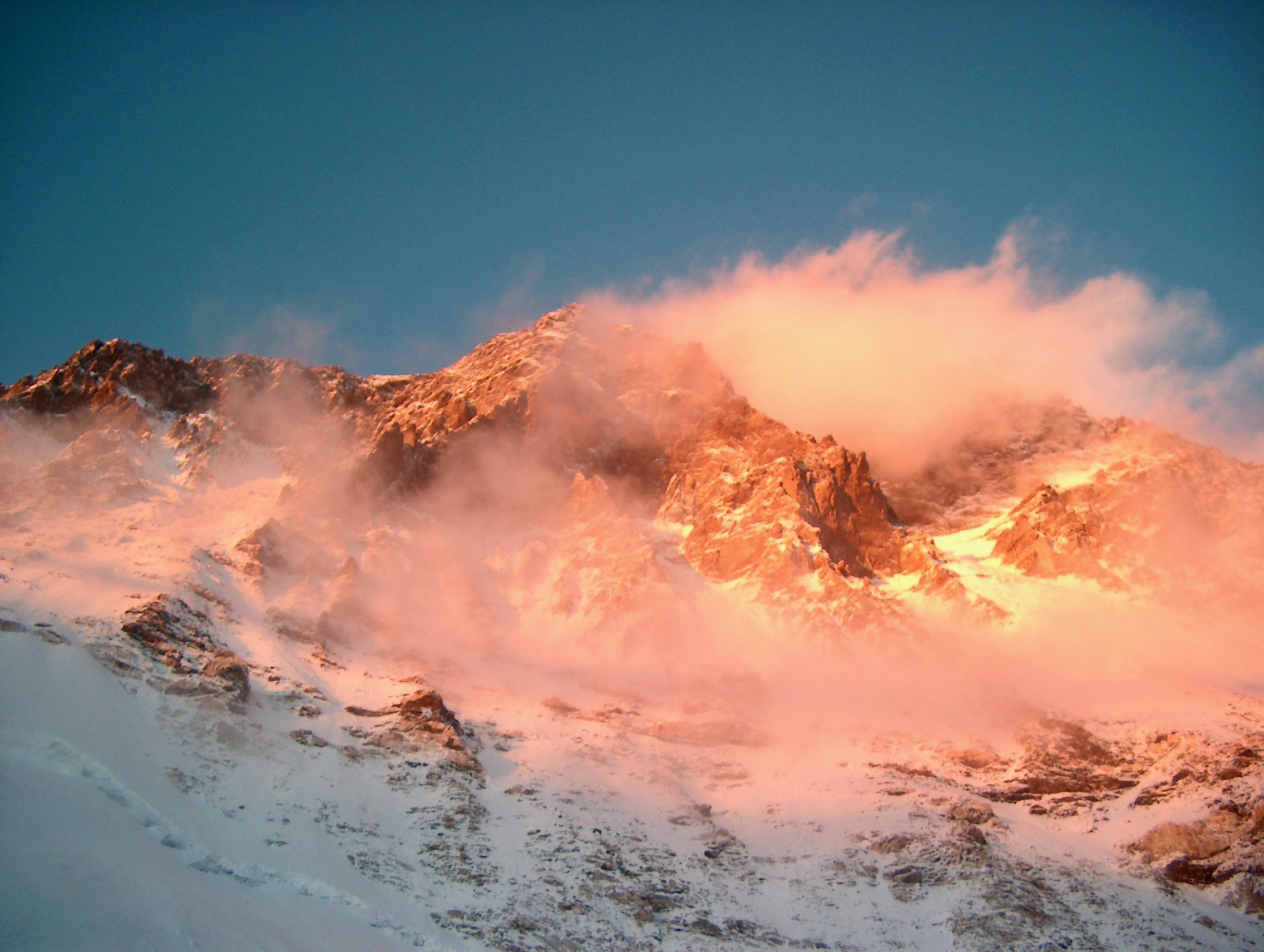
Welcome to Everest 2024. The season begins soon and I’ve already posted several Everest 2024 big-picture updates for this season:
- Everest 2024: Welcome to Everest 2024 Coverage – an introduction to the Everest 2024 Spring season.
- How Much Does it Cost to Climb Everest: 2024 Edition – My annual review of what it costs to climb Everest, solo, unsupported and guided.
- Everest by the Numbers: 2024 Edition – A deep dive into Everest statistics as compiled by the Himalayan Database
- Comparing the Routes of Everest: 2024 Edition – A detailed look at Everest’s routes, commercial, standard and non-standard.
This post takes a look at the cost to climb the Big E from the Nepal and Tibet sides.
2024 will be my 22 nd season of all things Everest: 16 times providing coverage, another four seasons of actually climbing on Everest, and two years attempting Lhotse.
I summited Everest on May 21, 2011, and have climbed it three other times (all from Nepal) – 2002 , 2003 , and 2008 , each time reaching just below the Balcony around 27,500′ (8400 meters) before health, weather or my judgment caused me to turn back. I attempted Lhotse in 2015 and 2016 . When not climbing, I cover the Everest season from my home in Colorado as I did in 2004 , 2005 , 2006 , 2007 , 2009 , 2010, 2012 , 2013 , 2014 , 2015, 2016, 2017 , 2018 , 2019, 2021, 2022 , 2023 and now the 2024 season.
2024 is my ninth year to blog: “ How much does it cost to climb Mount Everest? “
So, what does it cost to climb Mount Everest? As I’ve said for years, the short answer is a car, but the prices have skyrocketed, so now it’s a lovely car. Most people pay between $40,000 and $60,000, and some will pay as much as $160,000! But the prices are rising, and I don’t know where it will stop. Over the past ten years, companies with Western guides on the Nepal side have increased their average prices from $64,000 to $71,500 today, while Nepali guides have gone from $35,000 to $45,000 but heavily discounted by up to 25%. On the Tibet side, prices have exploded from $32,750 to $75,000. So, if you are on a tight climbing budget, go as soon as your skills, experience, and checkbook can support a safe attempt.
Here we go with a long and detailed look at Everest 2024. Please let me know if you see a mistake or want to add something.
Follow the 2024 Everest Coverage!
Preparing for Everest is More than Training If you dream of climbing mountains but are not sure how to start or reach your next level, from a Colorado 14er to Rainier, Everest, or even K2, we can help. Summit Coach is a consulting service that helps aspiring climbers throughout the world achieve their goals through a personalized set of consulting services based on Alan Arnette’s 30 years of high-altitude mountain experience and 30 years as a business executive. Please see our prices and services on the Summit Coach website .
There is a lot of detail here, broken down by:
- Big Changes
- Big Picture
Everest 2024 Outlook
Everest 2023 review, where does my money go.
- Permits and Insurance
- Supplies and Gear
- Logistics (Guide Services)
- Expedition Price Chart
- Reader Survey
- Guide Options
Why Everest?
Everest pictures and video, big changes.
The traditionalist will pine for the good old days when climbers ascended daring new routes with no support, no supplemental oxygen and didn’t brag about their feat until they returned home, no selfies from the summit for them!
Well, those days are long gone except for a handful of people across the globe. Today, people fill Everest’s slopes who never imagined they could get the opportunity. Style be damned. An entirely new generation celebrates the joy and satisfaction of what they accomplish. They don’t give the traditionalist any notice, only occasionally acknowledging that what the pioneers did in their day was truly special.
Climbing Mt. Everest has dramatically changed over the past several years. Today, Nepali companies dominate running commercial expeditions, hiring hundreds of Sherpas (and other ethnicities) to support a wide variety of customers. The traditional operators from America, Argentina, Austria, Germany, New Zealand, the U.K., etc., are still doing well. However, their teams are staying significantly smaller, having ten or twenty customers compared to 50, 60 or even 100 with the Nepali outfits.
The climbing model has completely changed. Decades ago, team climbers would contribute equally to carry gear and establish high camps. Supplemental oxygen was rare and ran at a relatively low flow of two liters per minute compared to today’s of four, even six and sometimes up to eight lpm. Also, today’s delivery systems are much more efficient.
The level of support has changed. From 1990 to 2000, the ratio of support (Sherpas) to clients was 1:0.79. From 2000 to 2013, it increased to 1:1.09; from 2015 to 2023, it leaped to 1:1.31. In 2022, it was a staggering 1:1.62, with 415 Sherpas summiting with 256 clients on the Nepal side. Today, more Sherpas and Tibetans have summited Everest than paying clients, 5,721 vs. 5,620.
I think it’s great to see Sherpas climbing for the joy and recognition of it, but we need to keep the criticism of the wealthy foreign lawyer paying to get dragged to the summit in check, given who is really climbing the peak today.
The demographic of those who are climbing has changed. While Americans, Britons, and Germans still flock to Everest, more Indians and Chinese are climbing the slopes. The Nepali companies have done an excellent job catering to this growing customer base.
The age of the average climber is growing. In 2008, the age group between 20 and 29 dominated those who summited at 29%. By 2023, that group shrank to 12%, and the 40 to 49 group swelled to 30%. By the way, the 50 to 59 ‘old-timers’ went from 7% to 18% in that same timeframe! Also, female climbers have grown dramatically, with 14% of the 2008 summiteers being female to 23% in 2023. The average in 2023 was 42 years old–43 for men and 39 for women.
Finally, fundamental problems remain unaddressed and ignoring Leave No Trace principles leads the list. Like on Aconcagua and Denali, Nepal must mandate using WAG bags to remove ALL solid waste from anywhere on the mountain. If the government doesn’t step up, all the operators must enforce this simple, inexpensive method of not adding to the waste problem, especially at Camp 2 and the South Col. This also applies to the Tibet side. Other issues range from fair wages for all workers, excessive use of helicopters, removal of old ropes, and more. They are well known, and it’s up to the major operators to lead the way.
So, things have changed. Some call it progress as more people than ever enjoy the sport; others call it a disaster that is ruining the sport and the mountain. No matter your side, it will never go back to what it was, so let’s examine how much it costs to climb Everest in 2024.
Big Picture – Nepal-Flat, Tibet-Soars!
The headline for 2024 is that prices continue to increase from all operators on both sides, but the price range, from lowest to highest, is the largest since I started this tracking ten years ago. The increases are because of inflation, labor wage increases, Sherpas with IFMGA certification receiving higher pay, more Nepalese regulations around minimum salaries and insurance, and a strong supply and demand environment from clients. As I have previously mentioned, there is an insatiable demand to climb the world’s highest mountain.
So, do you have to be rich to climb Everest in 2024? The Nepali operators have always been willing to deal, so take their list prices as an opening bid. With Nepal’s strong tourism business and high demand, Nepali companies will still deal but not as aggressively as in the prior years. You can get on a low-end, essential services-only trip for $30,000. As for dealing with foreign operators, don’t bet on a significant discount. It’s customary to offer a little off if you pay a year in advance, but that’s about it. They fill their teams months in advance, so there’s little incentive to discount.
The following chart breaks down the current MEDIAN prices (midpoint for prices with half above and half below this price) by style and route. I use the 2019 Tibet side prices since that was the last pre-pandemic year of climbing. I’ll go into more detail later in this post; however, you can quickly see how much the prices have increased on both sides for all styles. There are real costs the foreign operators have operating in Nepal that the locals don’t have, thus the major difference in the prices, but I’ll go into that later:
As for safety, people die on both sides. Most of the deaths these days are because of inexperience and not having a guide who “manages” your climb. However, choosing a competent guide could save your life.
I expect 2024 to be a big year for Everest-Nepal and the re-opening of the Tibet side to foreigners.
I suspect 2024 will be another busy year. First, there is the insatiable lure of Everest, and, as is the standard since 2013, droves of inexperienced climbers drawn by “no-experienced required” low-cost operators. However, 2024 will be different, with the north side open to foreigners and the last year before Nepal raises permit pricing by 36% from $11,000 to $15,000.
I expect 800 total summits from both sides this spring. Look for at least 150 Tibet-side total (members plus hired) summits and well over 650 on the Nepal side. With these numbers, they will still lag the pre-pandemic record set in 2019 of 877 total summits, comprising 661 from Nepal and 216 from Tibet. Last year, 2023, saw 655 total summits from Nepal and thirteen on Tibet. Let’s break all of this down and what our climbers can expect.
Who’s Climbing and New Rules?
In keeping with the pre-pandemic years, look for more climbers from China and India than ever. As I’ve detailed in the past, China requires all Chinese Nationals to climb an 8000-meter peak before climbing Everest from China; thus, many go to Nepal, where there are no experience requirements. As for the Indian climbers, it’s folklore that if you summit Everest, you can leverage that into fame and fortune – a considerable miscalculation by many. But many Nepali/Indian guide companies meet this market demand, plus create profitable businesses running training programs for the under-20 crowd and then take them to Everest. Unfortunately, this approach is a deadly gamble that may backfire one day.
Nepal announced only one silly new rule – that all operators must remove the body of the client who dies on the climb. There are no new rules to prevent deaths in the first place, only to remove the body.
The 2023 Everest spring season ended with some records to take pride in and others to be avoided. If there were one word to summarize the season, it would be chaotic or perhaps deadly. This spring was the deadliest season in Everest’s history. It was also brutally cold.
There were around 667 summits on the Nepal side and 16 from Tibet, which was still closed to foreigners. There was an all-time Everest high of 18 deaths – 6 Sherpas and 12 clients. In my estimation, 11 deaths were preventable.
Nepal issued a record 478 climbing permits to foreigners. Add in one and a half Sherpa supporting each foreigner; over 1,200 people pursued the summit this spring. Fears were rampant of a 2019 repeat with long lines and deaths. The lines never developed, thanks in part to colder weather that sent a higher number of climbers home in mid-season, many with a persistent virus. However, the deaths developed, but not because of the record permits or climate change.
About 667 reached the summit, with more Sherpas, 378, summiting than clients, 277, according to the Himalayan Database. Only 55% of the members who went above Base Camp, 483, summited, 277.
What stole the headlines were the daily reports of rescues, frostbite, missing climbers, and deaths. The root cause of the chaos is still elusive. Some blame the record permit numbers, inexperienced clients, and low-cost operators. However, Nepal government officials cited climate change. Blaming climate change is a red herring to abdicate responsibility by operators and authorities. 5
There are four major components to any Everest climb, regardless of whether you are climbing from Nepal or Tibet: travel, permits/insurance, supplies/gear, and guides. For 2024, there will be no significant changes to this cost structure. The following discussion breaks down the expenses as if an individual wanted to climb without joining a team, but almost no one does this, as the numbers will show – it is just too expensive or risky.
I know a few individuals climbed on the cheap in years past, but few in the last five years. I usually get a reply to this article saying, “Alan, you’re crazy. I climbed Everest and only spent $5,000.” Congratulations if that’s true, but chances are it was in the last century, was illegal (no permit), or on the North before China raised their prices and put in team size minimums. If someone can tell me how to climb that inexpensively in 2023, contact me with the details.
1. Travel $500 – $10,125
The travel costs entirely depend on where you live and how you like to travel. It can range from a few hundred dollars to over $7,000 to fly to Nepal from the United States in Business Class. Most people use Thai, Turkish, Qatar, Air India, or China Eastern to reach Nepal.
Once in Kathmandu, it would be best if you flew to Lukla, Namche, or Lhasa to start the journey to base camp, so add a few hundred dollars for this airfare. But, of course, you can take a bus to Jiri and trek five days to Luka and then on to EBC to save a little money.
From Lukla, it takes a little over a week to trek to base camp, acclimatizing along the way, so add food and lodging along the way for you and your support team. The trek costs can range between $400 to $1,000 per person. But, depending on your travel style and how many beers you buy, you can save money. Remember that everything becomes more expensive the closer you get to Base Camp, so buy batteries, toilet paper, etc., in Kathmandu, Lukla, Namche, or, better, at home.
Teahouses have dramatically increased their prices in Khumbu. You can still find the $7 per night teahouse, but expect to pay $5-10 for each meal. Climbers can always camp in tents and cook their meals to save money, but if you camp and eat in the teahouse, expect to pay four times the price if you don’t sleep in the teahouse; they make their profit from selling meals.
You must get yourself and all your gear – tents, food, oxygen, etc., to base camp. Most people use porters and yaks, costing at least $20 per day per load but usually higher, which usually totals over a thousand dollars. Large operators will hire helicopters and bundle the expense with the overall price. On the Tibet side, your climbing permit includes all transportation–a 4WD driven by an employee of the China Mountaineering Association (CMA). In addition, the CMA will meet you where you arrive in China and never leave you during the entire expedition except when you climb above base camp.
Travel $2,525 – $8,425
- Airfare is $1500 to $7000 depending on class and routing, and excess baggage
- Transportation from Kathmandu to Lukla is $400 round trip per person
- Hotel and food in Kathmandu are $300 to $700 depending on delays and quality level
- Nepal Visa $125 (90 days)
- Immunizations $200
Getting to EBC $1,240 – $1,800
- Yaks to and from Base Camp $40 per yak per day carrying 120 lbs (4 yaks for four days minimum or $640)
- Extra Yak in China is $300/Yak
- Porters to and from Base Camp: $20 per porter per day carrying 60 lbs (3 porters for six days minimum or $360)
- Tea Houses and food on the trek to EBC $20 – $100/person/day – 7 days $140 – $700
- Park Fee $100/team
2. Permits and Insurance $9,950 – $29,500
Nepal has a $11,000 permit fee per individual, which will increase to $15,000 in 2025. It simply allows a climber to climb. In Argentina for Aconcagua or Alaska for Denali, the $800 or $365 permit helps fund high-altitude ranger camps, hire seasonal staff, provide mountaineering information, and keep the mountain environment clean. When you climb on Denali, the permit includes helicopter evacuation for life or limb emergencies but not for low-level sickness.
Nepal requires a local company to organize your permit at $2,500 for the team, a refundable trash deposit of $4,000 per permit, and a Liaison Officer costing $3,000 per team. These total $9,500 BEFORE the $11,000 per person climbing permit. So before you hire guides, yaks, food, or gear, you must come up with almost $20,000 in Nepal.
In 2013, Nepal implemented a new rule that requires every foreign climber to hire a local Sherpa Guide. It is still there for the 2024 season, but this policy is unevenly enforced, if at all. While it is very unclear how or if this rule is enforced for every operator, it would add a minimum of $5,000 to the absolute lowest cost. In 2017, one person who climbed without a permit was caught, deported, and banned from climbing in Nepal for five years by the Nepal authorities. Both sides are cracking down on unauthorized climbing, so beware.
Most guide companies on the Nepal side will require at least evacuation insurance, and most require medical coverage. One of the best investments you can make is to add trip cancellation to the policy, but it’s expensive. In both 2014 and 2015, when the Everest season ended early, those with trip cancellation/interruption coverage had 100% of their trip expenses reimbursed, some as high as $45,000.
Several companies provide coverage for medical evacuations from the injury point to a local or home medical facility. Some cover trip cancellations and others offer medical insurance. These policies have become very expensive in 2024, so shop around. Many operators have discounts arranged with these companies if you reach their website through your guide’s website or call them. Travelex , Global Rescue , Redpoint Ripcord Rescue Travel Protection , AIG Travel Guard , and International Medical Group’s TravelLX are all good.
To save money, joining the American Alpine Club will provide $7,500 in evacuation coverage to a local hospital and $300,000 to get you back home. These are bargains at $65/year and $250/year, respectively. Most people upgrade that basic coverage for a few hundred dollars. Global Rescue and Redpoint’s Ripcord Rescue Travel Protection program are other popular evacuation companies but have become very expensive.
With all these policies, to be covered, you must follow their rules strictly, and I mean precisely. One misstep and the policy will not cover your expenses. Again, exactly. Also, most do not cover searches if you get lost, and those who offer coverage have low limits.
The Chinese increased climbing permits for Everest in 2019, eliminating a low-cost, single-person climb from Tibet for under $20,000. This change forces climbers to team up with at least three other members. This three-person requirement is not a big deal for independent climbers since many guides are glad to have you on their permit for a small fee and not provide any support.
An Everest climbing permit from the Chinese (Northside) is now between $15,800 and 18,000 per person for a team permit of 4 or more. This price includes transportation from the entry point in China (usually Lhasa or Zhangmu–Kodari) to base camp, hotels, liaison officer, trash fee, five yaks in, and four yaks out per member. In addition, there is an extra charge of $200 per day per person for time spent in Lhasa. If you want to bring a Nepali Sherpa to climb with you in Tibet, budget an additional $4,500 for each Sherpa’s “work permit,” as required by the CTMA, plus a salary of $5,000.
The Tibet side is more complicated for evacuation insurance since a centralized team performs all on-mountain rescues. The rescued climber is on the hook for an unspecified and unlimited fee. Helicopters are not allowed but are rumored to begin in the next few years, maybe by 2026. It would be wise to double-check everything with your provider and evacuation coverage company to understand the details when climbing in China.
Climbing Fees $20,600 – $25,650 (Nepal)
- The Nepal Agency fee is $2,500 per team (usually included in the total price from a guide)
- Nepalese Liaison Officer $3,000/team (usually included in the total price from a guide)
- South Base Camp Medical support from EverestER $100/person
- Nepal permits $11,000 for each climber, regardless of team size
- Chinese permit is between $15,800 and 18,000 per person for teams of 4 or more. $4,500 for each Nepali Sherpa
- Nepal garbage and human waste deposit $4,000/team permit (refundable but not always)
- Tibet garbage and human waste deposit $4,000/team permit (refundable but not always)
- Icefall Doctors to fix route $2,500/team or $600 per climber
- Contribution to fixed ropes above Icefall $200/climber, higher on the Tibet side
- Weather forecast $0 to $1,000
Insurance $70 – $3,000
- Evacuation Insurance $70 (American Alpine Club) – ~$500 (Global Rescue/Travelex)
- Medical only $500
- Rescue Insurance for any reason with medical insurance and trip cancellation coverage – $3,000 to $15,000 (Travelex)
- Private pay helicopter evacuation from Everest South – $5,000 – $20,000 depending on start and end locations (not available in Tibet)
- All insurance figures are representative and will vary widely with age, length of trip, and total cost.
3. Supplies/Gear $ 5,000 – $30,000
You will need to eat and stay warm, and 97% of all Everest summiteers use supplemental oxygen. You can cook your food, but most people use a cook and helpers, costing $5,000 for base camp and budgeting about $800 per person for food and fuel while climbing Everest over six weeks.
Supplemental oxygen runs about $600 per bottle with a minimum of 5 bottles totaling $3,000. But you will also need a mask at $500 and a regulator at $500. You can carry your extra oxygen to the high camps, but most people use the Sherpas to cache them at the high camps. When hiring a personal Sherpa, the standard is for him to climb on oxygen, albeit at a lower flow rate, so this will run between an additional $4,000 to $10,000.
Finally, you will need climbing gear, including boots, a down suit, clothing layers, gloves, sleeping bags, packs, and more. These items will cost at least $9,000 if you buy everything new. High altitude boots from La Sportiva or Millet run $1,200, a full down suit from Feathered Friends or Mountain Hardwear is over $1,200, and a sleeping bag rated to -20F is at least $800.
You can often find lightly used climbing gear on eBay or less expensive gear in Kathmandu. I recommend buying boots at home so you can get the correct size. Remember that your feet will swell by at least a full size at high altitudes, so buy your boots and try them on at home with your climbing socks to test the fit before leaving for the climb.
Misc $14,450 – $23,000
- Full Medical kit $1,000 – $1,500 – add $2,800 for Gamow Bag
- Sherpas, cooks tips and a bonus of $450 – $4,000++ per individual depending on performance and summit
- Personal Gear (down suit, high altitude boots, sleeping bags, etc.): $9,000
- Satellite phone (own) $1,000 to $3,000 depending on usage
- Gear allowance for Sherpas $3,000
EBC and High Camps $3,800 – $8,800
- Tents $3,000 new (sleeping, cooking, toilet, storage at four camps for three people)
- Cooks $5,000 per cook and assistant for six weeks
- Food and fuel are $800 per person for six weeks
Climbing Support $4,000 – 15,000
- Oxygen $600/bottle (5 bottles) $3,000 (doesn’t include costs to take to high camps)
- Oxygen Mask (Summit Oxygen) $500
- Oxygen Regulator $500
- Climbing Sherpa $5,000 – $9,000 per Personal Sherpa with oxygen at $3,000
See my current gear list.
4. Logistics (guide) $30,000 – $85,000
With all the previous costs broken out, it can be overwhelming. But don’t despair; you can join a fully supported or guided team that manages everything.
For decades, western operators like Adventure Consultants, Alpine Ascents (AAI), Jagged Globe, International Mountain Guides (IMG), and a new generation like Furtenbach, Madison Mountaineering and Climbing the Seven Summits have guided hundreds to the top of Everest for prices ranging from $49,000 to $115,000, all-inclusive.
But that is changing. There has been intense competition from Nepali-owned and operated companies in the last few years. With over 100 Sherpas having ten or more Everest summits, they advertise as Everest Guides and eliminate the traditional Western Guide, who earns between $15,000 and $25,000 for the season. This cost-saving is passed through to the clients. In 2024, lead Sherpas earn salaries similar to Western Guides, so the price gap is narrowing, but the Nepali companies are still less expensive, as we will discuss.
Some, not all, Nepali operators are well-known for underpaying their staff, thus charging half to a third of traditional Western operators for a Nepal Everest expedition. In 2024, some Nepali operators are reportedly offering their Everest expedition for as low as $30,000 per climber. One common trend is that almost all Nepali guides will privately negotiate and discount, while most foreign operators will not.
Many of the lead Sherpas now have a subset (no ski qualification, for example) of the IFMGA certification with more summits than many Western guides. This certification allows the Sherpas to earn up to $10,000 for the Everest season compared to $4-5,000 previously. This trend will drive up the cost of the Nepali companies over time as more and more Sherpas become certified. One Nepali operator charges an additional $10,000 if you want to climb with an IFMGA-certified Sherpa guide.
With all this background, I used public websites and my research to compile the 2024 Everest fees from the major Everest guide companies. Remember, there were virtually no climbers on Everest in China in 2021, 2022, and 2023.
This list is not comprehensive of all guides, and I did not look at small one-person operations or those who do not run climbs each year for more than one or two members. I’m not making endorsements by including or excluding a company from the list. It’s for reference only. Check with the operator for details and questions.
Almost all guides increased their prices, but non-Nepali operating with a Western Guide on the Tibet side increased their fee an average of 23% from 2019, the last full year of climbing that included foreign expeditions. New Chinese rules and increased permit fees primarily drove the cost increases. The Nepal side operators increased by between 1 and 4%. Without a doubt, climbing with a Nepali-owned company is half the price of a foreign operator with multiple Western guides. However, some foreign companies offer Sherpa lead trips that can be very price-competitive.
Prices usually include full logistics support, gear, food, Personal Sherpa, oxygen, mask, and regulator. You can see my thoughts on Everest guides on my main site at Selecting a Guide .
2024 Expedition Price Chart
Unlike most foreign operators, many Nepali companies no longer list their prices, claiming there are too many options and need to speak directly with the potential client.

Would you climb Everest?
- Yes, it is in my plans
- Yes, I hope to if I can get the time, money ...
- No, I like following but have no desire to climb
- No, I don't have the skills
View Results
Which Guide service would you use for Everest?
- Western company with long history on Everest i.e. Adventure Consultants
- New western company that uses new techniques i.e. Furtenbach
- Nepali company with long history i.e. Asian Trekking
- New Sherpa owned guide service i.e. Seven Summits Treks
- Whoever has the lowest price
- Whoever has the best safety record
- Whoever has the best references from trusted friends
How much would you pay to climb Everest?
- 15K - $25K (31%, 2,192 Votes)
- $35K - $50K (23%, 1,621 Votes)
- $65K plus (19%, 1,307 Votes)
- $25K - $35K (14%, 952 Votes)
- $50K - $65K (14%, 950 Votes)
Total Voters: 7,022
Who Guides on Everest?
There are no enforced requirements to call yourself a guide in Nepal. In fact, the Nepal Ministry of Tourism calls every Sherpa a ‘Sherpa Guide’ regardless of their training or experience. However, this is slowly changing as more Sherpas attend basic climbing and first aid courses at the Khumbu Climbing Center.
There are three options for supported climbs: Sherpa-supported, Sherpa-guided, and Fully-guided commercial expeditions. I have changed from using “Foreign Guide” to”Fully Guided” as several of the Nepali guides are doing an excellent job, so the term “fully” is more inclusive. All leverage groups cost, such as deposits, cooks, and tents across multiple climbers.
All teams on both sides use the same ladders and ropes installed by dedicated Sherpas, Tibetans or a joint effort by commercial teams. Some outfits will market that their price includes ladders and ropes, but it’s not a difference when everyone has access to it at the same prices.
In comparing prices, note that any non-Nepali company must buy an $11,000 climbing permit for each person on the team, and that includes guides. Nepali citizens pay $560 for a climbing permit, thus saving thousands of dollars for the overall expedition. Those savings are passed on to clients in order for Nepali operators to offer lower expedition prices.
One final thought: I think all these models can get the appropriately experienced client safely to the summit of Everest and back home; however, your experience and style may differ dramatically. I always suggest getting references from someone similar to you in climbing experience, age and budget. I regularly recommend these models to my Summit Coach clients.
Let’s look at them:
Sherpa Supported Expedition
Please note this is Sherpa-supported , not guided and what most Nepali-owned companies offer, even though they call each Sherpa “guide.”
For about $45,000, you can climb on a Sherpa-supported expedition. The cost is roughly the same as last year. The company organizes all the logistics: permits, food, group gear, transportation, plus Sherpa support but does not provide western guides. Sometimes, there will not be a lead Sherpa guide or a Personal Sherpa who will climb with you throughout the expedition, but only be with you for the summit push.
The Sherpas may or may not speak English well, and some will probably follow your lead to push forward or turn back. You are fully responsible for your safety and life.
You must be extremely careful when selecting among these companies as some are excellent and others lacking. A Sherpa will climb with you on summit night, but you might be on your own with random teammates throughout the rest of the acclimatization climbing process, including preparing meals at the high camps. It is common to find yourself climbing only with a Sherpa or by yourself. The Sherpas may have attended a climbing school, like the Khumbu Climbing Center (KCC). Still, they may lack suitable medical training and not be of significant help in a health crisis other than getting you lower, which is substantial and often life-saving.
Asian Trekking specializes in this style of climb and is outstanding. 8K Expeditions, Thamserku, Pioneer and Seven Summits Treks are good options at a lower cost. Many small one-person Nepali companies offer even lower prices. Look to pay between $35,000 and $45,000 for this option. This option is suitable for climbers with significant high-altitude experience, including other 8000-meter peaks like Cho Oyu or Manaslu. It is not for the novice or first-timer on an 8000-meter peak.
Sherpa Guided Expedition
Please note this is Sherpa-guided , not supported.
International Mountain Guide’s (IMG) Classic Everest climb is a Sherpa-guided expedition that has an experienced Sherpa lead climber throughout the route. IMG charges $49,500 for this model. Climbing The Seven Summits offers a similar program for $54,000. Nepali operators like 8K Peaks, Expedition Himalaya, Imagine Nepal, and Dreamers Destination are good local options. Usually, this model depends on a highly experienced senior Sherpa, or Sidar, to make big decisions, such as when to go for the summit or turn around. Also, there is often a Westerner or extremely experienced Sherpa overseeing the expedition in Base Camp, but not climbing.
An option is hiring a Personal Sherpa for an additional $5,000 to $10,000 plus 5% to 20% for tips and bonuses. These Sherpas have gained significant experience and training in dealing one-to-one with Western members. Their English skills are usually excellent but similar to a Sherpa-supported climb, they may lack formal medical training but have tremendous real-world experience, and you will never climb alone.
While they will not carry all your gear, they may offload some items from time to time. They will be with you exclusively on your summit night, even if you turn around before the summit. This style is appropriate for climbers with 7000-meter experience (e.g., Denali, Aconcagua) and strong climbing skills, but not for novices. I used this model with IMG and Kami Sherpa in 2011 for my summit and was very pleased.
Fully Guided
Please note this usually implies Western Guid e leading the climb.
Fully guided expeditions are ‘full service’ trips and are most appropriate for climbers with 7000-meter experience (e.g., Denali, Aconcagua), first-time Everest climbers, or anyone looking for more support . The cost varies widely, ranging from $65K to over $125K. The fee includes all the services of a Sherpa-guided climb plus sharing one or more extremely experienced Sherpa and/or Western guides. Usually, they have IFMGA certification. If you want a personal western or high-profile Sherpa guide, expect to pay $120K or more, plus tips and bonuses close to $175K. A few are asking for several hundreds of thousands.
The primary point of this approach is that you are climbing close to a highly qualified guide who has most likely summited Everest and other 8000-meter mountains many times. There are usually no language barriers, and many will have, at minimum, Wilderness Medical Training (WMT) or better. The guide will make all the decisions about turnaround times, weather, and emergency management.
On these high-end expeditions, you should have high-quality food ranging from better prepared to exotic. For example, one operator likes to promote its sushi and another 5-star chef. Then there are espresso machines and open bars – the sky’s the limit, all at a cost. The most expensive guide companies (Adventure Consultants, AAI, Alpenglow, Furtenbach, CTSS, Madison, etc.) always come with several highly qualified guides, and you never climb alone.
Top, Top End
Seven Summits Treks, which caters to the Chinese market, offers “VVIP Everest Expedition 2024.” They no longer list prices on their website, but the last time they did, it was $130,000, probably higher now. It includes:
- Training: Ice wall and Ladder training at Basecamp by UIAGM Guide.
- Base Camp: Personal the North Face / Kailas Tent for Members, Private Kitchen tent, Private Dining Tent, One Communications Tent, Private Shower tent, Private toilet tent, and Kitchen Utensils. Also, private camp at each high camp.
- High Camps: High Altitude Tent, Necessary cooking EPI gas, cooking pot for a member, High food for a member, Sherpa, all climbing and cooking crew at (C1) (C2) (C3) (C4). All climbing gears, fixed and dynamic rope during the climbing period, as required.
- Helicopter Service: All Helicopter flights are as per the Itinerary. From Kathmandu to Namche, Namche to Dingboche, during the expedition, and after the expedition from Everest BC to Kathmandu, Helicopter flight from Everest base camp – Kathmandu – Everest Base camp via Namche (1 time).
- One UIAGM-certified Guide.
- Over three times or equivalent 3 Everest Summiteer Sherpa.
- Twelve bottles supplementary Oxygen (02) cylinder.
- 24 hr Personal mountain medical doctor for any injuries during the expedition.
- Rescue Team of Sherpa at Camp 2, for emergency and rescue purposes.
- 24 hr satellite phone and internet facilities.
- Unlimited Internet
- Additional Lobuche Peak Climbing Package inclusive.
- One Personal Photographer during the trip.
Another top-end option is from Austrian-based Furtenbach Adventures with their Signature Everest Expeditions. For $217,000, you add to their high-service standard trips:
- All services of our Everest Flash™ Expedition North or Everest Flash™ Expedition South, i.e., a minimized expedition duration of just three weeks through pre-acclimatization, as well as the following private services:
- Full support (including throughout the pre-expedition preparation phase)
- Private mentoring from Lukas Furtenbach
- A personalized training plan put together by a professional Sports Physiologist
- Personalized nutrition plan and consultation with a certified High-Performance Sports Dietician
- Pre-expedition medical consultation by a High-Altitude Doctor
- Private IFMGA / AMGA mountain guide for the duration of the whole expedition
- Two personal Climbing Sherpas with a minimum of 5 Everest ascents to their name
- Premium accommodation in Kathmandu/Chengdu and Lhasa
- 80 m2 heated dome tent with private bathroom in Basecamp
- VIP transfers
- Unlimited supplemental oxygen
- Unlimited medical advice from the team doctor
- Video footage and photographs of your expedition
And not to be left out is Climbing the Seven Summits’ high-end trip notion they call the “8848- The Residence.” There is an unspecified additional fee on top of the standard fees that ranges from $50,000 to $120,000.
- Private ensuite with hot shower
- Private WC and washbasin with mirror
- Personal stove heater
- A King sized bed with a comforter & pillows
- CTSS unichill onesie PJs
- Personal charging facilities, overhead lighting
- Table and chair to create a private workspace that allows professionals and business executives to productively use valuable downtime at base camp to continue to manage work obligations or to simply keep up with friends and family and update social media.
- A chest of drawers and a clothes rack
- Raised, carpeted flooring to insulate from the glacier
- Personal humidifier
- Morning beverage service
- Single rooming throughout the expedition in Kathmandu & teahouses
Note that almost every foreign guide company offers multiple options today, from Sherpa-guided/supported to Western-guided to private climbs. Also, most companies now offer climbs to Camp 2 or the North Col and not to the summit. Some are supplying oxygen and a person Sherpa for each climber.
Rapid Climbs
A relatively new option offered by many foreign guides and a few Nepali ones is the fast climb of two to four weeks. The primary market is people who can spend over $100,000 but cannot be away from work for more than a month. Alpenglow and Furtenbach have been the most aggressive with this model, but others offer it.
The rationale is that you conserve energy and reduce the risk of illness by minimizing your time on the mountain. Using an altitude tent 30 days before leaving home, you arrive at base camp acclimatized to at least 17,000 feet. Thus, you eliminate one or more acclimatization rotations and increase your chances of summiting. And, of course, you can hurry back home and get back to work as soon as possible.
The package usually includes pre-acclimatizing in an altitude tent a month before leaving home, an IFMGA guide, virtually unlimited oxygen flowing up to 8 lpm in some cases, and plenty of Sherpa support. Unfortunately, this extra support drives the price to $100,000 or more.
Let’s look deeper at a few questions.

Do I have to take the standard routes?
No. You can get a permit to climb any of the 20 named routes on Everest or make up your own. If you want to traverse Nepal to Tibet or the other way, you will need to get permits from both countries; however, China has refused to issue permission from their side for many years. In 2017, a climber illegally made the traverse and was deported and banned for five years. He claimed it was a medical emergency.
Can I Climb Everest Alone?
Officially no. The Nepal Ministry of Tourism requires every climber to hire a Sherpa guide. The CMA has a similar requirement. But like everything around Everest, there are exceptions, and most rules are never enforced. In my opinion, the only actual solo ascent of Everest was by Reinhold Messner on the Tibet side in 1980, but even he had a base camp cook.
Climbing Everest alone on the standard route is almost impossible because of the crowds, especially in spring. Perhaps a quiet climb in summer or winter, when few people attempt Everest, would work; however, the Sherpa requirement is theoretically still in place.
What is the minimum I can spend to climb Everest?
You can climb independently without oxygen, Sherpa, or cook support, only paying for ropes on the south side to save money. Avoiding using the ladders in the Khumbu Icefall would be almost impossible, but you could climb to the Western Cwm on Nuptse’s lower slopes and bypass the Icefall.
For one person, this would cost at least $31,000 from Nepal. See “Permits and Insurance” above in this piece. With the minimum rules on the Tibet side, it would be challenging to climb alone. Even splitting group expenses, the base costs add up to $26,000 each for a seven-person team. When you add in oxygen and base camp support, a one-person climb with Sherpa support approaches $45,000, and a seven-person team leveraging the group costs comes in at $37,000.
Old-timers will brag about climbing Everest in the early 2000s or before for $5,000. Even then, this price assumed no support, no oxygen, no contribution to the fixed ropes or ladders, no weather forecasting, etc. This post takes most people who want to climb relatively comfortably and not eat rice every meal for six weeks.
What is the difference between a $30K and a $65K Everest Climb?
There is a real difference in offerings by some companies and very little with others, so it’s up to the climber to shop wisely.
The general rule is that the lower the price, the larger the team. A high-volume team may have 50 clients at $30,000 each compared to a small team with 10 clients at $75,000 each. In other words, $1.5M vs. $750,000 – it’s all about the business model, similar to airlines.
At the high end, it is often profit, overhead, and the number of Western or highly qualified IFMGA guides. Also, how many services are bundled into one price versus offered as options? The lowest price outfits promote a low price and offer “options” such as oxygen, Sherpa support, or even food above base camp. One UK-based outfitter provides a low price for the north side but does not include oxygen, summit bonuses, or other options that almost everyone has at their base price.
Another common practice to keep expedition costs low is to pay support staff the absolute minimum, whereas fully guided expeditions usually pay a livable wage for their entire team. But often, it is the availability of resources:
- Extra Sherpas
- Backup supplies (ropes, tents, oxygen bottles, etc.)
- Medical facilities
- Communications and profit
- Overhead for the operator
One well-known low-cost operator had their tents destroyed one year, had no backup, and had to beg other operators for spares … they also ran out of food.
An example of price confusion is Sherpa’s bonuses. A low-price service may not include a bonus, whereas another may. For instance, one Nepali company asks the climber to pay $1,500 to their Sherpa if they reach the South Col and another $500 if they leave for the summit. The tips are in addition to the base price. But a different company includes these bonuses in their overall package. Tipping your Sherpa and Western guide an additional amount is customary in both cases.

Statistics Updated through January 2024
The Himalayan Database reports that through January 2024, there have been 11,996 summits (5,899 members and 6,097 hired) on Everest by all routes by 6,664 different people. Those climbers who have summited multiple times include 1,571 members and 1,048 Sherpa, for 5,333 total summits. There have been 883 summits by women members.
Summits The Nepal side is more popular, with 8,350 summits compared to 3,646 summits from the Tibet side. Only 1.9% or 224 climbers summited without supplemental oxygen. Only 35 climbers have traversed from one side to the other. Member summit success stands at 39%, with 5,899 who attempted to summit, making it out of 14,496 who tried. About 62% of all expeditions put at least one member on the summit. Few climbers from both Nepal and Tibet have summited, only 668. And even fewer, 155, have summited more than once in a single season. Almost only Sherpas, 78, have summited within seven days of their first summit that season. Kami Rita Sherpa (Thami) holds the record for most summits at 29 and Kenton Cool, UK, at 17 for a non-Sherpa. Seven Sherpa have 20 or more summits. Member climbers from the USA have the most country member summits at 906.
How Safe is Everest?
As for Everest deaths, 327 people (199 Westerners and 110 Sherpas) died from 1922 to January 2024. These deaths are about 2.7% of those who summited for a death rate of 1.11 of those who attempted to make the summit. Westerners die at a higher rate, 1.38, compared to hired at 0.87. Descending from the summit bid is deadly, with 92 deaths, or 28% of the total deaths. Female climbers have a lower death rate at 0.81 compared to 1.14 for male climbers, and 14 women have died on Everest.
The Nepal side has seen 217 deaths or 2.8%, a rate of 1.14. The Tibet side has experienced 110 deaths or 3%, a rate of 1.09. Climbers from the UK and Japan have the most all-time deaths at 17. Most bodies are still on the mountain, but China has removed many bodies from sight on their side. The top causes of death are avalanches (77), falls (75), altitude sickness (45), and exposure (26).
Everest is becoming safer even though more people are now climbing. From 1923 to 1999, 170 people died on Everest with 1,170 summits or 14.5%. But the deaths drastically declined from 2000 to 2023, with 10,826 summits and 157 deaths or 1.4%. However, four years skewed the death rates, with 17 in 2014, 14 in 2015, 11 in 2019, and the record 18 in 2023. The reduction in deaths is primarily because of significantly higher Sherpa support ratios, improved supplemental oxygen at higher flow rates (up to 8 lpm) gear, weather forecasting, and more people climbing with commercial operations.
Latest: Spring 2023 In 2023, there were 667 summits, including only 12 from Tibet, as it was closed to foreigners but 665 from Nepal, and all but 3 used supplemental oxygen. There were a record 18 deaths of Everest climbers. 57% of all attempts by members were successful. Of the total, 61 females summited.

Both sides have a lot to offer: the Mallory and Irvine mystery in 1924 in Tibet and Nepal, with the first summit by Hillary and Norgay in 1953.
The comparison between sides is pretty simple. The north is colder, windier, and dustier; some feel technically harder since you climb on more exposed rock.
The south has the Khumbu Icefall, which some now fear. However, I believe the facts don’t support the fear. Through spring 2023, o ut of the 220 total deaths on the Nepal side, 46 occurred in the Icefall. By the way, virtually all of these deaths were Sherpas ferrying loads to camps in the Cwn and above.
- 22 – Avalanche (most from Everest West Shoulder from the hanging seracs)
- 18 – Icefall Collapse (Similar to what we saw in spring 23-023, taking three Sherpas)
- 5 – Fall/Crevase
- 1 – AMS
So, while these deaths, especially when they happen in great numbers like in 2014 and 2023, garner media attention, that’s not the real story being inexperienced clients with unqualified guides taking unnecessary chances regarding weather, climbing conditions (fresh snowfall- avalanches) and too little supplemental oxygen for a “normal” person, and not turning back when they get in trouble. All of these are avoidable.
Since 1953, there have been 11,996 summits of Everest through January 2024, on all routes, by 6,664 different people. Climbing from the Nepal side is the most popular side and has a higher death total and death rate with 8,350 summits with 217 deaths through January 2024 or 2.6%, a rate of 1.14. The Tibet side has seen 3,646 summits with 110 deaths through January 2024 or 3.0%, a rate of 1.09.
When choosing sides, remember that as of 2024, China does not allow helicopter rescues on its side. However, that might change as they are building a massive mountaineering center at the base camp to cater to tourists, and they have said they will start helicopter rescues as part of the center. This has been rumored for years, so I doubt we will see chopper rescues anytime soon.
One can cherry-pick the numbers to prove almost any point on which side is safe. The death rate in Nepal is 1.14, and in Tibet is 1.09. The bottom line is death happens on both sides of Everest, and it often comes down to being in the wrong place at the wrong time. A lot comes down to the experience you are seeking.
Should I Use Supplemental Oxygen?

It is rare to summit Everest without using supplemental oxygen; only 221 people ever have. Digging deep into the data reveals that of the 327 deaths, 178 were not using O’s when they perished, but this is a bit misleading because, for many of the deaths, 105 were doing route preparation, primarily by Sherpas. Most would not have used Os because they were low on the mountain. A case in point was the 2014 ice serac release and the 2015 earthquake that killed 31 people, and they were below Camp 1 and not using oxygen.
Looking at climbing in modern times, i.e., from 2000 to 2023, we can see that 88 members (not Sherpas) summited without supplemental oxygen, and 28 died, or 32%. This rate compares with the 4,832 members who summited with Os, and 60 died or 1.2%. In other words, you are 26 times more likely to die if you don’t use supplemental oxygen.
Supplemental oxygen gives the body a 3,000-foot advantage. In other words, when the climber is at 28,000 feet, the body feels like 25,000 feet. The main benefit of supplemental oxygen is that you feel warmer, thus allowing the heart to pump blood and oxygen to fingers and toes, thus reducing the risk of frostbite.
While climbing without Os is a serious accomplishment, it is not for everyone. Many try, and few succeed.
How Do I Pay for an Everest Climb?
Getting the money is almost always more challenging than climbing Everest. People become very creative when finding money. Some take out loans and refinance their home mortgage; others have the infamous “rich uncle.” Then some set up a website to sell t-shirts or ask for “donations” from strangers. Believe it or not, this works to raise some money but rarely enough to cover all the expenses.
But the most common way to fund an Everest climb is to make it a priority in your budget by setting money aside each month for as long as it takes. This approach is how I funded 26 of my big climbs since starting at age 38.
The question of obtaining a sponsor often comes up. Unfortunately, getting sponsored by a large outdoor gear or other company is extremely difficult. People have more success with large corporations like insurance or banks. There are ways to obtain a sponsor, but it takes years of work, a solid plan, and proven experience, and it often comes down to who you know and a lot of luck.
Climbing for a charity or a cause is popular, but be careful not to use your cause to fund a climb. In my opinion, asking for donations to pay for a climb is a poor practice.
You can read more about my own experiences with The 7 Summits Climb for Alzheimer’s: Memories are Everything and thoughts for sponsorship at this link .
What are my Chances?
Be wary of claims of 100% summit success. Recently, operators have calculated success by counting only those who left the High Camp for the summit. They don’t include anyone who paid to climb Everest with them, arrived at Base Camp and didn’t leave for their summit bid from the High Camp. In other words, they may have started with 20 people, had five drop out before the summit push, and another three give up before reaching the South Col, leaving 12 to go to the top. All ten made it, so they claim 100% when it’s 60%.
Historically, about 62% of all expeditions have put at least one member on the summit. In recent years, long-time western operators like Jagged Globe, Adventure Consultants, Furtenbach, Madison Mountaineering, and others regularly put almost every member on the summit. Today, operators use the standard routes, so there are fewer unknowns. That, along with improved weather forecasting, extra supplemental oxygen, and generous Sherpa support, has made Everest one of the safest 8000-meter mountains and the most summited 8000er by a considerable margin.
Let’s wrap up with why even climb Everest at all. It is trendy to criticize anyone who has climbed or is planning a climb. Jon Krakauer’s book Into Thin Air set a negative tone and profiled climbers as rich, inexperienced, and selfish after his one climb in 1996. In my experience with six climbs on Everest or Lhotse, the opposite is today’s reality.
To be fair, in recent years, the marketing of low-cost expeditions has attracted inexperienced climbers. This price move is all about supply and demand. All the puffery from the Nepal government about making Everest safer has had zero impact on this because all involved, government officials to guide companies to guides, benefit from the profit.
If you want to attempt the world’s highest peak, do the work:
- Get the proper experience , train your body to be in “ Everest Shape, ” and prepare your mind to push yourself harder than you ever thought possible.
- Earn the right to climb Everest; don’t just expect money to buy the right.
- Select a team that matches your experience; be smart, be humble, and savor every moment.
Preparing for Everest is More than Training If you dream of climbing mountains but are not sure how to start or reach your next level, from a Colorado 14er to Rainier, Everest, or even K2, we can help. Summit Coach is a consulting service that helps aspiring climbers throughout the world achieve their goals through a personalized set of consulting services based on Alan Arnette’s 27 years of high-altitude mountain experience and 30 years as a business executive. Please see our prices and services on the Summit Coach website .
My Thoughts on Everest?
I summarized my thoughts in a post, “ I want to climb Everest .”
Climbing Everest is not easy. It is not for beginners. It is not to be rushed. Climbing Everest is a privilege. It is a right that should be earned. When you fly into Kathmandu, you may see Everest out your window. It is at the same level as your airplane is flying. Let that sink in.
Climbing Everest is hard. It tests you in ways you never knew possible. You understand that several months after you get home – regardless of your result. So, yes, climbing Mount Everest, Chomolungma, Sagarmatha, or Peak XV is life-changing. Climb with confidence that you are prepared, knowledgeable, and with a clear sense of purpose.
If you summit, it will change your life. If you attempt it, it will change your life. But no matter the results, the experience is what you take away – not the summit. Research, train, prepare, and climb with confidence. The reward is worth the pain. The summit is worth the cost.
Climbing Everest can change your life.
Climb On! Alan Memories are Everything
© All images owned and copyrighted by Alan Arnette unless noted. Unauthorized use and reproduction are strictly prohibited without specific permission.
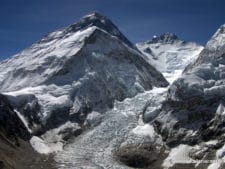
A tour of Everest Base Camp 2016
Alan Arnette is the oldest American to summit K2 in 2014 and has six expeditions on Everest or Lhotse, with a summit of Everest in 2011. He climbs to raise money and awareness of Alzheimer’s disease.
Share this post:
You might also like:.

Everest 2024: Everyday Everest Podcast Series Part 4–Blessing in the Khumbu
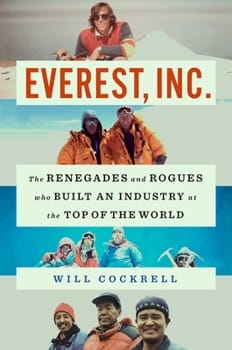
Everest 2024: Interview with Will Cockrell on his new book–Everest, Inc.
Everest 2024: everyday everest podcast series part 3–the trek begins, 2 thoughts on “ how much does it cost to climb mount everest – 2024 edition ”.
Thanks for this excellent article. I have enjoyed your website for years and especially like your podcasts. I’ve trekked in Nepal multiple times but I admire those who make the summit attempt
Hey Mitch, appreciate your comment.
Have a comment? Cancel reply
Deals of the Week European Long Weekends Up to 50% OFF
Everest Tours & Trips
Find the right tour package for you through Mount Everest. We've got 784 trips going to Mount Everest, starting from just 3 days in length, and the longest tour is 65 days. The most popular month to go is April, which has the most tour departures.
250+ Mount Everest tours with 3,280 reviews
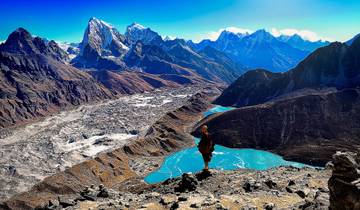
- Hiking & Trekking
- Mountain Hikes
- Christmas & New Year
Everest Base Camp Trek
The helpfulness, knowledge and support from the guide and assistant guides made this trip so much fun that it almost seemed easy
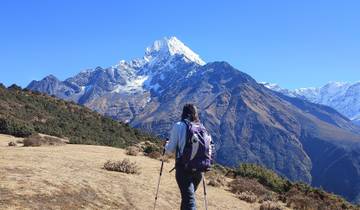
What’s not to like. These guys are amazing

Everest Base Camp Trekking
I recently completed the EBC trek return by helicopter, and I must say, the logistics and transportation arrangements made by this company were top-notch. Every detail was taken care of, ensuring a seamless and stress-free journey. Our guide Lakpa played a crucial role in making this trek a success. His knowledge about the area was impressive, and his friendly nature made us feel comfortable throughout. Despite it being the off-season, Lakpa managed to find excellent guest houses for us to stay in. I highly recommend this trek and the exceptional guide services provided by Lakpa and this company.

Everest Base Camp Trek 12 Days
My trekking guide was wonderful- we felt safe all the way up and down, he was knowledgeable and was telling us stories. I had an amazing, memorable, and fantastic experience! The trek and experience to Everest Base Camp is just once in a lifetime! I’d recommend it anyone with adventurous spirit! And staying overnight at EBC is totally worth it! Highly Recommend! Best Sherpa Expedition and Trekking!

We just did the EBC trek last November via the Gokyo/Chola route and it was nothing but amazing. The service and support we received from Alpine Ramble Trek is next to none. No complains about the accommodation that was provided/chosen for us. Shout out to our guide Sujal and to our porters Kul Dai & specially Tika Dai for always encouraging us during the trek. Kudos to the Alpine Ramble Treks team ????????.

Once in a lifetime trip! Maybe twice. I'm already planning to go back. Everything about this trip was amazing. Our guide, Ram, was incredibly knowledgeable and super fun. The scenery was spectacular. If you enjoy a good challenge as a part of your holiday, this one is for you! Dal bhat power, 24 hour, no shower.
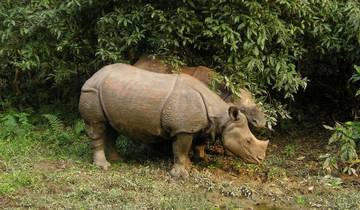
Classic Nepal Tour
We had a great experience in Nepal! There is so much to see in the country and the tour provided us a combination of both guided visits and times to explore on our own which was really nice. From visiting temples and historic sites, to exploring the forests of Chitwan National Park, to sunrise viewing of the Himalayas, all was amazing. Our guide, Raj, was knowledgeable and kind, very gracious, and shared a great deal of information and knowledge. He moved quickly through areas that he knew but also met the pace we wanted to experience the various facets of Nepal with. All in all, we enjoyed Katmandu, Chitwan, and Pokhara, and would recommend anyone to visit Nepal and enjoy the beauty of the country.
- 10% deposit on some dates Some departure dates offer you the chance to book this tour with a lower deposit.
- Book With Flexibility This operator allows you to rebook your dates or tours with them for free, waiving change fees.
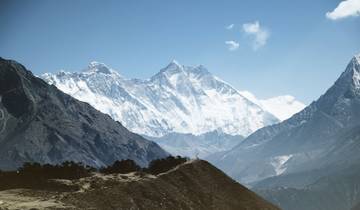
Everest Base Camp (13 Nights 14 Days) Trek
My dream come true...thank you World Travel Experiences team for perfectly arranging my trip to EBC. We really had a great time at Everest region. Highly recommendable..!!!

Everest Base Camp Trek with Helicopter Return
Excellent trip to Everest base camp! If you are planning on exploring (the base of) the top of the world -please book with Nepal Trekking Routes. We had a wonderful experience- before we decided to even book our trip the owner answered every question in a timely manner (I asked a lot of questions). We were greeted at the airport and taken directly to our hotel (amazing perk after traveling over 24 hours). Our tour guide Nawin was fantastic, he catered to every request and was an excellent source of information and inspiration (emphasis on inspiration, hiking to EBC was challenging at times). We made it to EBC! Nepal Trekking Routes Really went above and beyond to make sure we had a great trip- upon our return to Kathmandu they also arranged transportation to the airport and even checked in to make sure we made it back to Miami (excellent customer service). Bottom line we had a magical trip through Himalayas-Nepal trekking routes made it possible!

Everest Base Camp Trek 16-day
Surya !, your " the man ", best tour guide ! , your professionalism, friendly and caring makes my EBC unforgettable expirienced. Your and you team, best ever..! will see you again!
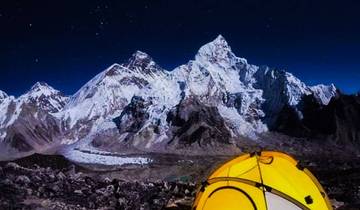
Ram was the perfect guide for our trip. When one of our party wasn’t feeling well he knew exactly what was required and sorted the whole situation. He is the guy you want in an emergency.

Everest Base Camp Trek 15 Days Full Board
I cannot recommend this company enough, trip planned before Covid lockdown management kept us updated excellent communication . There are lots of company’s which offer trips which are set and you fit in . This company makes the trip about your personal aims and goals and had the ability and experience to adapt during the climb. This company with its professional guides and porters makes the trip fit you. Which do you want?

Ace the Himalaya was an excellent choice. I did a lot of research before and saw that overall they had the best reviews and feedback. Our guide Dipesh and assistant guide Rabi were amazing. They made the trip even better than it was. They were caring and helpful and we didnt have to worry about where to stay, what to eat, and where to go. I highly recommend Ace and will hopefully get a chance to use them again! Overall, the trip was exactly what I knew it would be-a trip of a lifetime and Ace is definitely the main reason why...oh yeah and those amazing Himalayas :)

Epic Everest Base Camp Trek
Awkward tipping situation on the last night - my boyfriend and I tipped over the recommended amount for the porters, co guides and the guides, however the main guide opened up his envelope from the group and said this was not enough. The member of our group who counted the tip said the group had tipped the Intrepid recommended amount. This lead to the whole group feeling very awkward and left the trip on a negative note. The reason for the 2 star meal review is because it was very obvious the guide was getting large kick backs at all bars and restaurants we went to, with one bar obviously handing a large amount of cash over to him as we left. I don't disagree with it as a practice, it just isn't nice to see it.

Everest Base Camp Luxury Lodge Trek
The Everest Base Camp Luxury Lodge Trek exceeded my expectations. The lodges were luxurious, and the staff were friendly and accommodating.
Mount Everest Tours & Trips Reviews
G adventures is dialled when it comes to the EBC trek.
I am happy to provide a detailed review of your Everest Base Camp trek with Sherpa Expedition and Trekking Pvt Ltd, guided by Mind Sherpa. First and foremost, I must say that the experience of trekking to Everest Base Camp is truly unparalleled. The majestic beauty of the Himalayas, the challenging terrain, and the rich Sherpa culture all combine to make it a once-in-a-lifetime adventure. Mind Sherpa, our guide from Sherpa Expedition and Trekking Pvt Ltd, played a crucial role in ensuring that our trek was safe, enjoyable, and memorable. Mind's expertise and knowledge of the region were evident throughout the journey. He was not only well-versed in the trails and the best routes to take, but he also shared fascinating insights about the local flora, fauna, and Sherpa traditions. Mind Sherpa's dedication to providing top-notch service was commendable. From arranging accommodations and meals to ensuring our safety and well-being at high altitudes, Mind went above and beyond to make sure that our trek was smooth and hassle-free. His professionalism and attention to detail were truly impressive. Moreover, Mind Sherpa's friendly and approachable demeanor made our trek even more enjoyable. He was always ready to answer our questions, offer guidance, and share stories about the mountains and the Sherpa way of life. His positive attitude and sense of humor were contagious, and we felt like we were trekking with a friend rather than just a guide. Overall, our experience with Sherpa Expedition and Trekking Pvt Ltd, guided by Mind Sherpa, was nothing short of exceptional. The combination of stunning landscapes, expert guidance, and outstanding service made this trek a truly unforgettable adventure. I highly recommend Sherpa Expedition and Trekking Pvt Ltd for anyone looking to explore the Everest region, and I am grateful to Mind Sherpa for his professionalism, expertise, and warm hospitality throughout the journey.
Mount Everest Destinations:
- Gokyo Valley Trek (25)
Mount Everest Tours starting in:
- Kathmandu (613)
- Group (688)
- Hiking & Trekking (651)
- Personalized (513)
- Fully Guided (470)
- Family (389)
- Active (358)
- Partially Guided (306)
- Custom (166)
- Private (88)
- Explorer (66)
- In-depth Cultural (20)
- Intl. Flights Included (8)
- Small Group (474)
- 7 Day Tours (43)
- 10 Day Tours (72)
- 2 Week Tours (261)
- 3 Week Tours (248)
- 4 Week Tours (16)
- 1 Month+ Tours (4)
- Spring 2024 (620)
- Summer 2024 (539)
- Fall / Autumn 2024 (585)
- Winter 2024 / 2025 (521)
- Spring 2025 (417)
- Summer 2025 (323)
- Fall / Autumn 2025 (359)
- Winter 2025 / 2026 (325)
- April 2024 (611)
- May 2024 (606)
- June 2024 (530)
- July 2024 (467)
- August 2024 (480)
- September 2024 (576)
- October 2024 (578)
- November 2024 (565)
- December 2024 (517)
- January 2025 (407)
- February 2025 (377)
- March 2025 (414)
- April 2025 (407)
- May 2025 (391)
- June 2025 (321)
- July 2025 (296)
- August 2025 (301)
- September 2025 (354)
- October 2025 (358)
- November 2025 (353)
Other Regions in Nepal
- Mount Annapurna (1067)
- Mount Kala Patthar (662)
- Gorakshep Trail (421)
- Langtang National Park (144)
- Chitwan National Park (69)
- Upper Mustang (42)
- Mount Manaslu (7)
- Bardia National Park (6)
- Everest Base Camp
Travel Styles
- Budget (128)
- Luxury (62)
- Singles and Solo (440)
- For Couples (138)
- Seniors (201)
Latest Stories
Today's picks.
- History & Culture
- Environment
- Gory Details
- Photographer
Discover More on Disney+
- Queens with Angela Bassett
- Arctic Ascent with Alex Honnold
- The Space Race
- Genius: MLK/X
- A Real Bug's Life with Awkwafina
- Incredible Animal Journeys with Jeremy Renner
- TheMissionKeyArtDisneyPlusCard
- Animals Up Close with Bertie Gregory
- Secrets of the Elephants
- The Territory
- Never Say Never with Jeff Jenkins
- Extraordinary Birder with Christian Cooper
- A Small Light
Port Protection Alaska
Wicked tuna, april 2024 issue, in this issue.
- Photography
The National Geographic Society Mission
National geographic’s nonprofit work.
The National Geographic Society invests in innovative leaders in science, exploration, education and storytelling to illuminate and protect the wonder of our world.
- Terms of Use
- Privacy Policy
- Your US State Privacy Rights
- Children's Online Privacy Policy
- Interest-Based Ads
- About Nielsen Measurement
- Do Not Sell or Share My Personal Information
- Nat Geo Home
- Attend a Live Event
- Book a Trip
- Inspire Your Kids
- Shop Nat Geo
- Visit the D.C. Museum
- Learn About Our Impact
- Support Our Mission
- Advertise With Us
- Customer Service
- Renew Subscription
- Manage Your Subscription
- Work at Nat Geo
- Sign Up for Our Newsletters
- Contribute to Protect the Planet
Copyright © 1996-2015 National Geographic Society Copyright © 2015-2024 National Geographic Partners, LLC. All rights reserved
Mount Everest Expedition
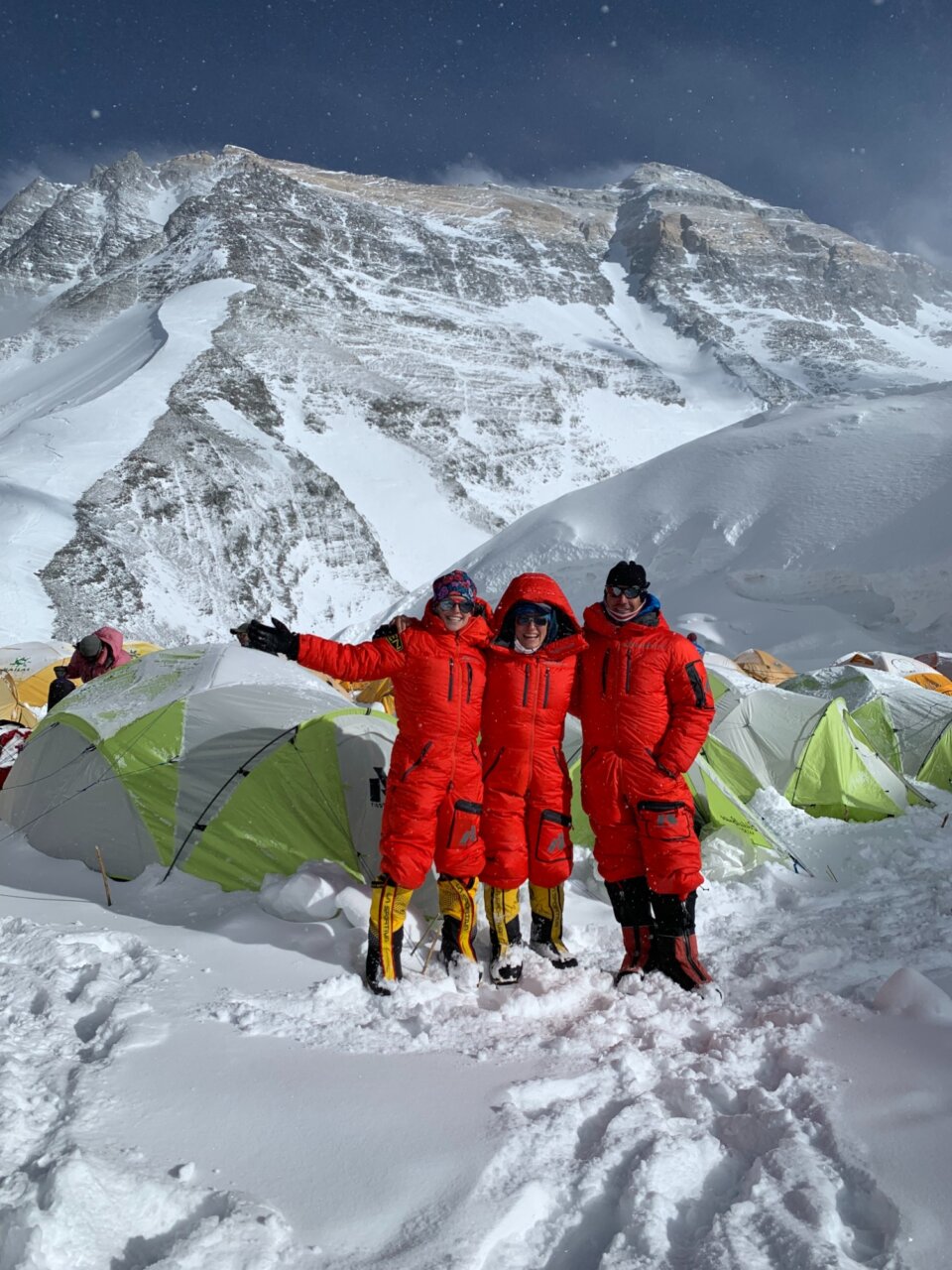
Mount Everest North Side Expedition
The Alpenglow Approach on Everest has been developed over the last two decades and culminates in the best experience possible on Everest.
- IFMGA Certified Expedition Leaders
- Professionally Trained and Certified Mountain Guides
- Rapid Ascent™ Hypoxico Rental Included
- Climb from the safer, cleaner North Side
- Experienced, trained Sherpa
- High End Base Camp and Mountain Infrastructure
- Expedition Doctor on call 24/7
- Full Time Office Support Staff
- Sell Out Risk High April 28, 2024 – June 02, 2024
- April 27, 2025 – June 01, 2025
Summit the world’s tallest peak from the North Side – without the crowds or the risk of the South Side and Khumbu Icefall. Experience the unique culture, environment, and people of Tibet. Climb Everest in almost half of the time of traditional expeditions, with the North Side’s most professional team and best logistics.
CLIMB THE NORTH SIDE OF MOUNT EVEREST
Mt. Everest, the tallest mountain in the world (29,035 feet/8,850 meters), is an incredible challenge and experience. Alpenglow’s unique format and extensive experience gives us the ability to achieve the highest levels of both safety and success. Since 2015, we have moved our operations to the North Side of Mt. Everest. With increasing stability in Tibet being contrasted by increasing instability in Nepal, the significantly safer and less crowded route from the North Side is an obvious choice for our teams. Our team’s strengths cater well to the increased remoteness of the North Side. Our Sherpa, guides, and support staff are unanimous that responsible climbing teams must avoid the increasingly unpredictable icefall and politics found on Everest’s South Side. Many members of our team (including Sherpa, cooks, doctor, and guides) have worked extensively on the North Side and make our team one of the most experienced to offer climbs from Tibet.
SMALL GROUPS, EXPERIENCED SHERPA
Alpenglow offers an exceptional level of competency, safety, and comfort to Everest expeditions. Our team will be limited to 12 members, with certified guides and the best Sherpa and cooks available (staff we have been working with for more than a decade). Our small group size allows us to adapt to changing conditions and weather far more easily than many commercial teams, which have become so large over the last five years that they have become difficult to manage. Our member to Sherpa (2:3) and member to guide ratios (4:1), the comforts of our Base Camp, our fresh and nutritious food, and our use of maximum oxygen are details that add up to a far more enjoyable experience and successful climb.
MINIMIZED DOWNTIME
Historically, we have seen that over 30% of climbers on other teams head home long before attempting their summit push on Mt. Everest. This is generally for 3 reasons, all tied to the amount of time teams take “acclimatizing” on the mountain: the multiple trips up and down the mountain during acclimatization cause the climber to reassess the risk and go home, the climber’s weight loss, chronic sickness and progressive weakening at altitude cause them to call off the trip, or a family or work issue at home takes priority. Our goal with a 35-day Rapid Ascent™ itinerary is to keep all the necessary acclimatization, training, and mountain preparation, while minimizing the unnecessary waiting and down time of traditional expeditions. Use of the best technology available (including weather forecasting, efficient oxygen systems, and pre-acclimatization in hypoxic tents) and our team’s experience (and their early arrival and late departure to pre-set and clean the mountain’s camps and ropes), allows our team to minimize their time approaching Advanced Base Camp, while maximizing their chances of success.
BEST IN CLASS GUIDES AND LOGISTICS
Alpenglow Expeditions’ logistics, guiding, Base Camp staff, food, and equipment are of the absolute highest level possible. As with all of Alpenglow’s 8,000-meter peak expeditions, Everest is organized and led by IFMGA guide, Adrian Ballinger. Adrian is one of the most recognized guides in the Himalaya, with an impeccable safety record and twelve 8,000 meter peak summits, all while guiding or rope-fixing for guided teams. Adrian has extensive experience organizing complicated logistics for large Himalayan teams (including 6 years as lead guide for one of the Himalaya’s largest companies), as well as countless hours on the mountain rope-fixing with Sherpa, guiding members, and assisting and organizing rescues.
APPROACHED WITH RESPECT
While many downplay the difficulty and hazards of climbing Mount Everest, Alpenglow maintains a deep respect for the nature of this mountain and you will never find us underestimating its potential dangers. We require a significant amount of experience from each of our members to ensure that you will feel comfortable on the peak, both with your own skills and those of your teammates.
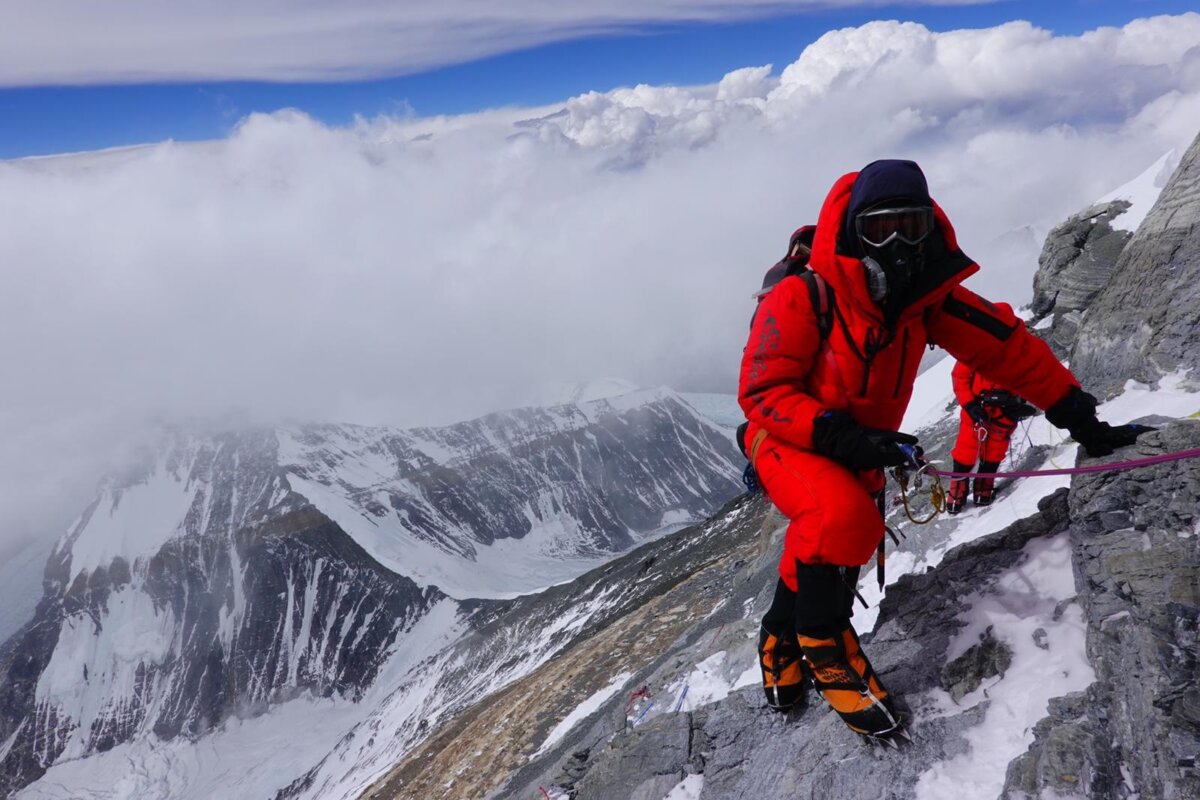
Questions about Mount Everest?
Technical experience, altitude experience.

Everest Itinerary
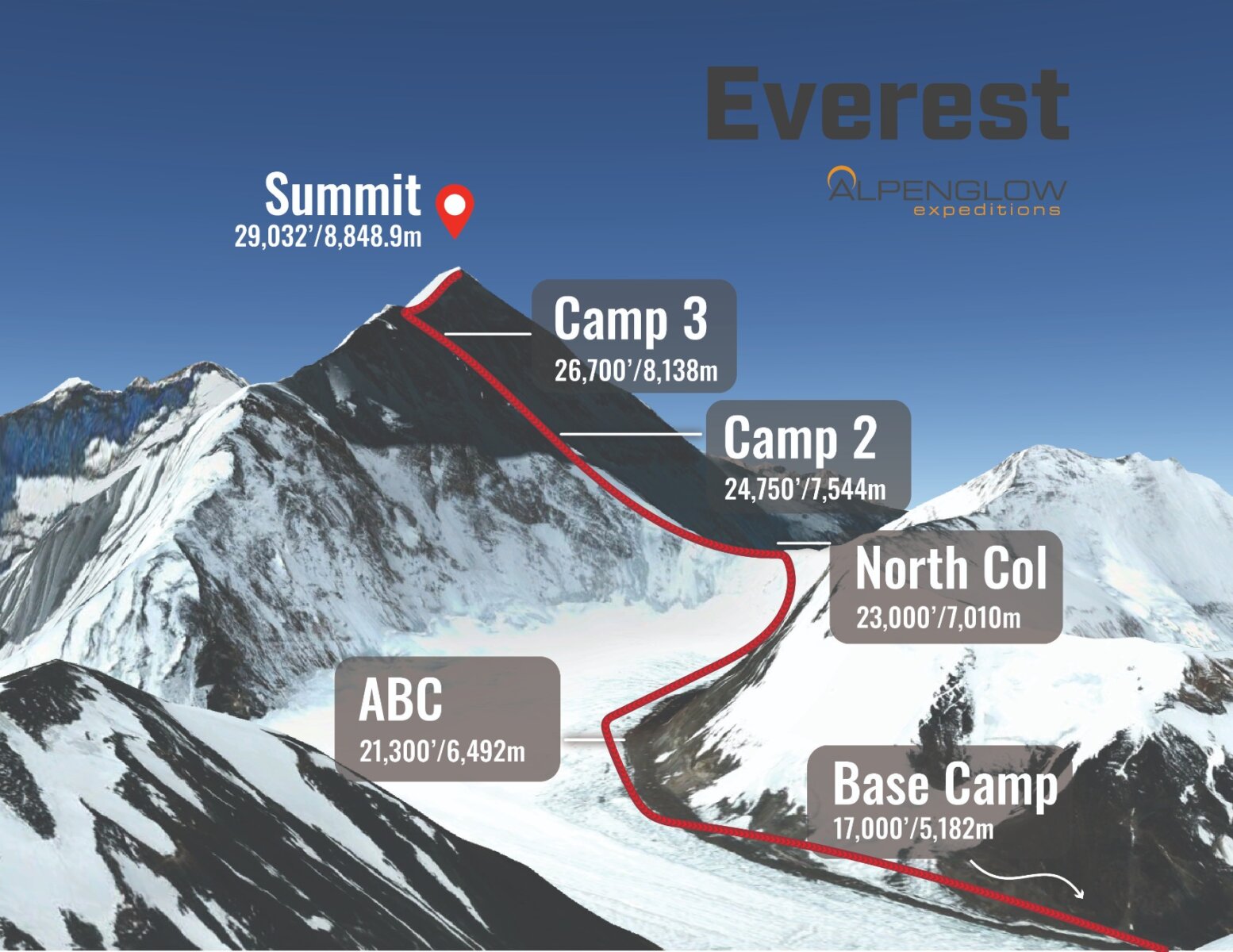
Climbers fly into Chengdu, China, arriving by the evening. Arriving into either CTU or TFU airports are acceptable. CTU airport is closer to the hotel we’re staying at.
Sleeping Elevation: 1,600’/488m Lodging: St. Regis Hotel Meals: None
Fly by plane to Lhasa (12,000’/3,658m). These flights are usually in the morning, getting climbers to Lhasa mid-day. From the airport it is an hour drive into Lhasa, where we have a bit of time to walk around the old city, and enjoy a traditional Tibetan dinner.
Sleeping Elevation: 12,000’/3,658m Lodging: TBA Meals: Breakfast
The Potala Palace, former home of the Dalai Lama, and ancient Jokhang Monastery, are two of Tibet’s most important cultural sites, and imperative to beginning to understand this unique place. After a morning exploring with our local guide, we drive a few hours along the now paved road to Everest, stopping for the night in Shigatse, and our simple but clean hotel.
Distance Covered: 180 mile drive Moving Hours: 5-6 hours Elevation Gain/Loss: +600’/183m Sleeping Elevation: 12,000’/3,658m Lodging: Hotel in Shigatse Meals: Breakfast
From Shigatse, the drive takes you closer and closer to the massive mountains rising ahead. To aid in our acclimatization, the team will spend the night in Shegar. This small town is only a few hours from base camp and gives our bodies needed time to further acclimatize for the days and weeks ahead.
Distance Covered: 160 mile drive Moving Hours: 5-6 hours Elevation Gain/Loss: +1,600’/488m Sleeping Elevation: 14,200’/4,328m Lodging: Hotel in Shegar Meals: Breakfast
We will continue along the Tibetan Plateau until you begin to see views of Everest itself. From there you leave the main road and follow the valley to the Rongbuk Monastery. Built around numerous ancient meditation caves, the monastery serves as a sacred threshold to Mt Everest, and gives you the first head-on views of the peak. After exploring the monastery and lunch, you continue driving into our base camp, where we settle in.
Distance Covered: 70 mile drive Moving Hours: 3 hours Elevation Gain/Loss: +2,800’/853m Sleeping Elevation: 17,000’/5,182m Lodging: Base Camp Meals: Breakfast, Lunch & Dinner
Our camp offers excellent food, comfortable tents, and important amenities (heated dining tents, electricity, etc.). We allow our bodies to continue their acclimatization, and spend the day organizing equipment and logistics.
Sleeping Elevation: 17,000’/5,182m Lodging: Base Camp Meals: Breakfast, Lunch & Dinner
Today we do an acclimatization hike above camp, returning in time for lunch and rest before tomorrow’s move.
Today you will review the equipment and skills needed for moving over the technical ground that will be found higher on the mountain.This fixed line training day is an important step on your journey, and is great for getting to know your guides and teammates.
Distance Covered: Varies Moving Hours: Varies Elevation Gain/Loss: Varies Sleeping Elevation: 17,000’/5,182m Lodging: Base Camp Meals: Breakfast, Lunch & Dinner
After several days in BC, you are ready to push a little higher and longer out of camp. Acclimatization hikes vary, but a solid half-day and a couple thousand vertical feet under your belt does wonders for acclimatization.
Distance Covered: 4-6 miles Moving Hours: 4-6 hours Elevation Gain/Loss: +/- 2,000’/610m Sleeping Elevation: 17,000’/5,182m Lodging: Base Camp Meals: Breakfast, Lunch & Dinner
One final rest day will complete your initial acclimatization in base camp.
We split the move to Advanced Base Camp in two, today moving 6 miles to Interim Camp. While this camp is simple, you will still enjoy comfortable sleeping, dining, and excellent food. The location is incredible, surrounded by penitentes (ice towers) and moraines.
Distance Covered: 6 miles Moving Hours: 4-5 hours Elevation Gain/Loss: +2,000’/610m Sleeping Elevation: 19,000’/5,791m Lodging: Interim Camp Meals: Breakfast, Lunch & Dinner
Six miles of hiking along the moraine and glacier bring us to Advanced Base Camp, our home on the side of the East Rongbuk Glacier. This camp, our main one for the duration of the expedition, is established with as much comfort as possible to balance life in the harsh environment.
Distance Covered: 6 miles Moving Hours: 5-6 Elevation Gain/Loss: +2,300’/701m Sleeping Elevation: 21,300’/6,492m Lodging: Advanced Base Camp Meals: Breakfast, Lunch & Dinner
Our bodies need time to acclimatize to over 21,000 feet. We utilize the days re-visiting required fixed rope and climbing skills, taking short acclimatization hikes, and eating and resting in our impressive camp.
Sleeping Elevation: 21,300’/6,492m Lodging: Advanced Base Camp Meals: Breakfast, Lunch & Dinner
Today you will push up to the head of the East Rongbuk glacier and the start of the technical climbing. This acclimatization hike delivers absolutely stunning views of the Northeast Face of Everest and across to the beautiful Lhakpa Ri.
Distance Covered: 2.5 miles Moving Hours: 3-5 hours Elevation Gain/Loss: +/- 1,000’/305m Sleeping Elevation: 21,300’/6,492m Lodging: Advanced Base Camp Meals: Breakfast, Lunch & Dinner
Again, a day of rest aids our body in acclimatization
A 4-6 hour climb takes us from the edge of the East Rongbuk Glacier up progressively steepening snow slopes. The 2,000 foot climb is an excellent time to focus on crampon efficiency and fixed rope technique, and arriving at the North Col is hard-earned.
Distance Covered: 1.8 miles Moving Hours: 4-6 hours Elevation Gain/Loss: +1,700’/518m Sleeping Elevation: 23,000’/7,010m Lodging: North Col Camp Meals: Breakfast, Lunch & Dinner
We descend quickly via rappels and arm-wrapping back to our camp on the side of the glacier. Our bodies will need rest, but now feel strong and able to recover at Advanced Base Camp.
Distance Covered: 1.8 miles Moving Hours: 1.5-2 hours Elevation Gain/Loss: -1,700’/518m Sleeping Elevation: 21,300’/6,492m Lodging: Advanced Base Camp Meals: Breakfast, Lunch & Dinner
Depending on whether we have an early or late summit window, two different itineraries are possible. This itinerary reflects the early summit window
Now that you have spent a significant amount of time acclimatizing, it’s possible to actually rest and recover at the altitudes of ABC. You and your team will spend 2 days resting, eating, hydrating and prepping for the summit push.
Today you start your summit push. Weeks of work have prepared your mind and body for the extreme environment found above, it’s time to put yourself to the test. Retracing your steps from the previous days, you hike along the East Rongbuk and up the snow and ice slopes to the North Col. You will use supplementary oxygen for the first time at the North Col, .5 liter flow will help you sleep and wake up ready to move higher.
The climb to Camp 2 follows a wide ribbon of snow along the ridge, with the massive North and Northeast faces flanking you on either side. The path to the summit now seems tantalizingly close, but you must move slowly and take your time. We are now entering the world of extreme altitude.
Distance Covered: 1 mile Moving Hours: 3-4 hours Elevation Gain/Loss: +1,750’/533m Sleeping Elevation: 24,750’/7,544m Lodging: Camp 2 Meals: Breakfast, Lunch & Dinner
Passing through the mythical line marking 8,000m/ 26,200 feet, you climb higher still. Now predominantly climbing through rock, C3 is perched on a feature directly below the “exit cracks”, which guard access to the upper North Ridge. C3 is located higher than most mountains on earth, the views are both beautiful and far- reaching. Tomorrow is “the big day”, you will get into your tent early and eat, rest and hydrate in preparation for the arduous task ahead.
Distance Covered: .75 miles Moving Hours: 3-4 hours Elevation Gain/Loss: +1,950’/594m Sleeping Elevation: 26,700’/8,138m Lodging: Camp 3 Meals: Breakfast, Lunch & Dinner
Today is the day that you will put your years of training and preparation to the ultimate test. Waking in the middle of the night, your route finds you winding up through the exit cracks and onto the upper North Ridge. There are 3 steep rock steps to negotiate, and the exposure builds and there is now ten thousand feet of relief on either side of the narrow summit ridge. After passing the difficulties of the third step, the summit prayer flags are visible and the path is straightforward.
While the experience of summiting Everest is different for every climber lucky enough to attain that rarified air, one thing is certain: You will never forget those few moments spent standing on the roof of the world. The way down is long and challenging, you will descend all the way down to the North Col, reversing the difficulties of the steps and slowly drifting into the thicker and thicker air of the lower mountain. If you and your team are particularly motivated, it is possible to descend all the way to ABC.
Distance Covered: 4.2 miles Moving Hours: 12-14 hours Elevation Gain/Loss: +2,329’/-6,029’ Sleeping Elevation: 23,000’/7,010m Lodging: North Col Camp Meals: Breakfast, Lunch & Dinner
Finishing the descent of the mountain proper, the ABC team will welcome you with hot food, drinks and showers.
Activity: Descend to ABC Distance Covered: 1.8 miles Moving Hours: 1.5-2 hours Elevation Gain/Loss: -1,700’/518m Sleeping Elevation: 21,300’/6,492m Lodging: Advanced Base Camp Meals: Breakfast, Lunch & Dinner
These extra days can be used in case the team, the weather or other variables require additional time to make a summit push. We’ve seen early and late weather windows that are suitable for a summit push, these extra days gives us flexibility in the planning of our summit push.
Today you will say goodbye to much of the mountain staff and make the long walk down to base camp. Leaving behind the world of ice and glaciers, the thick air of base camp will feel like a luxury!
Activity: Descend to BC Distance Covered: 12 miles Moving Hours: 4-8 hours Elevation Gain/Loss: -4,300’/1,311m Sleeping Elevation: 17,000’/5,182m Lodging: Base Camp Meals: Breakfast, Lunch & Dinner
A relaxed morning will give way to a busy day celebrating, packing and getting ready for your journey home. Tonight marks the end of the expedition, you and your team will gather around the dinner table and hold a final celebration meal to close out your time spent in Tibet.
Activity: Rest and Celebrate Sleeping Elevation: 17,000’/5,182m Lodging: Base Camp Meals: Breakfast, Lunch & Dinner
Waking early, it’s time to leave the mountain. An all day drive will bring you back to Shigatse, the massive form of Everest and the other Himalayan giants slowly fading in your rearview mirror.
Activity: Drive to Shigatse Distance Covered: Drive 230 miles Moving Hours: 8-9 hours Elevation Gain/Loss: -4,400’/1,341m Sleeping Elevation: 12,600’/3,840m Lodging: Base Camp Meals: Breakfast, Lunch & Dinner
Your morning flight to Chengdu arrives midday, most team members will choose to catch their international flights home that evening. You can elect to arrange an extra hotel night in Chengdu and fly home the next morning.
Activity: Fly to Chengdu Moving Hours: 3.5 flight Elevation Gain/Loss: -11,000’/3,353m Sleeping Elevation: 1,600’/488m Lodging: Hotel or fly home Meals: Breakfast
Depending on whether we have an early or late summit window, two different itineraries are possible. The early & late summit window itineraries are the same up until Day 17. The following itinerary is for the possibility of a late summit window
There are a variety of reasons that we might want to delay our summit bid, be it that our climbers need additional rest or we’re waiting for a better weather window. If we decide to opt for the “Late Summit Window” itinerary, today we’ll cover a lot of ground descending from ABC back to Everest Base Camp to recharge at lower altitude for a few days.
Activity: Descend to EBC Distance Covered: 12 miles Moving Hours: 5-6 hours Elevation Gain/Loss: -4,300’/1,311m Sleeping Elevation: 17,000’/5,182m Lodging: Everest Base Camp Meals: Breakfast, Lunch & Dinner
We’ll spend a few days resting and recuperating down at the “low” altitude of 17,000’. Sleeping will be easier and we’ll have access to excellent food down at Base Camp.
Activity: Rest in Base Camp Sleeping Elevation: 17,000’ Lodging: Everest Base Camp Meals: Breakfast, Lunch & Dinner
After a few days of fantastic rest at base camp, hopefully we have an opportunity for a better summit window. Today it’s time to start moving up again. We split the move to Advanced Base Camp in two, moving 6 miles to Interim Camp. While this camp is simple, you will still enjoy comfortable sleeping, dining, and excellent food. The location is incredible, surrounded by penitentes (ice towers) and moraines.
Activity: Climb to Interim Camp Distance Covered: 6 miles Moving Hours: 3-5 hours Elevation Gain/Loss: +2,000’/610m Sleeping Elevation: 19,000’/5,791m Lodging: Interim Camp Meals: Breakfast, Lunch & Dinner
Six miles of hiking along the moraine and glacier bring you to back to Advanced Base Camp, our familiar “home” for the duration of the expedition. It’s nice to be back at elevation with an expansive view of the entire North Ridge, rising from the East Rongbuk all the way to the lofty summit, almost eight thousand feet above.
Activity: Climb to ABC Distance Covered: 6 miles Moving Hours: 3-5 hours Elevation Gain/Loss: +2,300’ Sleeping Elevation: 21,300′ Lodging: ABC Meals: Breakfast, Lunch & Dinner
Now that you have acclimatized thoroughly, it’s possible to actually rest and recover at the altitudes of ABC. Today you and your team will spend the day resting, eating, hydrating and prepping for the summit push.
Activity: Rest in ABC Sleeping Elevation: 21,300’/6,492m Lodging: Advanced Base Camp Meals: Breakfast, Lunch & Dinner
Today you start your summit push. Weeks of work have prepared your mind and body for the extreme environment found above, it’s time to put yourself to the test. Retracing your steps from the previous days, you hike along the East Rongbuk and up the snow and ice slopes to the North Col. You will use supplementary oxygen for the first time at the North Col, 0.5 liter flow will help you sleep and wake up ready to move higher.
Activity: Climb to North Col Distance Covered: 1.8 miles Moving Hours: 4-5 hours Elevation Gain/Loss: +1,700’/518m Sleeping Elevation: 23,000’/7,010m Lodging: North Col Camp Meals: Breakfast, Lunch & Dinner
Activity: Climb to C2 Distance Covered:1 mile Moving Hours: 3-4 hours Elevation Gain/Loss: +1,750’/533m Sleeping Elevation: 24,750’/7,544m Lodging: Camp 2 Meals: Breakfast, Lunch & Dinner
Passing through the mythical line marking 26,200 feet/8,000m you climb higher still. Now predominantly climbing through rock, C3 is perched on a feature directly below the “exit cracks”, which guard access to the upper North Ridge. C3 is located higher than most mountains on earth, the views are both beautiful and far-reaching. Tomorrow is “the big day”, you will get into your tent early and eat, rest and hydrate in preparation for the arduous task ahead.
Activity: Climb to C3 Distance Covered: 0.75 miles Moving Hours: 3-4 hours Elevation Gain/Loss: +1,950’/5,934m Sleeping Elevation: 26,700’/8,138m Lodging: Camp 3 Meals: Breakfast, Lunch & Dinner
Today is the day that you will put your years of training and preparation to the ultimate test. Waking in the middle of the night, your route finds you winding up through the exit cracks and onto the upper North Ridge. There are 3 steep rock steps to negotiate, and the exposure builds and there is now ten thousand feet of relief on either side of the narrow summit ridge. After passing the difficulties of the third step, the summit prayer flags are visible and the path is straightforward. While the experience of summiting Everest is different for every climber lucky enough to attain that rarified air, one thing is certain: You will never forget those few moments spent standing on the roof of the world. The way down is long and challenging, you will descend all the way down to the North Col, reversing the difficulties of the steps and slowly drifting into the thicker and thicker air of the lower mountain. If you and your team are particularly motivated, it is possible to descend all the way to ABC.
Activity: Summit Day Distance Covered: 4.2 miles Moving Hours: 12-14 hours Elevation Gain/Loss: +2,329’/-6,029’ ; +710m/1,838m Sleeping Elevation: 23,000’/7,010m Lodging: North Col Camp Meals; Breakfast, Lunch & Dinner
Activity: Descend to ABC Distance Covered: 1.8 miles Moving Hours: 1.5-2 hours Elevation Gain/Loss: -1,700’/518m Sleeping Elevation: 21,300’/6,492m Lodging: Advanced Base Camp Meals: Breakfast, Lunch & Dinner
Activity: Descend to EBC Distance Covered: 12 miles Moving Hours: 4-8 hours Elevation Gain/Loss: -4,300’/1,311m Sleeping Elevation: 17,000’/5,182m Lodging: Everest Base Camp Meals: Breakfast, Lunch & Dinner
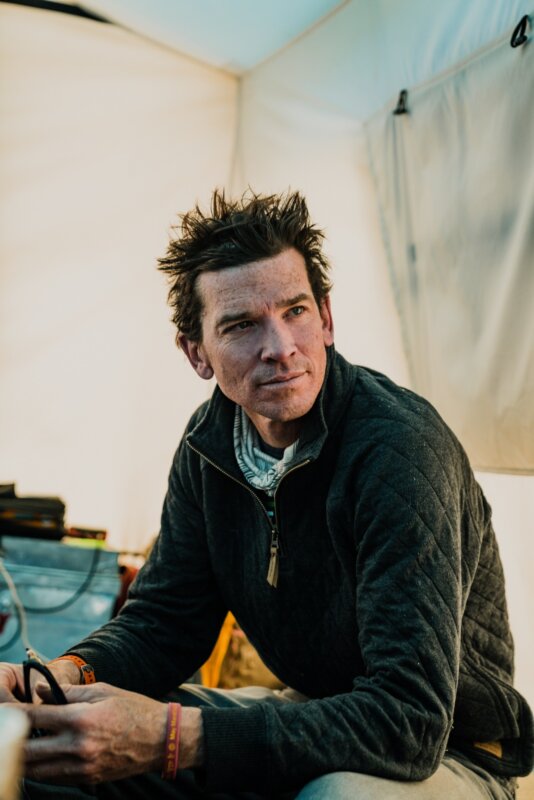
Ask us anything about Everest
Faq’s about everest.
The top of Mt. Everest is engulfed by the jet stream for a major part of the year, making climbing near impossible due to high winds and extreme sub zero temperatures. It is only when the winds die down in May, that we have a so-called ‘Summit Window’, when conditions are safe enough for climbers to try and reach the summit. The other reason that climbers make summit attempts primarily in May is to avoid the harsh winter snows and summer monsoon rains.
HE COST OF YOUR TRIP INCLUDES YOUR LAND COSTS (EXCLUDING IN-TOWN MEALS). THIS INCLUDES: All lodging according to the itinerary, including single occupancy lodging while in Chengdu and Lhasa, and double occupancy in Shigatse and Tingri
Single occupancy in base camp and advanced base camp, double occupancy above ABC Breakfasts in town, all meals while on the mountain Group camping and climbing equipment All park/climbing permits Scheduled in-country transportation Airport transfers Certified guides Covid testing arrangements for re-entry into home country (does not include cost of test)
THE COST OF YOUR TRIP DOES NOT INCLUDE: Flights to/from the city where the expedition begins. Additional nights in hotel outside of the itinerary Airport taxes Visas In-town dinners Immunizations Tips for guides or local staff Travel, rescue, or any other type of insurance Hospitalization or evacuation costs Single supplement charges Excess baggage charges Alcohol Other personal expenses Antigen/PCR Covid test cost The costs of delays or changes to itinerary that are beyond the control of Alpenglow Expeditions or its agents are not included.
Traditionally, you would need up to three months to make the journey. It takes 19 days round trip to trek to and from Everest Base Camp. Once at Everest Base Camp it then takes an average of 40 days to climb to the peak of Mt. Everest. However, with Alpenglow’s Rapid Ascent protocol, we are able to complete an Everest expedition in just 36 days!
Mount Everest is located in the Mahalangur mountain range and is situated on the border of both China and Nepal.
Mount Everest is on the border of both China and Nepal. We climb Everest via Tibet (China) on the North side to avoid political instability, crowds on the South side, and the Khumbu icefall.
9 bottles of oxygen per climber. This allows us to use high-flow oxygen sleeping at Camps 2, 3 and 4, and to climb on a higher flow than other expeditions (2L from North Col-C2, and 4L from C2-C3, C3-C4, and C4-Summit-North Col), maximizing safety and success. Our Sherpa also climb and sleep on oxygen, which means they have more strength to focus on you and your ascent.
3:2 Sherpa to climber ratio. Having 3 Sherpa per 2 climbers ensures we have the strength necessary to carry loads, set camps, and assist climbers. All of our Sherpa on Everest have worked with us on many expeditions.
1:4 maximum guide to climber ratio. All guides are IFMGA qualified or aspirants working towards finishing their certification. This is the lowest member to guide ratio in the Himalaya.
Climbing Everest is a lifelong goal for many people. Often, an ascent of this peak is the crowning achievement of a climber’s high altitude career. Alpenglow Expeditions has very strict requirements to become a team member on one of our Everest expeditions, and it takes time to gain the necessary skills and experience. This is a multi year project for many people, starting with basic climbing instruction at one of our multi day climbing schools. Afterwards, larger and more complex mountains are attempted, culminating in an expedition to an 8000m peak, which is usually Cho Oyu. After all of this, a climber is now ready to be a team member on an attempt to climb Mt. Everest.
In order to join our Everest expedition, climbers must have experience on an 8000 meter peak. Many climbers gain this experience by joining our expedition to Cho Oyu or Gasherbrum II. Climbers must have solid ice and snow climbing experience, including the use of ice axe, crampons and fixed rope systems.
For 2015 and beyond, we have moved our operations to the North Side of Everest. With increasing stability in Tibet being contrasted by increasing instability in Nepal, the significantly safer and less crowded route from the North Side is an obvious choice for our teams. Our team’s strengths cater well to the increased remoteness of the North Side. Our Sherpa, guides, and support staff are unanimous that responsible climbing teams must avoid the increasingly unpredictable icefall and politics found on Everest’s South Side. Many members of our team (including Sherpa, cooks, doctor, and guides) have worked extensively on the North Side and make our team one of the most experienced to offer climbs from Tibet.
Please click here to review our international cancellation policy.
We always consider customs. Custom trips make up more than 50% of our groups. Please reach out to learn more!
Imported and local foods of the highest quality, combined with a Western-trained cook staff. Alpenglow has the best food on the mountain, ensuring your strength and health throughout the expedition.
Climbers must be in excellent physical shape to join this expedition. This is perhaps the most important aspect of high-altitude climbing, and cannot be stressed enough. Regular, challenging exercise for many months in advance of departure is the only way to gain the necessary level of fitness that is needed on big peaks. We highly recommend a structured training regime with a gym or personal trainer to assist you in preparing for climbing at altitude. Please contact us for more information on physical training.
We use a Swiss weather forecasting company. Having a quality forecast for our 8,000m peaks maximizes both our safety and our summit success.
Expedition doctor, Monica Piris, has been on fourteen 8,000-meter peak expeditions. While Dr. Piris does not travel with our team on all expeditions, she is in 24 communication with our expedition leaders. Dr. Piris also works with each member on his or her pre-acclimatization program.
Yes. Please reach out to our team with the details of your dietary restrictions and we’ll set you up for success.
We require Rescue Insurance on all of our international expeditions. Rescue insurance will help cover costs in the event that you need to be rescued off the mountain (Ex: Helicopter/medical evacuation). Travel Insurance (which we strongly recommend) can cover issues that would cause you to cancel your trip in advance, like illness. We do recommend Global Rescue who does offer a Comprehensive Travel Protection option to your required Rescue (Evacuation) Insurance.
Everest Equipment List
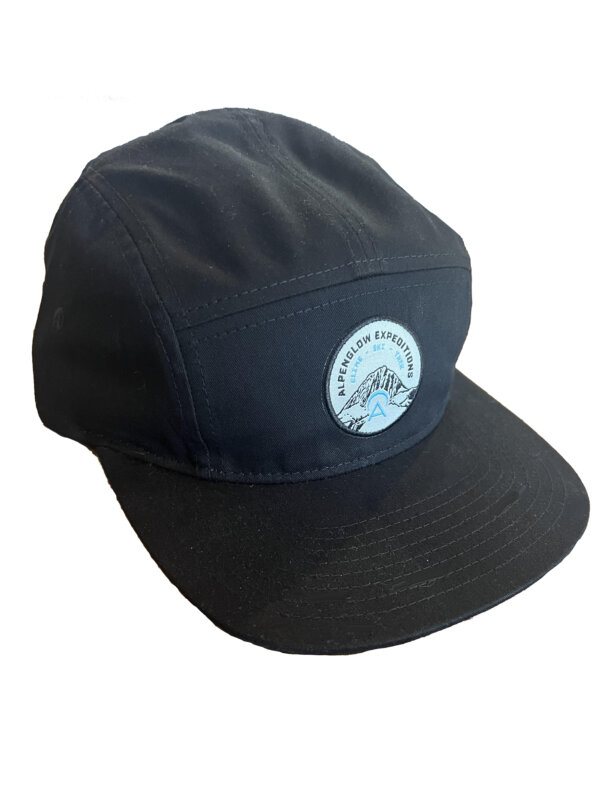
Bring your favorite baseball hat for shelter from the sun. No white under the brim – the reflection off of it from the sun is blinding.
Recommended: Alpenglow Hat
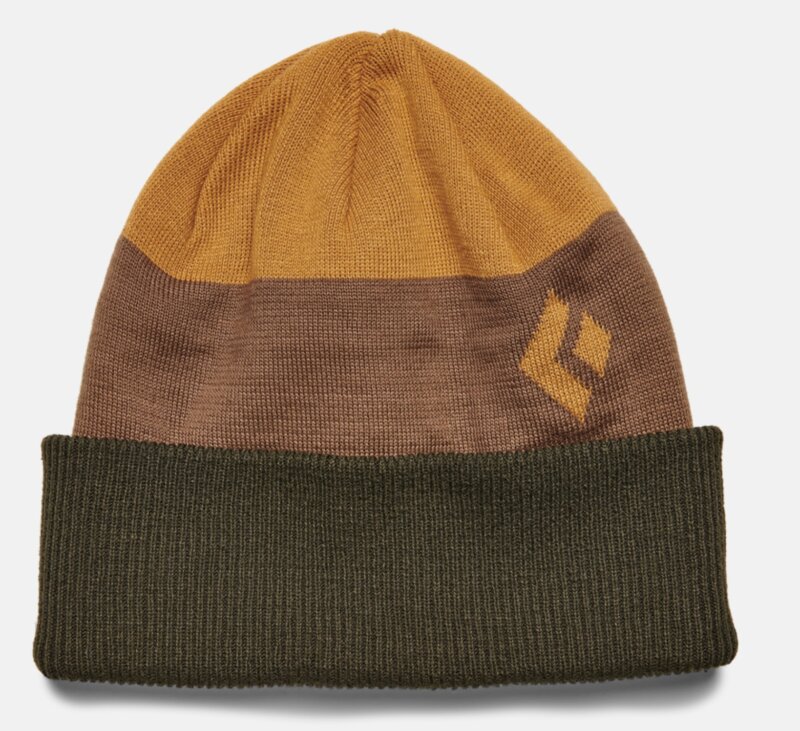
A comfortable, warm well-fitting hat that covers your ears. Make sure that one of your hats fits under a helmet.
Recommended: Black Diamond Levels Beanie

A multi-purpose neck gator that can also be worn under your hat. Make sure that it covers as much skin as possible and yet is still comfy.
Recommended: Alpenglow Buff
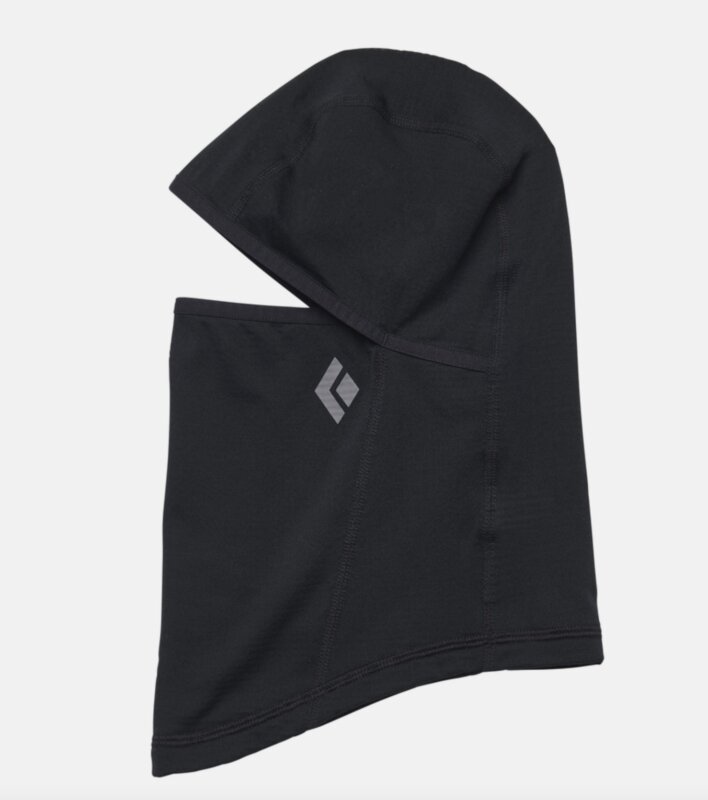
We recommend a tight-fitting balaclava that is worn under your hat. Make sure that it covers as much skin as possible, but is comfortable enough to wear for hours.
Recommended: Black Diamond Coefficient LT Balaclava
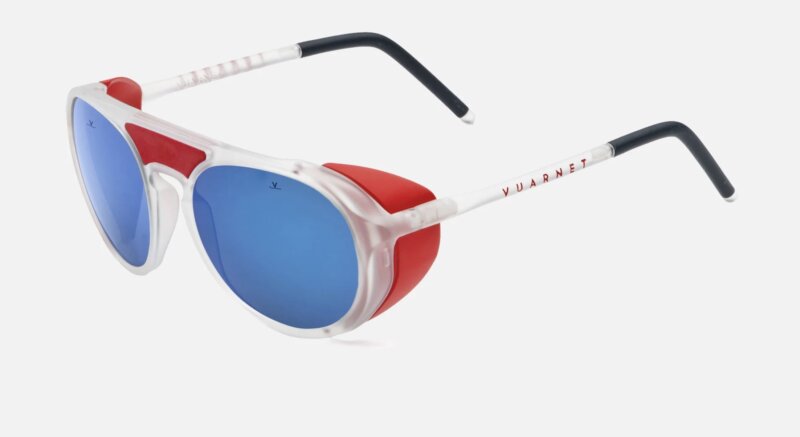
Must have dark lenses. Minimal light should come in below, above, or around the sides of the lenses.“Wrap” style is best. Ventilation is important and a retainer strap is very useful (Chums or Croakies).
Recommended: Vaurnet Ice Rounds
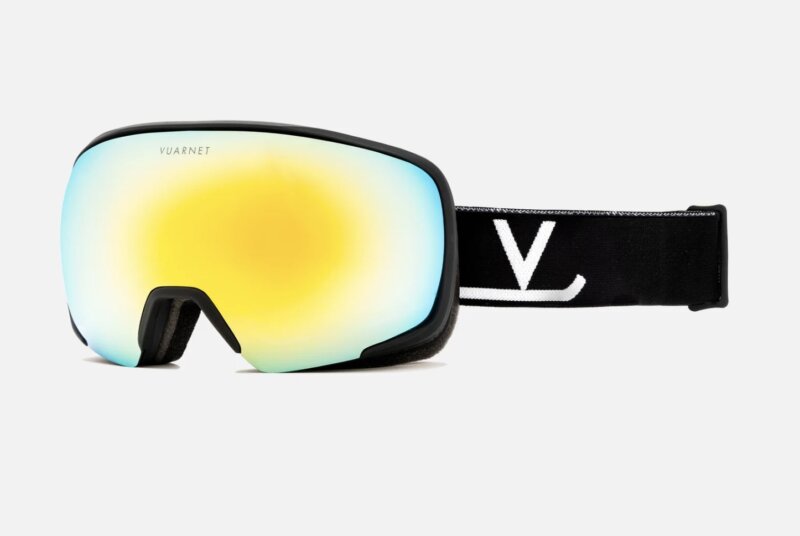
These will be worn on stormy or windy days. Make sure you are getting a snug fit with lenses for bright sun. Ventilation and anti-fog features are desired.
Recommended: Vuarnet Everest Goggles
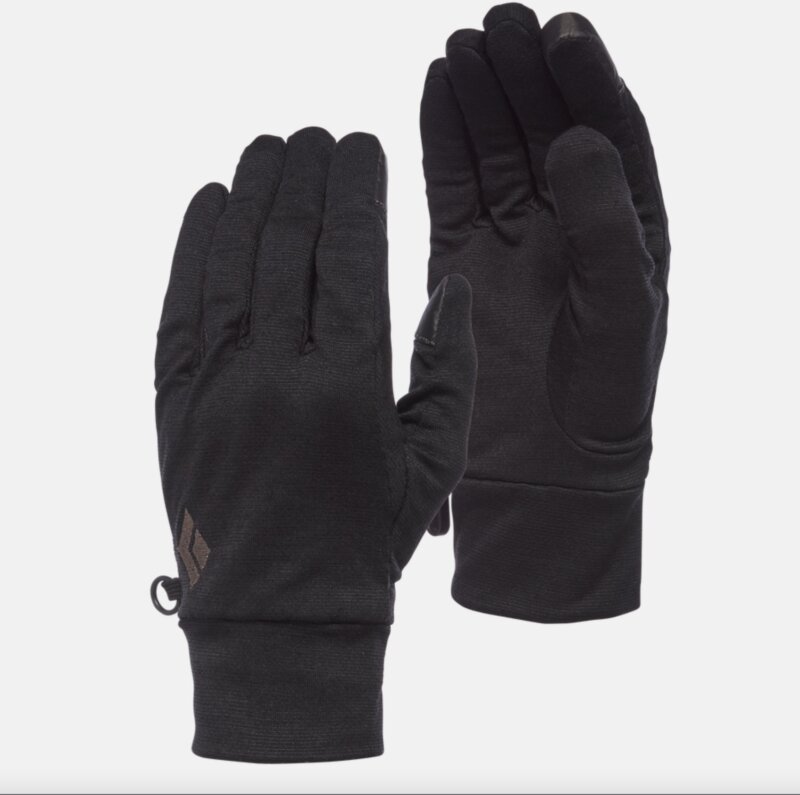
These gloves keep the inside of your mitts or other gloves from accumulating sweat on the inside and turning inside out when you take them off, as well as provide additional insulation.
Recommended: Black Diamond Lightweight Wooltech Gloves
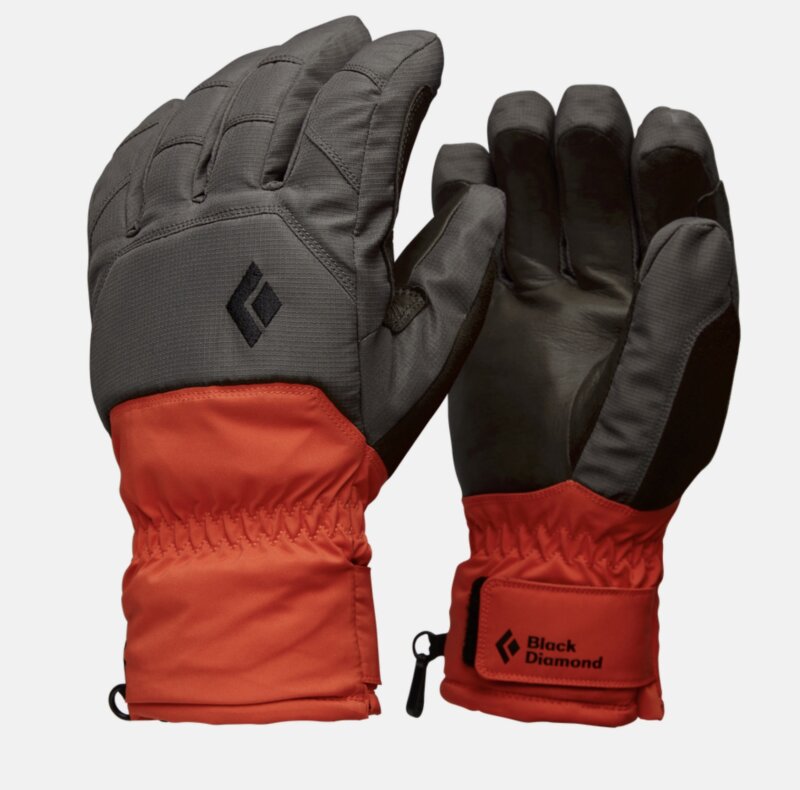
These gloves should be full GORE-TEX®, and insulated. These will be the workhorse glove for any expedition.
Recommend: Black Diamond Mission MX Gloves
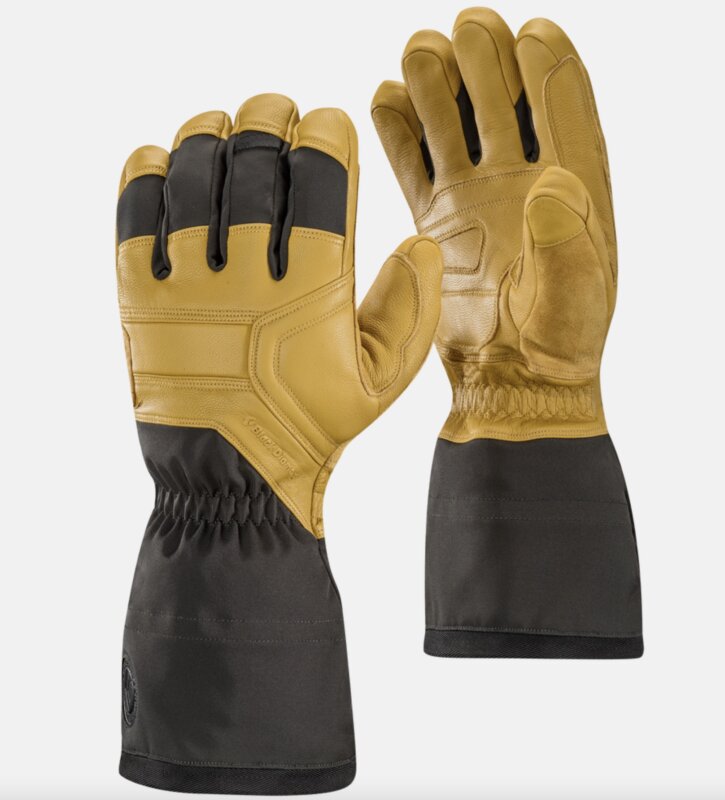
These gloves should be full GORE-TEX®, with a removable fleece liner (so you can take the liner out and dry it at night). These gloves are used at higher altitudes and are needed to keep your hands dry, and warm. Over the cuff style is desired.
Recommended: Black Diamond Guide Gloves
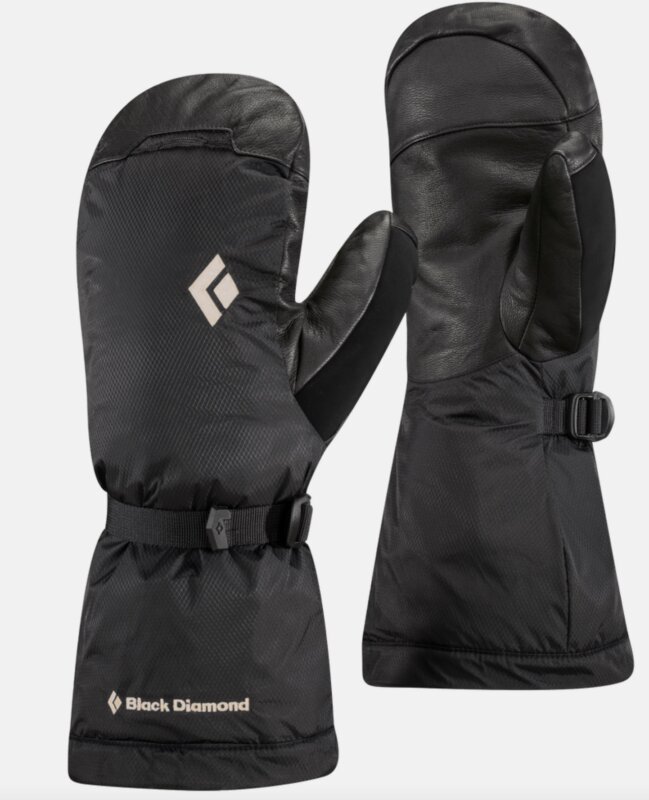
These mittens should be warm and worn over either a liner glove or a windstopper glove. Down mittens are not required. You should choose a pair that allows you to still operate locking carabiners.
Recommended: Black Diamond Absolute Mitts

Your everyday sock, good for day hikes, trekking, and in-town. It’s good to bring several pairs of these socks. NO COTTON.
Recommended: Darn Tough Hiking Sock
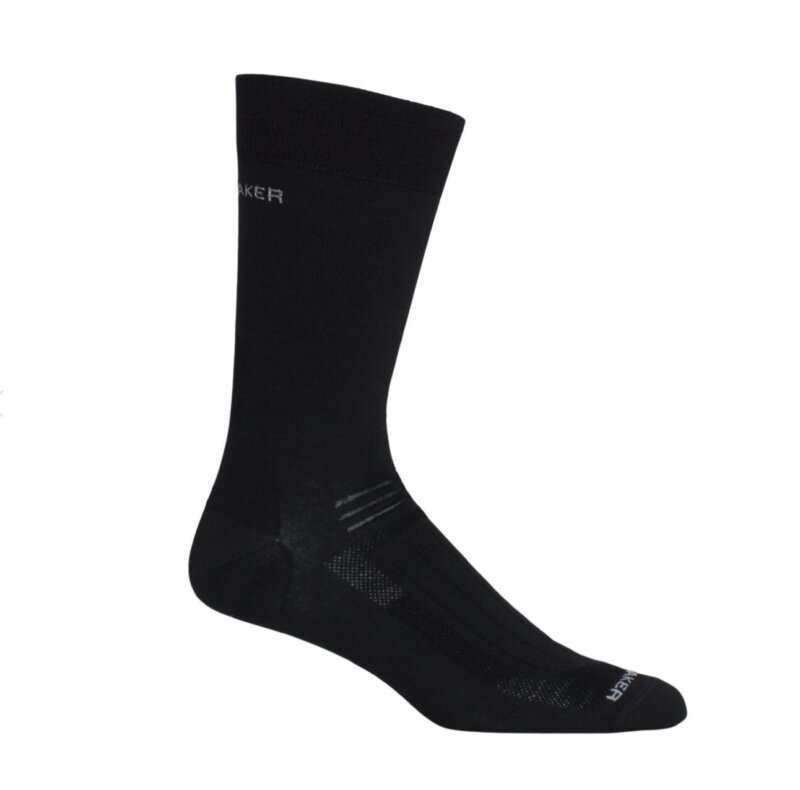
A super-thin wicking sock that repels moisture. Liner socks help to reduce the likelihood of blisters. The socks should be thin wool, nylon, or Capilene®. NO COTTON
Recommended: Ice Breaker Merino Liner

A wool synthetic blend. Pure rag wool socks are not nearly as effective in wicking moisture or retaining their shape and reducing blisters. Bring a few pairs of these socks. NO COTTON.
Recommended: Darn Tough Mountaineering Sock
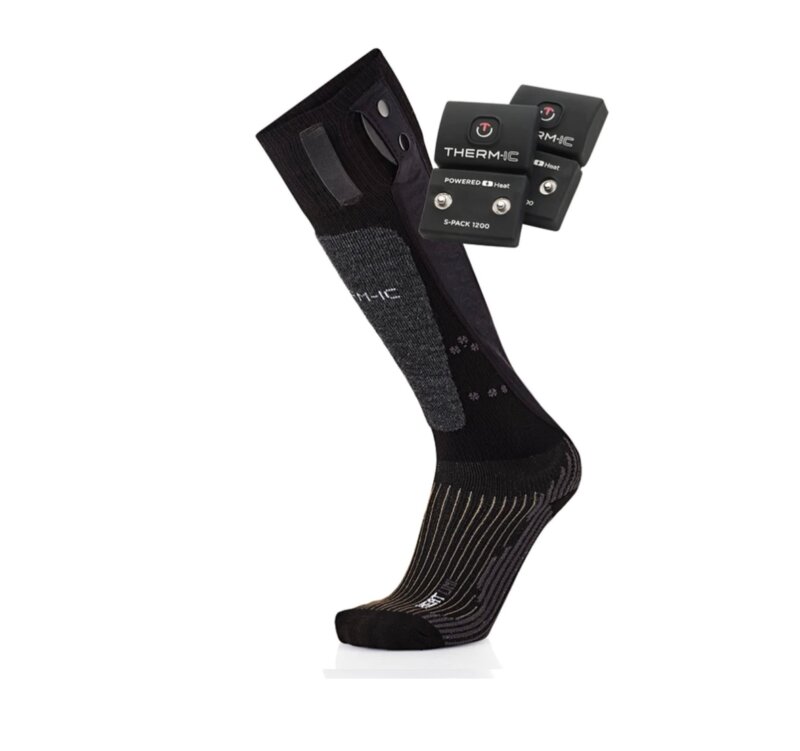
These are optional, but highly recommended. Bring 2 sets of batteries. Hotronics boot heaters are another option instead of heated socks, but socks are preferred by our guides.
Recommended: Sidas Sock Set V2 Uni S-1200
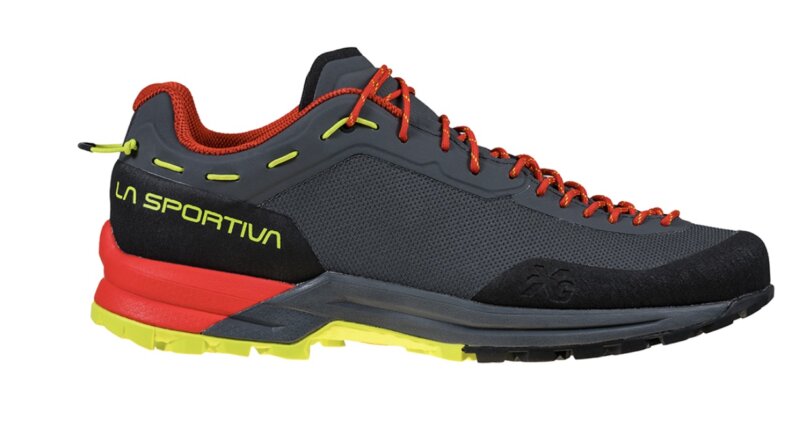
These light to mid-weight shoes are for everyday use. The ideal shoe is comfortable to wear for multiple days and scrambles decently on rock. A Gore-tex lined shoe stays drier when hiking in rain or snow.
Recommended: La Sportiva TX Guide
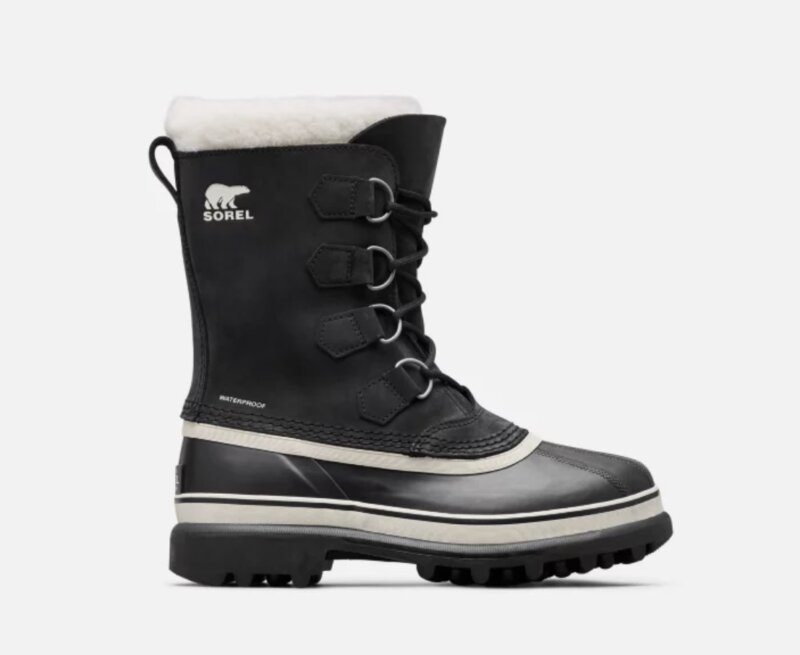
These snow boots are good for wearing around camp and should be comfortable when you slip into them after spending significant time in your mountain boots.
Recommended Men’s : Sorel Caribou Boot
Recommended Women’s: Sorel Caribou Boot
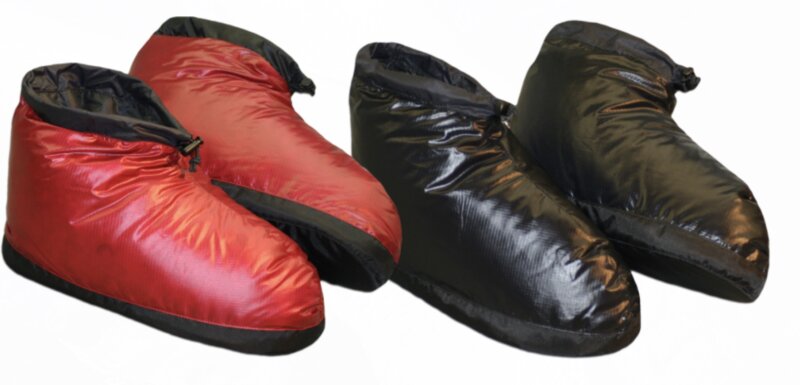
You’ll love having a warm, comfortable shoe to slip into when tent-bound. These are optional, but nice to have.
Recommended: Western Mountaineering Flash Down Booties
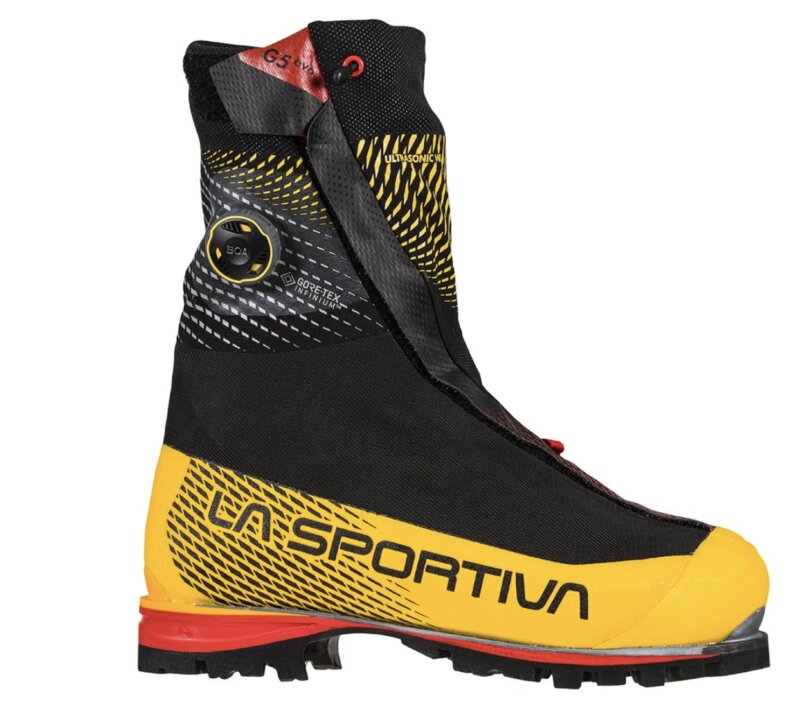
Should be warm single or double boots that have a stiff sole and accept a step-in crampon. The boots should be comfortable, have adequate wiggle room for your toes, and your heel should not lift more than 1/8th of an inch when walking. (If your feet run cold, we would recommend a double boot like the La Sportiva G2 Evo.) For our Introductory Climbing Schools, we have limited availability and sizes for free boot rentals. If you need rentals, please reach out to the office staff asap to ensure we have your size.
Recommended: La Sportiva G5 Evo
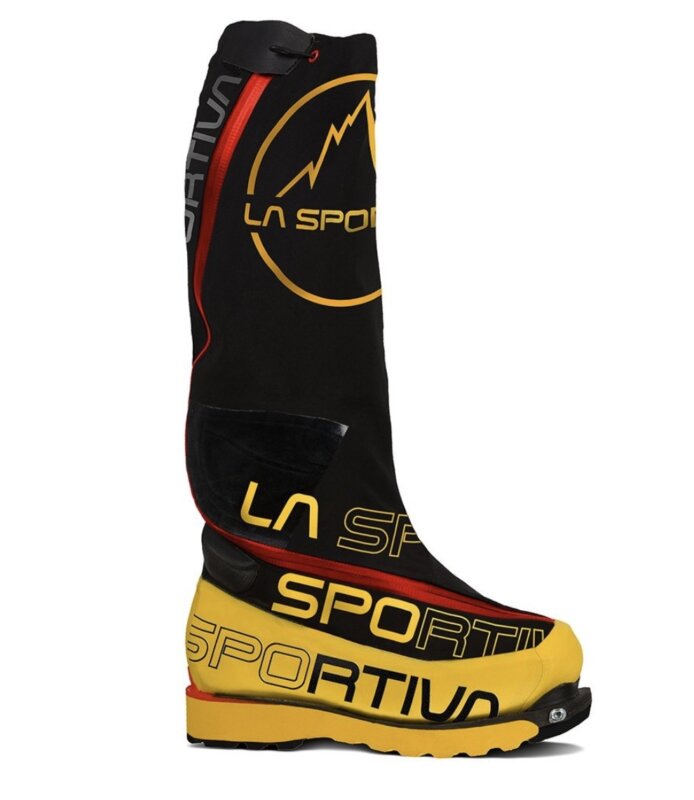
Fully insulated, double boots with an integrated gaiter. These boots are essential for 8000-meter peaks
Recommended: La Sportiva Olympus Mons

Ultra-light base layer that effectively wicks moisture away from your body and is breathable. Quick-dry is important as well. One light-colored shirt is recommended for extremely sunny days.
Recommended Men’s: Black Diamond Lightwire Short Sleeve
Recommended Women’s: Black Diamond Lightwire Short Sleeve

A long sleeve base layer that is fitted, lightweight and quick drying. Make sure it is long enough to tuck in.
Recommended Men’s: Black Diamond Coefficient Crew
Recommended Women’s: Black Diamond Solution Crew

A polar guard or fleece jacket. This mid-layer will be worn over your base layer most of the trip.
Recommended Men’s: Black Diamond Coefficient LT Quarter Zip
Recommended Women’s: Black Diamond Solution Quarter Zip

Lightweight, long-sleeve sun hoody that is great for protecting from the sun.
Recommended Men’s: Black Diamond Alpenglow Hoody
Recommended Women’s: Black Diamond Alpenglow Hoody
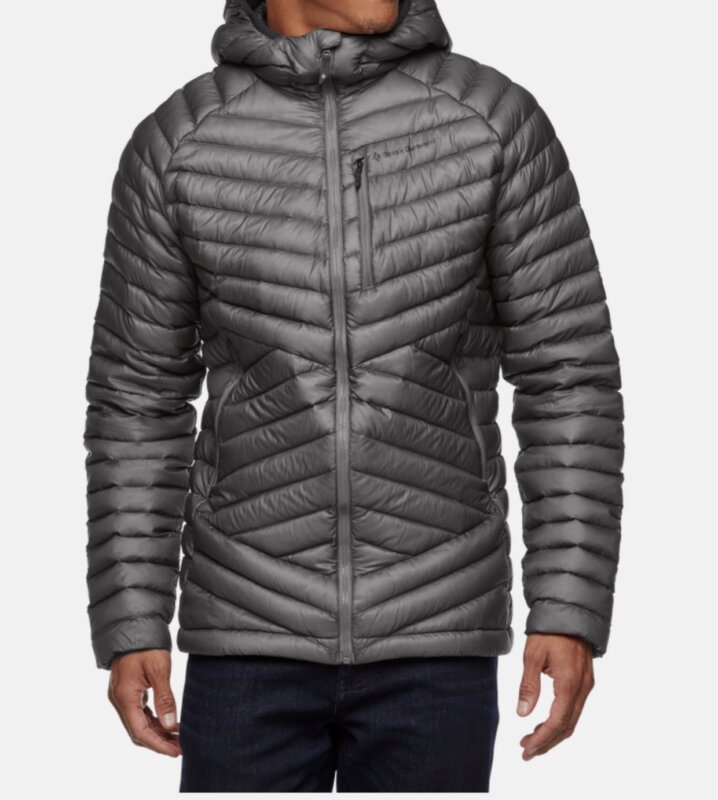
A simple, lightweight puffy jacket. This item is good for layering systems and staying warm. We recommend 800-fill down that is packable and resists inclement weather.
Recommended Men’s : Black Diamond Approach Down Hoody
Recommended Women’s: Black Diamond Approach Down Hoody
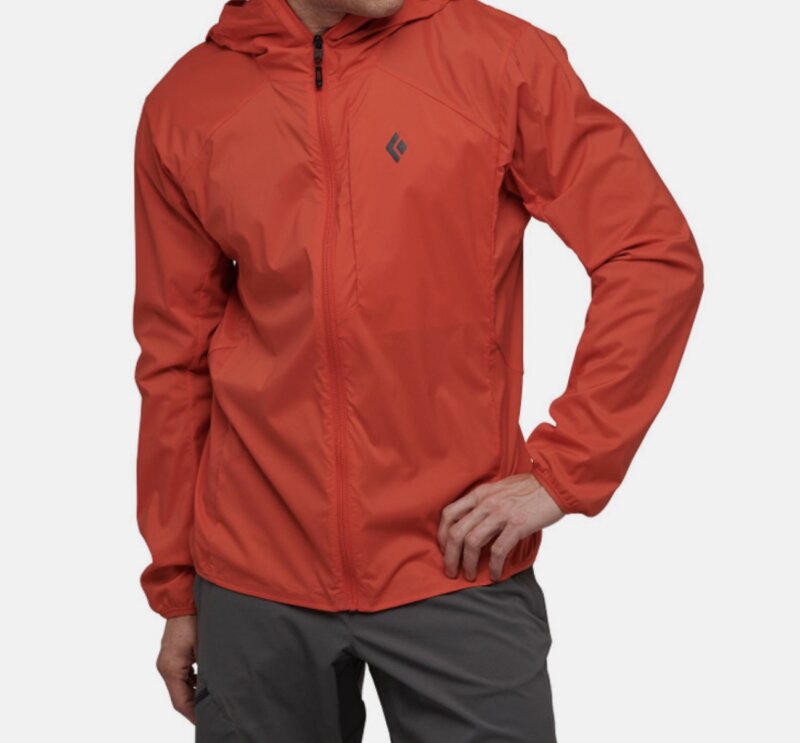
More breathable than Gore-tex, these soft shell jackets block wind and light precipitation and are great as an outer layer and warm layer under your parka.
Men’s Recommended: Black Diamond Alpine Start Hoody
Women’s Recommended: Black Diamond Alpine Start Hoody
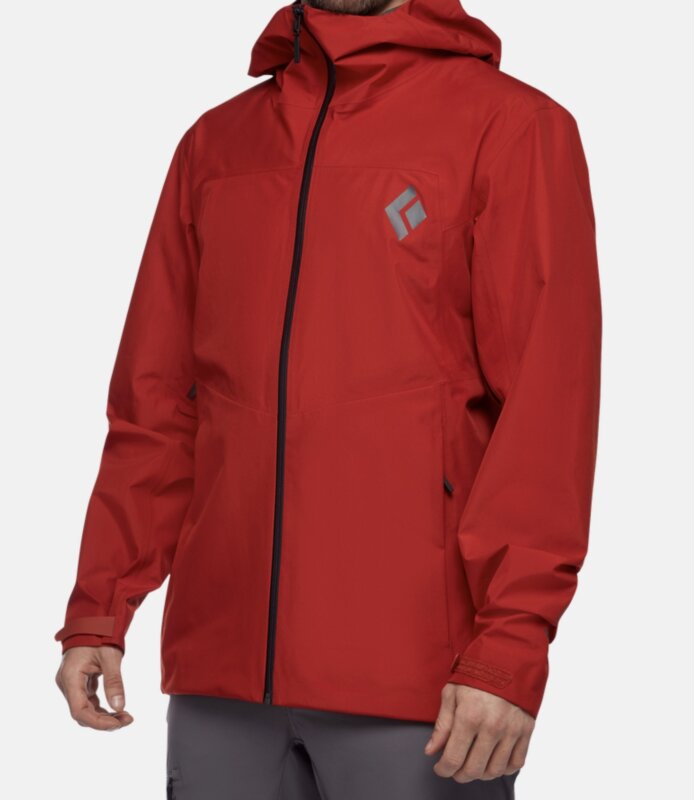
A lightweight, waterproof and breathable jacket WITH A HOOD that can withstand extreme weather conditions. Make sure you have pit-zips and if you are using an old jacket, re-waterproof it.
Recommended Men’s: Black Diamond Liquid Point Shell
Recommended Women’s: Black Diamond Liquid Point Shell

A puffy jacket with a hood that will keep you warm during the coldest of conditions. The higher the quality down, the better (800-fill is best). However, be sure the jacket is still lightweight.
Recommended Men’s: Black Diamond Vision Down Parka
Recommended Women’s: Black Diamond Vision Down Parka
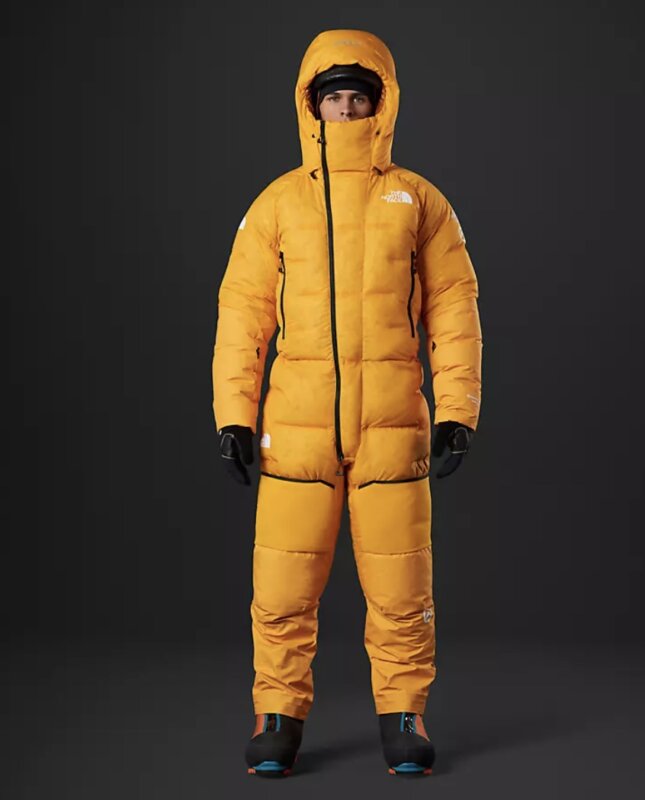
We HIGHLY recommend an 8000m insulated suit rather than a separate top and bottom.
Recommended Men’s: The North Face Down Suit
Recommended Women’s : The North Face Women’s Down Suit
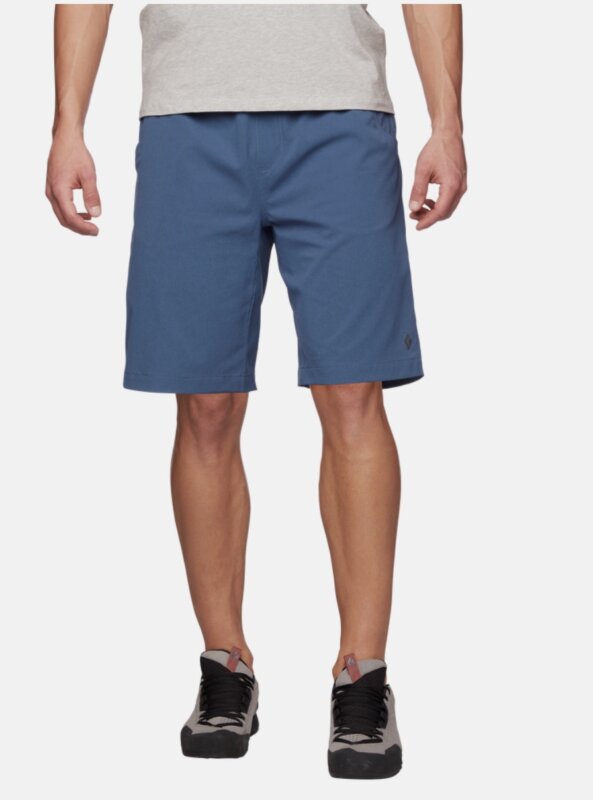
Throw these on under other layers for when the sun begins to beat, or you want to stretch / relax in Basecamp. Lightweight, durable and comfortable. NO COTTON.
Recommended Men’s: Black Diamond Sierra Shorts
Recommended Women’s: Black Diamond Sierra Shorts
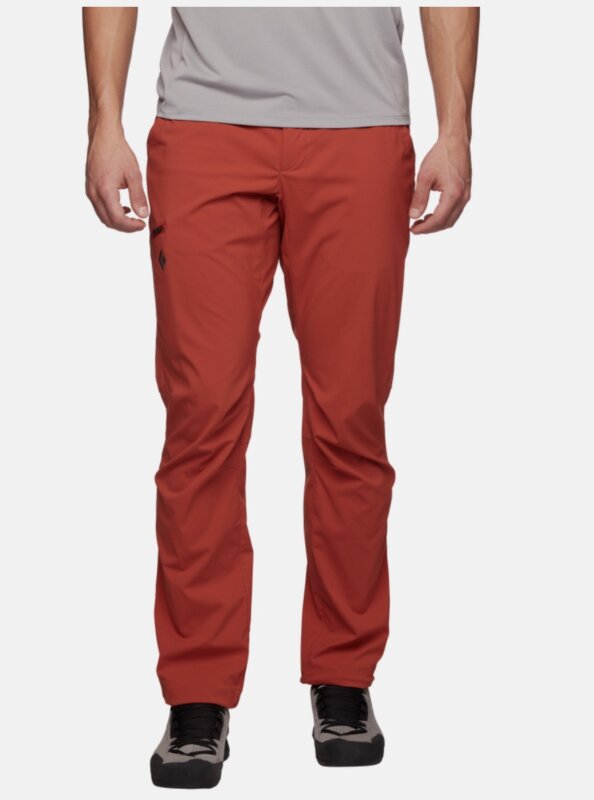
Lightweight, durable, quick-drying hiking pant that will be your day-to-day pant during the expedition
Men’s Recommended: Black Diamond Technician Alpine Pant
Women’s Recommended: Black Diamond Technician Alpine Pant
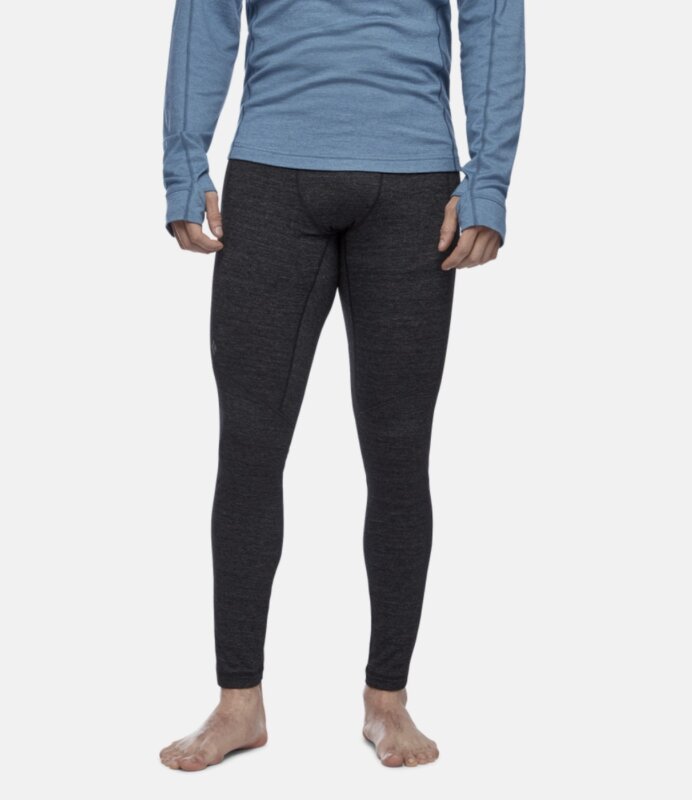
Fitted, light-weight, next to skin base layer.
Recommended Men’s: Black Diamond Mens Solution 150 Merino Bottoms
Recommended Women’s: Black Diamond Women’s Solution 150 Merino Bottoms

Fitted and quick drying. This piece will be a Mid-Weight Layer that will get you through a wide range of temperatures.
Recommended Men’s: Black Diamond Coefficient LT Pants
Recommended Women’s: Black Diamond Coefficient LT Pants

You will spend most of your days in these pants. Choose Schoeller® or a soft-shell equivalent. Breathable + water-resistant.
Men’s Recommended: Black Diamond Men’s Dawn Patrol Pants
Women’s Recommended: Black Diamond Women’s Dawn Patrol Pants
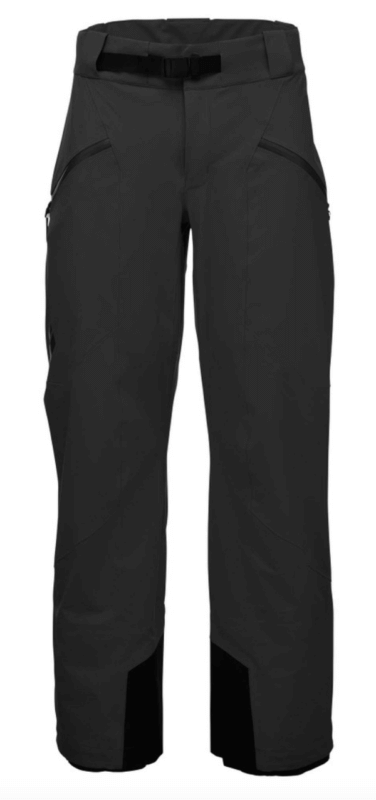
Your waterproof bottom layer for extreme weather days. Make sure you have water-resistant zippers, crampon patches + good pockets.
Recommended Men’s: Black Diamond Men’s Recon Stretch Pants
Recommended Women’s: Black Diamond Women’s Recon Stretch Pants
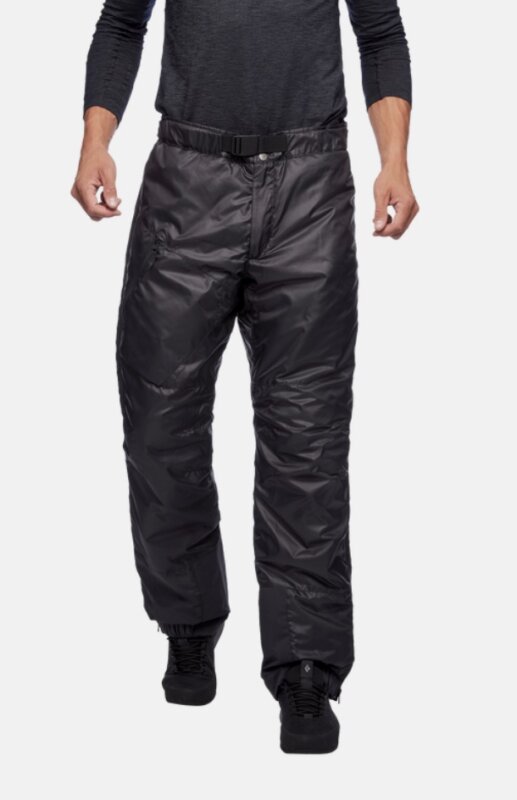
Full-length side zippers are recommended, for throwing on top of all of your layers.
Recommended: Black Diamond Stance Belay Pants
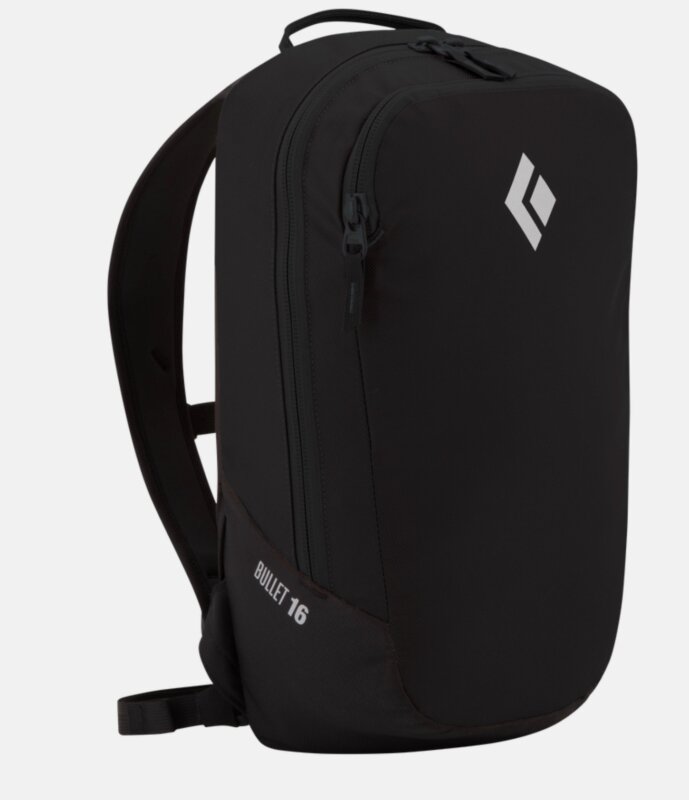
Mid-size pack for city days and trekking. Streamlined, neat and lightweight (10-20 liters).
Recommended: Black Diamond Bullet 16 Pack
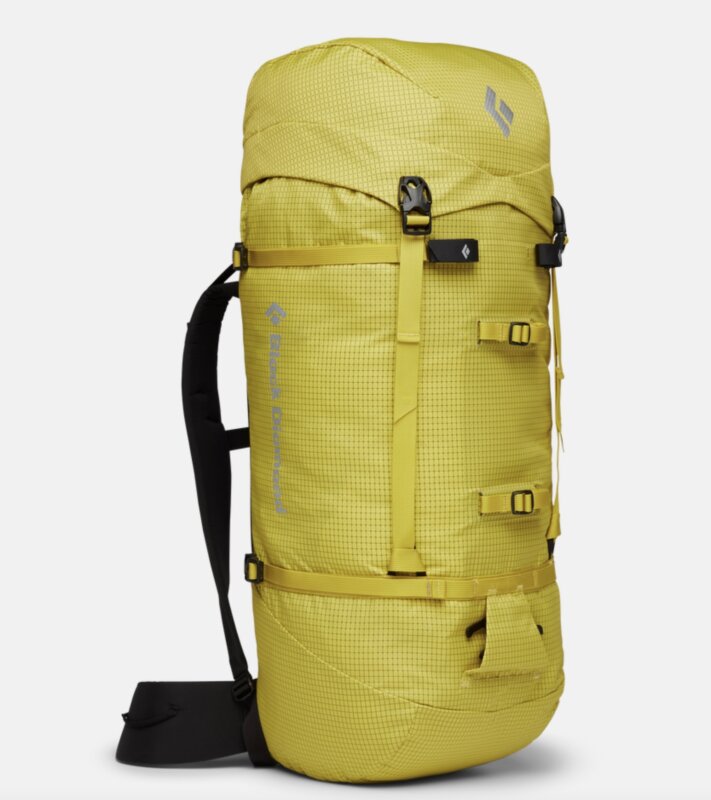
Internal frame pack that is between 50 and 60 liters. Either purchase a matching pack cover, or use garbage bags as liners. Make sure the pack is fitted to YOUR body.
Recommended : Black Diamond Speed 50L Pack
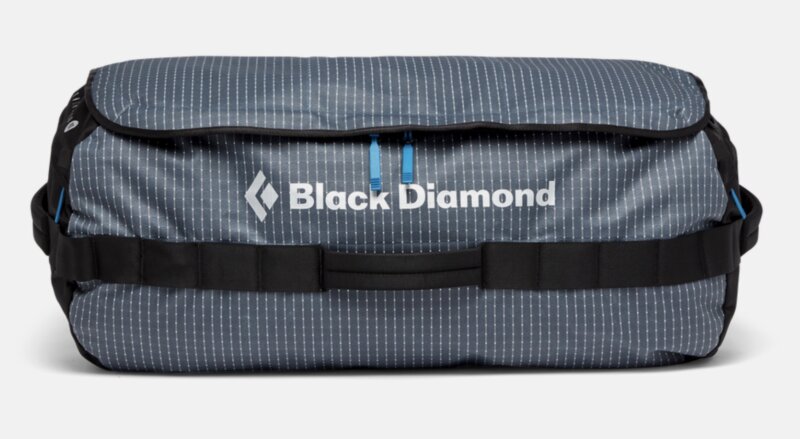
2 Duffle Bags – At least one bag should be extremely durable, waterproof, and big – between 90L and 120L. You should feel comfortable leaving it in a puddle for several hours. Remember dry clothes are hot commodities in the mountains! Large enough to fit everything you own, plus what you anticipate buying. Two duffel bags are necessary to fit all your equipment for travel (we don’t recommend checking your backpack, best is to put all gear and backpack into your duffle). Once in country, you can consolidate your gear into one duffel and your backpack. It’s common to leave the second duffel with city clothes and other non-necessary items behind in a locked and secure location that your guide will arrange for you.
Note: For ski expeditions such as the Ecuador Ring of Fire, you can replace one of these duffle bags with a ski/splitboard bag.
Recommended: Black Diamond Stonehauler 90L
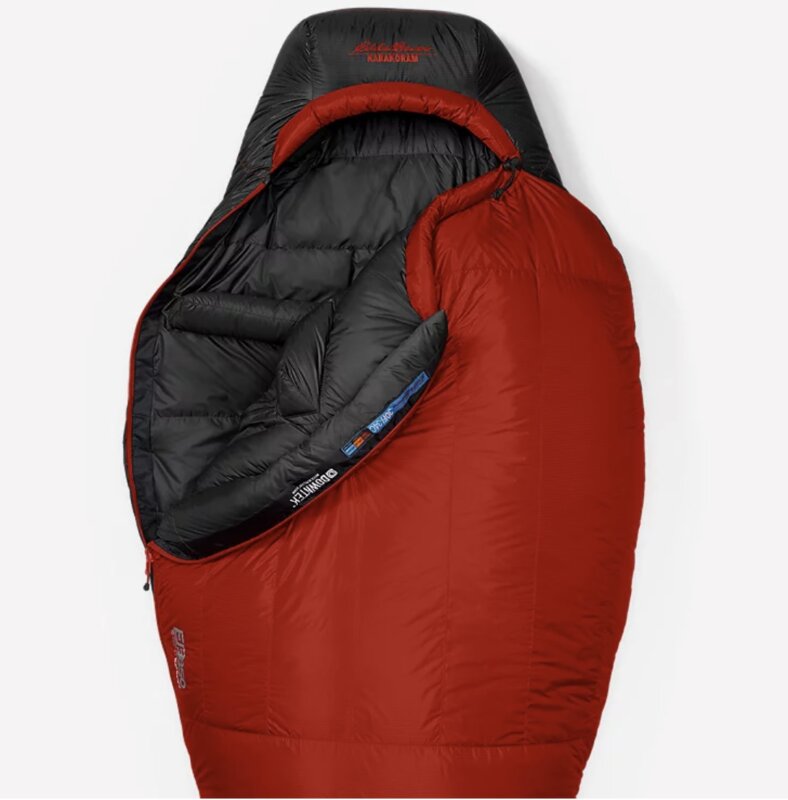
Rated to -30º F to -40º F. Choose an 800+ Fill Premium Goose Down bag. Make certain that the sleeping bag is the right length. DON’T FORGET A COMPRESSION SACK FOR THE SLEEPING BAG. Many climbers also like a silk liner.
Granite Gear Compression Sack is desired.
Recommended: Eddie Bauer Kara Koram with Compression Sack
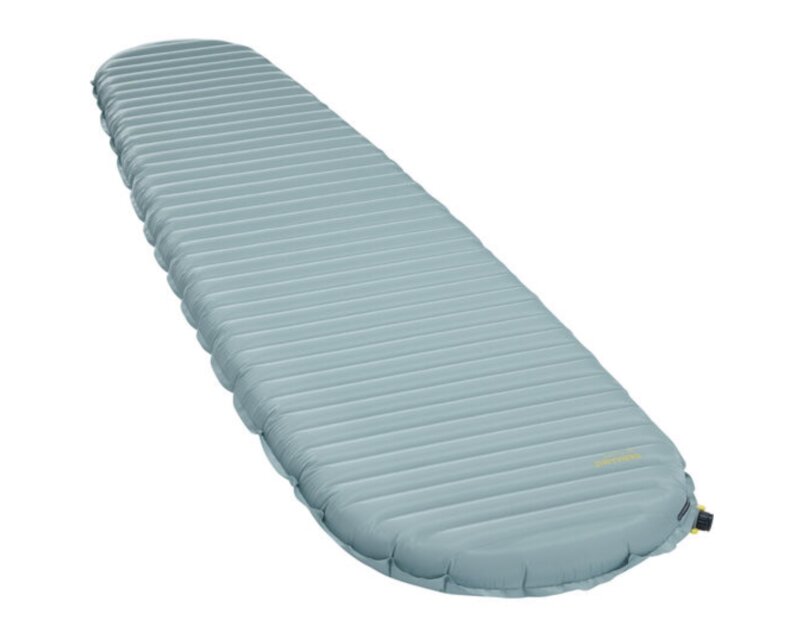
72-inch long inflatable pad required. Make sure you also purchase and bring a repair kit + bag for the sleeping pad.
Recommended: NeoAir Xtherm
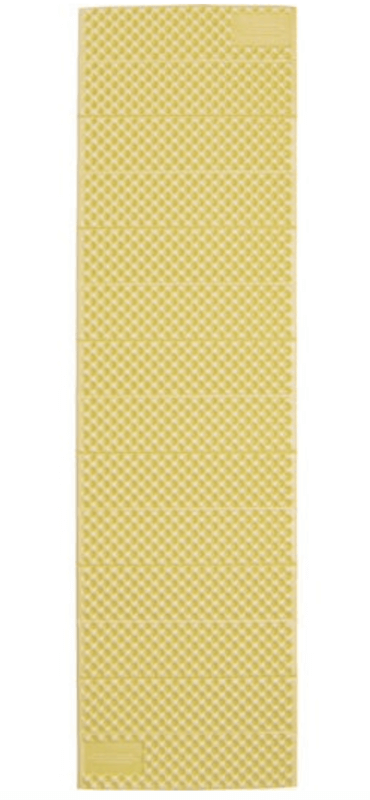
Recommended: Thermarest Z Lite SOL™ Sleeping Pad
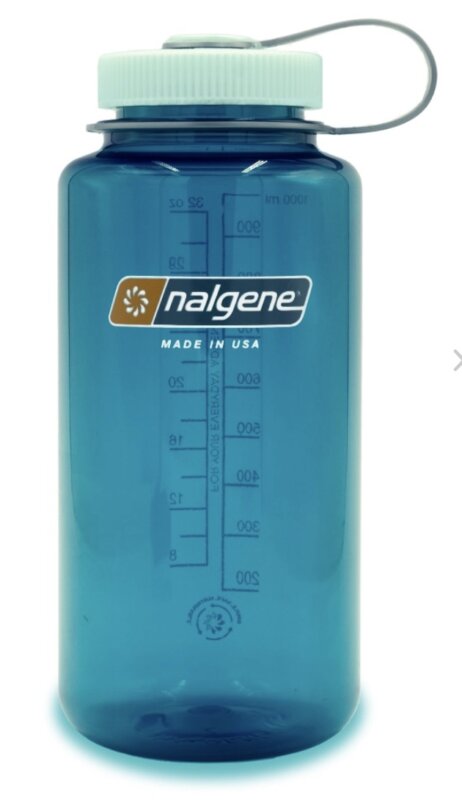
Two 1 Liter Wide Mouth Nalgene bottles.
Recommended: Nalgene 1 L wide mouth

1x Insulation cover for Nalgene bottle.
Recommended: Nalgene 32oz Insulated Sleeve

Should carry 70-100 ounces. Must be durable and have a reliable closure system. Recommended: MSR Dromlite 2L with Hydration Tube

These become really handy on summit push to keep water inside your down suit and maintain the water’s temperature. Make sure that the lid or drinking system has a lock.
Recommended: MTN STOW 350 mL Collapsible Bottle
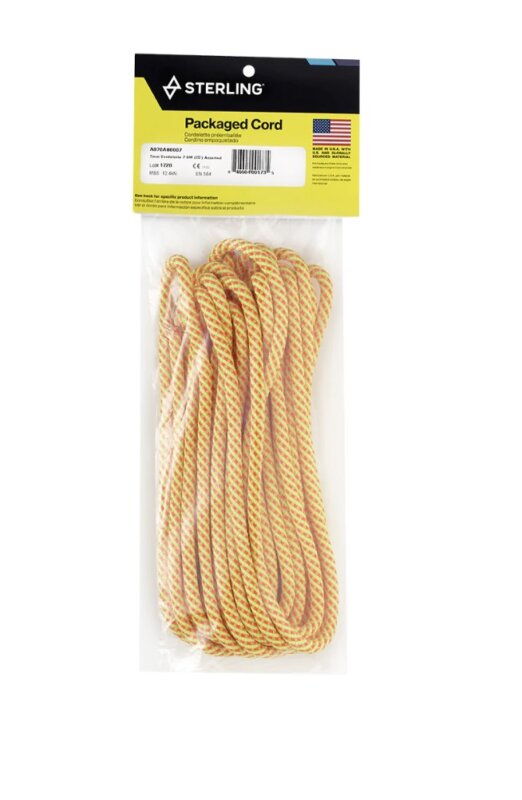
25’ of 6mm nylon accessory cord. This will be used to make prusiks and cordalettes.
Recommended: Black Diamond Static Accessory Cord
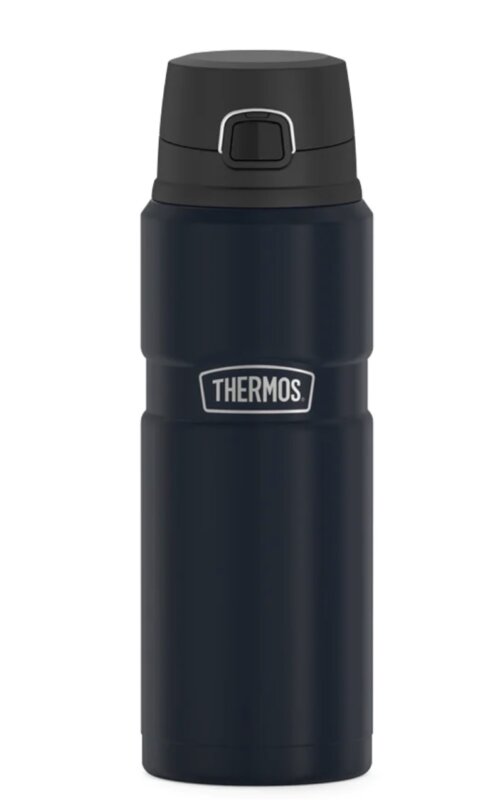
A fully insulated thermos is optional but recommended for warm drinks that help with comfort, hydration, and safety on cold days in the mountains.
Recommended: Thermos STAINLESS KING™ DRINK BOTTLE 24OZ
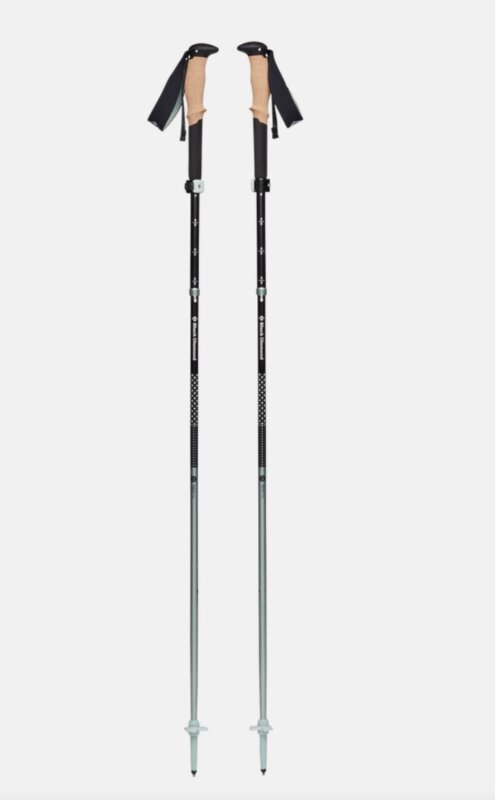
Make sure that they are durable, lightweight + easily adjustable.
Recommended: Black Diamond Pursuit FLZ Trekking Poles
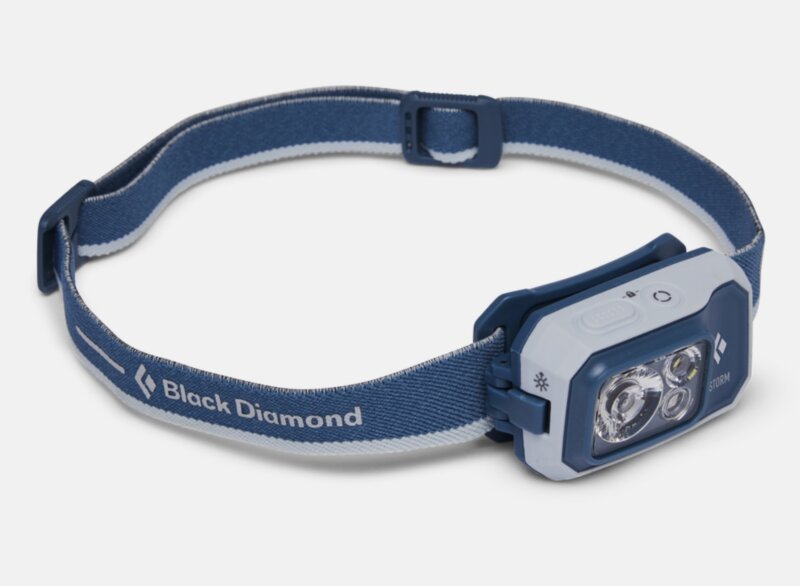
Please bring two L.E.D. Headlamps. One will be intended as a lightweight backup. L.E.D. headlamps are required. Make sure they have 3+ bulbs. Bring extra batteries. We highly recommend a tilting lamp.
Recommended: Black Diamond Storm 450
Backup Headlamp Recommended: Black Diamond Deploy 325

A lightweight and compact cookware setup. You’ll want a plastic bowl, mug and spoon.
Recommended Kit: MSR 2-Person Mess Kit
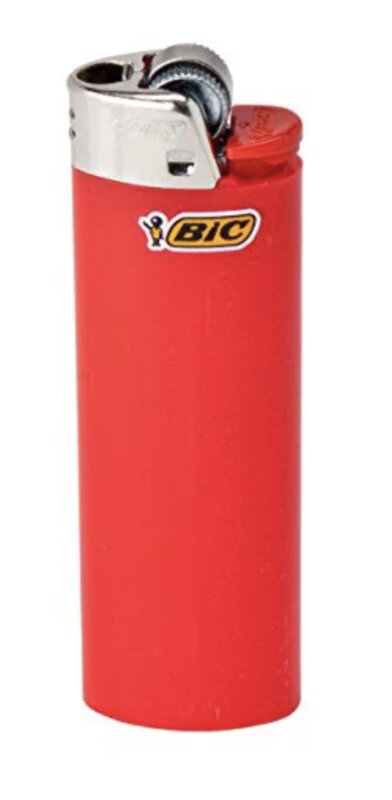
2 BIC Lighters
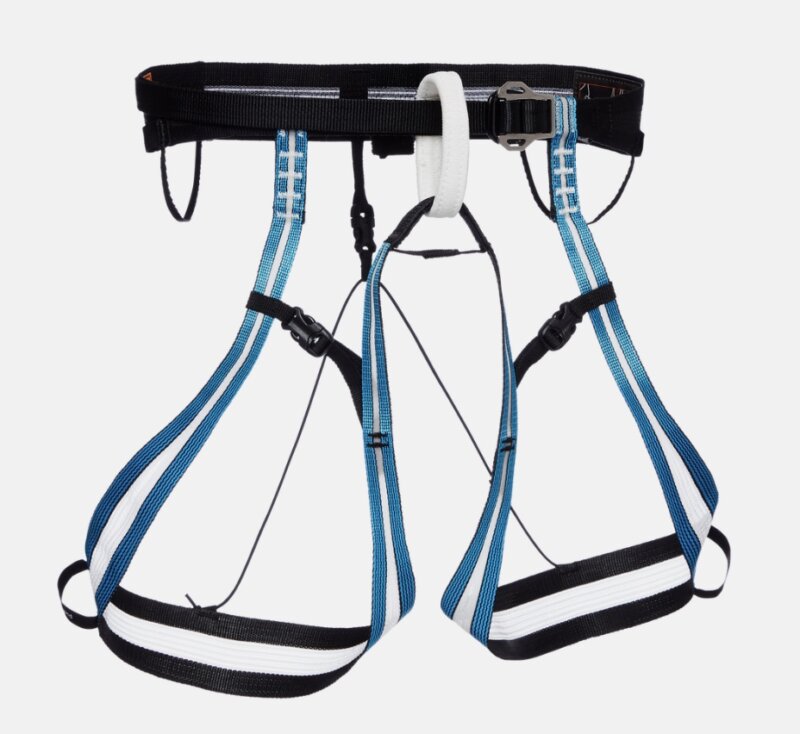
Must have belay loop, gear loops and adjustable leg loops so that you can layer up underneath it. Easy to pack, lightweight + comfortable. *Harnesses are also available to rent (for our introductory climbing courses) at no charge from Alpenglow expeditions on a first-come, first-serve basis.
Recommended: Black Diamond Couloir
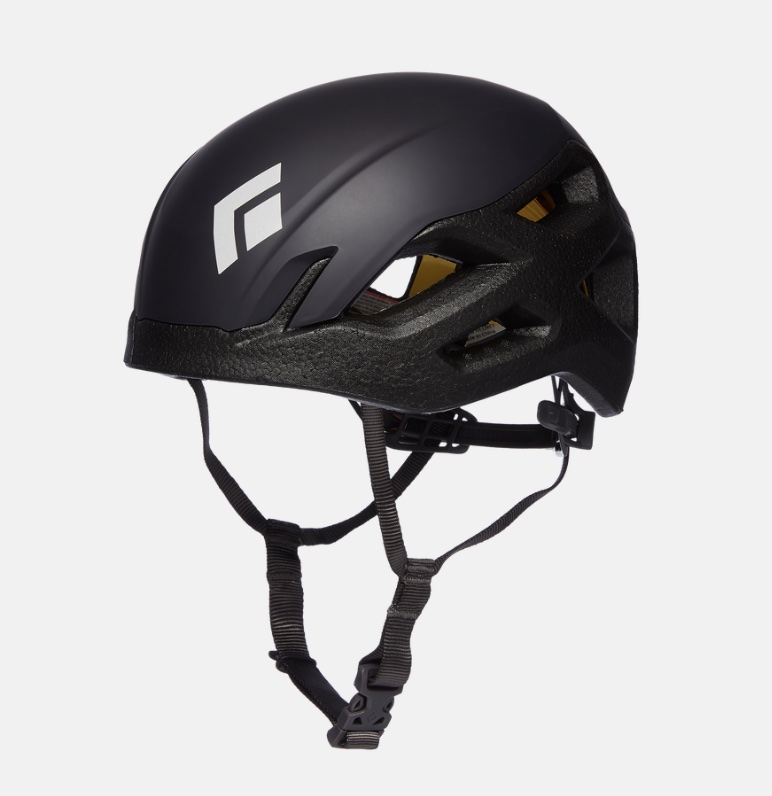
An easily adjustable lightweight helmet that fits with hat and Balaclava. Make sure this is a climbing-specific helmet. *Climbing helmets are also available to rent (for our introductory climbing courses) at no charge from Alpenglow Expeditions on a first-come, first-serve basis.
Recommended: Black Diamond Vision Helmet – MIPS

Steel crampons with anti-balling plates are required (so that snow does not build-up in the base of your foot). Make sure that crampons have a heel bail and that they fit snugly on your ski or snowboard boots. Crampons are available to rent (for our introductory climbing courses) at no charge from Alpenglow Expeditions on a first-come, first-serve basis.
Recommended: Black Diamond Sabretooth Crampons
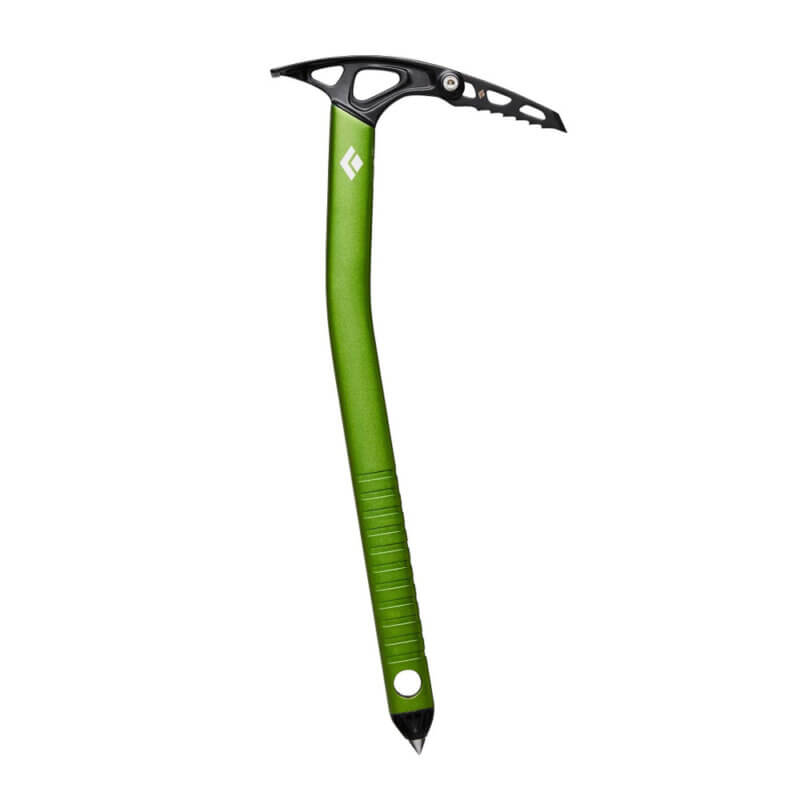
General purpose, ultra-light climbing ice axe.
Recommended: Black Diamond Venom Classic LT Piolet
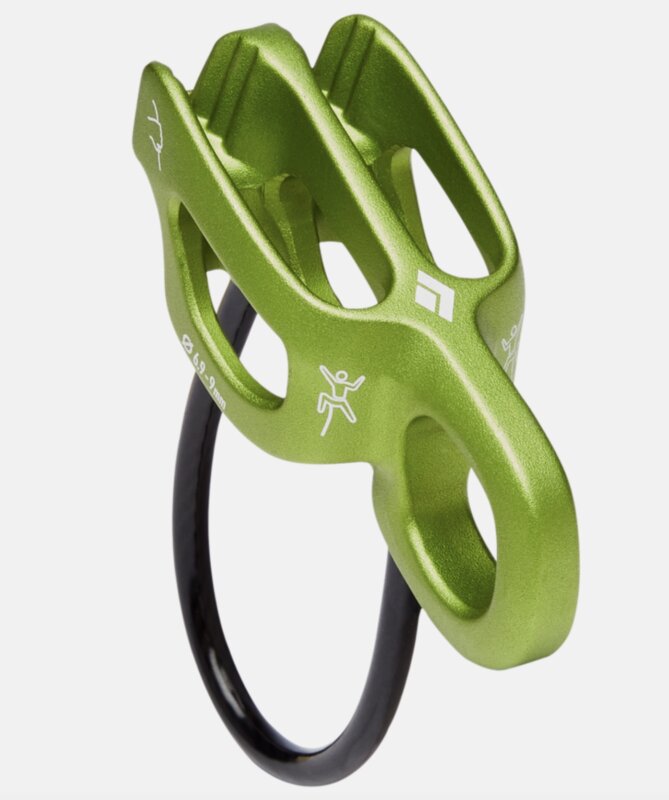
Light, easy to use + simple. Should have teeth/grooves for skinny ropes.
Recommended: Black Diamond ATC Alpine Belay Device
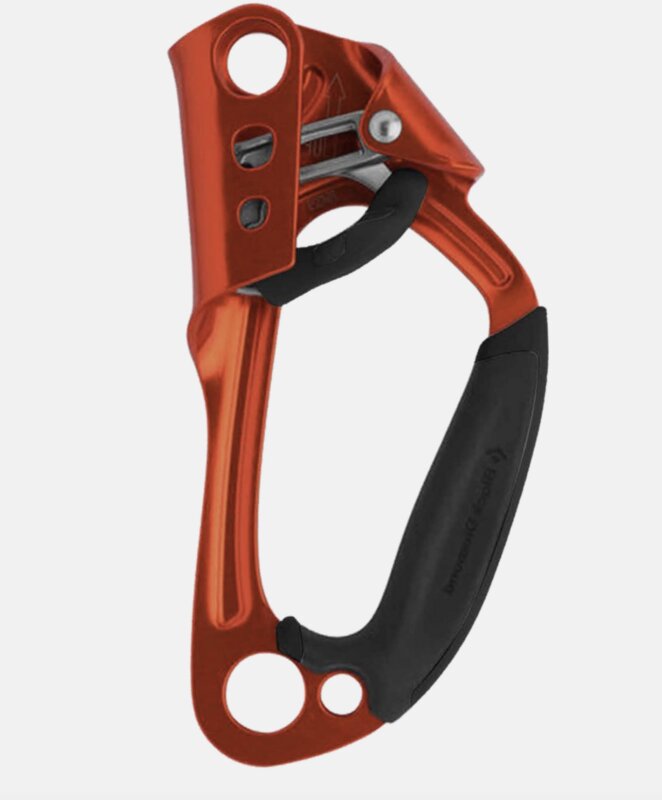
Should have a large opening for gloved hands, and an easy thumb trigger.
Recommended: Black Diamond Index Ascender

A digital transceiver that is simple to use or that you are extremely comfortable using.
Recommended: Black Diamond Recon Avalanche X Beacon
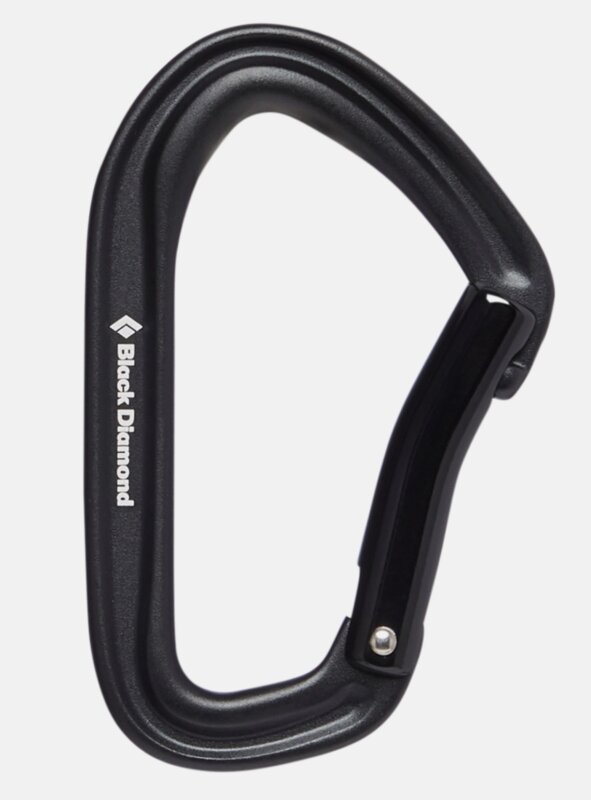
Small, lightweight small carabiners are best, wire-gates are fine.
Recommended: Black Diamond HotForge Carabiner
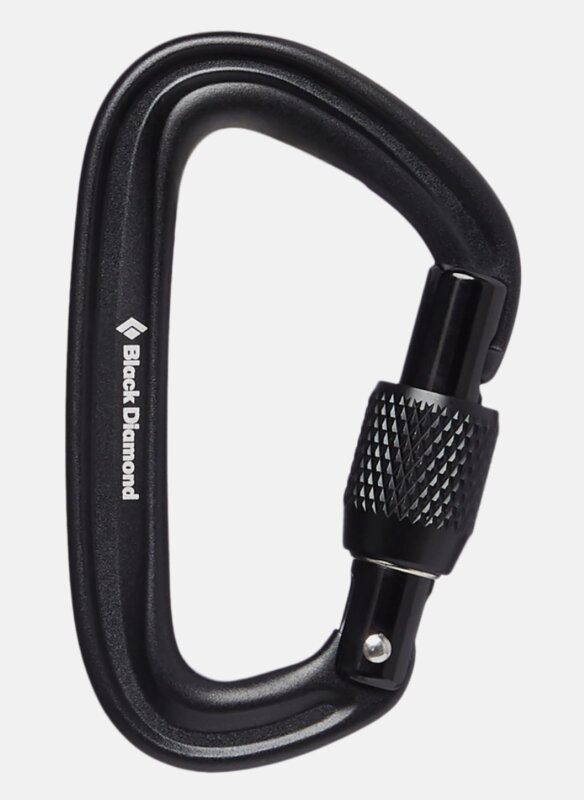
Small, lightweight locking carabiners are best.
Recommended: Black Diamond LiteForge Screwgate

- Passport with Chinese Visa
- 2 luggage locks (TSA compliant)
- Non-cotton underwear
- Stuffsacks: assorted sizes, for organizing your clothes and gear
- Sunscreen: SPF 30 (or higher)
- Lip balm with SPF 15 (or higher)
- Personal first-aid kit (Band-aids, Ibuprofen, Cough Drops, Moleskin, Pepto-bismol, Imodium, Personal Medications)
- 3-4lbs of Snack food: A variety of your preferred snack food – some whole food, bars, gels (climbing food will be provided in BC and ABC, but we always recommend for climbers to bring some of their favorite and familiar snacks to complement the selection we bring.)
- Hand Warmers
- Hand Sanitizer
- Powerbank (6-10K mAh good for 2-3 phone charges, weighing under 8oz)
- Base Camp Clothes: Life in Base Camp & Advanced Base Camp needs to be as comfortable as possible, so we recommend members bring a change or two of comfortable clothes that can help in leisurely days to feel comfortable and keep your climbing clothes clean. Our guides usually bring a set of comfy jeans, a cotton hoodie and T-shirt.
The feeling of standing on the summit of Everest/Chomolungma is almost indescribable
“The feeling of standing on the summit of Everest/Chomolungma is almost indescribable. What I can say is that the entire experience of climbing the mountain with Alpenglow Expeditions was a true pleasure. I felt taken care of and safe. There’s no better feeling than climbing a mountain, especially the world’s highest, and feeling safe doing it.”

Cho Oyu Expedition

Makalu Expedition

Climb Gasherbrum II

Ama Dablam Expedition
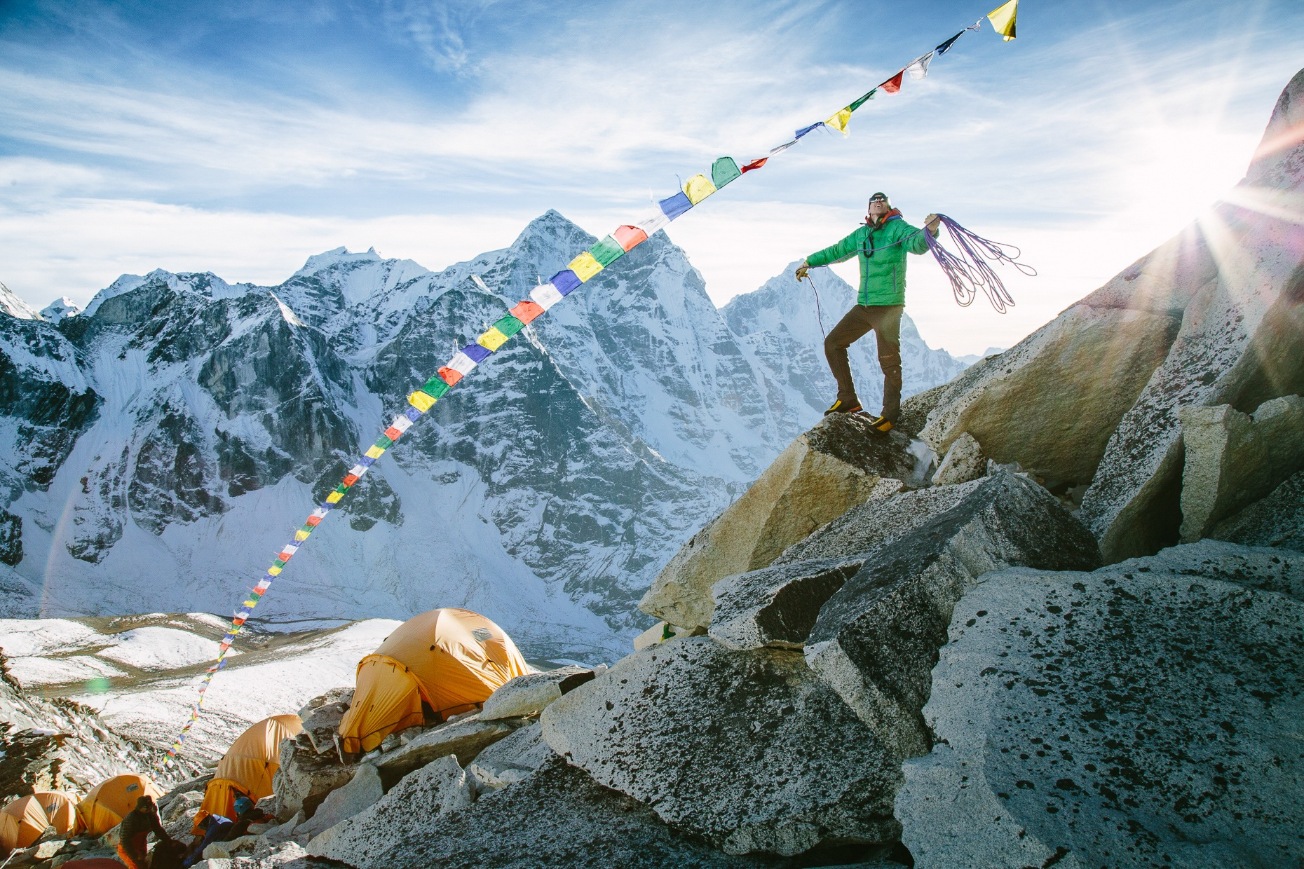
Denali Expedition

Vinson Massif Expedition
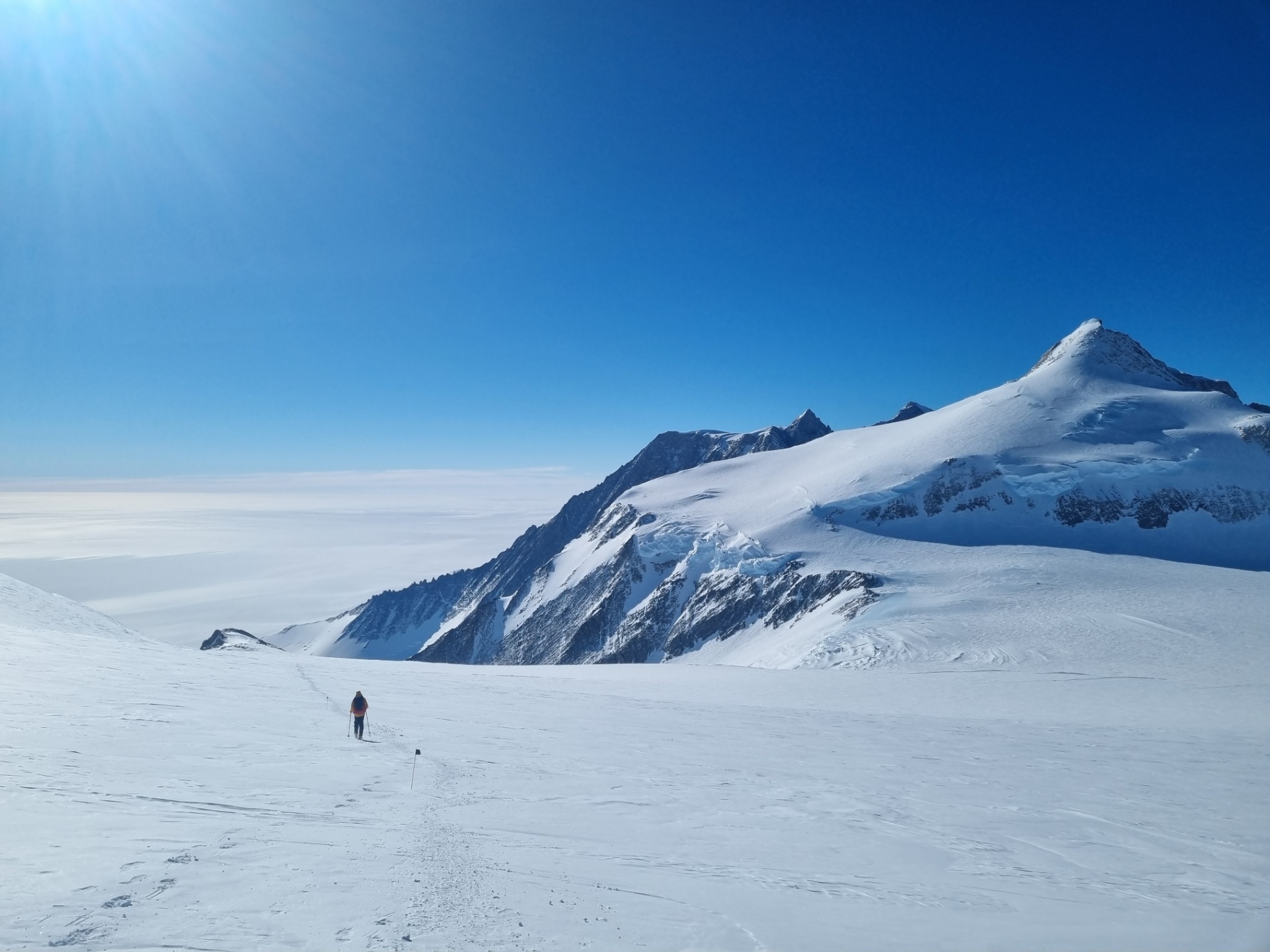
Carstensz Pyramid Expedition

Climb Aconcagua
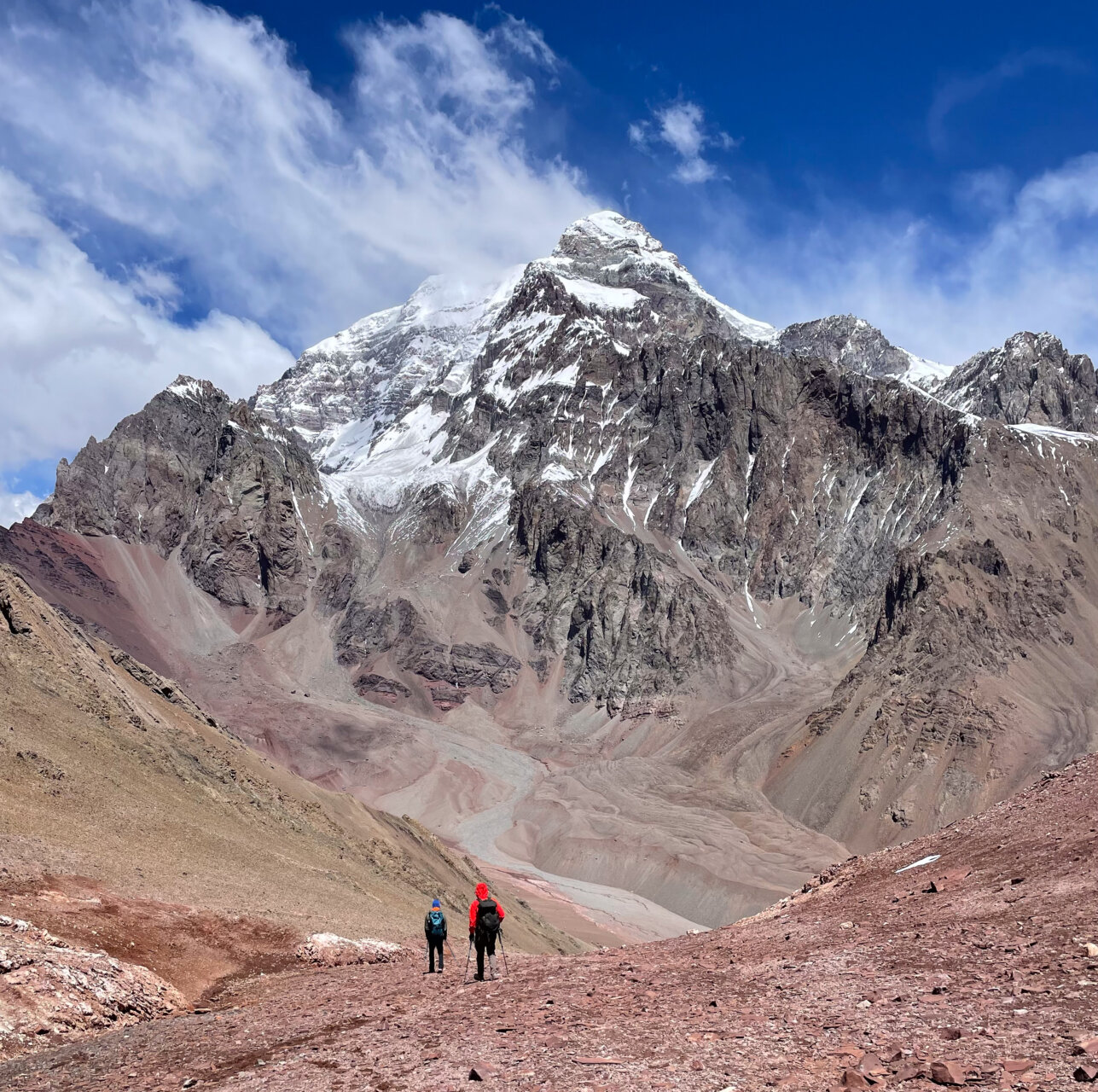
Dreaming of Everest?
Read about everest.

Questions To Ask Before Joining An Everest Expedition

Food on Everest: What to Eat and How it Gets to the Mountain
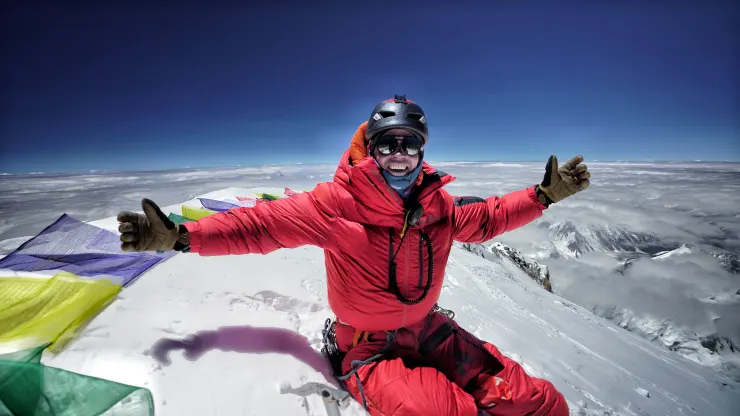
CEO who summited Mt. Everest 8 times: How to achieve success without chasing risks

Alpenglow Expeditions Is Returning to Everest and Cho Oyu
3 business lessons i learned while summiting mt. everest without supplemental oxygen.
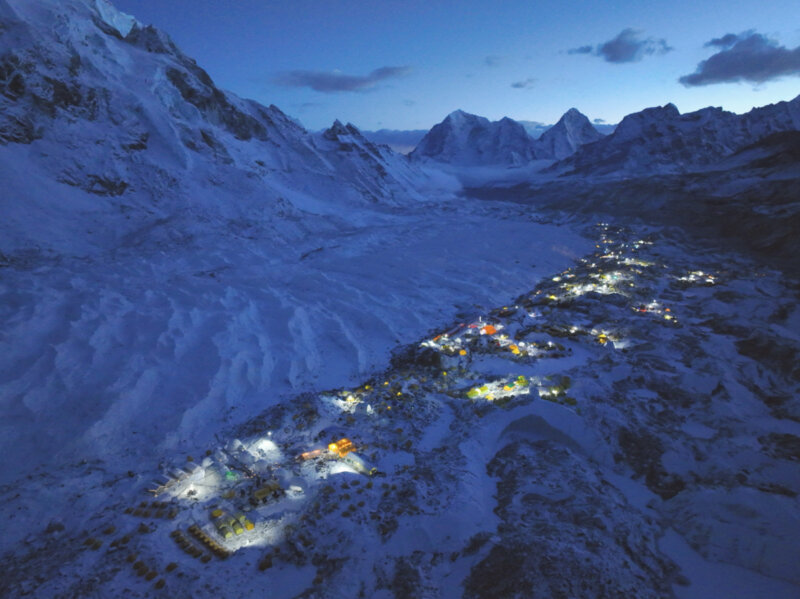
‘Death zone’ queues feared on Everest as Nepal grants record climbing permits

- BOOK YOUR NEXT TRIP
- 206.378.1927
- GEAR SHOP ACCOUNT

Mount Everest
(29,031.69 ft./8,848.86 m) nepal, everest + lhotse, south col expedition.
I have to say, though I knew it even before joining this expedition, AAI is the best company with the most perfect logistics and greatest guides on the mountain, bar none.
Our expedition begins with a flight from the US to Kathmandu, Nepal. We take a unique path which takes us through Gokyo Ri and the Cho La pass.
After a few days in Kathmandu checking gear, meeting the Sherpa, and preparing for our flight to Lukla (9,000 ft./2,740 m), which is at the base of the Khumbu Himal. From there, we’ll begin our trek to Everest Base Camp. The trek takes approximately 10 days and goes from the Dudh Kosi valley up through the Imja Drangka and onto the Khumbu Glacier. Along the way, we’ll visit the villages of Namche, Thame and into a more remote area of the Khumbu via the Renjo La and Cho la Pass , The trek in also gives us the chance to explore the many different regions and the time to visit local monasteries and visit with Nepali friends.
Years of experience have helped us to establish the finest Base Camp on the mountain. With the highest quality tent structures and imported foods, we strive to ensure that your time at Base Camp is restful and revitalizing. We have a full-time Base Camp manager and have a full communications tent for email and limited phone calls.
By the time we reach Base Camp (17,598 ft./5,364 m), our climbing leaders and Sherpa will be well on the way to having the lower part of the mountain (the Khumbu Icefall) already fixed with ropes and ladders. We’ll establish four camps on the mountain. The first, Camp I at 19,500 ft./5,943 m, is situated at the top of the icefall. This camp functions as an intermediate camp until Camp II (Advanced Base Camp) is established at 21,000 ft./6,400 m in the Western Cwm. Camp II will consist of large tents for cooking and dining and several smaller tents for sleeping. Camp II will be our base during the placements of Camp III and Camp IV (23,500 ft./7,162 m and 26,300 ft./8,016 m respectively).
Camp III, which stands at the head of the cirque on the Lhotse Face, will consist of three- and four-man tents. This intermediate camp helps us to reach Camp IV (High Camp) on the South Col. Most of our Sherpa are able to carry directly from Camp II to Camp IV, so we will not need large amounts of gear at Camp III to establish Camp IV. Oxygen will be used above Camp II to help aid climbers in reaching High Camp before attempting the summit. From Camp IV, we travel along the Southeast Ridge to the South Summit. From here we traverse for a few hundred meters before reaching the Hillary Step and then onto the main summit.
After Camps III and IV are established and all our supplies are in place, we’ll return to Base Camp for a rest. At Base Camp, we’ll organize our summit teams and prepare ourselves for summit attempts. Once we are ready, we’ll return to Advanced Base. If good weather prevails, we’ll move the summit team to Camp III. On the next day, the summit team moves up to Camp IV. Once at Camp IV, we’ll take a rest day. We have found that this rest at Camp IV greatly increases our chances of summit success. The following day will be summit day. We start very early that morning and attempt to reach the summit before midday.
After the summit, the team retreats back to the South Col and next day descends to Camp II. Guides and Sherpa will accompany all summit attempts and climbers will use oxygen.
Everest Day To Day Itinerary
Depart country of origin.
Transit (overnight en route).
Arrive Kathmandu. You’ll check into the renowned Yak and Yeti Hotel, a cornerstone of the Kathmandu scene, and attend a welcome dinner with other trekkers and climbers.
Kathmandu. Gear Check.
After final administration requirements, we’ll fly via Twin Otter to the landing strip in Lukla. Weather permitting, this flight offers outstanding views of the eastern Himalayas. In Lukla, we meet and join our Sherpa staff, load the yaks and begin the ascent to Base Camp. Our first day is an easy walk to lush environs of Phakding, located on the Dudh Kosi river. Hiking time: 3-4 hours
Hike to Namche
Rest day/hike to Everest view
Hike to Thame
Rest in Thame/ hike to Monastery
Hike to Lungden
Hike to Gokyo over Renjo La Pass
Hike Gokyo Ri and then onto Dragnag
Hike to Dzongla over Cho La Pass
Hike to Lobuche
Day 15 – Base Camp
Years of experience have helped us to establish the finest Base Camp (17,598 ft./5,364 m) on the mountain with the highest quality tent structures, including private sleeping tents. Our dinning tent is carpeted and heated with Wi-Fi and a movie screen is available. We provide hot showers at your request. We have western-trained cooks that prepare fresh local products as well as imported foods. We strive to ensure that the time at Base Camp is restful and revitalizing. By providing these accommodations, we make every effort to keep climbers healthy and rested.
Here we take a leisurely day at Everest Base Camp, enjoy morning tea at our tent, and spend the day checking out the life at Base Camp. We will spend time watching the daily preparations of our climbing team, taking a look at how meals are prepared, and have a chance to meet our Everest Sherpa staff.
General Climbing Schedule : schedule on the mountain is approximate and subject to changing conditions. Delays/early departures can occur.
Lobuche East Climb Itinerary: After trek to Bast Camp, we will spend several days doing some skills review, Puja, and then hike to Lobuche village for lunch and then climb to Lobuche high camp. We will spend a couple of nights at Locuhe high camp, climb to the peak and then return to EBC.
Climbing route: By the time we reach Base Camp, our climbing leaders and Sherpa will be well on the way to having the lower part of the mountain (the Khumbu Icefall) already fixed with ropes and ladders. We’ll establish four camps on the mountain. The first, Camp I, at 19,500 ft./5,943 m, is situated at the top of the icefall. This camp functions as an intermediate camp until Camp II (Advanced Base Camp) is established at 21,000 ft./6,400 m in the Western Cwm. Camp II will consist of large tents for cooking and dining and several smaller tents for sleeping. Camp II will be our base during the placements of Camp III and Camp IV (23,500 ft./7,162 m and 26,300 ft./8,016 m respectively).
Camp III, which stands at the head of the cirque on the Lhotse Face, will consist of three- and four-man tents. This intermediate camp helps us to reach Camp IV (High Camp) on the South Col. Most of our Sherpa are able to carry directly from Camp II to Camp IV, so large amounts of gear are not needed at Camp III to establish Camp IV. Oxygen will be used above Camp II to help aid climbers in reaching High Camp before attempting the summit. From Camp IV, we’ll travel along the Southeast Ridge to the South Summit. From there, we’ll traverse for a few hundred meters before reaching the Hillary Step and then onto the main summit.
Summit attempts: After Camps III and IV are established and all our supplies are in place, we return to Base Camp (and lower villages) for a rest. At Base Camp, we’ll organize our summit teams and prepare ourselves for summit attempts. Once we are ready, we’ll return to Advanced Base. If good weather prevails, we’ll move the summit team to Camp III. On the second day, the summit team will move up to Camp IV. Day 3 will be summit day. We’ll start very early that morning and attempt to reach the summit before midday. After the summit, we’ll retreat back to the South Col and the next day descend to Camp II. Guides and Sherpa will accompany all summit attempts and climbers will use oxygen.
Fly to KTM.
Depart KTM.
Arrive in home country.
Our expedition begins with a flight from the US to Kathmandu, Nepal. We’ll spend a few days in Kathmandu checking gear, meeting the Sherpa, and preparing for our flight to Lukla (9,000 ft./2,740 m), which is at the base of the Khumbu Himal. From there, we’ll begin our trek to Everest Base Camp. The trek takes approximately 10 days and goes from the Dudh Kosi valley up through the Imja Drangka and onto the Khumbu Glacier. Along the way, we’ll visit the villages of Namche, Tengboche, Pheriche, and Lobuche, most of which are fascinating and richly cultured villages that provide spectacular views of the Himalayas. The trek in also gives us the chance to explore the many different regions and the time to visit local monasteries and visit with Nepali friends.
In good conditions, we are back at the South Col between noon and 2 p.m. From here we have a variety of choices, depending on weather and strength of climbers. We can rest for a few hours at the South Col, then do the two-hour traverse to our Lhotse High Camp. Or we can spend another night at the South Col, move to Lhotse High Camp the next day, and summit the following day.
Everest + Lhotse Expedition Itinerary
Upon sign-up, we will send you our richly detailed Climber Information Package .
Kathmandu. From the centrally located Yak and Yeti, we’ll begin our exploration of Kathmandu. While modern by Nepalese standards, Kathmandu is a sacred city to Hindus and Buddhists. Our tour is an important introduction to understanding the cultures that lay ahead. Kathmandu is prominently featured in Buddhist scriptures and Hindu texts such as the Ramayana. Our tour includes 3,000-year-old Swamayabhu (monkey temple), the great Stupa of Bodnath, and a local school.
After final administration requirements, we’ll fly via Twin Otter to Syangboche and overnight Namche(11,300 ft./3444m). The village of Namche is an historic trading post where Nepalese and Tibetan traders exchange salt, dried meat, gold, and textiles. Besides being a superb place to shop for traditional crafts, Namche remains the central trading post in the Khumbu, attracting Himalayan and lowland merchants. Our group will spend two days in Namche, affording us the opportunity to acclimate, visit local markets, and spend time with friends in town. On the hike, we’ll capture our first glimpses of Everest and neighboring peaks.
Namche in the morning, then we’ll take an acclimatization hike, gaining 1,000 ft. to take in the vista on the patio of the Everest View Hotel, or take a similar-altitude trek. In the afternoon, we’ll have time to visit sights in Namche Bazaar, including the local marketplace.
On perhaps one of the most fascinating days of the trek, we’ll travel to the village of Thame (12,464 ft./3,800 m), off the main trekking path. We’ll have the unique opportunity of visiting the home of Lakpa Rita Sherpa, our Sirdar (lead Sherpa) and Everest climbing guide. His family has been a mainstay of this small community, raising yaks and farming. This gives us an intimate view of Sherpa culture through the lens of a traditional home. Interestingly enough, a number of famous climbing Sherpa have come from Thame. The Thame experience is one rarely afforded to trekkers. After afternoon tea, we’ll climb to the Thame monastery and further explore local Buddhism. We’ll tour this 400-year-old gompa (monastery), and learn about its inner workings and the lives of its monks. As we view the monastery we’ll discuss the wall paintings and artifacts that are central to Buddhist practice. We’ll hopefully have the opportunity to receive a blessing from the Thame Rinpoche (head priest). Hiking time: five hours.
From Thame, we’ll walk to the beautiful village of Khunde (12,400 ft./3,780 m), one of the largest villages in the Khumbu and home of Sir Edmund Hillary’s hospital and school. The day’s walk is moderate and pretty, winding through thick cedar forest. Hiking time: six hours.
We’ll continue on and climb to the village of Tengboche (12,683 ft./3,865 m), the cultural and religious center of the Khumbu. At the monastery, we’ll attend Buddhist ceremonies and rituals performed by local monks. Vistas from Tengboche are spectacular. The jagged peaks of Thamserku and Kangtega stand to our south as Everest, Lhotse, Nuptse, and Ama Dablam are visible to the north. The Monastery at Tengboche is one of the most well-known in the world; the Rinpoche is revered throughout the Buddhist community and has authored a number of books and essays. In the past, our groups have had an audience with the Rinpoche and received his blessing. Views from this locale (one of the finest on earth), include Kwangde (20,293 ft./6,185 m), Tawachee (21,457 ft./6,540 m), Nuptse (25,843 ft./7,876 m), Lhotse (27,883 ft/8,498 m), Everest (29,035 ft./8,850 m), Ama Dablam (22,487 ft./6,854 m), Kantega (22,235 ft./6,777 m), and Thamserku (21,674 ft./6,606 m). We’ll visit the community Sherpa Cultural Center and an excellent nearby bakery, and descend slightly to lodge in the village of Deboche. Hiking time: four to five hours.
We’ll climb to the village of Pheriche (13,907 ft./4,238 m), which is not far from Dingboche (a village en route to Island Peak). Pheriche has become famous for its high-altitude research center. The center attracts world-renowned physicians who acquire data to analyze the effects of high altitude on human physiology. We’ll visit the research center and learn more about the effects of high altitude on Himalayan climbers. Hiking time: four hours. We’ll also spend an additional day further acclimatizing and hiking.
Rest day in Lobuje, acclimatizing.
We’ll leave Lobuje and eventually cross the moraine of the great Khumbu Glacier to reach Base Camp, which lies beneath the sweeping ridges of Everest and Nuptse. Everest Base Camp at 17,598 ft./5,364 m, is a sprawling tent city set amidst glacial debris. There, the climbers will begin final preparations for their ascent of Mt. Everest. Conditions permitting, we will venture to the edge of the notorious Khumbu Icefall to see climbers en route as they negotiate this complex maze of ice. Overnight at Base Camp. Hiking time: six hours.
Summit attempts: After Camps III and IV are established and all our supplies are in place, we return to Base Camp (and lower villages) for a rest. At Base Camp, we’ll organize our summit teams and prepare ourselves for summit attempts. Once we are ready, we’ll return to Advanced Base. If good weather prevails, we’ll move the summit team to Camp III. On the second day, the summit team will move up to Camp IV. Day 3 will be summit day. We’ll start very early that morning and attempt to reach the summit before midday. After the summit, we’ll retreat back to the South Col and the next day descend to Camp II. Guides and Sherpa will accompany all summit attempts and climbers will use oxygen. In good conditions, we are back at the South Col between noon and 2 p.m. From here we have a variety of choices, depending on weather and strength of climbers. We can rest for a few hours at the South Col, then do the two-hour traverse to our Lhotse High Camp. Or we can spend another night at the South Col, move to Lhotse High Camp the next day, and summit the following day.
Camp II Expedition
Alpine Ascents pioneered guiding on Everest 20 years ago and today we remain the leader in offering high quality expeditions. An ascent to Camp II is a unique opportunity to experience climbing through the Khumbu Icefall and the Western CWM to our Advanced Base Camp at the base of the Southwest Face of Everest (21,500 ft.). One must have strong skills and be in very good physical condition to take on our Camp II expedition.
Team members experience climbing through some very challenging and notable aspects of Everest and get first-hand experience of what it takes to climb this great peak, as you are traveling much of the same route as our Everest summit team. This is an excellent opportunity to see if a future Everest climb is right for you or simply a chance to climb part of this legendary peak.
As always, Alpine Ascents teams will be led by veteran Everest guides and our legendary Sherpa climbing staff, who will provide the foremost in logistics and Base Camp facilities. Our unique team approach to climbing the mountain has allowed us to continually operate successful expeditions while maintaining an excellent safety record.
Please note that for climbs concluding at Camp II, several gear list items can be left behind. Please contact the Gear Department to discuss this.
Itinerary For Everest Camp II Climb
Upon sign up, we will send you our richly detailed, pre-trip Climber Information Package .
Please email [email protected] to request a detailed itinerary for this trip.
Spectacular Expedition. Having been on many climbs with Alpine Ascents I knew what to expect but was blown away by how smoothly the trip went, the level of execution and he quality of the staff. Truly a top notch operation.
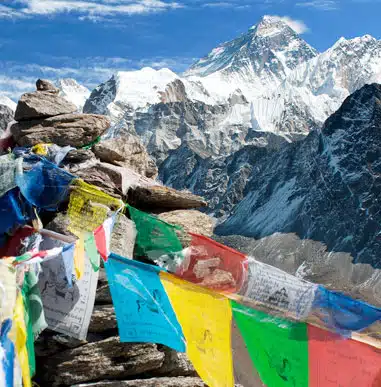
ALPINE ASCENTS BLOG

Diabetes in the Wild
Submission By Morgan McGonagle I was diagnosed with type 1 diabetes when I was 12 years old. As a very active and independent 12-year-old, this was not a convenient diagnosis. I wanted to be outside as much as possible at the time and was planning to attend a summer camp where I would be away […]

Training for Mountaineering Webinar with Steve House
Alpine Ascents International hosted Steve House, founder of Uphill Athlete and author of the training bible for mountaineers and trail runners, Training for the Uphill Athlete, for a free webinar on February 20th. Steve covered the training approach that he used in his own career as a professional climber which he now uses to help […]

Self Love and Wilderness
Submission by Avalon Qian. “Tag responsibly, keep the West wild.” I pause mid-mindless-instagram scroll. This is not the first time I have seen this sentiment in an instagram post or an article about leaving no trace: “Tag responsibly.” “Keep the West wild.” What does this tag mean? I understand the fear that wild places may […]
WHY BOOK WITH ALPINE ASCENTS
Knowledge & expertise.
Alpine Ascents International leads expeditions that have become benchmarks of quality in the climbing community. We operate what we believe is the finest mountaineering school in the country. This expertise is based upon years of accumulated experience-not just from individual mountain guides, but through experience on particular mountains where details are fine-tuned over time.
Our guides are an integral part of Alpine Ascents because they understand and share our climbing principles. These individuals are dedicated to sharing their excellence with others. Many of our guides have been with Alpine Ascents for over five years, with a handful of veterans working with us for most of their careers. The quality of our Guide Staff is the primary difference between us and our competitors.
Environmental Reponsibility
Leave No Trace principles are fundamental to our program, and we encourage all who climb and trek with us to understand proper wilderness practices. We help facilitate this effort by passing on Leave No Trace training and literature to every Alpine Ascents climber.
Partners & Accreditations
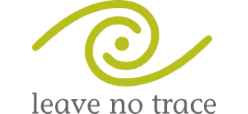
2-FOR-1 GA TICKETS WITH OUTSIDE+
Don’t miss Thundercat, Fleet Foxes, and more at the Outside Festival.
GET TICKETS
BEST WEEK EVER
Try out unlimited access with 7 days of Outside+ for free.
Start Your Free Trial
How Much Does It Cost to Climb Everest?
Heading out the door? Read this article on the Outside app available now on iOS devices for members! >","name":"in-content-cta","type":"link"}}'>Download the app .
How much does it cost to climb Mt. Everest? This is one of the most common Google searches that lead people to my site . And the most often asked question during my presentations. My usual answer is “A car.”
But everyone who has read Jon Krakaurer's Into Thin Air bookread that both Adventure Consultants and Mountain Madness' clients paid$65,000 each in 1996. So in 14 years, has that changed?
Here is my annual update on list prices based on December 2009public information posted on the companies' websites. The high pricefor 2010 goes to RMI with a climb guided by 11 time Everest summiter,Dave Hahn at $74,000. The low-end, as usual, is offered by the localKathmandu operators; with Asian Trekking leading the way at $30,300.
Remember that these are list prices and sometimes discounts can benegotiated but not always. I tried to 'normalize' the prices by addingflights, oxygen, full support at all camps and a 1:1 Sherpa/Clientratio for summit night if the companies' base price does not include it.
In the following table you can see that prices have moved a bit fromlast year, on average south side prices went up for some operators andnow average about $51,000 on the south. The north side prices remainedabout the same at an average of $26,900. This spread has narrowedsomewhat over the decade as the costs on the Chinese side haveincreased. However, prices on the Nepal side have also increased in aclassic case of supply and demand.
The major difference between the higher and lower prices for allcompanies is primarily the inclusion of western guides and a smallguide to climber ratio. In other words, the highest price is based onsmall teams with a at least one, if not more, western guides and a highnumber of Sherpas. The low prices usually have no western guide andsometimes a minimum number of Sherpas. Finally some of the pricechanges are due to currency adjustments with companies offering theirclimbs in Euros, not US Dollars.
This can be quite confusing so if you want to know more I have extensive details on my Guide and Questions for Guides pages.
Arnette is a Speaker, Mountaineer and Alzheimer's Advocate. You can read more on his site .
Popular on Outside Online
>", "path": "https://www.outsideonline.com/outdoor-adventure/hiking-and-backpacking/thru-hiking-advice-pacific-crest-trail/", "listing_type": "recirc", "location": "list", "title": "here’s what i wish i knew before hiking the pacific crest trail"}}'> here’s what i wish i knew before hiking the pacific crest trail, >", "path": "https://www.outsideonline.com/outdoor-adventure/climbing/asheboro-boulders-owned-by-zoo/", "listing_type": "recirc", "location": "list", "title": "is your local bouldering area in trouble call the zoo."}}'> is your local bouldering area in trouble call the zoo., >", "path": "https://www.outsideonline.com/health/training-performance/vinyasa-yoga-sequence/", "listing_type": "recirc", "location": "list", "title": "what jazz legend miles davis taught me about teaching yoga"}}'> what jazz legend miles davis taught me about teaching yoga, >", "path": "https://www.outsideonline.com/culture/opinion/its-time-to-ban-campfires-for-good/", "listing_type": "recirc", "location": "list", "title": "it’s time to ban campfires for good"}}'> it’s time to ban campfires for good.
Support 110 years of independent journalism.
- Radio & Podcasts
The cost of climbing Everest
A new Radio 4 series reveals the stark and deadly reality of conquering the world’s highest mountain.
By Rachel Cunliffe

My childhood dream was once to climb Mount Everest. Mountains mesmerised me: we used to go on holiday to the Alps and it was impossible for my young brain to comprehend the cosmic difference in scale between the day-hikes my parents took me on and the prospect of summitting the world’s highest peak. By the time I realised that Everest expeditions last several months and claim multiple lives every year, I had moved on.
Rebecca Stephens did not. In 1993, she became the first British woman to reach the summit. “I was there at the cusp of change,” she recalls in this five-part series for Radio 4 on the commercialising of Everest.
It marks the anniversary of a tragedy. Ten years ago this month, 16 people were killed in an avalanche. Tellingly, they were all sherpas. They died carrying up equipment intended to help paying climbers who flocked to the mountain on commercial expeditions.
Stephens examines how this “global obsession with the world’s highest mountain is shaping its future and the future of the people who work on it”. The sound of creaking ice is interspersed with original recordings from her trip as she tells the story of her own personal journey: the planning, the training, the exhaustion of the ascent – followed by the exhilaration of reaching the summit and seeing the world from above in a 360-degree panorama.
On the gruelling journey back down, she met a fellow climber dying of altitude sickness. She speaks to sherpas – the name of an ethnic group, not a term for porters – who have devoted their lives to the mountain. Traditional Nepalese folk music plays in the background. A dreamlike, immersive soundscape is juxtaposed with the starkness of the reporting. A sherpa recounts how he brought the bodies of his colleagues home to their families.
The Saturday Read
Morning call, events and offers, the green transition.
- Administration / Office
- Arts and Culture
- Board Member
- Business / Corporate Services
- Client / Customer Services
- Communications
- Construction, Works, Engineering
- Education, Curriculum and Teaching
- Environment, Conservation and NRM
- Facility / Grounds Management and Maintenance
- Finance Management
- Health - Medical and Nursing Management
- HR, Training and Organisational Development
- Information and Communications Technology
- Information Services, Statistics, Records, Archives
- Infrastructure Management - Transport, Utilities
- Legal Officers and Practitioners
- Librarians and Library Management
- OH&S, Risk Management
- Operations Management
- Planning, Policy, Strategy
- Printing, Design, Publishing, Web
- Projects, Programs and Advisors
- Property, Assets and Fleet Management
- Public Relations and Media
- Purchasing and Procurement
- Quality Management
- Science and Technical Research and Development
- Security and Law Enforcement
- Service Delivery
- Sport and Recreation
- Travel, Accommodation, Tourism
- Wellbeing, Community / Social Services
I grew out of wanting to climb Everest, but I was always in awe of people who have. There seemed something noble in conquering the summit of the world. Having listened to The Everest Obsession , I’m no longer so sure.
The Everest Obsession BBC Radio 4; available on catch-up
[See also: Julia Louis-Dreyfus wants older women to be heard in Wiser Than Me ]
Content from our partners

Unlocking the potential of a national asset, St Pancras International

Time for Labour to turn the tide on children’s health

How can we deliver better rail journeys for customers?

Julia Louis-Dreyfus wants older women to be heard in Wiser Than Me

When meditation goes wrong

How Amber Heard lost
This article appears in the 10 Apr 2024 issue of the New Statesman, The Trauma Ward
- OH&S, Risk Management

© 2016 Incredible Adventures - 6604 Midnight Pass Road - Sarasota, Florida 34242
800-644-7382 or 941-346-2603 Call Us. We Love to Talk Adventure!
Trans-Siberian Railway Prices
- Trans-Siberian Railway Tickets
- Trans-Siberian Railway Ticket Booking
- Trans-Siberian Railway Car Classes
- Travel Procedure
- Trans-Siberian Railway Route
- Guides & Gadgets

Home » Prices and Trans-Siberian Tickets » Trans-Siberian Railway Prices
Ticket prices for the Trans-Siberian Railway also depend on the current ruble exchange rate.
Is the Trans-Siberian Railway expensive?
Before starting on your Trans-Siberian Railway adventure you naturally want to know what the entire trip will cost. Although this sounds like a simple question, it is pretty difficult to answer. The Trans-Siberian Railway price of travel depends on the following factors:
- Which travel class do I want to use? The price for a first class ticket is about three times the price of a 3rd class ticket
- Am I willing to buy the tickets myself and assume responsibility for the organisation of the trip?
- How many stopovers do I want to make? The more breaks, the higher the total price.
- What sort of accommodation do I want? Will it be a luxury hotel or will a hostel dormitory be sufficient?
- What tours and excursions would I like to go on?
- What is the current exchange rate for rubles?
Basically, everything from a luxury to a budget holiday is available. If you buy yourself a 3rd Class nonstop ticket at the counter, a few hundred Euros will cover the price. All you will experience is a week on the Trans-Siberian train and will see nothing of the cities on the way. There is, however, any amount of room for upward expansion. Everyone makes different choices about which aspects they are willing to spend money on. I personally prefer to save money on accommodation and railcar class, visit as many cities and do as many trips as possible. To enable better classification of your travel expenses I have contrasted two typical traveler types. In the third column you can calculate the total cost of your own journey on the Trans-Siberian Railway. Please keep in mind that these are only rough estimations and not exact prices.
The all-in costs seem fairly high at first. However, they cover everything and it is quite a long journey taking four weeks. Many people forget to consider that when looking at the list. We should also deduct the running costs for food and leisure at home. I think most visitors to this page will classify themselves somewhere between the two categories, that is around the € 2,000 – € 2,500 range. When comparing these prices with other travel packages, you get the impression that it is hardly worthwhile travelling individually on the Trans-Siberian Railway. Please keep in mind that most packages last no more than 14 days and you are herded like cattle through the most beautiful locations.
If you spend less time on the Trans-Siberian Railway you will, of course, pay less. I chose this particular travel length because I prefer not to do things by halves. If you fulfill your dream of travelling on the Trans-Siberian Railway, enjoy it and don’t rush things. But it’s up to you, of course. Try playing around with the form a bit to find the appropriate price for your trip.
- Trans-Siberian Railway Tickets »
Jump to main content
Jump to navigation
- Latest News Read the latest blog posts from 1600 Pennsylvania Ave
- Share-Worthy Check out the most popular infographics and videos
- Photos View the photo of the day and other galleries
- Video Gallery Watch behind-the-scenes videos and more
- Live Events Tune in to White House events and statements as they happen
- Music & Arts Performances See the lineup of artists and performers at the White House
- Your Weekly Address
- Speeches & Remarks
- Press Briefings
- Statements & Releases
- White House Schedule
- Presidential Actions
- Legislation
- Nominations & Appointments
- Disclosures
- Cabinet Exit Memos
- Criminal Justice Reform
- Civil Rights
- Climate Change
- Foreign Policy
- Health Care
- Immigration Action
- Disabilities
- Homeland Security
- Reducing Gun Violence
- Seniors & Social Security
- Urban and Economic Mobility
- President Barack Obama
- Vice President Joe Biden
- First Lady Michelle Obama
- Dr. Jill Biden
- The Cabinet
- Executive Office of the President
- Senior White House Leadership
- Other Advisory Boards
- Office of Management and Budget
- Office of Science and Technology Policy
- Council of Economic Advisers
- Council on Environmental Quality
- National Security Council
- Joining Forces
- Reach Higher
- My Brother's Keeper
- Precision Medicine
- State of the Union
- Inauguration
- Medal of Freedom
- Follow Us on Social Media
- We the Geeks Hangouts
- Mobile Apps
- Developer Tools
- Tools You Can Use
- Tours & Events
- Jobs with the Administration
- Internships
- White House Fellows
- Presidential Innovation Fellows
- United States Digital Service
- Leadership Development Program
- We the People Petitions
- Contact the White House
- Citizens Medal
- Champions of Change
- West Wing Tour
- Eisenhower Executive Office Building Tour
- Video Series
- Décor and Art
- First Ladies
- The Vice President's Residence & Office
- Eisenhower Executive Office Building
- Air Force One
- The Executive Branch
- The Legislative Branch
- The Judicial Branch
- The Constitution
- Federal Agencies & Commissions
- Elections & Voting
- State & Local Government
Search form
Briefing room.
- Executive Orders
- Presidential Memoranda
- Proclamations
- Pending Legislation
- Signed Legislation
- Vetoed Legislation
FACT SHEET: Moscow Summit, July 6-8
- Regent Seven Seas Cruises
Best of Moscow by high speed train
By shuguley , February 15, 2014 in Regent Seven Seas Cruises
Recommended Posts

Sure would appreciate someone who has taken "Best of Moscow by high speed train" from St. Petersburg could please share their impressions of this shore excursion. From the description this sounds like a very long day.
Wondering how the 4 hour train trip was in terms of accommodations, etc. Also what time did you leave the ship and what time at night did you return? Were both legs of the trip on the high speed rail (I read that slower trains also travel the same tracks)?
My wife and I are considering this excursion. We thought that if we are making all the effort to go to Russia then how could we pass up going to Moscow, walking in Red Square, seeing St. Basil, etc.
Link to comment
Share on other sites.
If you are considering this on the 2015 June Baltic cruise on Voyager; my suggestion is don't. There is so much to do in St. Petersburg and although a train is one of my favorite ways to travel the time would be far better spent in St. P.
Thanks for the advice. Yes, this would be on the Voyager during the 2015 season but not yet sure exactly which cruise.

We did the Moscow excursion "on a different luxury line", but from your brief description it sounds very much like the same trip, so I will operate on that assumption. It is a VERY long day! We left the ship at 5:30 AM and returned at 12:30 AM. The highspeed train trip is comfortable, and while they call it "Business Class" it does not compare well to the equivalent class on say Rail Europe. When we did it in 2011, we did have highspeed both ways, and the trip back seemed much longer as the adrenaline and excitement had worn off!:D
Moscow itself is not that terribly different from any other big city in the world, but this Cold War kid never thought he would ever stand in Red Square, never mind walk the grounds of The Kremlin, or tour The Kremlin Palace, or see (but not visit) Lenin's Tomb, or visit The Armoury. But he did, and he loved every minute of it! Yes, it is a long day, and you barely scratch a scratch on the surface, but it is worth it. There is a tremendous amount to see in St. Petersburg, but every Baltic cruise goes to St. Petersburg, so you can go back if you choose to. Not every cruiseline offers you the chance to see Moscow.

I have not personally done this tour, but our last time in St Petersburg, the private guide that we hired for a day was leading the regent tour to Moscow on the high speed train the next day. He said it was way better than the previous alternative, which was flying to Moscow and back. He said that you actually got to Moscow faster because you didn't have to deal with airline checkin etc. it did seem like a very long day to me, and there is so much to see and do in st. Petersburg that I didn't consider doing it.
countflorida
We toured to Moscow from St. Petersburg via the hi-speed SAPSAN train last September, from a Baltic cruise on the Oceania Marina. You need to have a two-night, three day port call in St. Petersburg to take this tour because the tour typically leaves the ship around 5:00 - 5:30 AM and doesn't return until after midnight the next day. We didn't take the ship's tour; we made private arrangements with TravelAllRussia for three days of touring, the first and third days in St. Petersburg and the second day the tour to Moscow by train. Our cost for the private tour for three days was about the same as what the ship charged for the excursion to Moscow alone. There are a number of private tour agencies that operate in St. Petersburg and offer the Moscow train tours; we would strongly recommend them over the ship's tours.
All three days had private guides with car and driver. The second day, the driver picked us up at the ship and took us to the train, but we were alone on the train, and met in Moscow by the guide on the station platform. After our tour and dinner, we were brought back to the train and after the return train trip met by the driver and taken back to the ship. Because you are alone on the train you must have your own Russian visas.
If this is your first visit to St. Petersburg, I would agree there is much more to see there. We found Moscow somewhat a disappointment, particularly Red Square. The Kremlin and the cathedral in Red Square were also worth seeing. But the best thing we saw was the Moscow subway! I worked for the Washington Metro system back in the 1980s as it grew from 40 to 80 miles and although I was in the computer area, I learned a lot about the challenges of running a subway system. We used the Moscow system to get across the city from where we had dinner to the train station, and I was amazed at the cleanliness', speed of operation, the short headways maintained, and the courtesy of everyone involved. A very impressive experience!
We had been to St. Petersburg before, and so had the time to take a day and go to Moscow. Also, I really like trains, and the SAPSAN is a German train set running on Russian rails. Seats are like first class domestic air, spacious but not too plush or comfortable, but with enough room. Not too much recline, and almost 8 hours on the train in two shots is a lot for an old man. They come through and sell drinks, candy, etc. but the sellers don't speak English and no one around us helped, so we had just poor coffee once coming, and brought stuff with us for the trip back. Not too much to see from the train either, particularly on the return when it is night the whole way.
If you decide to go, take a private tour and avoid the overly expensive ship's tour. I'm glad we did it, but wouldn't bother to repeat the tour; we've seen Moscow.
Thanks so much to all of you for the thorough and thought insight. Yhe information you have provided is most helpful.
countflorida: Your detailed post is very helpful. We are not quite ready for a Baltic cruise but should do so within a year. Time enough to do our pre travel research, bookings and visa gathering.:) Thank you!

Emperor Norton
Sure would appreciate someone who has taken "Best of Moscow by high speed train" from St. Petersburg could please share their impressions of this shore excursion. From the description this sounds like a very long day. Wondering how the 4 hour train trip was in terms of accommodations, etc. Also what time did you leave the ship and what time at night did you return? Were both legs of the trip on the high speed rail (I read that slower trains also travel the same tracks)? My wife and I are considering this excursion. We thought that if we are making all the effort to go to Russia then how could we pass up going to Moscow, walking in Red Square, seeing St. Basil, etc.
I did this on Seabourn. IMO DONT. Take Aeroflop (er Aeroflot). The train has non folding seats where you are literally knee to knee with your fellow passenger (facing each other). Further they don't believe in air conditioning. It's also the worlds slowed bullet train. I think I would have found more enjoyment wandering around the St. Petersburg and Moscow airports.
Countflorida,
This is a little off topic,, however we had planned a river cruise in Russia but decided we would rather stay on land and have booked about two weeks with Travel-All-Russia using the private guide and driver. I'm curious as to how you found them as a tour company.
The guides they provided were fine. We had a different guide each of the days in St. Petersburg, but both were flexible, pleasant, knowledgeable and spoke English very well, as did the guide in Moscow, incidentally. She was a bit aloof, distant, not too friendly, but otherwise fine. In fact, she was the one who suggested taking the Metro, which unexpectedly became one of the highlights of the Moscow excursion. If I have a complaint with AllTravelRussia, it is with their plan and its execution (more later).
I had requested emphasis on World War II (in Russia, the Great Patriotic War) sites and info. In scheduling us, they weren't careful about dates and a couple of the sites we wanted to see were scheduled on the third day, after we'd been to Moscow. But both sites were closed that day of the week, and that info was readily available, right on web sites describing them. Also, the included meals (lunches in St. Pete, dinner in Moscow) were not what we asked for: light meals with some choices, so we could avoid things we didn't like and choose things we did like. My request was ignored; we were given full Russian meals with a fixed menu, no choice. On the first day, a fish dish was the entre, but I am allergic to fish. Fortunately, I had the e-mail I'd sent with me and showed it to the guide, and she was able to change my entre to chicken, which was very good actually. But we didn't want a 3-4 course lunches or dinner (in Moscow). We had the guide drop the lunch the third day, although we never got any credit or refund. But, particularly in contrast to the ship's tours, the prices were so reasonable we didn't worry too much about it.
The people who were on the ship's tour to Moscow saw us boarding the same train for which they were forced to queue up and wait on the way back, and asked us what we had done. I was candid and open so they were not happy when I explained what we had arranged and particularly what it had cost. Also, when we returned to the ship, we found they had laid on a late supper for those who had gone to Moscow, so up we went and had something. Well, it turns out the late supper was supposed to be just for those on the ship's tour, but we and others on 'independent' tours, there were a dozen or more of us, crashed the party, actually got there first, and they didn't realize it until the larger group arrived and there weren't enough tables/places set. By that time, the 'independents' had all gotten served and were eating; what could they do?
A couple from the larger group sat down with us and asked us about our tour, and they were the ones I told about our arrangement and its cost. They turned to others who’d been with them and announced the details, loudly enough so the whole room heard, which started a lot of bitching and complaining. I gathered they weren't very happy with the ship's tour to begin with, and this was the straw that broke the camel's back. We finished up and beat it out of there, but overheard later that one of the excursion staff came to check on something and ran into a real mess. I caught a cold on the trip, which forced me to bed the second day following in Tallinn, so by the time we reappeared we heard about the contretemps' but apparently no one recalled who started it, thankfully.
Because of what happened to us, I would probably not use AllTravelRussia if I were to go again, or if I did, I would be sure to get confirmation of every detail of the tour. They do have good reviews generally, and we were certainly helped by their visa department and liked the guides and drivers. Their weakness, I say now with full 20:20 hindsight, is that once the sales person who plans the tour, sells it to you and collects your money, he (or she) transfers the plan to their Russia office for implementation; there is no follow-up to make sure it gets done right. And that is where our problems arose; we paid for a custom tour but got a standard package with a few destinations switched, and no one checked them out, even to see when they were open the day we were scheduled to go. If you check every detail that’s important to you, it should be OK, but that’s a hell of a way to have to do business, in my opinion.
Thank you for the 20/20 hindsight observation on your Russian tour operator, and better priced than the ship's excursion cost.
Thanks very much for the feedback.
We had the same experience as you so far as price. We originally booked a Viking Cruise but, hearing some things about the river cruises that made us unhappy, looked into other options. T-A-R cost the same or less than a cruise and had us in hotels for 11 days. We opted for the private tour. They have three tour levels, based on hotels. We originally opted for the four star as it did not cost much more than the three star hotels. Finally we decided to throw it all in and upgraded to five star. In Moscow we will be at the newly opened Kempinsky which is two blocks from Red Square. In St. Petersburg it is the Grand Hotel Europe, one of the most vaunted luxury hotels in Russia. Location is important for us as the tours use up only part of the day so being in the center of everything for our independent touring is important. As with many other cities, the less you pay, the farther out of the center of town you are.
We have been working with our salesman in D.C. and he seems to get back to us with the changes we want. He recently returned from Russia so is up on everything. When I asked they said they paid the full TA commission if I wanted so I got my usual TA on board so he is watching our back and giving us that extra level of comfort. He also set up our air, which I know pays him little or nothing, and got us business class for much less than T-A-R wanted for economy, though it took working for a while with a consolidator. He's happy to get his 10 percent on this trip without having booked it. He also took care of the trip insurance. We've been doing a lot of research on the CC sister site Trip Advisor and will write a report there. We will, I guess, become a source of info for CC members after having spent 5 days in Moscow and 6 in SP.
- 4 months later...

scubacruiserx2
Anybody considering a day trip to Moscow from St. Petersburg on the Sapsan may want to look at our travelogue filled with pictures.
http://boards.cruisecritic.com/showthread.php?t=1927687

Very informative. Thanks dor sharing. Jeff
Please sign in to comment
You will be able to leave a comment after signing in
- Welcome to Cruise Critic
- ANNOUNCEMENT: Set Sail Beyond the Ordinary with Oceania Cruises
- ANNOUNCEMENT: The Widest View in the Whole Wide World
- New Cruisers
- Cruise Lines “A – O”
- Cruise Lines “P – Z”
- River Cruising
- Cruise Critic News & Features
- Digital Photography & Cruise Technology
- Special Interest Cruising
- Cruise Discussion Topics
- UK Cruising
- Australia & New Zealand Cruisers
- Canadian Cruisers
- North American Homeports
- Ports of Call
- Cruise Conversations
Announcements
- New to Cruise Critic? Join our Community!
Write Your Own Amazing Review !

Click this gorgeous photo by member SUPERstar777 to share your review!
Features & News

LauraS · Started Thursday at 10:20 PM
LauraS · Started Wednesday at 07:36 PM
LauraS · Started Wednesday at 12:53 AM
LauraS · Started Tuesday at 07:17 PM
LauraS · Started Monday at 10:08 PM

- Existing user? Sign in OR Create an Account
- Find Your Roll Call
- Meet & Mingle
- Community Help Center
- All Activity
- Member Photo Albums
- Meet & Mingle Photos
- Favorite Cruise Memories
- Cruise Food Photos
- Cruise Ship Photos
- Ports of Call Photos
- Towel Animal Photos
- Amazing, Funny & Totally Awesome Cruise Photos
- Write a Review
- Live Cruise Reports
- Member Cruise Reviews
- Create New...

IMAGES
VIDEO
COMMENTS
07 April - 31 May 2024. Mount Everest [8,848m/29,029ft] being the highest mountain in the world is the ultimate dream of every climber. Climbing to Everest is undoubtedly the ultimate mountaineering adventure and every adventure seeker wants to be a part of the rich history of Everest Climbing but the journey to the summit of Everest is not ...
Climbing Fees: $20,600 - $25,650. Nepal's agency fee: $2,500 per team (usually included in the total price from a guide) Nepalese liaison officer: $3,000 per team (usually included in the total price from a guide) South base camp medical support from Everest ER: $100/person.
Stay. "The average price paid in 2017 [was] around $45,000," Arnette said. "The price range for a standard supported climb ranges from $28,000 to $85,000. A fully custom climb will run over ...
As of 2021, the average cost for a place on a commercial Everest team, from either Tibet or Nepal, is US$44,500. A minimalist attempt to climb Everest could be organised for about US$20,000. At the very upper level, the private climb option on Futenbach's "signature expedition" comes with the hefty price tag of US$200,000.
Everest Climb Permit Cost + Overheads. A Nepal permit to climb Mount Everest currently costs around $11,000 pp. Permits are issued at a price of $70,000 for groups of 7-10 people. If you did for some reason want to purchase an individual permit, this will cost you $25,000.
As pioneers of guided ascents on Everest, Adventure Consultants is recognised as the premier guiding service with a superb reputation for enabling members of our expeditions to achieve summit aspirations. An attempt on Everest is a committing undertaking which requires a huge amount of dedication and determination.
These fees total $9,500 BEFORE the $11,000 per person climbing permit. So before you hire guides, yaks, food or gear you must come up with almost $20,000 in Nepal. Nepal implemented in 2013 a new rule that requires every foreign climber in Nepal to hire a local Sherpa guide. It is still there for the 2021 season.
Stand on top of the world on Mount Everest. Elite Exped offers tailored expeditions guided by record-breaking climbers Nimsdai Purja and Mingma David Sherpa. About Expeditions Trekking Training FAQ ... Reaching the summit at 8,163m is a serious undertaking, but one that Elite Exped is ideally equipped to help you achieve. Sep-Oct. $15,000 ...
Add in and the bill comes out to at least $35K per person for a seven-person team, or $60K for a solo climber. Below is my estimated breakdown of the main costs. As you'll see, climbing solo is ...
Learn the cost to summit Everest and how to plan. Join our guides and climb Mount Everest, the ultimate expedition ascent - the top of the world. Learn the cost to summit Everest and how to plan. Trips Featured ... Optional " Cancel for Any Reason" coverage (must be purchased within 14 days of tour deposit)
Price Does Not Include. $25 wire transfer fee (if applicable) International round-trip airfare (USA-Nepal-USA) Tips for all guides and staff (Suggested tips to be provided. Summit bonus for Sherpa guides $1500 per climber. Meals in Kathmandu and hotels after the climb (once the climber has left the mountain)
We are available Monday thru Friday 8:30 a.m. to 4:00 p.m. PT at (888) 89-CLIMB or [email protected]. Embarking on an expedition to Mt. Everest can be the pinnacle of a climbing career and deserves all of the personal support and guidance that RMI offers.
Alpine Ascents pioneered the idea of a 24-hour Everest and Lhotse summit climb, and in 2012, we led the first guided expedition up Everest and Lhotse, putting three climbers on top of two 8,000 m peaks in under 24 hours. This had never been achieved before, guided or otherwise.
Over the past ten years, companies with Western guides on the Nepal side have increased their average prices from $64,000 to $71,500 today, while Nepali guides have gone from $35,000 to $45,000 but heavily discounted by up to 25%. On the Tibet side, prices have exploded from $32,750 to $75,000.
Find the right tour package for you through Mount Everest. We've got 784 trips going to Mount Everest, starting from just 3 days in length, and the longest tour is 65 days. The most popular month to go is April, which has the most tour departures. 250+ Mount Everest tours with 3,279 reviews. View Map.
Find out all you need to know about climbing Mount Everest, from its geology to the cost of climbing the notorious peak. By Freddie Wilkinson. Published 31 Oct 2022, 10:20 GMT. view gallery. In the years since human beings first reached the summit of Mount Everest in 1953, climbing the world's highest mountain has changed dramatically. Today ...
Summit Mount Everest, the world's tallest peak, from the North Side - without the crowds or the risk of the South Side and Khumbu Icefall. Climb Mount Everest in almost half of the time of traditional expeditions, with the North Side's most professional guide team and best logistics. April 28, 2024 - June 02, 2024.
Our tour includes 3,000-year-old Swamayabhu (monkey temple), the great Stupa of Bodnath, and a local school. Day 5. After final administration requirements, we'll fly via Twin Otter to Syangboche and overnight Namche(11,300 ft./3444m). ... as you are traveling much of the same route as our Everest summit team. This is an excellent opportunity ...
Here is my annual update on list prices based on December 2009public information posted on the companies' websites. The high pricefor 2010 goes to RMI with a climb guided by 11 time Everest ...
The cost of climbing Everest. A new Radio 4 series reveals the stark and deadly reality of conquering the world's highest mountain. ... In 1993, she became the first British woman to reach the summit. "I was there at the cusp of change," she recalls in this five-part series for Radio 4 on the commercialising of Everest.
Our next Everest Skydive Adventure kicks off Saturday, October 28th in Kathmandu. The current cost of the 11-day adventure is $25,000 and includes jump training, use of equipment, lodging, meals, trekking, tours and more. For more info, visit our website or call 800-644-7382. Star in Your Own Airshow ...
Tours: Short excursions only (great wall, etc.): ~50€ Simple tour to Lake Baikal: ~200€ Tour to the Gobi Desert: ~100€ Short excursions: ~50€ Total price: 350€ Short excursions (~50€) Gobi-Tour (~100€) Tour to Lake Baikal (~200€) Total price: 0€ Expenses: Public transport: ~50€ Self Cooking: ~5€ * 28 Tage = 140€ Total ...
FACT SHEET. Moscow Summit, July 6-8. At their initial meeting on April 1 in London, Presidents Medvedev and Obama agreed to translate their mutual desire to "reset" U.S.-Russian relations into concrete outcomes that would benefit the American and Russian people. During their July 6-8 meetings in Moscow, the two presidents reached agreement on a ...
Sure would appreciate someone who has taken Best of Moscow by high speed train from St. Petersburg could please share their impressions of this shore excursion. From the description this sounds like a very long day. Wondering how the 4 hour train trip was in terms of accommodations, etc. Also wha...